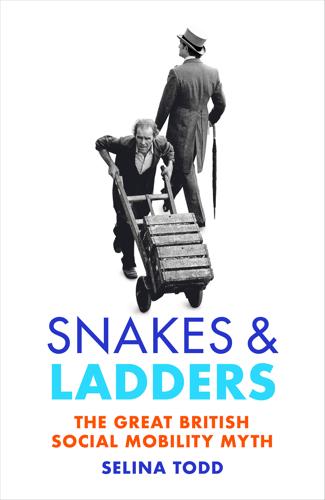
Snakes and Ladders: The Great British Social Mobility Myth
by
Selina Todd
Published 11 Feb 2021
It helped his case to be able to point to ‘the whole series of studies and reports … which showed the effect of selection on children’s chances’, but the government of which he was part was less concerned about equality per se than some of the sociologists with whom they worked.23 These differences of opinion highlight that ‘meritocracy’ remained controversial into the 1960s, with some of the upwardly mobile themselves pointing out its weaknesses and limits. These upwardly mobile men did not knock more privileged people off their rung of the ladder. Instead, they owed their rise to new opportunities that they helped to create. By the 1960s, the proportion of university lecturers who were upwardly mobile was far higher than among senior civil servants or doctors, of whom fewer than 20 per cent were the children of manual workers.24 The upwardly mobile lecturers were far less likely to work at Oxbridge than at the civic universities and at newer institutions like Keele, Sussex and Warwick which were established after the war.
…
More emphasis was placed on social connections that might win the firm important clients, or on undefined ‘leadership’ skills that tended to favour white male graduates from middle-class backgrounds.55 * Although the hopeful horizons of their youth soon closed in, many of the magpies benefited from the optimism of the 1960s and 70s. For those whose parents had been upwardly mobile, and for those who were upwardly mobile themselves, Britain appeared a reasonably fair place, with plenty of opportunity. A minority made a career in the expanding finance sector, or became entrepreneurs. But most of the upwardly mobile magpies relied on state education, the support of the welfare state, and public-sector work. While many of the golden generation had been frustrated at the limited options available to them (especially women), the magpies had more choices.
…
Even more of them took their chances in the urban, industrialised centres than their parents’ generation – and many became the first from their working-class families to enter work that required literacy rather than physical strength. The pioneers were the first generation of which a large proportion could expect to end up on a different rung of the social ladder to their parents. Just over a quarter of men were upwardly mobile and just under a quarter of women. Many of the upwardly mobile became clerks, some became teachers. They entered not only new occupations but a new social world, one that they helped to form. Far from being the story of a few particularly talented individuals, as Samuel Smiles characterised social mobility, the upward paths of this generation were the result of collective help, from relatives, teachers, trade unions and co-operative societies.
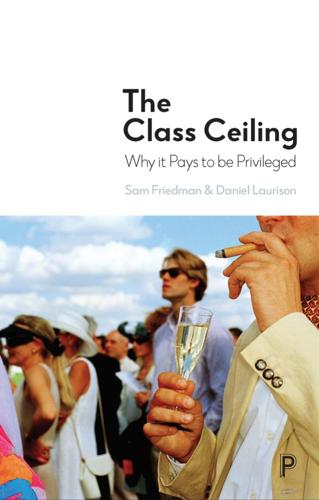
The Class Ceiling: Why It Pays to Be Privileged
by
Sam Friedman
and
Daniel Laurison
Published 28 Jan 2019
We also find that many conventional indicators of ‘merit’ go little way in explaining the pay gap. We find no evidence, for example, that the upwardly mobile work fewer hours, have less training or have less experience than their privileged colleagues. One marker of ‘merit’ is important, however – educational attainment. Those from working-class backgrounds are less likely to have degrees and less likely to have attended prestigious universities, both of which are associated with higher earnings. Yet, tellingly, even when the upwardly mobile do achieve the highest credentials, including Oxbridge degrees and/or first 21 The Class Ceiling class84 grades, they are not able to convert them into the same earnings premium as the privileged.
…
Figure 2.5 reveals that there are similarly telling variations in the magnitude of the 52 Getting on Figure 2.5: The class pay gap is biggest in law, medicine and finance Finance Law Medicine Chiefs of fire, ambulance and police Management consulting Accountancy Corporate senior management Public-sector senior management Academia IT Performing arts Advertising CEOs Engineering Life sciences Film & TV Science Architecture Journalism 00 0,0 -£2 Working-class origins 00 5,0 -£1 00 0,0 -£1 0 ,00 -£5 £- 0 ,00 £5 00 0,0 £1 0 0 5,0 £1 Intermediate origins Note: Class pay gaps between upwardly mobile (working-class or intermediate origin) and professional-managerial-origin people in each of our 19 elite occupational groups. Average earnings differences are statistically significant at p<0.05 for one or both upwardly mobile groups in finance, law, medicine, chiefs of fire, ambulance and police, management consulting, accountancy, corporate senior management, public sector senior management, and IT. Source: LFS 53 The Class Ceiling class pay gap.
…
For Giles, the problem with our analysis so far is that it tilts too far towards issues of ‘demand’ rather than ‘supply’. We have thus interrogated various barriers that hold the upwardly mobile back but have neglected how the mobile themselves may be implicated in the class ceiling. What about their actions, decisions, aspirations? In Giles’s experience it is this ‘supply’ issue that is more important. To reach the partnership, he goes on to tell us, people need to “really want it”, need to be “comfortable 171 The Class Ceiling asserting themselves”, need to handle “robust discussion”. But the upwardly mobile, he argues, “sometimes, not always, but sometimes shy away from that.” This is not an isolated view.
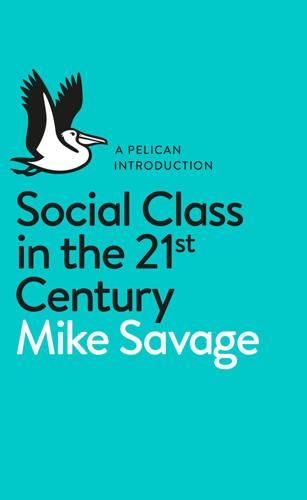
Social Class in the 21st Century
by
Mike Savage
Published 5 Nov 2015
Table 6.1 identifies four social groups from which respondents may come, those from the highest-status (senior managerial and traditional professional) occupational backgrounds; those from slightly less high-status backgrounds (middle managerial and modern professional), categorized as short-range upwardly mobile; those from intermediate and technical occupational backgrounds, categorized as mid-range upwardly mobile; and finally those from low-status occupational backgrounds (manual workers and those who have never worked), who are categorized as long-range upwardly mobile. Returning to our mountaineering metaphor, we might view the first of these as having a base camp in the lofty mountain passes, the second group as having base camps well up the valley sides, the third as having a base slightly above the valley bottom, and the final group having to start out from the valley floor.
…
It appears that there is only a minor discrepancy between the incomes of doctors according to their social background. Upwardly mobile doctors do not seem to struggle, despite a lower social background, to reach the highest levels of income within their profession. In contrast, there are a comparatively high number of upwardly mobile respondents in academia, but such academics are paid an average of up to £13,000 less than those from more privileged backgrounds. Perhaps the upwardly mobile academics are less likely to work at elite universities where pay tends to be higher. More generally, among lawyers, barristers and judges, CEOs and financial intermediaries, income differences by origin are particularly pronounced.
…
British culture has long delighted in lampooning the travails of the upwardly mobile, from Hardy’s Jude the Obscure and H. G. Wells’s Kipps right through to Monty Python’s ‘Four Yorkshireman’. These fictional portraits highlight how ‘errors’ of taste and etiquette mark the upwardly mobile out as outsiders continually striving (but ultimately failing) to gain full acceptance at the top of their professions. And in such a way, elite mountaineers accustomed to the highest peaks may indeed look down on the day-trip hikers they see hazardously negotiating the lower slopes beneath. Perhaps the most memorable caricature of the upwardly mobile in recent years is Hyacinth Bucket, the aspirational housewife from the 1990s BBC 1 sitcom Keeping Up Appearances (who insisted her surname be pronounced ‘Bouquet’).
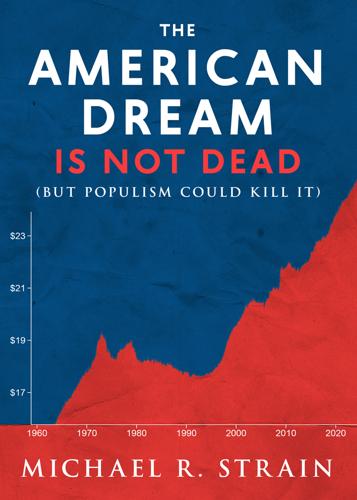
The American Dream Is Not Dead: (But Populism Could Kill It)
by
Michael R. Strain
Published 25 Feb 2020
Could there be more upward mobility in America? Yes. But if you have to pick between characterizing America as upwardly mobile or upwardly immobile—if you have to pick between the American Dream of upward mobility being alive or dead, between America being a class society or not—the right choice in that binary is upwardly mobile. America is upwardly mobile. America is not a class society, where no intergenerational progress takes place. The American Dream is not dead. Of course, what we care about most is whether today’s young people will be upwardly mobile, not whether today’s 40-year-olds did better than their parents. We should pursue that goal aggressively, acting as if the American Dream is under threat, even if we believe it’s not.
…
Leading politicians and presidential candidates from both parties have voiced agreement on these points: America is no longer an upwardly mobile society. Incomes are stagnant. Workers don’t enjoy the fruits of their labor. Typical households are no better off today than they were decades ago. The game is rigged for everyone but those at the top. It is always difficult to capture the reality of American life in short sentences. A country as large as ours, in which citizens have such varied experiences, makes generalizing difficult. But today’s prevailing narrative is so stark that the task of generalizing becomes much easier. The narrative is wrong. America is upwardly mobile, particularly for those nearer the bottom of the income distribution.
…
And about 53 percent of 40-somethings today in the top 20 percent have a higher income than their parents did when their parents were in their 40s. This analysis suggests that America is clearly an upwardly mobile society. The common experience is for children to have higher incomes than their parents. This is particularly true of children raised in the bottom 20 percent, and, really, for those raised outside the top 20 percent. HOW MUCH MORE? Adults today typically earn a good deal more than their parents. In other words, America isn’t upwardly mobile by just a few cents. I should first caution you not to read too much into the exact numbers because the sample size of the PSID is not especially large.

Killing Thatcher: The IRA, the Manhunt and the Long War on the Crown
by
Rory Carroll
Published 15 Mar 2023
love “sort of crept on us”: Margaret Tebbit interview on Desert Island Discs, BBC Radio 4, July 5, 1996. Postnatal depression consumed her: Tebbit, Upwardly Mobile. grandparents and acquired a country retreat: Tebbit, Upwardly Mobile. Lest the press depict it as a snub: Tebbit, Upwardly Mobile, 225. had earlier hosted cockroaches: Maria Pali, Top Rank cleaner, interview with author, July 2021. Tebbits… chat to John Cole: Tebbit, Upwardly Mobile. climbing into bed around 2:30 a.m.: Sarah Berry interview with Peter Taylor, The Brighton Bomb, part 1, documentary, BBC1, September 14, 2004. Roberta, a vivacious personality: Valerie Elliott, “Mrs.
…
“If we’d realized what you weighed”: The Brighton Bomb, pt. 1. Chris Reid: The Brighton Bomb, pt. 1. A pause… “Lady Berry”: The Brighton Bomb, pt. 1. three hands poking out: “To Kill the Cabinet,” 23. could hear his guts sloshing: Tebbit, Upwardly Mobile. Norman shushed her. “Wait until”: Tebbit, Upwardly Mobile. “So this is death,” he thought: Tebbit, Upwardly Mobile. An unseen hand gripped his: “To Kill the Cabinet,” 23. Leading fireman Steve Tomlin was the first to reach the Tebbits. He knows the truth, thought Margaret: Fred Bishop citing conversation with Margaret Tebbit years after the rescue in Ramsey, Something Has Gone Wrong.
…
Tebbit the darling of the 101st conference: Frank Johnson, Times columnist: “Mr. Tebbit became Darling at a simple ceremony involving his receiving a longer standing ovation than Mr. Heseltine the previous day,” October 12, 1984, quoted in Tebbit, Upwardly Mobile. speculation that he was Thatcher’s heir: See end of chapter 9, “Blackpool.” books, which he devoured: Norman Tebbit interview with author, August 2020. connived to bloat and featherbed: Tebbit, Upwardly Mobile. “Heard a chap on the radio”: Macmillan reportedly made the remark to friends at his gentlemen’s club, Pratt’s. In Chris Moncrieff, “When Labour MPs Wore Miners’ Helmets,” The Guardian, May 10, 2001, https://www.theguardian.com/politics/2001/may/10/redbox.houseofcommons.
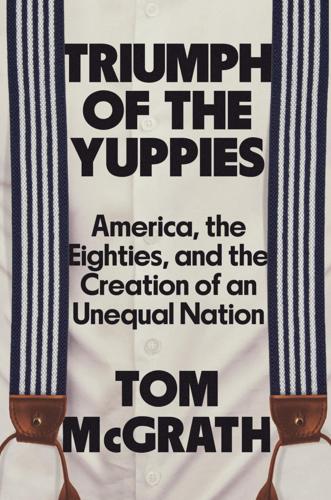
Triumph of the Yuppies: America, the Eighties, and the Creation of an Unequal Nation
by
Tom McGrath
Published 3 Jun 2024
In the beginning of January, two of America’s most widely read magazines, Time and People, ran pieces on the Yuppie phenomenon, centering on The Yuppie Handbook (and saying not a word about YAPs). Just like that, a term that had originated in the Midwest some half a dozen years earlier—and that a growing number of people had been reading about over the previous months—got massive exposure. “Who are all these upwardly mobile folks with designer water, running shoes, pickled parquet floors, and $450,000 condos in semislum buildings?” Time’s story began. “Yuppies, of course, and the one true guide to their carefully hectic lifestyle is The Yuppie Handbook. Tongue firmly in chic, authors Marissa Piesman and Marilee Hartley tirelessly chronicle the ways of the Yuppie, along with its lesser-known subspecies the Guppie (Gay Urban Professional) and Puppie (Pregnant Urban Professional).”
…
First, it took the term “Yuppie” from the features section of the newspaper and put it onto the front page, broadening even more the number of people who understood what a Yuppie was. (Nodding to the fact that there were young professionals who didn’t live in cities proper, some journalists used the less geographically specific term “Yumpie”—young upwardly mobile professional.) Second, and maybe more importantly: It signaled a shift that was taking place, announcing that the massive Baby Boomer generation—or at least the well-educated portion of it—had arrived politically. Those Boomers, who had questioned all the rules in the ’60s and turned inward in the ’70s, were now ready to exert their influence at the ballot box in a real way, and the generation’s leaders, the Yuppies, were showing the way—with their support of Gary Hart.
…
But now, as the economy continued rebounding from the recession and journalists cranked out stories about Yuppies, the brand’s ad agency, Ted Bath Worldwide, positioned Michelob as a beer not for special occasions, but for special people. “Where you’re going, it’s Michelob” was the new slogan, and the brand’s new campaign reflected upwardly mobile ambitions and sensibilities to a tee. In one quick-cutting TV ad, a young professional was seen driving his sports car (European, of course), working the phones in his busy office, then hustling through the airport, where he would eventually hop on… the supersonic, superluxury Concorde. The ad finished with our hardworking Yuppie hero walking on a tropical beach alongside a beautiful young woman as a song played underneath: There’s a style in your life no one could ever deny You’re moving up, moving up You’re always the one, the one who’s eager to try You’re on your way to the top Where you’re going, it’s Michelob The National Coffee Association, the trade group promoting coffee, not only published a booklet titled The Achiever’s Handbook (which noted, miraculously, that most of the “achievers” surveyed by the association started their day with a cup of joe); it also hired a young psychologist to tour the country and advise students and young corporate employees on career success.

A Concise History of Modern India (Cambridge Concise Histories)
by
Barbara D. Metcalf
and
Thomas R. Metcalf
Published 27 Sep 2006
Muslim social hierarchy as well, one might note, also took on new formality, evident by the eighteenth century, with the wellborn identifying themselves in terms of four ranked putative descent groups: Sayyid, descendants of the Prophet; Shaikh, descendants of his Companions; Mughal; and Pathan. The category of ‘shaikh’ was particularly porous in absorbing the upwardly mobile. Sultans, Mughals, and pre-colonial Indian society 25 What Susan Bayly calls ‘paradigmatic case’ of kingly social mobility is that of Shivaji Bhonsle (1630–80), the pivotal figure in the Maratha insurgency that so plagued Aurangzeb in the Deccan. Shivaji was of cultivator background, from peoples known in western India as Marathas.
…
It often opened the way to extortion, however, as contractors, unchecked so long as they filled their contracts, set out to amass personal fortunes at the expense of hapless cultivators. Yet, where contracts were awarded for an extended series of years, revenue farmers had an obvious incentive to encourage agricultural prosperity in the areas under their control, and the process clearly gave many enterprising and upwardly mobile individuals an arena for action. The most successful farmers combined military power with cash advances to local villagers, as well as participation in the trade of the commodities produced. The forty years when Mian Almas Ali held districts yielding one-third the revenue of Awadh, for example, were looked back upon by the people in later years as a ‘golden age’.
…
‘Tradition’, in both Hinduism and Islam, as we have seen in chapter 1, possessed its own vitality; while ‘reform’ could take many shapes. In areas away from the immediate environs of the presidency capitals, movements of reformed practice were little influenced by the West, and so followed customary channels into the colonial period. Hindu devotionalism remained attractive, especially to upwardly mobile groups seeking to distance themselves from tribal or low caste origins. Most prominent, perhaps, was the movement founded in Gujarat by Swami Narayan (1780–1830). Rejecting much of Brahmanical ritualism in favour of a Vaishnavite devotionalism, Swami Narayan drew followers from displaced nomadic and warrior communities, and so helped further the process of agricultural settlement.

Melting Pot or Civil War?: A Son of Immigrants Makes the Case Against Open Borders
by
Reihan Salam
Published 24 Sep 2018
The ranks of white people would continue to grow as the children of whites and upwardly mobile Hispanics come to identify as white. So, too, would the ranks of self-identified Hispanics, who’d tend to be less affluent and educated than those who self-identify as non-Hispanic, and who would thus find themselves locked out of the corridors of power. Many have pointed to ethnic attrition as an indication that amalgamation is proceeding apace, and that concerns about the racialization of American Hispanics are overblown. The fact that some members of disadvantaged groups are upwardly mobile, living in integrated neighborhoods, and forging close ties, including ties of marriage,16 with members of more advantaged groups, is indeed encouraging.
…
Oxford, UK: Oxford University Press, 2017. 17. Lazear, Edward. “Why Are Some Immigrant Groups More Successful than Others?” NBER Working Paper No. 23548, October 2017. http://www.nber.org/papers/w23548. 18. Joo, Nathan and Richard V. Reeves. “How upwardly mobile are Hispanic children? Depends on how you look at it.” Brookings, November 10, 2015. www.brookings.edu/blog/social-mobility-memos/2015/11/10/how-upwardly-mobile-are-hispanic-children-depends-how-you-look-at-it/. 19. Duncan and Trejo. 20. Waters and Pineau. 21. Ibid. 22. Lubotsky, Darren. “Chutes or Ladders? A Longitudinal Analysis of Immigrant Earnings.” Journal of Political Economy 115:5 (October 2007): 820–67. doi.org/10.1086/522871. 23.
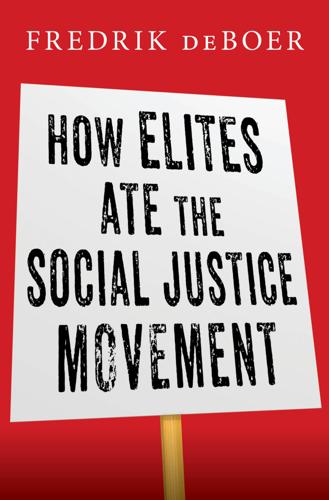
How Elites Ate the Social Justice Movement
by
Fredrik Deboer
Published 4 Sep 2023
In Minneapolis, where Floyd’s murder had taken place, the drift over time was telling: the city council first voted to abolish and replace its police department, then later changed the reforms to simple budget cuts, then later enacted an increase in funding to the very department it had recently set about to dissolve. Where was the change that had been demanded? Yes, many from Black and other minority backgrounds found themselves with scholarships or jobs that did not exist prior to the civil unrest, but they were drawn largely from the upwardly mobile professional and managerial classes to begin with. Cultural institutions relentlessly looked to reward people from marginalized groups, but the impact of these efforts is hard to see; there is little connection between Netflix beating the bushes to find Black and Hispanic stand-up comics to give specials to and the quality of day-to-day life in minority neighborhoods.
…
Those who belong to marginalized groups who can take part in the national conversation are those within those groups who are the most well-connected, educated, and rich in cultural capital. This is particularly true of Black politicians, reporters, writers, pundits, and policymakers; they’re typically dramatically more highly educated and more upwardly mobile than the average Black American. You can understand, then, why so much of the political energy in this country gets diverted into affective and symbolic issues: the people who talk about politics professionally, those who have the largest audiences, are in large majorities the people who face the least material depravation.
…
The book meticulously chronicles the habits of the titular “bobos”—the bohemian bourgeois—who yearn to accumulate wealth like their forefathers, but insist on doing so in a more enlightened style. The bobo wants a nice house and expensive car, but they also want to save the planet and live a kind of subtle zen critique of the system. Though far from a majority in numbers, bobos are the intellectual foot soldiers of the modern Democratic Party. Educated and upwardly mobile, if not already affluent, the bohemian bourgeois donate to the nonprofits that set the policy agenda, volunteer for the campaigns that produce the leaders, and chew the ears of the politicians of their party. They write the editorials that appear in the newspapers and do more than their fair share of arguing and complaining in the public sphere.
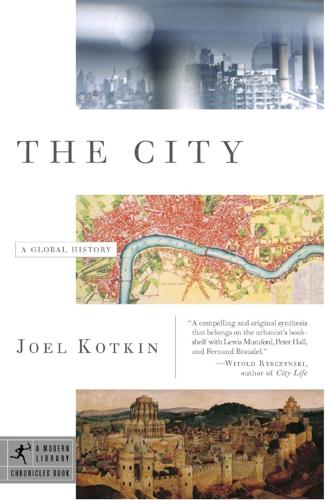
The City: A Global History
by
Joel Kotkin
Published 1 Jan 2005
These characteristics, however appealing in their aspect, cannot substitute for the critical, longer-lasting bonds of family, faith, civic culture, and neighborhood. Nor can a narrow transactional or recreational economy play the same role as one based on a broad diversity of industries nurturing the ambitions of upwardly mobile families. Increasingly, these families seek refuge ever farther from the urban core, often in the periphery or in smaller towns outside the urban realm. These phenomena do not represent as severe a challenge as the miserable poverty and instability common to the cities of the developing world.
…
Instead, the British simply allowed what had been occurring naturally, a gradual, inexorable expansion of the urban space.18 It started initially with the most affluent residents, but as the nineteenth century evolved, the increasingly prosperous middle and working classes joined the exodus to the countryside. If a nice apartment in the middle of the city was the dream of the upwardly mobile Parisian, the Londoner’s aspiration fixed upon a cottage, detached or semidetached, somewhere out on the periphery of the city. London, one observer noted in 1843, “surrounds itself, suburb clinging to suburb, like onions fifty to a rope.”19 Other major British cities evolved in a similar manner.
…
A small minority live in well-appointed neighborhoods, but most residents eke out their existence in crowded quarters, averaging 3.5 people per room, often on the outskirts of the city. Nearly 1 in 5 residents squat in illegal settlements.36 In many African cities, the affluent escape the congestion by heading for more comfortable homes on the periphery. Large-scale Western-style suburbs, attracting both whites and upwardly mobile blacks, have evolved in the countryside outside Cape Town, Durban, and Johannesburg in South Africa. As occurred earlier in North America, businesses often have followed this outward migration.37 “SOCIAL TIME BOMBS” Long a center of urban civilization, since the 1950s the Middle East has experienced some of the most explosive urban growth in the world, and little of it has been successful.
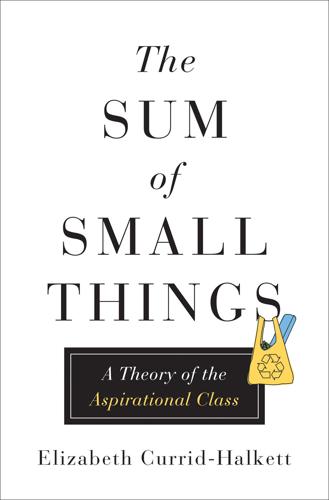
The Sum of Small Things: A Theory of the Aspirational Class
by
Elizabeth Currid-Halkett
Published 14 May 2017
The working classes found their own conduits to suggest social position, just as the middle and upper classes did within their own groups.3 On the other hand, the rising bourgeoisie, as an economic juggernaut independent of the aristocracy, bought big houses and decorated them ornately to identify themselves as a part of this new middle class. After all, the middle classes were increasingly upwardly mobile without the benefit of birthright.4 Veblen believed the proliferation of conspicuous consumption would increase as society became more and more industrialized, paving the way for overall rising incomes and a flood of new consumer goods. In his Pulitzer Prize–winning work, The Americans: A Democratic Experience, the University of Chicago historian Daniel Boorstin described the relationship between America’s built environment and its development as a society.
…
All of these practices reveal what Max Weber called “styles of life.”19 Thus, money and status, while related, are not the same thing. Rather, people of a similar income bracket do not necessarily behave and consume in the same way; behavior is determined more by how one got there, where she came from, and where she lives. This observation captures what Bourdieu meant when he believed it was impossible to be upwardly mobile simply through material goods. Bourdieu would observe that status then becomes a product of who we socialize with and the information and cues we pick up as a result.20 Taste and style of life are passed on from generation to generation and learned at a young age or through membership in a particular group.
…
If you have more money you can afford the more expensive elements of life—education, health, and retirement savings. Ironically, despite the fact that all of these items are essential for a good life and create lifelong returns, they are also the investments that are most out of reach, particularly for the middle class and the poor. A financed SUV, perhaps signaling some upwardly mobile position, is fairly affordable to a middle-class household, and is significantly less expensive than a top university’s tuition fees, or putting away the requisite 15% a year for retirement. Good health insurance costs thousands of dollars a year, and that does not include anything that might be considered a specialty health cost, like allergy testing or dermatology.
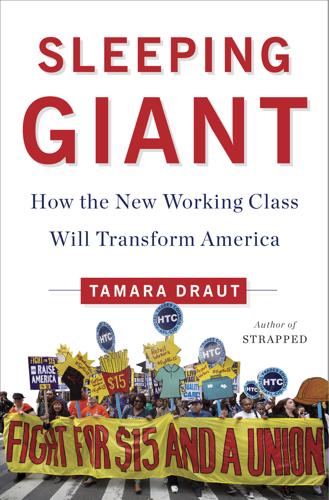
Sleeping Giant: How the New Working Class Will Transform America
by
Tamara Draut
Published 4 Apr 2016
Republicans and southern Democrats exploited this new vulnerability among the white working class by appealing to their racial anxiety, epitomized by Nixon’s “silent majority” strategy and Reagan’s very deliberate and often not-so-silent dog-whistle appeals to white working-class voters. As the cultural distance between the hard hats and the activists widened, economic populism became decidedly passé, and cultural and consumer issues rather than labor captivated a burgeoning population of newly credentialed, upwardly mobile professionals. Major new membership groups such as Common Cause and Public Citizen captured the attention of these newly affluent white professionals, who were increasingly alienated from the white working class ideologically and culturally. More and more public activism was aimed at environmental protection, governance reform, and consumer protection.
…
From Smokestacks to Barbed Wire When America’s great industrial factories were locked up and denuded of equipment, some of our nation’s biggest cities were left with barren stretches of wasteland. What once symbolized productivity and ingenuity would become an anachronistic remnant of blue-collar America, either destined for decay or converted into expensive lofts for a new, upwardly mobile professional class. The pace of job losses was swift, a hard jerking away of people’s livelihoods and dignity, leaving a reverberating pain that would last for decades. The Civil Rights Act of 1964 opened up opportunities for black men to work in the reigning industrial sector of the time, but predominantly in the hardest, lowest-paid jobs—the very jobs that were most susceptible to being replaced by machines.43 As a result, black men experienced more than their fair share of dislocation as a result of deindustrialization.
…
There are real issues there, but when you compare those issues—doubling or tripling up in an apartment in a hip neighborhood to afford rent, say—to those of a thirty-something working as a cashier with unstable hours, struggling to find and pay for child care, it’s the mom in a crumbling neighborhood who needs much more of our political attention and public concern. And it’s her challenges that are faced by many more Americans than the issues confronting an upwardly mobile urban professional. Unless we can coalesce around the need for a much higher quality of life for the new working class, then anyone who is not truly affluent and upper-class will remain living on a precipice of economic anxiety and insecurity. Why? Because the philosophy that allows employers to schedule their hourly workers week to week, with little advance notice, is the same philosophy that allows employers to expect their salaried workers to be “on” 24/7, responding to emails and taking conference calls that disrupt family and leisure time.

Uneasy Street: The Anxieties of Affluence
by
Rachel Sherman
Published 21 Aug 2017
The one exception to this pattern was among women in the highest-earning families in my sample, those with household incomes of over $5 million per year and assets of over $20 million. These stay-at-home mothers described themselves as privileged even when they did not have especially liberal politics or diverse social networks. They were “upwardly mobile” in the sense that they had been raised upper-middle-class but were now much more wealthy than that. More important, I think, was that it was essentially impossible for them to face upward, simply because there were so few people above them. For the most part, however, income and assets were not correlated to whether people would face upward or downward.
…
FACING DOWNWARD, RECOGNIZING PRIVILEGE Like Keith and Karen, introduced at the start of the chapter, and Scott and Olivia, described in the introduction, many of those I interviewed did talk openly about themselves as privileged. They described conflicted feelings about their social advantages and about social inequality generally. Unlike those who aspired to the middle, these interviewees were usually either inheritors of wealth who worked in creative-class jobs or earners who were upwardly mobile (or, in a few cases, married to people in creative occupations). Partly for these reasons, as I discuss later, their social, professional, and familial networks were diverse economically, and sometimes racially. They were typically more liberal politically than upward-oriented people. These interviewees recognized their privilege and were willing to talk about it much more openly than did those who faced upward.
…
Beatrice made the same point when she told me, “My friends are facing the same problems that I’m facing [such as finding a school for children]; it’s just that I have resources to deal with them that other people don’t have.” She continued, “I feel just some concern about, kind of, rubbing their faces in the fact that I have this wider range of choices.” Ultimately, discomfort of this type might be one reason people end up with increasingly homogenous social worlds over time. For upwardly mobile people, family of origin was a significant referent. Miriam, a banker earning over $1 million annually, said she currently spent social time with “probably mostly similar types of families in similar types of jobs.” But, she added, “I make more money than my entire family put together.” Miriam did not feel guilty about her wealth exactly, but she described money as “dirty,” “soiled,” and “tainted.”
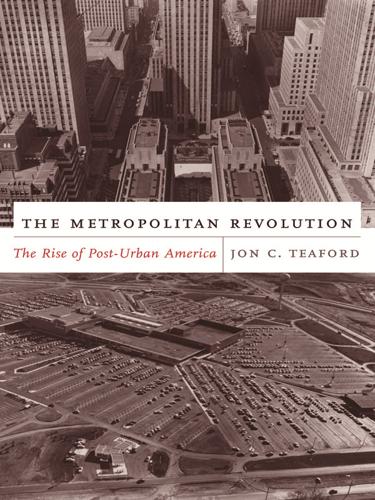
The Metropolitan Revolution: The Rise of Post-Urban America
by
Jon C. Teaford
Published 1 Jan 2006
Klutznick dreamed of “a people’s village, not a developer’s fiefdom.” This did not necessarily benefit him. “As the resident president of ACB,” he later noted, “I was the natural object of protest movements.”106 Not only were the Park Forest houses more expensive than those in Levittown, but the residents had a higher educational status and tended to be upwardly mobile white-collar workers. A 1950 survey found that the average adult male in Park Forest had more than four years of college education, and one observer reported that “the first wave of colonists was heavy with academic and professional people—the place, it appeared, had an extraordinary affinity for Ph.D.s”107 But like Levittown, it also had an extraordinary affinity for children.
…
Meanwhile, nearby middle-class Cleveland Heights went from less than 1 percent black in 1960 to 25 percent black in 1980. In the Chicago area, the middle-class suburb of Oak Park had 132 African American residents in 1970; ten years later, 5,929 blacks lived in the community. In southern California, thousands of upwardly mobile blacks moved into the single-family tract houses along the tree-lined streets of suburban Compton, although in the 1970s they were joined by an increasing number of poorer refugees from the central city. The black migrants to suburbia, however, were the exception to the rule. Most African Americans remained confined in segregated neighborhoods of the central city, removed from a white population that was resigned to the abandonment of the urban core.
…
After decades of outward migration to suburbia, the white middle class seemed to be headed back to the old neighborhoods, where they were investing in real estate and renovating aging structures that until recently appeared destined for abandonment. This return of the white middle class became know as gentrification; the gentry were reclaiming down-at-the-heels neighborhoods and making them upscale. Especially prevalent among the gentrifiers were young, upwardly mobile professionals, the so-called Yuppies. Young, confident, childless whites found the crime and inferior schooling of the central cities less threatening than did families with children to protect and educate. Moreover, they were not dependent on a suburban McDonalds to satisfy their screaming youngsters’ demands for Happy Meals.
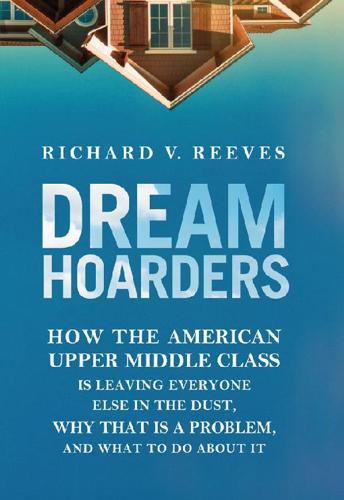
Dream Hoarders: How the American Upper Middle Class Is Leaving Everyone Else in the Dust, Why That Is a Problem, and What to Do About It
by
Richard V. Reeves
Published 22 May 2017
INTERGENERATIONAL MOBILITY: AMERICA’S STICKY TOP Social mobility is an area where it really pays to be clear about definitions. My main interest here is in relative intergenerational mobility, which is not to be confused with absolute intergenerational mobility. Absolute mobility is a measure of whether you are economically better off than your parents were at the same age. Most people can typically expect to be upwardly mobile in this absolute sense—for the simple reason that the economy usually grows quite a lot over the course of a generation. Recent studies suggest that rates of absolute mobility have stagnated in the United States, with only half of those born in 1980 being better off than their parents, according to a 2016 paper by Raj Chetty and colleagues.3 This is a much lower estimate than in previous studies, and reflects both rising income inequality and slower growth.4 Relative mobility is a measure of which rung of the ladder you stand on in your generation, compared to the rung your parents stood on in their own generation.
…
Say this places you six-tenths of the way up the earnings distribution within your generation (that is, at the sixtieth percentile). But your parents earned $40,000 a year when they were thirty-five (adjusting for inflation), and that placed them at the seventieth percentile of their generation’s earnings distribution. In absolute terms, you’ve been upwardly mobile, earning ten thousand more inflation-adjusted dollars per year; but in relative terms, you’ve been downwardly mobile, having slipped down a rung in terms of the whole distribution. Both kinds of mobility matter. One definition of the American dream is of growing prosperity for the overwhelming majority, compared to the raw incomes or well-being of past generations.
…
Even during this period of healthy absolute mobility, however, relative mobility rates remained flat. Americans were likely to be better off than their parents but no more likely to move up or down the rungs of the income ladder. Politically, there is a critical difference between the two kinds of mobility. There is no limit to the number of people who can be absolutely upwardly mobile; everybody could, in theory, enjoy a higher standard of living than his or her parents. But relative mobility is by definition a zero-sum game—one reason it is more controversial. FIGURE 4-1 The Inheritance of Income Status Source: R. Chetty, N. Hendren, K. Kline, and others, “Where Is the Land of Opportunity?

Evil by Design: Interaction Design to Lead Us Into Temptation
by
Chris Nodder
Published 4 Jun 2013
Time Tech (techland.time.com). December 15, 2011. Retrieved February 2013. Bloomberg’s comments: Michael M. Grynbaum. “Crime Is Up and Bloomberg Blames iPhone Thieves.” The New York TimesCityRoom (cityroom.blogs.nytimes.com). December 28 2012. Retrieved February 2013. Create something aspirational Upwardly Mobile magazine: Upwardly Mobile, the magazine of mobile, manufactured and modular home living (umhmag.com). Scorn: Susan Fiske. Envy Up, Scorn Down. New York: Russell Sage Foundation, 2011. Make people feel ownership before they’ve bought Don Norman: Don Norman. Emotional Design: Why We Love (or Hate) Everyday Things.
…
Although there is a big aspirational market for a magazine called Better Homes and Gardens, you wouldn’t expect to find one called Double Wide Weekly or Mobile Home Monthly because mobile homes are often the first step on the property ladder. Actually though there is such a magazine: it’s called Upwardly Mobile Home Magazine, the magazine of mobile, manufactured, and modular home living, and it’s all about making mobile homes posher. In other words, it’s still totally aspirational. Aspiration—a form of benign envy—encourages people to emulate their idols and fuels ambition. Creating desirability through association with a famous person (desirability through identity) is the basis of celebrity endorsements and the reason why movie stars don’t pay for the dresses they wear on the red carpet at the Oscars award ceremony.

Kitten Clone: Inside Alcatel-Lucent
by
Douglas Coupland
Published 29 Sep 2014
Blank-collar workers rely on a grab bag of skills to pay the rent and see themselves as having seventeen different careers before they suffer death from neglect in a government-run senior care facility in the year 2042. < br > ASB’s router factory, one of several in China, is located just across Ning Qiao Road from the main compound of three early-1980s office towers. Along the street, I see stylish, upwardly mobile young people, very few bikes, and very few cars. We could easily be driving through an Italian suburb, with a bit of light industry thrown in. It’s hard for me to believe I’m finally about to visit a Chinese factory. I’ve wanted to do this for decades. In my head I’m expecting a humongous prison with a bogus Kentucky Fried Chicken outlet attached, surrounded by fields of bok choy protected with barbed wire fencing.
…
He pauses and thoughtfully replies, “Meetings. So many meetings.” Ahhh … meetings. Those spiritual cattle slaughter facilities where so many of our cherished dreams go to die hideous protracted deaths. “China is now having to service the things that it makes, and with this service sector there’s a huge new upwardly mobile meritocracy—and this is important, that China start spending money within China if our economy is to stabilize and diversify. We have to start buying the things we make.” This seems to be one of today’s themes. Xu’s office is filled with trophies and boxes of swag (“Here, have a handful of free pens”), and the space has the vibe of belonging to someone on the way up.
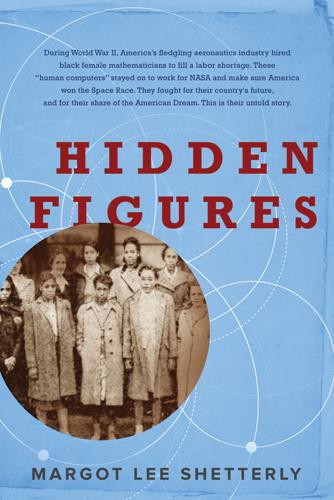
Hidden Figures
by
Margot Lee Shetterly
Published 11 Aug 2016
But the 40 cents an hour Dorothy earned as a laundry sorter bested what she earned as a teacher, and with four children, a summer of extra income would be put to good and immediate use. And Dorothy was of an unusually independent mind, impatient with the pretensions that sometimes accompanied the upwardly mobile members of the race. She did nothing to draw attention to herself at Camp Pickett, nor did she make any distinctions between herself and the other women. There was something in her bearing that transcended her soft voice and diminutive stature. Her eyes dominated her lovely, caramel-hued face—almond-shaped, wide-set, intense eyes that seemed to see everything.
…
Years after the end of the war, the shortage of adequate housing for the area’s Negro residents was still the reality. If the government decided to demolish Newsome Park tomorrow, there simply would be no place for the residents to go. But the number of houses in smaller neighborhoods had continued to increase, drawing the attention of upwardly mobile families who, like their white counterparts, had a vision of postwar success that included home ownership. Gayle Street, a cul-de-sac not far from the Buckroe section of town, was an attractive new neighborhood where Chubby Peddrew and her husband bought a house. Aberdeen Gardens, the sprawling development built on former Hampton Institute farmland, was another desirable location, its wide streets with grassy medians and surrounding forests drawing many active-duty and retired military families.
…
Katherine Goble’s eighteen-year-old daughter, Joylette, a talented violinist and a graceful beauty, graduated salutatorian of Carver High School’s class of 1958 and headed across town to attend Hampton Institute. Connie and Kathy, honor students and musicians in Carver High’s sophomore class, nipped at their elder sister’s heels. The girls and their mother made regular appearances in the social column of the Norfolk Journal and Guide, the model of an upwardly mobile and professional black family. In public, Katherine Goble was unfailingly gracious, optimistic, and unflappable, and she insisted that her girls acquit themselves in the same fashion. Her grief and loneliness, the burden of being both mother and father, she relegated to the privacy of their house on Mimosa Crescent.

Learning to Think: A Memoir
by
Tracy King
Published 12 Mar 2025
Both parents worked, usually, in stark contrast to my own home where sometimes neither parent worked, and when one did, it was temporary and sometimes ‘cash in hand’, code for getting paid off the books while also claiming benefits. Many families did that to survive during the eighties period of extreme unemployment, even while the government erected billboards encouraging the poorest to report each other for ‘fiddling the dole’. I thought my friends with working parents and heated bedrooms were rich; they were merely upwardly mobile working class to our underclass. Their dads were bus drivers, the mothers worked admin jobs for the local council or in a supermarket. But they had enough income and stability to buy a small house and have annual holidays. I don’t recall being particularly envious, though. I didn’t have loads of Barbies but I did have a big fish tank and a mother who was home all the time.
…
She doesn’t remember what triggered the event other than perhaps she ‘was cheeky to the bread man’ but, whatever it was, he grabbed her, threw her into the back of his van, slammed the door and drove off down the road to teach her a lesson. The petrified, screaming child he let out of the van was not the same one he’d bundled in. From then on, she ‘suffered with nerves’. Apart from anxiety issues, hers wasn’t a bad childhood. Bernice and Symon were post-war upwardly mobile. Once the twins had started school, Bernice went to work cleaning houses, and later as a receptionist at Birmingham airport. Between the two of them they were able to buy a house and afford a cheap holiday in the UK every year. They even managed the holy grail, a holiday abroad to Italy when the twins were nine.
…
The few times I went there for dinner, his mother would also prepare the next day’s packed lunch for her husband and sons to take to work, and she always offered to make one for me. Of course I always refused. I found the secure domesticity of their family intimidating rather than comforting. Here was not an underclass family marked by trauma or poverty, but a classic blue-collar upwardly mobile working-class family. They worried about bills, but not bailiffs. I felt awkward and out of place, a dark stain on their chequered tablecloth, and I didn’t want his picture-postcard family to know what the estate I lived on was like. My family couldn’t escape crime, death, or chaos – the sort associated with ‘problem’ areas.
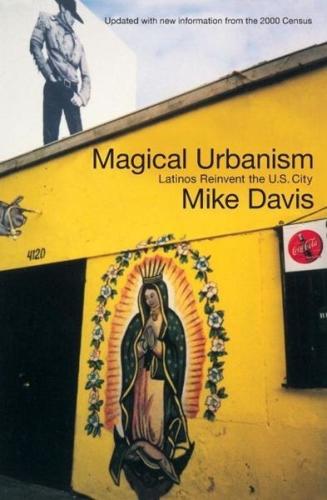
Magical Urbanism: Latinos Reinvent the US City
by
Mike Davis
Published 27 Aug 2001
Likewise, Korean investors control thousands of low-income residential units in inner-city neighborhoods as well as the larger share of the "swap meet" space that dominates retail trade in Southcentral Los Angeles. New Asian and Latino residents, in addition, rub shoulders in Hollywood and a dozen other neighborhoods west of Down- town, while upwardly mobile Chicanos and affluent Chinese immigrants live side-by-side in the dim-sum-con-saha suburbs of the eastern San Gabriel Valley. Indeed, Los Angeles from other metropolitan areas by the extraordinary nomic importance of the daily interactions distinguished is scale between its and eco- Asian and MAGICAL URBANISM 48 Latino immigrants.
…
Thus the glorious sorbet Mexican and Caribbean house paint - mexicano, azul anil, morado - is perceived as sheer visual terrorism by non-Hispanic homeowners who believe that rectly tels verde limon, rosa their equity di- depends upon a neighborhood color order of subdued pas- and white picket fences. Even upwardly mobile Chicanes have joined in the backlash against "un-American" hues, as in the L.A. suburb of South Gate where the City Council recently weighed an ordinance against tropical house colors, or in San Antonio where writer Sandra Cisneros has long outraged her deeply expressive purple home. And the city fathers same Puritan with spirit that once sent the police to quell all-night "hoolies" in Irish kitch- ens now calls familiares.
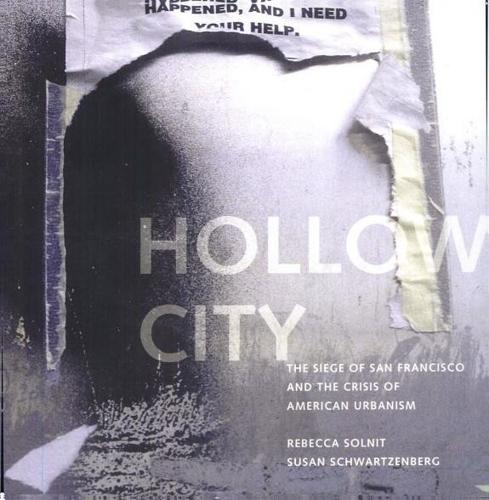
Hollow City
by
Rebecca Solnit
and
Susan Schwartzenberg
Published 1 Jan 2001
Even if it some of the most annoying and silly people you could meet, this realm also harbors muralists, tenant organizers, teachers, environmentalists, experimentalists, create a wide-open human rights advocates. social space that the color, are helping to eliminate. experiment with their for more conventional upwardly mobile, whatever That space is a laboratory for the become more no way and smaller towns, taking something of their traditional activists, to regulate this that only the talented life is with to succeed as artists it salaries and bohemian space and no reason and the dedicated can enter.
…
Web and . . 161 Back to the beanbag. said, 'Isn't it cool many jobs for content types and very Yeah, cool Times have changed. The strange thing now is seeing a new last company. The perky 24-year-old like us?' I My it's bizarre, lucky, «OMETMiNO Te*«„,BLE HAS generation of upwardly mobile twen- tysomethings walk straight out of college and into making $50K great jobs at a dot.com we a year. Sure, could head into another recession, but by the time we do, they will already be firmly established in their careers. They'll never get to live adulthood waiting tables ting rejected and toast who at through their young at the Olive Garden or get- by a temp agency.

The Rough Guide to Prague
by
Humphreys, Rob
But, as with all acts of brave resistance during the war, there was a price to be paid. Given that the reprisals meted out to the Czech population were entirely predictable, it remains a controversial, if not suicidal, decision to have made. The target, Reinhard Tristan Eugen Heydrich, was a talented and upwardly mobile anti-Semite (despite rumours that he was partly Jewish himself), a great organizer and a skilful concert violinist. He was a late recruit to the Nazi Party, signing up in 1931, after having been dismissed from the German Navy for dishonourable conduct towards a woman. However, he swiftly rose through the ranks of the SS to become second in command after Himmler, and in the autumn of 1941 he was appointed Reichsprotektor of the puppet state of Böhmen und Mähren – effectively, the most powerful man in the Czech Lands.
…
NOV É M Ě S TO | Ke Karlovu Vila Amerika (Muzeum Antonína Dvořáka) A more rewarding place of pilgrimage, set back from the road behind wroughtiron gates, is the salmon-pink Vila Amerika (April–Sept Tues, Wed & Fri–Sun 10am–1.30pm & 2–5pm, Thurs 11am–3.30pm & 4–7pm; Oct–March Tues–Sun 10am–1.30pm & 2–5pm; 50Kč; W www.nm.cz), now a museum devoted to Czech composer, Antonín Dvořák (1841–1904), who lived for a time on nearby Žitná. Even if you’ve no interest in Dvořák, the house itself is a delight, designed for the upwardly mobile Count Michna as a minuscule Baroque summer palace around 1720 and one of Kilian Ignaz Dientzenhofer’s most successful secular works. Easily the most famous of all Czech composers, for many years Dvořák had to play second fiddle to Smetana in the orchestra at the Národní divadlo, where Smetana was the conductor.
…
Fata Morgana, incidentally, means “mirage” in Czech. Dejvice and the northwest suburbs Spread across the hills to the northwest of the city centre are the leafy garden suburbs of Dejvice and neighbouring Střešovice, peppered with fashionable modern villas built in the first half of the twentieth century for the upwardly mobile Prague bourgeoisie and commanding magnificent views across the north of the city. Dejvice is short on conventional sights, but interesting to explore all the same; Střešovice has one compelling attraction, the Müllerova vila, a perfectly restored functionalist house designed by Adolf Loos. Some 4km further west, the valley of Šárka is about as far as you can get from an urban environment without leaving the city.
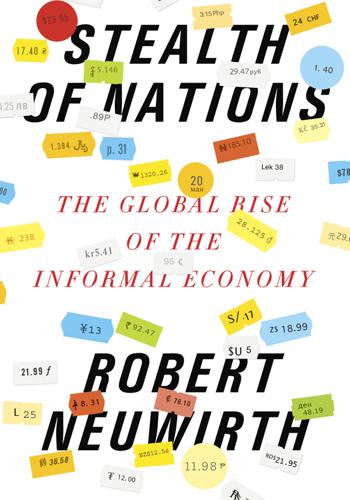
Stealth of Nations
by
Robert Neuwirth
Published 18 Oct 2011
He regularly ships full containers back to Nigeria, and, instead of a penny, he gets 2 percent off the top thrown his way by Chinese manufacturers (on a deal worth $150,000, that would be $3,000) and at least an equal amount from his Nigerian clients. With his success, David has moved out of the Sanyuanli hotel he used to occupy. Today he lives in an upwardly mobile neighborhood not far from the Garden Hotel, the city’s premier destination for foreign businesspeople. By Guangzhou standards, he is positively middle-class. Still, David knows that, by comparison with many Nigerian dealers, his operation is extremely small. He’s amazed that anyone would find the business he did in generators to be noteworthy.
…
She would do this even if the expense ate up 10 percent of her monthly salary. By contrast, most Americans balked at paying that much for a bag, and Ethan found that U.S. wholesalers wanted to pay far, far less. (Though the Chinese still typically save a larger percentage of their income than Americans do, the growing number of upwardly mobile Chinese teens and young adults are far more consumerist and willing to spend on certain items than their American counterparts.) Ethan keeps his costs superlow. He has no permits. His firm is not registered. He pays no taxes. Indeed, he doesn’t even have the houkou, or residency permit, required to live in Guangzhou.
…
The back channel exists because, though China is the manufacturing powerhouse of the high-tech global economy, it still has a highly controlled retail market. Though it makes many of the components that go into iPods, iPhones, and laptops, consumers in China often don’t have the opportunity to buy these high-tech devices. For instance, with the growth of an increasingly upwardly mobile middle class, the demand for smartphones—high-tech mobiles that can browse the Web and shoot video, among other things—has grown in China. But, until recently, the best smartphones weren’t available. Smugglers came to the rescue, and police have uncovered tunnels under the Sham Chun where products moved across the border with no control.

Unhealthy societies: the afflictions of inequality
by
Richard G. Wilkinson
Published 19 Nov 1996
This important finding forces a fundamental reappraisal of what is going on, and it is all the more important because it has always been clear that height is also very closely related to health. Here the assumed explanation seemed to be that taller people were simply better physical specimens all round. But if tall people were upwardly mobile because everyone was impressed by their physical presence, then their social mobility would have been most closely related to adult height. That it turns out to be more closely related to height in childhood means that adult height is merely a distant reflection of something in childhood which affects both childhood height and future social mobility.
…
We can now see not only that height is influenced by psychosocial factors during childhood, but also that these same psychosocial factors are likely to explain the greater occupational success and upward social mobility of taller people. Basically they are taller because they have escaped some of the emotional trauma 200 How society kills and psychological stress (often resulting from family conflict) which other children have suffered, and they are more likely to be upwardly mobile during their working lives because they are in better emotional and psychological shape than shorter people. Their greater emotional security probably means that they fit in better and function better. The use of parental height to control for genetic influences on height is important. Twin studies suggest that in developed societies genes explain a much larger proportion of the differences in height than they do of most other important developmental and health variables.
…
Linking the work of Bartley, Montgomery and Power on the 1958 British birth cohort, to that of Sapolsky and his colleagues who have identified some of the most important endocrine and neurological pathways through which psychosocial influences affect health, and linking that to Hayakawa’s study of cognitive ageing in twins, we arrive at a fairly clear indication of why taller people are upwardly mobile, are healthier and live longer. Stress levels early in life (as indicated by things such as family conflict and bed-wetting) reduce growth and affect stress responses throughout much of life. People who were brought up in a less emotionally secure environment as children are likely to suffer higher levels of stress as adults.

Squeezed: Why Our Families Can't Afford America
by
Alissa Quart
Published 25 Jun 2018
In the past, we might have been ambivalent about security in the workplace—seeing it as the “alienated prison” that the theorist Max Weber described—but what about now, when we are supposedly full of affection for what we do for work but so precariously employed that we are actually quite detached from it? Has the advice to do what you love become a curse to some? And if so, is that unacceptable? The young, upwardly mobile professional parent can now seem like a type of the past, replaced by a generation whose income has stalled. For the middle class, the largest group of working people in the United States, stagnation is experienced as a great loss. Finely educated minds feel themselves at a loss in a new job market.
…
Premium cable, with its loosened content restrictions and quality programming, has made possible a period of what the Brandeis University scholar Thomas Doherty calls “Arc TV,” or “adult-minded serials” whose story lines unfold “over the life span of the series.” Historically, television has also fixated on the upwardly mobile, of course, according to Jason Mittell, a Middlebury College professor of film and media culture and American studies. Television has always turned upon what advertisers wanted to sell audiences—the lipstick that will land you the right lover, the perfect mints or deodorant to ensure that you will also be professionally appealing.
…
I ask Melanson about the robots’ learning capacity. They are “no Watsons,” he replied, referring to IBM’s famed genius computer. The TUGs simply get the job done, he added. “Working-class robots?” I joked. “Every reporter has an angle,” he answered tartly. I couldn’t help wondering whether it’s wise to replace human workers in an often upwardly mobile, skilled profession like nursing. The more I contemplated TUGs, the more I wondered whether we should be questioning the automation aficionados’ fetishistic ardor. We’ve been to the automation rodeo before, after all. (This time the bull operates with AI.) Shouldn’t we always first and foremost defend people and their labor?
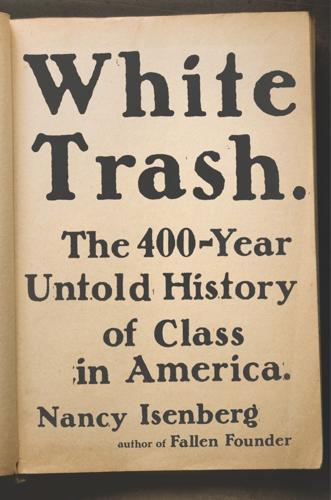
White Trash: The 400-Year Untold History of Class in America
by
Nancy Isenberg
Published 20 Jun 2016
Seeing themselves as hardworking and self-reliant, the upwardly mobile sons of white trash parents believed, as Smith put it, that “he is responsible for himself and himself alone.” The same self-made man who looked down on white trash others had conveniently chosen to forget that his own parents escaped the tar-paper shack only with the help of the federal government. But now that he had been lifted to respectability, he would pull up the social ladder behind him. So suburban white animosity toward blacks was repeated in the treatment of poor whites. Smith found that the formerly poor southern white and the upwardly mobile immigrant population had something in common: “What everyone has always wanted in this country, what most came here for, was to get away from all those others who smell bad, are sleeping in a shanty, and are eating fatback and are going to loaf tomorrow because there is no job to go to.”
…
It derives from British colonial policies dedicated to resettling the poor, decisions that conditioned American notions of class and left a permanent imprint. First known as “waste people,” and later “white trash,” marginalized Americans were stigmatized for their inability to be productive, to own property, or to produce healthy and upwardly mobile children—the sense of uplift on which the American dream is predicated. The American solution to poverty and social backwardness was not what we might expect. Well into the twentieth century, expulsion and even sterilization sounded rational to those who wished to reduce the burden of “loser” people on the larger economy.
…
Socialist Michael Harrington, whose book The Other America (1962) was instrumental in shaping policy debates, noted that the poor occupied an “invisible land,” a territory hidden from the social awareness of a middle class now living in safe, segregated suburbs. Harrington discussed the economic “rejects,” whom he identified as expendables, exiled from mainstream America’s pleasingly productive, upwardly mobile workforce. The old English idea of dumping the poor in a distant colonial outpost was not quite buried. Out of sight, out of mind.89 In his consideration of the ill-served underclass, Johnson, too, thought in terms of soil. The poor were, in his words, the “little folks living on little lands who want what we already have.”
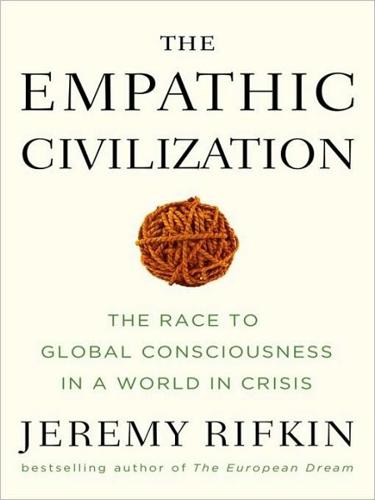
The Empathic Civilization: The Race to Global Consciousness in a World in Crisis
by
Jeremy Rifkin
Published 31 Dec 2009
From now on, from the beginning of the Christian era, the individual is the point of departure for all coming events, and the new developments are directed toward building up worldly communities of individuals, toward the formation of collectives in the true sense of the word.20 Who were the Christians? The archaeological evidence suggests that the early Christians came neither from the landed gentry nor the impoverished urban and rural poor. Rather, they were drawn from a heterogeneous group of upwardly mobile urbanites—freemen and freedmen—who enjoyed a modicum of status by dint of their skills, education, and newly acquired wealth but who were regarded with disdain and contempt by the traditional aristocracy. Although increasingly important in the commercial life of Rome, these upstarts were systematically barred from advancement into the upper reaches of political and social power by the traditional hereditary elite that that had long enjoyed a lock on Roman rule.
…
While by modern standards these cities were small, their populations were packed together in dense living spaces, not unlike the urban tenements and slums characteristic of the nineteenth and twentieth centuries in London and New York City.23 The preponderance of evidence, then, shows that the early Christian converts came from a relatively small upwardly mobile middle class of free artisans and tradespeople—along with some former slaves—whose education level was high compared to the average Roman.24 While men made up the leadership in the early Pauline Christian movement, women played a contributing role as compared to the Jewish community and other cults and associations.
…
But I say unto you, Love your enemies, bless them that curse you, do good to them that hate you, and pray for them which despitefully use you, and persecute you.30 In one of his last utterances, while bleeding to death on the cross, he pleads with God to forgive his executioners, “for they know not what they do.”31 And finally, for all those who suffered in silence and anguished over an unsure future, Jesus offered the ultimate reward, eternal salvation in the world to come. By being part of an extraordinary story—the birth, life, death, and resurrection of the only son of God—thousands of upwardly mobile Roman middle-class individuals could leap beyond their ambivalent social status and become part of a cosmic narrative that transcended the power even of Caesar. At the same time, their individual, existential search for love, affection, intimacy, and companionship in a highly differentiated and estranged urban environment found an empathic friend in Jesus, who understood their vulnerability and the oppression they suffered and who “felt their pain.”
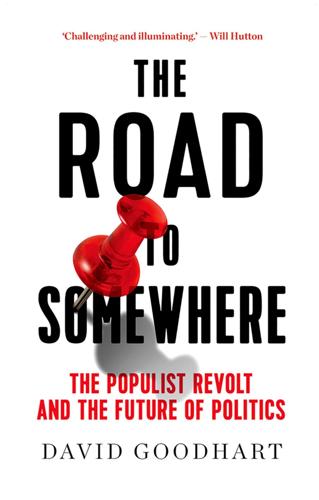
The Road to Somewhere: The Populist Revolt and the Future of Politics
by
David Goodhart
Published 7 Jan 2017
But listening to the people from Anywhere talk about social mobility (as they do a great deal) it often sounds like the upwardly mobile insisting that everyone should become more or less like them. Not only is that logically impossible—the room at the top of a labour market is finite—it also presents a very narrow vision of what a good and successful life entails. And when politicians talk about social mobility as an unqualified good they often seem not to understand the costs and trade-offs involved. Human beings are group creatures and the upwardly mobile, like the immigrant, voluntarily relinquish the security of the group for the advantages of belonging to a higher social class, or in the case of the immigrant, to a richer, more successful country.
…
A system in which prejudice erects barriers to the success of clever people.’21 Those most in favour of challenging racism, sexism and elite privilege tend to come from rising social groups with high human capital as well as already-dominant groups who can re-legitimise their superior status via educational attainment. The rising groups—successful minorities such as British Jews or Indians or upwardly mobile individuals from lower social classes—will often have faced direct discrimination in living memory and are not nostalgic for all aspects of Britain’s past. At the same time the descendants of the already-elite groups, whose parents or grandparents may have been responsible for discrimination in the past, can atone for past misdeeds of class or colonial oppression by ostentatiously shifting in a more liberal direction.

The New Class War: Saving Democracy From the Metropolitan Elite
by
Michael Lind
Published 20 Feb 2020
This credentialed overclass owns roughly half the wealth in the United States, with the rest divided between the superrich and the bottom 90 percent.9 Are the managers and professionals an inbred, self-perpetuating, hereditary class as well as an educational elite? In a purely meritocratic society, the ranks of university-educated managers and professionals might be refilled completely by upwardly mobile individuals in each generation. In the United States, however, American college students tend to have one or more college-educated parents. In other Western democracies as well, membership in the university-educated managerial class is also partly hereditary, though partly open to talent from below.10 In the United States and Europe, intergenerational mobility, measured crudely by correlation between the earnings of fathers and sons, is strikingly low.
…
In the United States, students with math scores in the bottom half who come from families with the highest socioeconomic status are more likely to finish a college degree than students from families with the lowest socioeconomic status who have math scores in the top half of the range.13 In a true meritocracy, the mediocre children of college-educated parents would constantly be tumbling down into the non-college-educated working class, replaced by smarter, upwardly mobile scions of the working class. But overclass families will do anything they can to make sure that their offspring remain in the university-credentialed elite into which they were born, including, in the United States, bribing university admissions officials and reference letter writers. The Industrial Revolution did not replace class systems in the West with classless, meritocratic societies.
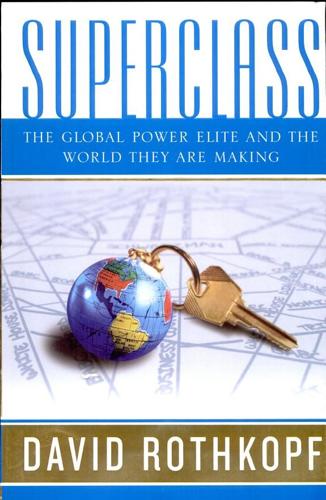
Superclass: The Global Power Elite and the World They Are Making
by
David Rothkopf
Published 18 Mar 2008
Bush: Remarks at a Reception Honoring Hispanic Heritage Month,” American Presidency Project, October 12, 2001. 247 Based on audience numbers and website hits David Hardaker, “Islam’s Billy Graham,” Independent, January 4, 2006. 247 boasts “the kind of following” Tarek Atia, “Amr Khaled: A Preacher’s Puzzle,” Al-Ahram Weekly, October 20, 2005. 247 Khaled made his first religious speech Ibid. 247 Sales exploded Samantha Shapiro, “Ministering to the Upwardly Mobile Muslim,” New York Times Magazine, April 30, 2006. 247 “He is so tender and most adorable” Ibid. 248 “In the best traditions” Hardaker, “Islam’s Billy Graham.” 248 On Khaled’s website, which received twenty-six million hits Shapiro, “Ministering to the Upwardly Mobile Muslim.” 248 It is the third-most-popular Arabic site Ibid.; Atia, “Amr Khaled.” 248 A New York Times reporter recalls Shapiro, “Ministering to the Upwardly Mobile Muslim.” 248 Rick Little, an American adviser to the UN Hardaker, “Islam’s Billy Graham.” 249 He has told audiences that to remove the headscarf Ibid. 249 “I believe that every one hundred years” Atia, “Amr Khaled.” 249 He believes that aliens live “Who Is Li Hongzhi?”
…
Based on audience numbers and website hits, he is more popular than Oprah Winfrey, and in the Muslim world, according to the popular weekly Al-Ahram, boasts “the kind of following you’d expect of a movie or pop star.” He has no official religious credentials but has managed to attract a devoted audience of millions—mostly young, educated, and upwardly mobile—stretching from the Middle East to Romania to Ireland. From his position of incredible influence and visibility, Khaled has emerged as a powerful figure in shaping Muslims’ relations with the West. Khaled grew up in Alexandria, Egypt, in an upper-middle-class family that was traditional though not religious.
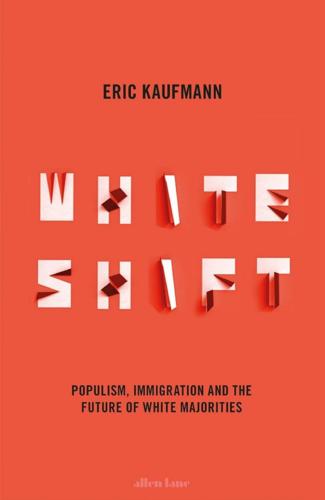
Whiteshift: Populism, Immigration and the Future of White Majorities
by
Eric Kaufmann
Published 24 Oct 2018
Often, members of countercultural lifestyle enclaves lived in identifiable sections of large cities such as Greenwich Village, the original home of the Young Intellectuals, or Haight-Ashbury in San Francisco. One index of rising bohemianism was the explosion in the number of artists in New York, from a few thousand in the 1960s to 100,000 by the early 1970s.28 Meanwhile, the share of single households in Manhattan had surged to a third of the city’s population by 1980. In the 1980s, upwardly mobile professionals, or ‘yuppies’, came to adopt aspects of bohemianism, combining economic self-interest with social liberalism. This is nicely explored by David Brooks’s sardonic social commentary on the bohemian affectations of the American bourgeoisie, Bobos in Paradise (2013). One ‘bobo’ hotbed was the emerging tech hub of Silicon Valley, where countercultural values fused with venture capitalism and big science to form a new social ecosystem.
…
The district had largely been settled by working-class white Cockneys who maintained a distinctive culture based on accent and myths of place. Much of this was chronicled by the long-running EastEnders soap opera, whose largely white actors portray a lost Cockney landscape which now consists mainly of upwardly mobile white singletons and minority families. Many Barking families originated in the former Cockney heartlands of inner East London in the present borough of Newham which were ethnically transformed in the 1980s and 1990s. This was brought to life in 2016 by the controversial BBC documentary Last Whites of the East End.
…
At the other end of the social scale, wealthy minorities are no longer compelled to choose lily-white areas if they want to move up, but can select a more diverse middle-class area in which to live. In urban Canada, and increasingly in the US and Britain, there is a large minority middle class. In addition, there are a growing number of prosperous ‘ethnoburbs’ such as Richmond in Vancouver, Harrow in London, or Cupertino, California, where upwardly mobile minorities move – and which white middle-class families increasingly avoid.4 This means minority upward mobility doesn’t automatically translate into integration. Mixing housing sizes in a development may just result in a blend of wealthy and poor people from the same ethnic background living in the area.

From Satori to Silicon Valley: San Francisco and the American Counterculture
by
Theodore Roszak
Published 31 Aug 1986
In its time, persona of ragged independence - or some reasonable facsimile thereof - was a proud and their prominent emblem of cultural disaffiliation blos- soming major in the streets of every city, campus of every minor college and high was a stance that claimed to The "organic", a style purported principled to rejection that be ruled in favor of a return to folk origins and lost traditions. A bit of the rebel, a bit of the noble savage. who assumed the "natural", of antiseptic, upwardly mobile middle-class habits bohemian It have broken irrevocably with the urban-industrial culture world. on the school. Those the identity spoke of themselves as "freaks" and assembled in hastily improvised and 3 ephemeral "tribes" where simple and funky living was the At the Morning Star Ranch rule.
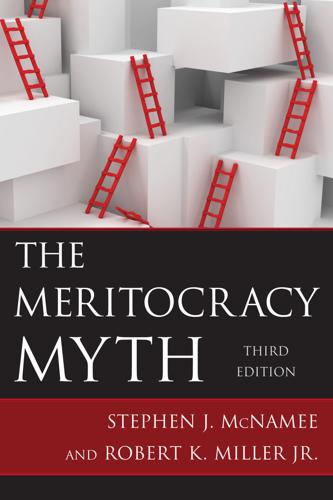
The Meritocracy Myth
by
Stephen J. McNamee
Published 17 Jul 2013
One way is that those of the same social-class background (class of origin) are more likely to go to the same kinds of schools and have the same levels of educational attainment. A second way is that those who are from lower social-class origins who are upwardly mobile are more likely to end up in educational and work settings that increase the prospect of marrying someone from a higher social class of origin compared to those who are not upwardly mobile. Historically, the prospect for upward mobility through marriage has been greater for women than men. In what might be referred to as the “Cinderella effect,” early research seemed to show that women could sometimes trade attractiveness in a marriage market for access to higher-status men (Elder 1969).
…
Through his elite Ivy League education, Barack Obama further enhanced his cultural capital and acquired upper-class credentials. Today, Obama and his family qualify as “marginally rich.” His wife, Michelle, is from a modest family background, having grown up in an African American working-class family in Chicago. She was perhaps even more upwardly mobile than her husband. Michelle Obama graduated from Princeton University and Harvard Law School and became a successful lawyer in her own right as an attorney for a large Chicago hospital. In December 2007, Money magazine estimated the Obama family’s net worth at $1.3 million. Their 2007 tax return showed a household income of $4.2 million, up from $1.6 million in 2005.
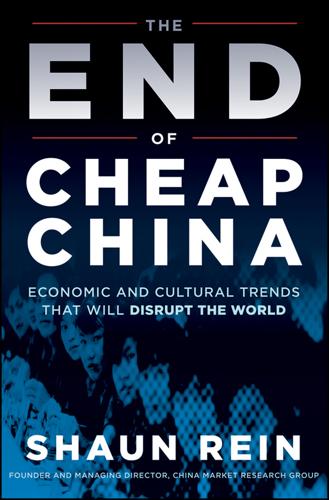
The End of Cheap China: Economic and Cultural Trends That Will Disrupt the World
by
Shaun Rein
Published 27 Mar 2012
Most shoppers at its flagship Huai Hai Road location in Shanghai are foreigners and older Chinese. Similarly, hypermarket retailer Walmart continues to lose market share to specialty shops in China, because its motto of everyday low prices does not appeal to their main buyers, who tend to be upwardly mobile middle class and wealthy consumers seeking quality and good value rather than a better price. There are always lower prices than Walmart’s at roadside stalls and mom-and-pop stores, so positioning itself this way is not a sustainable, long-term strategy. Walmart’s market share plummeted to 5.5 percent in 2011 from 8 percent three years earlier as organic fruit shops and other specialty stores took market share.
…
She had just signed up for a credit card, so instead of having to save up for two months before buying the latest iPhone, she could buy it on credit. She told me she changed her mobile phones every nine months, selling old ones through online e-commerce sites like Taobao. There are millions of young, upwardly mobile women in China just like Melanie. They are showered with love and are taught to believe they can achieve anything. Their parents are doing whatever they can to help them achieve the goals they had for themselves, but were not able to achieve due to the disruption of the Cultural Revolution. And they are optimistic that their personal and professional lives will continue to get better and better and better.
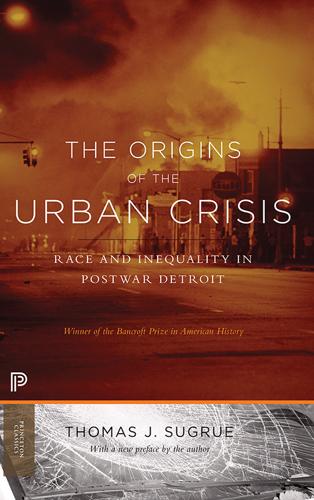
The Origins of the Urban Crisis
by
Sugrue, Thomas J.
Even as African Americans began, in increasing numbers, to make their way to the suburbs, they largely remained confined to racially segregated communities. Remembering the history of white hostility and racial violence that shaped the postwar city, many blacks avoided working-class white suburbs (in Detroit, those included Wayne, Westland, East Detroit/Eastpointe, Warren, and Hazel Park, among others). In wealthier suburbs, where upwardly mobile blacks moved (such as Southfield, a middle- and upper-middle-class postwar suburb north of Detroit), whites, especially those with children, steadily moved out and few new whites moved in.11 To a great extent in postwar America, geography is destiny. Access to goods and resources—public services, education, and jobs—depends upon place of residence.
…
The history of these smaller black neighborhoods, where black migrants cobbled together the resources to buy or build single-family homes, is little studied in Detroit or elsewhere.8 The largest enclave outside Paradise Valley, home to about a third of Detroit’s African American population, was the black West Side, a neighborhood centered around the intersection of Tireman and West Grand Boulevard. The black West Side was “an attractive neighborhood” settled in the 1920s by upwardly mobile Detroit blacks fleeing Paradise Valley as it attracted growing numbers of southern-born migrants. West Side residents, in the words of a black observer, “took pride in their achievement.” They founded a community organization, the Entre Nous Club, to “keep their homes on a high level” by sponsoring community home improvement and gardening activities.
…
Smith, Chairman of the Committee on Race Relations, the Detroit Realtist Association (1948) THE SCENE was tense with drama. The place was the Wayne County Circuit Court in May 1945. The case was a civil suit against a middle-class black couple who had bought a house in an all-white West Side neighborhood. The defendants, Minnie and Orsel McGhee, were upwardly mobile, better off than most Detroit blacks at the end of World War II. She was one of Detroit’s two hundred black school teachers, he was a relatively well-paid automobile worker. The plaintiffs were Benjamin and Anna Sipes and other members of the Northwest Civic Association. With the assistance of the NAACP and two leading black lawyers, Willis Graves and Francis Dent, Minnie and Orsel McGhee used the defense to challenge racially restrictive covenants, agreements that covered virtually all Detroit neighborhoods outside the center city.
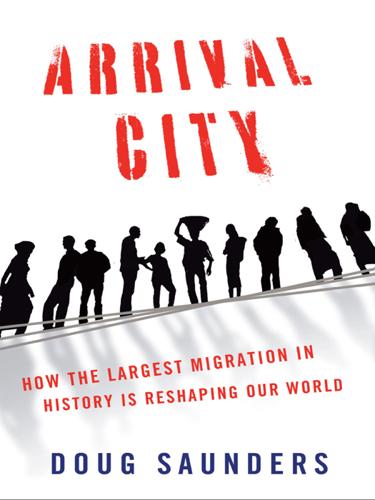
Arrival City
by
Doug Saunders
Published 22 Mar 2011
This, as the Los Angeles sociologist Dowell Myers has explained, is actually a result of the American arrival city’s success: Because it is constantly sending its educated second generation into more prosperous neighborhoods and taking in waves of new villagers, in a constantly reiterated cycle of “arrival, upward mobility, and exodus,” the neighborhood itself appears poorer than it really is. “At a given point in time, measurement of residents’ characteristics includes the most disadvantaged newcomers to a city but not the more advantaged ‘graduates’ from the place,” Myers says. “When the influx of disadvantaged newcomers is growing or when the departure of upwardly mobile residents is increasing, the city’s average economic status will decline over time. This leads to an odd paradox: The downward trend for the place is the opposite indicator of the upward trend enjoyed by the residents themselves.”5 This paradox has created a sense among outsiders that the city’s immigrant districts are poorer or more desperate than they really are, which leads to a misunderstanding of the forms of government investment they really need—a serious policy problem in many migrant-based cities around the world.
…
Kemal and a good number of his customers seem to have done well in the optimistic years of the early twenty-first century, making the slow march into the lower ranks of the middle class in Turkey’s fast-reviving economy. And they weren’t hurt by the recession that began in 2008, whose effects on credit and employment largely bypassed Turkey. These are upwardly mobile arrivals. Nevertheless, they have little sympathy for the idealists who built this place—in fact, most of what they express is scorn. And no wonder: what is visibly, painfully missing here is the assistance of the state, the good schools, transit networks, and social services that allow villagers to turn their children into full-fledged urbanites.
…
It has meant that the arrival city is sometimes treated with respect, since the slum-based Shiv Sena has granted land ownership, sewage, and water supplies, and municipal services, such as schools, clinics, and parks, to deserving (Hindu) slums, in ways that sometimes follow the best practices of urban land reform and turn the self-built settlements into truly thriving neighbourhoods. It has also meant that the worst sort of practices—bulldozer slum clearance, high-rise replacement of upwardly mobile arrival cities, complete neglect of the most basic sanitary and health needs, and criminal-gang control of services—have continued, and have even been amplified, in slums that are not part of that privileged group. It is a dangerous, divisive form of politics, one that retains the power to take over the Indian state and one that could have been avoided if governments had kept the needs of the arrival city in mind from the beginning.
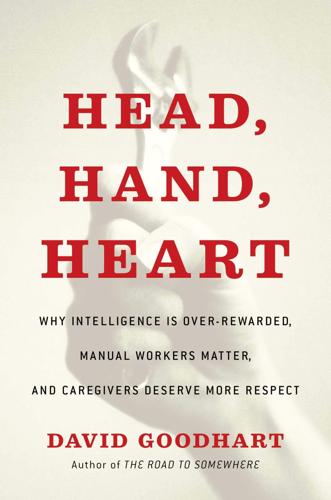
Head, Hand, Heart: Why Intelligence Is Over-Rewarded, Manual Workers Matter, and Caregivers Deserve More Respect
by
David Goodhart
Published 7 Sep 2020
The study, led by Daniel Belsky, consisted of five longitudinal studies testing 20,000 individuals in the United States, Britain, and New Zealand.17 The authors concluded that participants with higher polygenic scores achieved most education and career success, but they also tended to come from better-off families. Nevertheless, participants with higher polygenic scores tended to be upwardly mobile compared with their parents, and siblings with the highest polygenic score were the most upwardly mobile. So polygenic scores are not merely the product of advantages provided by background. The Flawed Meritocracy So one might say that it is not private tutors or genes that determine your success but both. It is indisputably true that educational and career success remains strongly connected with privilege and class background in all developed countries, although in some more than others.
…
It is also the main reason for that notorious ‘pay-gap.’ ”22 Social mobility, as I argued in Chapter One, is another idea and policy that has been relentlessly promoted, at least rhetorically, by cognitive class governments of center-left and center-right, especially in the United Kingdom and the United States, with little nuance or sense of its costs for those who are not upwardly mobile. For the politicians of the center-left, equality of opportunity is preferable to an unachievable and unpopular goal of equality of outcome, and for the center-right the stress on mobility helps to protect them from accusations of defending privilege. Yet less well-educated people often hear speeches from highly educated and successful people about social mobility as exhortations to become more like them, especially as—in the United Kingdom, at least—getting on often means a ladder out and leaving your roots behind: you have to “leave to achieve.”
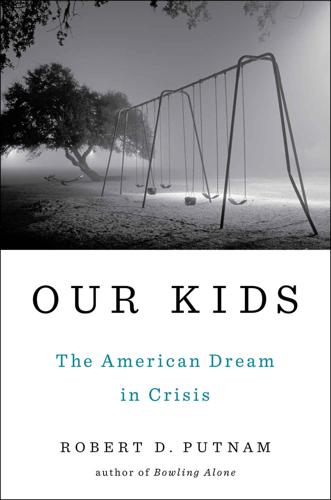
Our Kids: The American Dream in Crisis
by
Robert D. Putnam
Published 10 Mar 2015
Simone, a teacher just returned from work, wears a tweed business suit, while Carl and Desmond lounge on the couch in tennis shirts and shorts. All three are strikingly fit, their words welcoming, their body language relaxed. (Desmond’s two siblings are not at home during our visit.) Simone grew up in an upwardly mobile, middle-class family in the New York City area. Her family started out in Harlem, moved through increasingly comfortable parts of the city, and finally crossed the river to a New Jersey suburb. Her father was recruited out of NYU to become a manager at Merrill Lynch; her mother was a medical secretary.
…
Rockefeller Institute of Government identified Santa Ana as the Most Troubled City in America because of its high unemployment, high poverty rate, undereducated population, and crowded housing. Latinos in Orange County are more likely to live not only in poverty but also amidst street violence and gang activity. Santa Ana alone is home to 29 street gangs.4 However, many upwardly mobile middle-class Latinos (mostly second- or third-generation descendants of immigrants) are moving rapidly from impoverished Latino areas in Los Angeles and Orange County into formerly white Orange County communities. Between 1990 and 2010, the percentage of Latino residents in each of the county’s predominantly white, affluent cities increased.
…
Each has toiled exhaustingly to climb the ladder, and they have invested much time, money, and thought in raising their kids. Their own modest origins—though not destitute—were in some respects closer to the circumstances facing poor kids today than to the circumstances in which their own kids have grown up. These parents were able to be upwardly mobile in part because the era of their youth was relatively favorable to upward mobility. Though it might seem natural to label them “self-made,” in many unnoticed ways they benefited from family and community supports that are nowadays less readily available to kids from such modest backgrounds. They grew up in an era when public education and community support for kids from all backgrounds managed to boost a significant number of people up the ladder—in Bend, Beverly Hills, New York, Port Clinton, and even South Central LA.
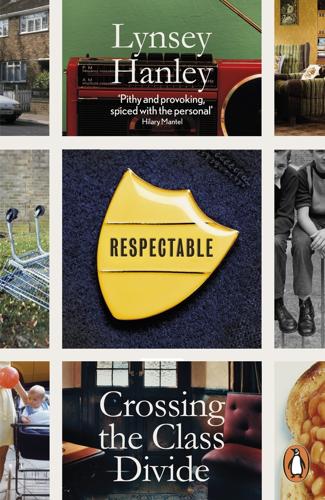
Respectable: The Experience of Class
by
Lynsey Hanley
Published 20 Apr 2016
For individuals to thrive at the bottom of a pronounced and visible class hierarchy, and to overcome the pressure – exerted from all sides – to stay where they are and yet also strive to escape, suggests a confounding order of things: an apparent rebellion, but a kind of orderliness as well. A class system needs both socially mobile people and socially immobile people in order to prove its worth. The upwardly mobile are held up as proof that the class structure isn’t half as rigid as it looks, while those who don’t move out of the working class – because, of course, it’s fine to be socially immobile as long as you’re middle class – are held to be somehow parasitic for their refusal to ‘do the right thing’ and create a morally acceptable level of surplus value.
…
First, through the dismantling of trades union power, which had helped to integrate the jobless into the wider working population by establishing and then protecting rights and benefits when they were out of work. Second, through negative propaganda, in tacit collusion between government and newspaper owners, which sought to isolate the badly off and the bolshy from an upwardly mobile, consumerist working class. Third, through populist policy-making: the Right to Buy, which divided local authority tenants into the ‘aspirational’ and the ‘non-aspirational’ depending on whether or not they bought their council house, being a prime example. The idea that working-class respectability no longer exists appeals to people who believe that the social and political changes of the last thirty-five years have sorted the wheat from the chaff.

On Paradise Drive: How We Live Now (And Always Have) in the Future Tense
by
David Brooks
Published 2 Jun 2004
Patio Man can envision his own wife, Cindy, the Realtor Mom, circulating among them serving drinks, telling parent-teacher-conference stories and generally stirring up the hospitality; he, Patio Man, masterfully wields his extra-wide fish spatula while absorbing the aroma of imported hickory chips—again, to the silent admiration of all. The sun is shining. The people are friendly. The men are no more than twenty-five pounds overweight, which is the socially acceptable male-paunch level in upwardly mobile America, and the children are well adjusted. This vision of domestic bliss is what Patio Man has been shooting for all his life. Patio Man has completed his purchase, another triumph in a lifetime of conquest shopping. As he steps into the parking lot, he is momentarily blinded by sun bouncing off the hardtop.
…
She was invited to address the crowd precisely because she herself has had such a phenomenally successful career. The destitute are rarely asked to give commencement addresses. Yet she is asking us to pile goodness on top of plenty, patience on top of hustle, tranquility on top of aspiration. When does Anna Quindlen expect us to sleep? This is the culture of upwardly mobile childhood. And when you look at the frantic strivings of today’s young meritocrats, what you are seeing is the latest and maybe most fevered version of a long line of American strivings. It was the early settlers who established the code that life is a pilgrimage toward perfection. Jonathan Edwards told his flock never to be content with their virtues, never to feel satisfied.
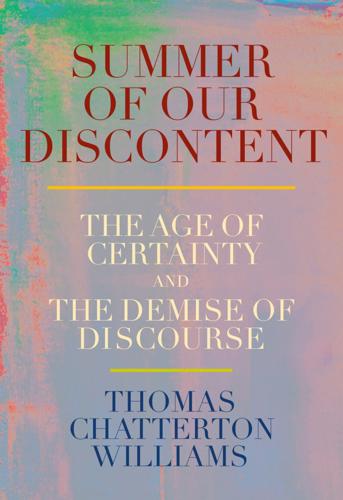
Summer of Our Discontent: The Age of Certainty and the Demise of Discourse
by
Thomas Chatterton Williams
Published 4 Aug 2025
When we profess to care about diversity—a value it would be exceedingly difficult to find a prestigious institution not openly pledging allegiance to—what do we even mean by the term? Do we mean, effectively, that the same slate of views ought to be expressed by increasingly phenotypically varied, uniformly arrived, or upwardly mobile speakers with equal access to a set of preferences, dispositions, and tastes they were socialized into through exclusionary educational filters? Is that the mountaintop we are so assiduously climbing toward? Are we saying—as was the implication of the criticism that met Jennifer Finney Boylan and that was amplified in her swift capitulation—that there really are specific ideas and associations certain identity categories are required to shun or embrace in lockstep?
…
(Workman would graduate the following semester in a stole emblazoned with the phrase “Black Lawyers Matter,” a caption underneath the image declaring, “Long live the student intifada.”) In light of such speech, a further fracturing became noticeable. Suddenly, even among those who would previously have been opposed to it, there was a newfound appetite for silencing free expression, neutralizing viewpoint diversity, and canceling the livelihoods and career prospects of the upwardly mobile activists who had so thoroughly married institutions to their values in the summer of 2020. Soon, it was not only the protesters who were engaged in blunt identitarian politics but also some ostensibly liberal Jews and their allies. On the same day of their comments, Workman, for one highly visible example, was repudiated by the dean of NYU’s law school and had their job offer at a white-shoe firm rescinded—a comeuppance that was roundly celebrated on social media, despite being a textbook instance of cancel culture.
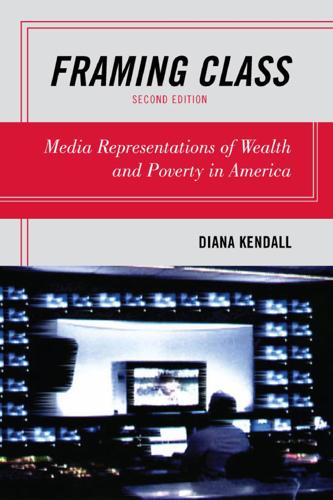
Framing Class: Media Representations of Wealth and Poverty in America
by
Diana Elizabeth Kendall
Published 27 Jul 2005
The image of Betty Crocker personified hearth and home, suggesting the importance of family values and supporting the positive role of the homemaker who performed kitchen magic for the benefit of her family. Over the years, the media generally have supported the American Dream and encouraged their audiences to view themselves as upwardly mobile. The 1935 New York Times book review quoted above, for example, describes what the reviewer believed to be the ultimate aspiration of members of the U.S. middle class: In the United States there is an individualist tradition, a belief in progress, which has made most men unwilling to accept the label of “worker” for more than a short time.
…
In numerous episodes, Lucy Ricardo (Lucille Ball) attempts to break into show business while her husband, Ricky (Desi Arnaz), a Cuban American bandleader, attempts to keep her at home, a story line that becomes the show’s staple plot. As the series progresses, the Ricardos not only have a child but become upwardly mobile, transforming themselves from a struggling, lower-middleclass family in a New York City apartment into a solid (although slightly inane) suburban family that lives in a well-appointed country home in Connecticut. The story lines in I Love Lucy frequently involve issues such as home economy, child rearing, and postdating checks; however, the undercurrent of activity often questions what constitutes family values and a woman’s “appropriate” role in the family.
…
I also expected that the media would focus on positive attributes of the middle class, such as people’s values and lifestyles. Based on the popularity of books like Brooks’s Bobos in Paradise and Florida’s The Rise of the Creative Class, I anticipated depictions of the middle class as “in charge” and upwardly mobile. Instead, I found that although some journalists and television writers extol the virtues of this group, many others focus on the constant peril it faces, and they have done so for more than 150 years. This type of framing has become more prevalent given the economic climate of the United States in the early twenty-first century, and even more stories are found in all forms social networking and mainstream media.
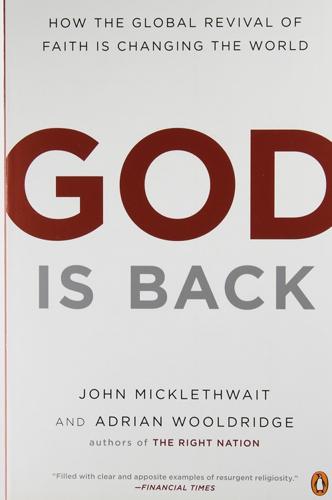
God Is Back: How the Global Revival of Faith Is Changing the World
by
John Micklethwait
and
Adrian Wooldridge
Published 31 Mar 2009
According to the secularist hymnbook, those drawn to religion should be the weak, the ignorant and the fearful. That is certainly true in some cases. Pentecostalism has spread rapidly in the favelas of Brazil; go to Gaza, and it is not hard to see why radical Islam offers a form of hope for so many Palestinians. But that is not the whole picture. In much of the world it is exactly the sort of upwardly mobile, educated middle classes that Marx and Weber presumed would shed such superstitions who are driving the explosion of faith. In both Turkey and India, modernization has helped to create the up-and-coming bourgeoisie that Atatürk and Nehru prayed for; but these people are the most fervent supporters of the religious parties.
…
Plans already exist at Yoido to build a second sanctuary in Pyongyang, as well as forty other churches. China is another target—and also a road into North Korea. The Yanbian Korean Autonomous Prefecture in the Jilin Province near the North Korean border is chockablock with missionaries. Yoido attracts the upwardly mobile middle class—exactly the sort of people who flock into the megachurches of Dallas and Orange County. Asked in 2004 which faith had most spurred on their country’s modernization, 43 percent of South Koreans named Protestantism and 11.3 percent Catholicism. The churches provided many of the democracy movement’s leaders.
…
Guest, God in Chinatown: Religion and Survival in New York ’s Evolving Immigrant Community (New York: New York University Press, 2003). 34 The National Institute for the Renewal of the Priesthood. 35 www.foursqaurechurch.org. 36 “A New Breed of Monk Rises in Myanmar: Sitagu Sayadaw Mixes Compassion and Self-Promotion,” Wall Street Journal, August 19, 2008. 37 Simon Elegant and Jason Tedjasukmana-Bandung, “Holy Man,” Time, November 4, 2002 . 38 “Incense, Silk and Jihad,” The Economist, May 29, 2008. 39 Elegant and Tedjasukmana-Bandung, “Holy Man.” 40 “Incense, Silk and Jihad.” 41 http://www.theage.com.au/opinion/just-how-many-people-are-behind-the-polygamy-push-20080626-2xfm.html?page=-1. 42 http://insideindonesia.org/content/view/1011/47/. 43 Samantha M. Shapiro, “Ministering to the Upwardly Mobile Muslim,” New York Times, April 30, 2006. 44 David Hardaker, “Amr Khaled: Islam’s Billy Graham,” The Independent, January 4 , 2006. CHAPTER NINE: ALL THAT IS NOLΥ IS PROFANED 1 Richard Tedlow, Giants of Enterprise: Seven Business Innovators and the Empires They Built (New York: Harper Business, 2001), 421-22 . 2 The study was released on March 23, 2006. 3 Steve Coll, The Bin Ladens: An Arabian Family in the American Century (New York: Penguin, 2008), 380. 4 E.

The Future Is Asian
by
Parag Khanna
Published 5 Feb 2019
ASEAN is Australia’s second largest trading partner behind China, followed by Japan and Korea—and new trade agreements between all of them signal substantial growth not only in goods but also in services. Trade between Australia and India grew sixfold between 2000 and 2012, then stalled, with Australians complaining about the complexities of doing business in India. But given India’s demand for commodities, improvements in infrastructure, and upwardly mobile population, there is a strong momentum behind Aussie-Indian trade growth. Australia is learning to see Asia as not just a destination for commodities but a conduit for recycling capital into its own critical future industries. Whereas all its car-manufacturing plants have shut down due to lower-wage Asian competition, robust cattle exports to China fund major road upgrades as well as organic farms catering to Asian tastes.
…
At the tertiary level, countries across South and Southeast Asia are racing to double, triple, and even quadruple their university enrollment rates but making sure to subsidize tuition to avoid the United States’ student debt crisis. The elite Indian Institutes of Technology (IITs) produce a small crop of world-class mathematics and engineering graduates annually, and some, such as IIT Delhi, are cofunding the conversion of PhD theses into start-up ventures. To reach far deeper into India’s bulging youth cohort and upwardly mobile middle class, a new breed of hybrid technical-professional academies has emerged. Rajendra Pawar, a cofounder of India’s private education powerhouse NIIT, has scaled his on-site and online industry-linked skills programs to reach 500,000 students per year, training them on demand for Indian and global companies from oil rigs to tech parks, with curricular offerings expanding to service insurance, supply-chain management, programming, and other sectors.
…
The current spate of crackdowns on civil society in numerous Asian countries is a reflexive response to a more confident media and a new educated class of entrepreneurs, youths, and women who despise corruption and elite impunity. The tide of history remains with these people: governments know that suppression is not the way to make their countries worth living in. Can Asia’s tycoons and upwardly mobile purchase the solidarity that colonialism, social inequality, and poor governance has taken from their societies? Charity is enshrined in the teachings of the Buddha and in the Koran but is less systematized and publicized than in the West. According to the World Giving Index, since 2014 the country with the most consistently high rate (90 percent) of charitable giving is also one of the poorest, Myanmar, due to its devout Buddhist beliefs.
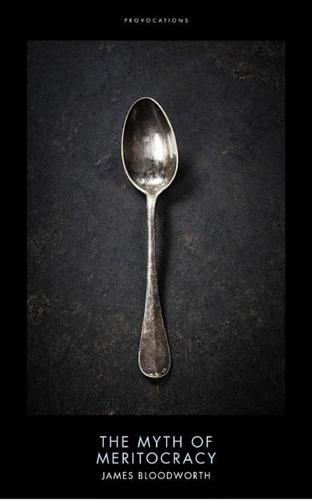
The Myth of Meritocracy: Why Working-Class Kids Still Get Working-Class Jobs (Provocations Series)
by
James Bloodworth
Published 18 May 2016
Prime Minister David Cameron says he wants to see a more socially mobile Britain … where no matter where you come from … you can get to the top in television, you can get to the top in the judiciary, get to the top of the armed services, get to the top in politics and get to the top in newspapers. Cameron made the same point more succinctly in 2013 when he stated that ‘I believe in equality of opportunity’.5 Both Cameron and his Chancellor of the Exchequer George Osborne have talked repeatedly about helping ‘strivers’ and those who ‘aspire to get on’. These upwardly mobile flag-bearers of the meritocracy have typically been contrasted with ‘shirkers’ – the Burberry-clad layabouts who supposedly skulk behind net curtains glancing fearfully at their aspirational peers as the latter head off to work. With the creation of a meritocracy in mind, in 2008 the Conservatives released a report entitled ‘Through the Glass Ceiling: A Conservative Agenda for Social Mobility’.

Palo Alto: A History of California, Capitalism, and the World
by
Malcolm Harris
Published 14 Feb 2023
But despite being a modern man, he was living in liminal times, and contagious disease was a serious threat to everyone everywhere in the world. He died of pneumonia complications in 1880, and his widow, Hulda, followed him into the afterlife four years later (also pneumonia). Their three children, who just recently faced uncircumscribed opportunity as upwardly mobile white kids with education and a family business in the American West, were now orphans. For orphans, however, they were relatively lucky. Herbert shuffled between relatives in Iowa until he reached adolescence, when the extended family, who shared his parents’ belief in the value of education, sent him to an uncle in Oregon who was the doctor for and principal of a Quaker community school.
…
It was a concession to history, a subtle acknowledgment that in the face of deindustrialization most workers required some level of higher education if they wanted a middle-class lifestyle. The two-year schools switched their focus to vocational preparation, which critics alleged was designed to keep working-class youths away from professional paths, while defenders said it upheld the state tradition of the upwardly mobile technician. Graduation and transfers were relatively uncommon, but one of the early students to make use of the protocol was Ernie Allen, who graduated from his local Merritt Community College, in Oakland, and moved on to Berkeley, where he and his classmates jumped into history. It wasn’t impossible for a working-class black kid from Oakland to get into Berkeley straight away, but it was uncommon enough that, as historian Robin D.
…
Franklin located a program with the right dates and was accepted at Stanford University, in Palo Alto, California, where he would pursue his doctorate in English literature. As a graduate student, Franklin was a hotshot, even by Stanford standards. (It’s funny to think of an atmosphere in which a knowable and even obvious hierarchy of participants attaches to the study and interpretation of literature, but such is the academy.) Though he was an upwardly mobile air force intelligence officer, Franklin was “not what Californians think of as a Stanford type,” as the New York Times Magazine euphemistically put it later.43 Still, he must have impressed the hell out of the conservative English department with his work on Hawthorne and Melville. His thesis was based on a close reading of Moby-Dick and Melville’s polyphonic use of mythology, just the kind of thing advisers love.

The New Class Conflict
by
Joel Kotkin
Published 31 Aug 2014
; Richard Vedder et al., “From Wall Street to Wal-Mart: Why College Graduates Are Not Getting Good Jobs,” policy paper, Center for College Affordability and Productivity, December 16, 2010, http://www.centerforcollegeaffordability.org/uploads/From_Wall_Street_to_Wal-Mart.pdf; Friedman, The Moral Consequences of Economic Growth, pp. 6–7; Emily Beller and Michael Hout, “Intergenerational Social Mobility: The United States in Comparative Perspective,” The Future of Children, vol. 16, no. 2 (Fall 2006): 19–36. See table 4 in Beller and Hout’s study: From 1930–1939, 49 percent of American men were upwardly mobile, 25 percent downwardly mobile, and 26 percent immobile. Due to the lessening of poverty after the depression, this decreased with every successive generation, but even between 1970–1979 more American men were upwardly mobile than stagnant or heading downward. 26. Richard Vedder, “The College-Graduate Glut: Evidence From Labor Markets,” Innovations (blog), Chronicle of Higher Education, July 11, 2012, http://chronicle.com/blogs/innovations/the-college-graduate-glut-evidence-from-labor-markets/32997. 27.
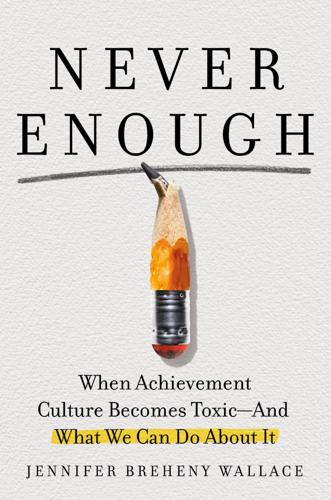
Never Enough: When Achievement Culture Becomes Toxic-And What We Can Do About It
by
Jennifer Breheny Wallace
Published 21 Aug 2023
When I excitedly shared the news with William, he looked me straight in the eyes. “Mom, I love architecture,” he said. “Please don’t ruin it for me.” * * * ■ ■ ■ In generations past, having two employed parents with college degrees, as my kids do, generally meant that your family was upwardly mobile, if not already financially secure. But my parental anxiety to make sure my kids were not “falling behind” wasn’t a personal quirk, as I have come to learn. This anxiety was a symptom of a new, broader cultural trend that has mainly taken root in communities like mine, filled primarily with college-educated professionals.
…
See also substance use Dweck, Carol, 118–19 dyslexia, 177, 190, 202–5 E Eason, Genevieve, 79–84, 230 eating disorders, 3–4, 52, 95, 147 economic climate, 33–39 educators and Black students, 165 building partnership with, 165 “taking action” resources for, 242–46 See also teachers; tutors elementary school, 16, 18, 26, 46, 147, 158, 176–77 Elias, Vanessa, 90–91, 223–24, 230 elite colleges admission lotteries for, 245–46 affirmative action and, 164–65 competition for, 15, 246 conversations about, 133 “faking passions” for, 180 and happiness/success, 125–31 illegal scheme for, 24–25 parents focus on, 26, 29, 42–43, 111, 124, 139 pressure to go to, 26, 29, 31 rankings and, 125–31 reject myth about, 125–31 schools prioritize, 26, 182 self-worth tied to, xviii, 53 students worked towards, 1–2, 114 Elliott, Gregory, 51, 53, 58, 63 Emdin, Christopher, 229 emotional support, 79–80, 87–90, 95–98, 103, 150, 158–61 emotions mindfully expressed, 65–66, 71 normalize difficult ones, 239, 244 numbing them, 1, 3–4 produced by competition, 158–61, 244 share them in school, 244 empathy, xx, 87, 179–81, 190, 197, 205, 241 emptiness, xv, 5, 88 energy efficiency, 239–40 English, Elizabeth, 152 envy benign vs. malicious, 167–68 and feeling valued, 211 materialism and, 124 negative effects of, 151–52, 164 parental guidance for, 159–60, 169, 230, 239 positive aspects of, 154, 160, 168, 171–72 and social comparison, 151, 167–68, 244 Erickson, Erik, 12 ethnicity, 7, 162 Evanston, Illinois, 34, 36 evolution, 31–33 exhaustion of kids, 3, 5, 13, 16, 163–64, 180 and materialism, 121 of mothers, 38, 87, 90, 93–95 of parents, 65, 78–79, 84, 95, 98, 121 See also burnout extracurricular activities boundaries for, 109–11 cause stress, 8, 14 chauffeuring kids to, 84, 90, 100 in college, 129–30 and college admissions, 2, 38, 47, 158 competition in, xiv, 143 money spent on, 35 parents advise on, 88–89 parents manage them, 10, 30, 34, 80, 86 and scholarship dollars, 25 and status seeking, 28 F Facebook, xvi, 224 factory workers, 35–36 failures, 49, 61–62, 65, 71, 203–4, 240 “false self,” 58–64 families, 155 and achievement pressure, xvii, 6–7 in affluent communities, 109–14 children’s needs first in, 83–88 clarify goals of, 137–39 closeness in, 72–73, 96 dinnertime and, 64, 107, 124, 206 importance of, 117 mandate volunteering, 190–91 and mattering, 146–47, 212–13, 227 people come first to, 223 support for, 86, 106–7, 213–17 teens contribute to, 182–88, 200, 227, 230, 240 time together, 16, 72–73, 239 upwardly mobile, 11–12 values of, 132–40 Family Leadership Center, 186–87 Family Matters (Elliott), 53 fathers, 68 and college admissions, 43, 126, 144, 182 “good father effect” and, 85 “intensive parenting” by, 85 on parenting, 34, 42, 62–63, 103, 113 status safeguarding by, 30 support groups for, 85–86 Federal Reserve Bank of St.
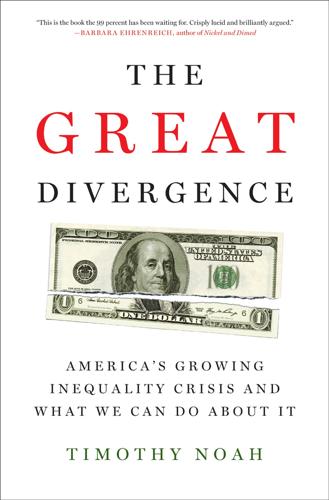
The Great Divergence: America's Growing Inequality Crisis and What We Can Do About It
by
Timothy Noah
Published 23 Apr 2012
Climbing the ladder is not impossible, but neither is it as common as it was during the late nineteenth and early twentieth centuries, when Horatio Alger and James Truslow Adams formulated notions about American opportunity that persist today. In the national discussion about income inequality that grew out of the 2011 Occupy Wall Street protests, there were inklings that this message was starting to break through. It was even mentioned in the GOP presidential debates that the United States had become less upwardly mobile than Europe.2 But when Welch gave his lecture, word of this development had not yet reached him. He claimed that “if there is a consensus” about intergenerational mobility in the United States, “it is that opportunities abound, much more than, say, three decades ago.” Echoing this theme, Representative Paul Ryan (a Republican from Wisconsin) gave a speech in October 2011 that contrasted America’s “ladder of opportunity” with a Europe in which “top-heavy welfare states have replaced the traditional aristocracies, and masses of the long-term unemployed are locked into the new lower class.”
…
My source for historical median income data here and in most instances throughout this book is the Census Bureau’s Web page for historical income tables at http://www.census.gov/hhes/www/income/data/historical/household/index.html. It is possible to argue that the black/white wage gap grew worse during the past three decades, for instance, by factoring in blacks’ higher incarceration rate and lower participation in the job market. And as we saw in chapter 2, blacks are less upwardly mobile than whites. But the Great Divergence is a phenomenon that’s typically measured according to median household or family income, and by those measures the black/white wage gap is virtually unchanged. 3. Some people prefer to compare median weekly incomes because women are more likely to take time off over the course of the year.
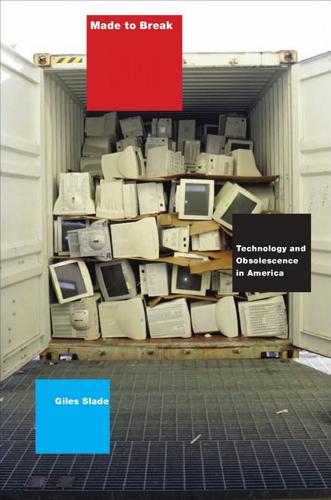
Made to Break: Technology and Obsolescence in America
by
Giles Slade
Published 14 Apr 2006
He chose Great Neck because it was well away (seventeen miles) from the hustle and bustle of his Manhattan apartment. After that firs internment, Ben wanted a home with the ample space and privacy he had dreamed about as a boy. Like many other upwardly mobile Americans of the 1930s, he was drawn to the openness and seclusion of Wright’s Usonian homes, and it is not difficul to imagine why. Alfred Levitt paid $10,000 to observe Wright’s construction of the Rehbuhn home. He knew that open-plan Usonian houses would be popular with the same upwardly mobile second-generation families who had bought the two hundred homes in Strathmore-at-Manhasset that the Levitts had built in 1934. But the ideas Alfred took away from Great Neck allowed him—ten years later—to design even simpler houses for the company’s veteran and working-class clientele.
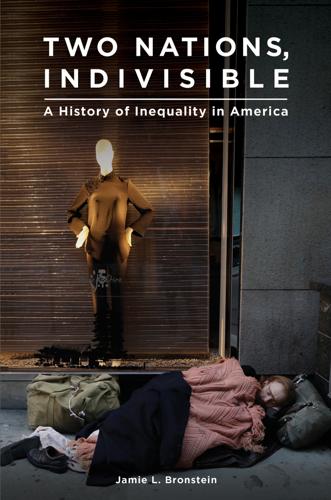
Two Nations, Indivisible: A History of Inequality in America: A History of Inequality in America
by
Jamie Bronstein
Published 29 Oct 2016
At the same time, a critique of inequality has also been ubiquitous, growing louder during some periods (the Depression years, for example) and more muted in others. Cyclically, the topic of inequality in the United States has emerged again in the twenty-first century. The New York Times in 2005 ran a series of articles on class, pointing out for its readership that, contrary to popular belief, the United States is not the most upwardly mobile country in the world.9 A number of recent books question the notion that deregulation, budget cuts to safety nets, free trade promotion, and privatization have promoted growth to benefit all.10 Despite its length and serious subject matter, economist Thomas Piketty’s Capital in the Twenty-First Century (2014) was widely read and reviewed.
…
Blue-collar white workers who had their own modest homes saw any black movement into these neighborhoods as detrimental to their property values.19 Even when African Americans could get their mortgages guaranteed by the federal government, as with GI Bill–entitled veterans, banks were reluctant to extend credit. The upwardly mobile black middle class pushed the boundaries of urban settlement, leaving behind the poorest black people concentrated in areas that then became neglected ghettoes. The construction of highways, and “urban renewal” without replacement of destroyed housing, left formerly prosperous black neighborhoods disconnected and devastated; evicted residents had nowhere to live.

Zeitgeist
by
Bruce Sterling
Published 1 Nov 2000
We can move to a better apartment. I’ll get out of this high-risk package-retailing on a stick-’em-up urban street corner. That’s way too twentieth century, anyway. I’ve got some plans for us: I’m thinking: four or five personal eBay accounts, and some Internet-stock daytrading. We’ll get all upwardly mobile, middle-class-American-Dream style. We can buy health insurance. We’ll eat vitamins. You’ll grow up tall and strong and literate, with fluoride in your big white teeth, and no scars and no criminal record. And the best part is: since we’ve placed ourselves in a yuppie town right into the fat center of a major demographic median, we’re practically certain to slide right through Y2K!”
…
He never spoke to Zeta, but he would take occasional snapshots with telephoto lenses. In her prim little uniform Zeta was actually showing up on camera now, a very good sign, considering her career intentions. Starlitz compiled extensive dossiers on her teachers. It was a form of subtle revenge on them, for turning his daughter into an upwardly mobile princess who would come to think of her dad as some kind of antique grease-monkey hick. Spying and stalking left him a hollow man without a life, but this situation had its rewards. He was getting along fine, at continental distance, with Mom One and Mom Two. Vanna and Judy were still on the splits and not speaking to each other, but they both seemed to be down with the Swiss-boarding-school notion, probably because it was so utterly unlike him.

This Is Your Country on Drugs: The Secret History of Getting High in America
by
Ryan Grim
Published 7 Jul 2009
No longer is it primarily an exotic and ballyhooed indulgence of high-gloss entrepreneurs, Hollywood types and high rollers, as it was only three or four years ago—the most conspicuous of consumptions, to be sniffed from the most chic of coffee tables through crisp, rolled-up hundred-dollar bills. Today, in part precisely because it is such an emblem of wealth and status, coke is the drug of choice for perhaps millions of solid, conventional and often upwardly mobile citizens—lawyers, businessmen, students, government bureaucrats, politicians, policemen, secretaries, bankers, mechanics, real estate brokers, waitresses. Time’s Michael Demarest was nearly as good a pitchman for cocaine as Leary:Superficially, coke is a supremely beguiling and relatively risk-free drug—at least so its devotees innocently claim.
…
During its high-priced heyday, however, coke was known as a professional’s drug—as Suarez De Jesus observed. Employees of the legal service industry benefited from this product of the illegal service industry as they worked long hours in their burgeoning sector of the economy. Its exclusivity evoked a cloistered world that both the upwardly mobile and the severely impoverished dreamed of being a part of. Unemployment had climbed in the late seventies as plants shut down and American cities crumbled. Stagflation meant that wages and job growth were falling while prices were rising—a phenomenon that some economists had thought impossible.
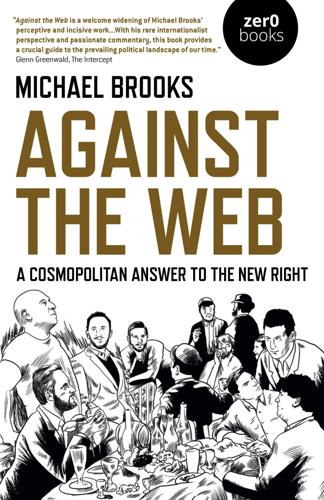
Against the Web: A Cosmopolitan Answer to the New Right
by
Michael Brooks
Published 23 Apr 2020
It’s important to emphasize, though, that while social democracy is an immensely valuable step in the right direction—especially in a world ravaged by decades of neoliberalism and US-led militarism—for two reasons it ultimately won’t be enough. The first reason is ideological. Why should anyone accept an economic order in which a minority of the population has the resources to own businesses and everyone else has to submit to their authority for (at least) eight out of every 16 waking hours? (Yeah, yeah, some people are upwardly mobile, but there are only so many lifeboats to save the working class. We can’t all be athletes, business prodigies, or even podcasters and YouTube talk show hosts.) And contrary to the delusions of the #YangGang, the combination of robots and a Universal Basic Income isn’t going to result in any kind of desirable alternative.
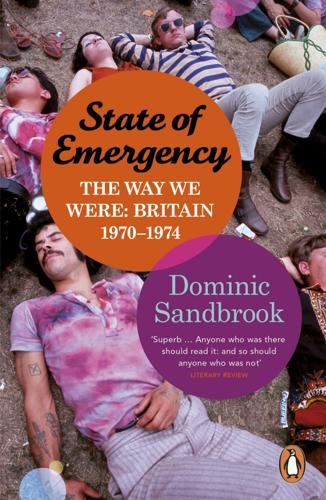
State of Emergency: The Way We Were
by
Dominic Sandbrook
Published 29 Sep 2010
They lived as their parents had done: ‘the housing was appalling,’ he wrote later, ‘the dirt indescribable.’ Smoke hung over the city’s rooftops; soot stained its great Victorian town hall. Healey’s very first campaign headquarters was ‘a condemned terraced house of unimaginable squalor, with a lavatory outside which was full of filth and would not flush’. The contrast with Bexley’s neat, upwardly mobile suburban estates was stark indeed.11 By 1970, however, Leeds bore the imprint of the affluent society just as deeply as the suburbs of the South. The clothing and engineering industries responsible for so many local jobs were already suffering from inadequate investment and global competition, their travails symptomatic of the growing problems of the British economy.
…
The Sun even had a dedicated department of female journalists nicknamed the ‘Pacesetters’ who were given their own section, called ‘the pages for women that men can’t resist’ – although in practice their stories tended to be even more skewed towards sex than the rest of the paper.28 And then, of course, there was Cosmopolitan. Launched in 1972 as an offshoot of the American original, this was a woman’s magazine with a difference, aimed not at the housewives who had traditionally made up the women’s market, but at upwardly mobile, ambitious young professionals. Its ideal reader was ‘lively, sensual, fun, adventurous … honest with herself’, or so the adverts claimed. Its first editor, Joyce Hopkirk, made no secret of the fact that sex and men were central to her strategy: as one early reader put it, the first issue read as ‘a guide to getting, keeping (and if necessary getting rid of) your man’.
…
The Times, 12 November 1970, 7 December 1970, 8 December 1970; Campbell, Edward Heath, pp. 329–30; Tony Benn, Office Without Power: Diaries 1968–72 (London, 1988), p. 318; Hurd, An End to Promises, p. 99. 33. The Times, 9 December 1970, 10 December 1970. 34. The Times, 10 December 1970; Norman Tebbit, Upwardly Mobile (London, 1988), p. 102. 35. The Times, 12 December 1970, 14 December 1970, 19 January 1971; PRO CAB 128/47, CM (70) 44, 8 December 1970; PRO CAB 128/47, CM (70) 46, 12 December 1970; Christopher Andrew, The Defence of the Realm: The Authorized History of MI5 (London, 2009), pp. 589–90; PRO CAB 128/47, CM (70) 47, 14 December 1970. 36.

The Coming of Neo-Feudalism: A Warning to the Global Middle Class
by
Joel Kotkin
Published 11 May 2020
But in the feudal era a static ideal of an ordered society, supported by a mandatory orthodoxy, prevailed over dynamism and mobility, in a condition of economic and demographic stagnation. The clearest parallel in our own time is the concentration of wealth in fewer hands, following upon an era of robust social mobility. In the second half of the twentieth century, growing prosperity was widely shared in the developed world, with an expanding middle class and an upwardly mobile working class—something seen in many developing countries as well. Today, the benefits of economic growth in most countries are going mainly to the wealthiest segment of the population. One widely cited estimate suggests that the share of global wealth held by the top 0.1 percent of the global population increased from 7 percent in 1978 to 22 percent in 2012.2 A recent British parliamentary study indicates that this global trend will continue: by 2030, the top 1 percent is expected to control two-thirds of the world’s wealth.3 This wealth tends to be handed down from one generation to the next, creating something akin to a closed aristocracy.
…
In Europe as well as Japan, and even in the once relatively fecund United States, fertility rates are nearing historic lows, even though young women state a wish to have more children.29 This demographic stagnation, another throwback to the Middle Ages, has various explanations, including women’s high levels of participation in the workforce and a desire for more leisure time. Other reasons are economic, including a shortage of affordable family housing. Liberal capitalism in its heyday built large stretches of affordable housing for the upwardly mobile middle and working classes, but the new feudalism is creating a world where fewer and fewer people can afford to own homes.30 A trend of diminishing expectations has weakened support for liberal capitalism even in solidly democratic countries, particularly among younger people.31 Far more than older generations, they are losing faith in democracy, not only in the United States but also in Sweden, Australia, Great Britain, the Netherlands, and New Zealand.

The Mutant Project: Inside the Global Race to Genetically Modify Humans
by
Eben Kirksey
Published 10 Nov 2020
“After he started university, every time he came back to the village, everyone wanted to meet him and hear his tips for good grades,” his father told the Beijing News. On one visit home he officially began to date Yan Zeng, his crush from high school, who was a student at Hunan University in the provincial capital. When both of these upwardly mobile young professionals went to the United States to continue their education, their local renown continued to grow. Jiankui secured a scholarship for a PhD in physics at Rice University, in Houston. Yan Zeng landed a spot at Texas Southern University, with a campus just a few minutes away. At Rice University he began working under Michael Deem, a professor whose interdisciplinary work spans the fields of physics, chemistry, and biological engineering.
…
International and interracial marriages were legalized by the Communist Party only in 1983.9 (In the United States, miscegenation laws were repealed by the Supreme Court in 1967.) If genetic surgery is ever offered at HarMoniCare Hospital or other facilities in mainland China, few locals would be likely to choose a new eye color like blue or green for themselves or their children. This would mark them as “foreign,” rather than upwardly mobile East Asians. At the hospital I did not find evidence of a secret plot to create a new master race, but instead a place where the lines between health care and enhancement were being blurred by established technology. Profit-driven medicine was ushering CRISPR into the clinic at a place where ideas about race and beauty were being remade by market forces and consumer demands.
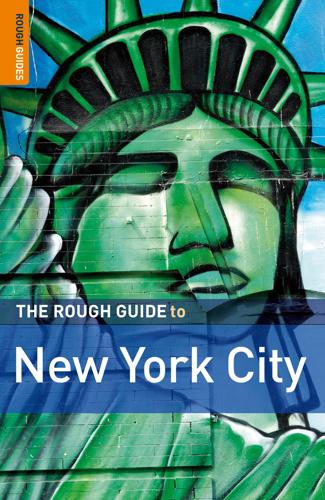
The Rough Guide to New York City
by
Martin Dunford
Published 2 Jan 2009
Nowadays, however, the gay community is fairly synonymous with Greenwich Village life; for complete listings of gay bars and clubs, see p.375 and p.377. The area north of Christopher Street contains some of the most appealing and expensive residential streets in the city, with a bevy of unique stores, coffee bars, and restaurants catering to its upwardly mobile and moneyed residential community. The Village Vanguard (see p.356), at 178 Seventh Ave, has been a jazz mecca since 1935, a live venue which has played host to every major jazz star and where Sonny Rollins and John Coltrane made classic album recordings in the 1950s and 1960s. Further west, you’ll probably see small groups of excited fans taking photos at 66 Perry St, between Bleecker and West 4th Street, used as the exterior of Carrie’s apartment in Sex and the City (“Carrie’s Stoop”), while almost constant lines form outside lauded Magnolia Bakery at Bleecker and West 11th St (see p.295).
…
Only forty years later, the signs of its hip economic heyday are already long gone, and this is now one of the cheaper residential areas in the city. The proliferation of small apartments (as well as a generous number of hip restaurants and sports bars) means that the East 60s and 70s are home to a number of young, unattached, and upwardly mobile professionals – for some years now it has been one of the more popular areas with just-out-of-college types looking to make their start in the business world. Dozens of foreign consulates to the United Nations are scattered on Upper East Side blocks in this area: many countries – including the poorer ones, spending more than they can afford – have purchased handsome homes.
…
In between is a checkerboard of modern high-rise buildings, old brownstones, gourmet markets, and | The Upper West Side hile the Upper East Side has always been a patrician stronghold, the Upper West Side, only minutes away on the other side of the park, has grown into its position as a somewhat younger, somewhat hipper, but nonetheless affluent counterpart. Later to develop, it has seen its share of struggling actors, writers, and opera singers come and go over the years. In the 1990s, the Upper West Side was the neighborhood of choice for upwardly mobile dot-commers, and though the frenzy has calmed down, young professionals and their stroller-bound children still make up a sizable part of the population. This isn’t to say it lacks glamour; the lower stretches of Central Park West and Riverside Drive are quite fashionable, while the network of performing spaces at Lincoln Center makes the neighborhood New York’s de facto palace of culture.

The Culture of Narcissism: American Life in an Age of Diminishing Expectations
by
Christopher Lasch
Published 1 Jan 1978
only one of a number of social influences that are bringing a narcissistic type of personality organization into greater and greater prominence. Another such influence is the mechanical reproduc- ' " " " mobility is more than mere job performance. What counts is style . . . panache . . . the ability to say and do almost anything without antagonizing others. The upwardly mobile executive, according to Jennings, knows how to handle the people around " " " " him-the "shelf-sitter" who suffers from "arrested mobility and fast learner"; the "mobile superior." The mobility-bright executive has learned to "read" the power rela- envies success; the " " " to see the less visible and less audible side chiefly their standing with their peers and supe- tions in his office and of his superiors, riors
…
" " - goals, but keeping the organization going, became the important " interests him is that "relevant audiences," in the language of the thing. Even the welfare of the organization however, no longer Pentagon Papers, have to be cajoled, won over, seduced. He con- excites the enthusiasm it generated in the fifties The "selfsacrificing company man writes Jennings, has become "an obvious anachronism. The upwardly mobile corporate executive does not view himself as an organization man His "antiorganizational posture in fact, has emerged as his "chief char- fuses successful completion of the task at hand with the impression he makes or hopes to make on others. Thus American officials blundered into the war in Vietnam because they could not ,

Flight of the WASP
by
Michael Gross
The industrialists and financiers who built and ran America, men like Cornelius Vanderbilt, J. Pierpont Morgan, and Henry Ford, and the lawyers who protected them? WASPs. Until the third decade of the twentieth century, just about every person with power and influence in the United States was a WASP—or else a convert. Into the 1980s, the upwardly mobile wanted to wear the same clothes, go to the same schools, join their clubs, and move on up to their exclusive neighborhoods. That can’t be said anymore. The Anglo-American elite has drifted from American centrality to the periphery. States have been run by Jewish and Catholic governors throughout American history, beginning with Thomas Dongan, who was appointed governor of the Duke of York’s Province of New York in 1683.
…
By then, Gouverneur Morris’s Erie Canal, which followed the route of the Mohawk River through Amsterdam, had put the town on the map of American commerce. John, a partner in a carpet company, also served a term in Congress. In Connecticut, John’s brother Nehemiah married Nancy Shelton, who was descended from the first royal governor of Connecticut. Their first child was Henry, the future minister to Belgium, born in 1823. Theirs was an upwardly mobile clan. Nehemiah, self-made and driven, an upper-middle-class merchant, and by the 1830s a state senator, bought land in Michigan, and in 1836 he organized the Shelton Tack Company with a brother-in-law before dying in 1841, leaving Henry $100,000. Henry Shelton Sanford, lonesome, bookish, and entranced by tales of knights and maidens, was educated in the classics by private tutors, then attended Episcopal Academy in Philadelphia, and was introduced to his family’s business interests at age fourteen on a trip to inspect his father’s Michigan property.
…
And that role carried clout in a world newly connected by railroad tracks and telegraph wires, which accelerated communication and connected disparate populations into a national audience for increasingly influential newspapers and magazines. Ralph Waldo Emerson, in his 1860 essay “Representative Men,” chose Napoleon Bonaparte as a somewhat ironic embodiment of democracy in the Jacksonian Age, writing, “such a man was wanted, and such a man was born.” Napoleon shared with America’s upwardly mobile masses “their virtues and their vices; above all, he had their spirit or aim. To be the rich man, is the end.”68 Whether or not he read Emerson, McAllister understood that point in his bones, and he helped create a new class of celebrities, who became willing, even eager, performers on the American stage.

Polaroids From the Dead
by
Douglas Coupland
Published 1 Jan 1996
Brentwood is a region of Los Angeles that speaks eloquently of the amorality of cash in its inability by itself to act as a narrative stencil to life. Money is an invention just as much as is a spoon or a plate, and as such is neither moral nor immoral, it is simply an invention like the toaster or the zero. This is always a shock to learn, for Brentwood’s first or second generation of upwardly mobile, brood-spawning wealth. What seems to leave its inhabitants almost naïvely stunned is the emptiness of the money once it arrives; its inherent disconnection to morality. Neither fame nor money add storyline to one’s life. This is, since biblical times, the irony of human pursuit and a torpid punchline enacted daily amid Brentwood’s salons, cafes and spotlessly clean, freshly beflowered households.

Pocket Berlin
by
Andrea Schulte-Peevers
Published 15 Mar 2023
The best time to come, though, is between 5pm and 10pm on Thursday when international kitchen wizards set up stalls and dish out mouth-watering street food. Entertainment 3Lido Berlin LIVE MUSIC map Google map A 1950s cinema has been recycled into a rock-indie-electro-pop hub with mosh-pit electricity and a crowd that cares more about the music than about looking good. Global DJs and talented upwardly mobile live noisemakers pull in the punters. (www.lido-berlin.de) 3Ballhaus Naunynstrasse THEATRE map Google map This fringe theatre in a repurposed 19th-century ballroom presents cutting-edge and often provocative intercultural plays with a focus on the perspectives of Black people, people of colour and queers.

The Diet Myth: Why America's Obsessions With Weight Is Hazardous to Your Health
by
Paul Campos
Published 4 May 2005
Researchers have been unable to find a relationship between increased mortality and body mass among African-American women who are classified as “morbidly obese.”) Anyway, obesity researchers and diet companies are doing their best to change this unacceptable situation. In recent years, companies such as Weight Watchers and Jenny Craig have targeted much of their advertising specifically toward upwardly mobile black and Hispanic women, since, as Laura Fraser puts it, most white women already “can’t make it through a day without getting disgusted with themselves for not having a better—meaning thinner—body.” As for obesity researchers, a recent article noted that black girls have better body images and lower rates of eating disorders than white girls, and also noted that they weighed more.
…
Similarly, the same social dynamic that, as we shall see in the next chapter, made law professor and political commentator Susan Estrich’s mother so determined that her daughter would not return “fat,” for her sophomore year at Hillary Clinton’s alma mater also ensured that Marcia Lewinsky would attempt, two decades later, to send her daughter to a month-long inpatient program that would quite literally starve her down to a socially acceptable weight. These are merely two 198 Fat Politics examples of how, for many upwardly mobile Jewish families, fatness represents what it also represents to, among others, ambitious smalltown Southern politicians, and professional-class members of ethnic minorities: the most visible and therefore unacceptable sign that you are still on the outside looking in. (In her diet book Making the Case for Yourself, Estrich describes what to her is clearly a disturbing sight: “My neighborhood is full of Orthodox Jewish women with four children and forty extra pounds.”)
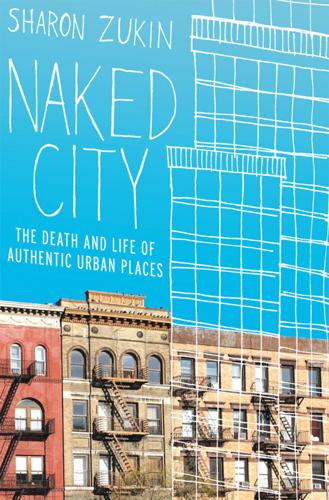
Naked City: The Death and Life of Authentic Urban Places
by
Sharon Zukin
Published 1 Dec 2009
“Gritty” describes both the style and substance of old black-and-white films, especially the film noir movies made in New York and Los Angeles in the late 1940s and 1950s, films that suggested the alienation of the individual in modern cities and those cities’ tragic loss of power to younger, more prosperous suburbs. The noir image suits a narrative of Brooklyn’s economic decline, from the shutdown of the port and Navy Yard in the 1960s and the abandonment of the breweries to the changing social geography of upwardly mobile white ethnic groups who gradually left the borough’s tenements and brownstones for high-rise apartments in Manhattan and split-level houses in the suburbs. “Gritty” is the word for what they left behind: crowded streets, rising crime rates, and blue-collar lives.23 By the 1970s the term was commonly used to describe factory towns and urban neighborhoods that were squeezed by plant shutdowns and outsourcing of the basic manufactured goods, from textiles to steel, that had supported American families for so many years.
…
Before 1980 white twenty-somethings tended to be working-class youths who lived in traditional white ethnic neighborhoods like Bensonhurst and Bay Ridge: the urban village. After 1980 these nodes of youthful whiteness disappeared with the aging of the white population and the suburban migration of the upwardly mobile among them, along with growing Caribbean, Latino, Asian, and African immigration; Brooklyn became blacker and browner. By 2000, though, the map of Brooklyn showed young white adults living in different places: the three creative neighborhoods—Williamsburg, Park Slope, and Dumbo—that represent a new, more affluent, and more aesthetically attuned “urban village.”36 Most people call this gentrification.
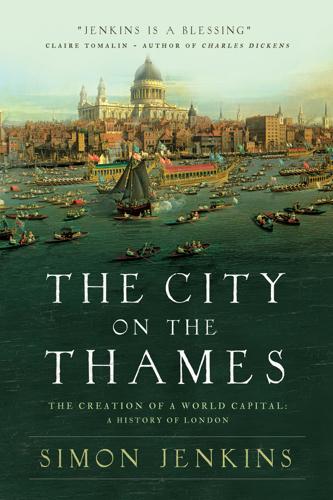
The City on the Thames
by
Simon Jenkins
Published 31 Aug 2020
It began to standardize into a demotic deadening of ‘received pronunciation’, as it acquired elements of so-called ‘estuary English’. BBC newsreaders spoke in cadences quite different from a quarter-century before. Yes became yeh. Consonants were dropped and slang, even swear words, entered daily speech. The subjects of Caryl Churchill’s satire on the period, Serious Money, were not ‘toffs’ but upwardly mobile ‘yuppies’. The new vulgar was pink champagne and a Porsche, the new leisure venues east not west of the City, notably in the burgeoning neighbourhoods of Hoxton and Shoreditch. One consequence was a shift in political allegiances. London’s working class was moving rightwards and a middle class of civil servants, academics, the media and ‘creatives’ moved to the left.
…
G. 217; Tono-Bungay 211 Welwyn Garden City 251 Wembley 231–2 Wentworth, Thomas (later 1st Earl of Strafford) 63 Wesker, Sir Arnold 261 Wesley, John 109 West Cross Route (dual-carriageway road) 280 West Ham 275 West Ham United (football club) 328 West Hampstead 181 West India Dock 131, 293 West Indian immigrants 261, 271, 275 West Square (Lambeth) 120 Westbourne Gardens estate 271 Westbourne Grove 181 Westbourne stream 139, 140, 168 Western Avenue 228 Westminster, City of: 17th century 59, 60, 61–2, 63, 70–73, 83–6, 91; 18th century (early) 94–5; 1960s and 1970s 262–3, 264, 268, 270, 281–5; 1980s and 1990s 283; 21st century 306–7, 323, 325, 338–9; Edwardian 196–7, 198–200; Georgian 99–104, 110, 115, 119–20, 123–6; interwar 219–22, 225, 227–8, 230; Norman and medieval 27, 31; origins 21–3; post-war 245, 249–50, 252, 255–9; Regency and under George IV 132–6, 139–47, 148; Second World War 236, 245; topography 8; Tudor 41–2, 45; Victorian (early) 153–4, 163–7, 168, 169; Victorian (late) 176, 177, 179, 184–5; under William IV 151, 152–3, 154 Westminster, Hugh Grosvenor, 2nd Duke of 220 Westminster Abbey: 17th century 63, 64, 65; 18th century 99; 19th century 177; foundation by Edward the Confessor 22, 23, 25; Norman and medieval 25, 30–31, 34, 36; site 21–2; Tudor 40, 41, 153 Westminster Bridge 82, 113, 114, 120, 127, 147 Westminster Cathedral 198 Westminster Hall 27, 31, 63, 152; see also Palace of Westminster Westminster Paving Act (1762) 119–20 Westminster station 294 Westphalia, Peace of (1648) 66 Westway (dual-carriageway road) 279–80 Whistler, James McNeill 186, 203 White, Jerry 216, 231 White Tower see Tower of London Whitechapel 185, 207, 208, 256, 275; Bloom’s restaurant 207 Whitehall 70, 120, 146, 283; Foreign Office 176, 283; Treasury building 198, 283; War Office 199 Whitehall Palace 41, 45, 51, 60, 85–6, 91, 99; Banqueting House 59, 66, 85, 86; see also York Place Whiteley, William 180–81 Whiteley’s (department store) 180–81 White’s (club) 137 Whittington, Richard 38–9, 50 Whittington Hospital 39 Whittlesey Street 185 Wickhams (department store) 181 Wilberforce, William 136 Wilde, Oscar 182, 200 Wilkes, John 116–17, 119 Wilkins, William 146 William I, King 22, 24, 26–7 William III, King (earlier Prince of Orange) 88–91, 96, 98 William IV, King 150 William Rufus (later King William II) 27 Williams, Raymond 105 Williams-Ellis, Sir Clough 210 Willmott, Peter 265–6 Wilson, Harold, Baron Wilson of Rievaulx 276 Wimbledon 210 Wimpole Hall 102 Winchester 21, 25, 28 Windmill Theatre 236 ‘Windrush’ immigrants 275 Windsor Castle 64, 146, 166 Wine, Bishop of London 18 ‘winter of discontent’ (1978–79) 276 Wintour, Charles 282 Wittenberg 44 Woburn Square 284 Wollaton Hall 52 Wolmar, Christian 204 Wolsey, Thomas 43–4, 45 women: employment 111, 206, 215, 218; social life 53–4, 128, 188; in theatre 67, 70; voting rights and political life 177, 191, 218 Wood Green 317 Woodford 207, 210 wool trade 32, 40 Woolwich 175, 225, 230, 281, 317; Arsenal 215; Thames Barrier 281; town hall 201 Wordsworth, William 127, 129 workhouses 46, 119, 152, 161, 176, 215, 224 World Bank 239 Worms 38 Wren, Sir Christopher 70, 85, 95, 105, 258, 338; plan for post-fire reconstruction 77, 78–9, 80–81, 83, 120, 133, 134, 173, 243, 244; City churches 80–81, 136, 198, 338; St Paul’s Cathedral 80, 81–2; Kensington Palace 91, 97 Wright, Patrick 266, 301 Württemberg, Frederick, Duke of 53–4 Wycliffe, John 38, 44, 109 Wykes, Thomas 31 Wyndham Place 137 Wyngaerde, Anthonis van den 50, 51, 63 Yerkes, Charles Tyson 202–4 Yes Minister (television series) 279 York 10, 17, 24, 37; Jorvik Viking Centre 14 York Place 41, 42, 45; see also Whitehall Palace Young, Michael, Baron Young of Dartington 265–6 Young, Simon, AD 500 16 youth culture 248, 261, 262, 318 ‘yuppies’ (young upwardly-mobile professionals) 299–300 Zamoyski, Adam 172 Zeppelins 216–17 zoos 30, 103; London Zoo 135, 147 THE CITY ON THE THAMES Pegasus Books Ltd. 148 W 37th Street, 13th Floor New York, NY 10018 Copyright © 2020 Simon Jenkins First Pegasus Books cloth edition September 2020 All rights reserved.
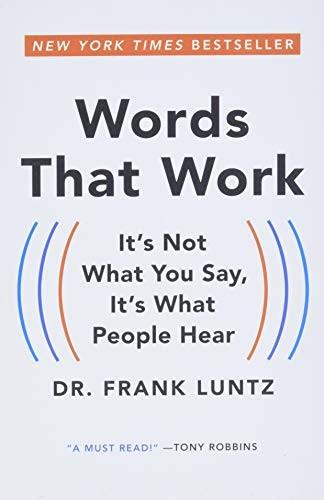
Words That Work: It's Not What You Say, It's What People Hear
by
Dr. Frank Luntz
Published 2 Jan 2007
They are sacrificing the ease of close-in conditions in favor of younger, slower communities, for the purpose of pursuing a version of the American Dream that more closely resembles the life of Ward and June Cleaver in what the suburbs used to be, rather than Al and Peg Bundy’s suburban life today. Welcome to exurbia, a marketer’s dream. New homes, manicured lawns, smart people, high discretionary incomes, and all the trappings of upwardly mobile families. Exurbia is such a new phenomenon that its residents aren’t yet fully aware of their own existence as a unique demographic group with a language all its own. If you’re reading this book and you live in a housing development that is twenty to forty miles away from a city center and was built within the past twenty years—you too may be a resident of exurbia.
…
They want serenity and security, not risks or revelations. To them, a Hallmark card is not a “moment,” it’s a way of life. Exurbia is small town, Main Street USA, even if it’s not authentic and was only manufactured to look that way. It is neither rural nor suburban. Think of the exodus to the exurbs as a “return to normalcy”—upwardly mobile young families projecting themselves forward . . . into the past. They are not trying to live their parents’ lives; they are trying to live their grandparents’ lives. Their communities, their values, and their aspirations recall an older, idealized age that may never have really existed for most people outside of Norman Rockwell paintings and Frank Capra movies.

Stuck: How the Privileged and the Propertied Broke the Engine of American Opportunity
by
Yoni Appelbaum
Published 17 Feb 2025
Because however rarely he explicitly acknowledged it, Cheney’s objections were less about the forms that buildings took than about the people they housed. He held no principled objection to height. His architectural office was in an eleven-story building in San Francisco, one of the city’s first steel-framed skyscrapers. But when he commuted back across the bay, he wanted to return to a city of respectable homeowners, not one filled with upwardly mobile migrants trying to replicate the success Cheney and his present neighbors had achieved. “Evidently the job of the city planning commission was to protect these great numbers of blocks of home owners from the invasion of flats and apartments, with their renter and floater population,” he wrote.
…
What the Jews of the Lower East Side and their neighbors from Italy and Ireland needed to succeed were higher wages; less discrimination; fast, cheap public transit; antibiotics; and a little time. What they got, instead, was continued exploitation, discriminatory laws, and zoning. But in 1910, when native-born New Yorkers looked at the Lower East Side, they couldn’t see a neighborhood teeming with upwardly mobile immigrants who would soon disperse across the metropolitan area, enriching their city and its culture. They couldn’t see a strange, anomalous place, born of a unique confluence of circumstances, never to be replicated. Instead, they saw a nightmarish vision of their future, a festering sore that was sprawling outward, destroying everything it touched, slowly devouring their city.

Migrant City: A New History of London
by
Panikos Panayi
Published 4 Feb 2020
Leon, Lewis, David and Charles Spiro, originally from Wloclawek, all described themselves as ‘waterproof manufacturer’, together with Leon Fauber, a lace importer, and Josef Getcofsky, a dentist in Holloway Road.26 A final sample of thirty from 1935 reveals that the Germans had almost disappeared, counting just two people in the form of Alfred August Eicher, a chemical engineer living in Wimbledon, and Mary Katherine Knornschild, a shorthand typist from Highgate. The list also includes eleven Russians, by now the largest group, who appear to consist predominantly of upwardly mobile Jews such as Reuben Bozinsky, a master tailor from Greenwich, and Nathan Hyman, a boot and shoe dealer from Cricklewood. However, we should also mention Jankel Joseph Bialsky, a ‘music composer and choir master’ of Vestry Road, London N15. Those becoming naturalized in 1935 also included refugees from the Russian Revolution such as Marguerite Rastedt, a teacher from Clapham Common, ‘of no nationality (but born in St Petersburg)’, and Julia Kaufman, an accountant from Stoke Newington ‘of no nationality but born in Balta, Ukraine’.
…
On the one hand this finds explanation in the fact that those who travelled to Britain from imperial territories would have had British citizen or subject status.28 However, the absence of US applicants seems surprising, especially in view of the fact that an American middle-class community appears to have evolved in London by the period under consideration.29 While, on the one hand, many of those who succeeded in gaining British citizenship may merit the description of elites, such as merchants, industrialists, teachers and artists, attracted by the global significance of the London economy in the case of the first two and the presence of a large educated middle class in the last two, upwardly mobile foreigners also tried to obtain naturalization. At the same time, some clearly working-class people also managed to secure citizenship, including, for example, Nils Laurentius Svenson, a Swedish ‘donkeyman and greaser’ from Limehouse who became naturalized on 24 April 1935.30 On the other hand, despite their numbers and significance in the City of London, few bankers appear to have become British, perhaps seeing no benefit in this status because of the international nature of their activities.
…
FIGHTERS The British, London and global history of football takes off in its current organized and regulated form from the end of the nineteenth century.12 However, the issues which arise with regard to migrant and minority participation on the London scene emerged over a hundred years earlier in the sport of boxing during the ‘English Golden Age’,13 initially in the form of bare-knuckle fighting.14 In the late eighteenth and early nineteenth centuries both upwardly mobile second-generation sporting migrants and black foreigners played a role in London fighting, setting the pattern which would last into the twentieth century and beyond and replicated by football. ‘The participation of minorities in boxing started almost with the inception of the sport in the eighteenth century and prevails (with various peaks and lows) until today’,15 but so does the presence of outsiders, especially black men, who arrived in Britain and London, sometimes already as stars, to take the boxing scene by storm.

Lonely Planet Pocket Berlin
by
Lonely Planet
and
Andrea Schulte-Peevers
Published 31 Aug 2012
(www.magnet-club.de, in German; Falckensteinstrasse 48; Tue-Sat; U-Bahn Schlesisches Tor) 16 Lido Live Music, Club Offline map Google map A 1950s cinema has been recycled into a rock-indie-electro-pop mecca with mosh-pit electricity and a crowd that cares more about the music than about looking good. Global DJs and talented upwardly mobile live noisemakers pull in the punters. Legendary Balkanbeats parties, too. (www.lido-berlin.de, in German; Cuvrystrasse 7; U-Bahn Schlesisches Tor) Local Life All Aboard the Badeschiff Take an old river barge, fill with water, moor in the Spree River and voila: the Badeschiff (www.arena-berlin.de, in German; Eichenstrasse 4), the preferred swim-and-tan spot for Berlin kool kids.

The Regency Revolution: Jane Austen, Napoleon, Lord Byron and the Making of the Modern World
by
Robert Morrison
Published 3 Jul 2019
he asked, after watching one of the jugglers keep four brass balls in the air at the same time.45 Portable box theaters on sticks known as “peep shows” or “raree-shows” were among the most popular street entertainments, and exhibited puppets, rarities, and pictures, louche in some instances, but more commonly elegant or patriotic. Leading holiday destinations included the seaside resort of Margate in Kent, which Londoners reached by taking a hoy (a small ship) down the Thames, and which gave them the chance to breathe some fresh air. Margate appealed to the genteel and the upwardly mobile, but even fun seekers on much lower rungs of the social ladder could afford to make the trip, creating plenty of social awkwardness as the rich and poor, the high and low, the sick and sound all jostled onboard together. “The passage in the Margate-hoy, which, like the grave, levels all distinctions, is frequently so replete with whim, incident, and character, that it may be considered as a dramatic entertainment on the stage of the ocean,” wrote John Feltham in his 1815 Guide to all the Watering and Sea-Bathing Places.46 In Margate itself, though, the emphasis was on refinement and relaxation, and options for holidaymakers included fine hotels, beautiful walks, a theater, bathing rooms and machines, commodious shops, day trips to nearby resorts, and elegant assembly rooms.
…
More than 10,000 people a day flooded the exhibition, and when Bullock took the show on the road he did equally well, attracting across England, Scotland, and Ireland upwards of 800,000 people, for “old and young, rich and poor, clergy and laity, all ages, sexes, and conditions” were eager to examine “the spoils of the dead lion.” 54 Art galleries reached a new cultural prominence, extending their hold on noble patrons and attracting the upwardly mobile in ever-increasing numbers. During the Regency, the annual exhibitions of the Royal Academy and the British Institution featured paintings by an extraordinary collection of living artists, including John Constable, Edwin Landseer, Thomas Lawrence, Samuel Palmer, Henry Raeburn, J. M. W. Turner, Benjamin West, and David Wilkie.

The End of Work: Why Your Passion Can Become Your Job
by
John Tamny
Published 6 May 2018
One has the impression that [the] young do not want to, or perhaps cannot, grow up.”6 But then the 1980s happened. The generation that was supposed to accept a lower standard of living than their parents enjoyed produced what some called the “Decade of Greed.” To this day, the enduring symbol of the 1980s is the “young, upwardly mobile professional”—the “yuppie.” The children who were supposed to do without became the generation that had everything. The economic gloom hanging over the Millennial generation is evidence that there is no new thing under the sun. Mark my words: the Millennials will wind up the richest generation in the history of the richest nation in the history of the world.
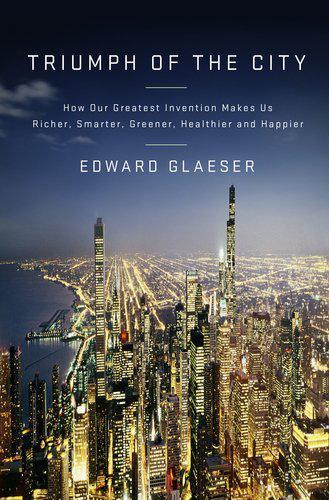
Triumph of the City: How Our Greatest Invention Makes Us Richer, Smarter, Greener, Healthier, and Happier
by
Edward L. Glaeser
Published 1 Jan 2011
Just like building a factory, enacting a law has fixed costs, so Northern racists didn’t bother to enact laws when there were only a handful of urban blacks, but as their numbers increased, so did discriminatory legislation, and Northern cities increasingly found ways to isolate their growing African-American populations. George W. F. McMechen would seem to be the ultimate upwardly mobile African American at the start of the last century. He graduated from Morgan College and Yale Law School and came to Baltimore, where he formed a successful legal practice with another African American, W. Ashbie Hawkins. McMechen wanted to live in one of Baltimore’s more affluent neighborhoods, which were in those days overwhelmingly white.
…
Ten years later, in New York City, a powerful coalition of blacks, Jews, and other ethnicities pioneered the nation’s first fair-housing law that banned discrimination on the basis of religion or race in private dwellings. Other areas followed New York’s lead, and after another ten years, a week after the assassination of Martin Luther King Jr., Congress passed the Civil Rights Act of 1968, which barred discrimination in all American housing. These legal triumphs made it possible for upwardly mobile African Americans to leave the ghetto and to move to previously all-white neighborhoods. Between 1970 and 2000, segregation declined almost everywhere in America, primarily because formerly lily-white areas acquired a few mostly well-off African Americans. Between 1970 and 1990, the segregation level of African-American college graduates declined by about 25 percent, while the segregation level of high school dropouts declined by less than 10 percent.
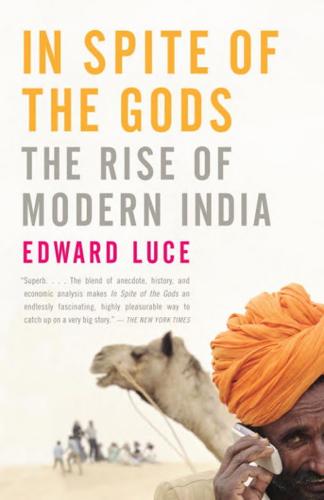
In Spite of the Gods: The Rise of Modern India
by
Edward Luce
Published 23 Aug 2006
But as we saw in chapter three, the phenomenon of “Sanskritization,” in which the lower castes copy the values and habits of the upper castes, is growing in India. Many of India’s upper castes have traditionally regarded daughters as a burden and a cost. So the problem gets worse as other castes, which in the past did not practice dowry, become more upwardly mobile. “It is a lethal combination of old values and new wealth—old wine in new bottles,” says Singh. The upwardly mobile lower castes have also become more materialistic. Nowadays it is normal for the groom’s family to demand things such as cars, washing machines, and even a U.S. green card as part of their dowries. This explains the odd tendency of newspaper columnists to blame the twin curses of the worsening gender divide and dowry inflation on Western consumer values, even though neither problem exists in the West.
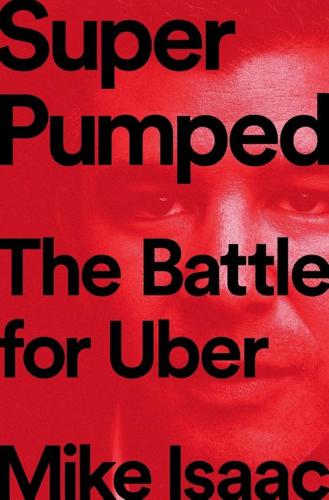
Super Pumped: The Battle for Uber
by
Mike Isaac
Published 2 Sep 2019
Instead, they imagined taking their few million from Uber and creating a unicorn of their own—for surely their success thus far showed they were destined for even greater success in the years to come. But for every WIRED cover story of a boy genius striking it rich with a smartphone app, there was a mess of secondary effects left in his wake. Many of the next generation of apps catered to the needs and whims of the white, upwardly mobile twentysomething males of Silicon Valley. The press gave significantly less ink to the latent misogyny bubbling up inside of tech companies, and the libertarian view that enabled tech figureheads to unwittingly enable these same biases. The divide between tech’s most talented, and the class who waited tables and served them coffee only grew starker by the day.
…
Chapter 15 EMPIRE BUILDING For decades, Western technology executives have dreamed of successfully launching an American software business in mainland China. Very few have succeeded. When Travis Kalanick looked at the country he saw a near-perfect market for startups. Home to nearly 1.4 billion people, China presented an untapped ocean of potential Uber users. Nearly one-third of that population were millennials: young, urban, upwardly mobile with growing disposable income, ardent students of technology and the sciences, and almost always connected online. As in America, this Chinese generation had grown up with ubiquitous access to the internet. Nearly 97 percent of Chinese internet users ages fourteen through forty-seven owned some sort of smartphone.
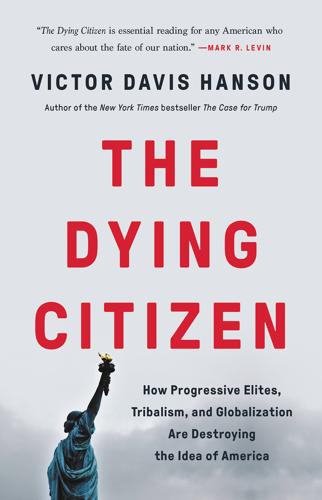
The Dying Citizen: How Progressive Elites, Tribalism, and Globalization Are Destroying the Idea of America
by
Victor Davis Hanson
Published 15 Nov 2021
Consequently, the effort to weaken citizenship has turned in part to race, because America is a fluid and often upwardly mobile society in which it is difficult to galvanize a permanent class of the oppressed. Remember also that it was once the determination of 1960s radicals that class struggle in America could not work. They confessed that communist paradigms of exploitation did not, as hoped, galvanize the supposedly oppressed proletariat. The lower middle class was too consumerist, too upwardly mobile to join college-educated leftists on the barricades, in a fluid, free market, and growing economy of the 1960s.
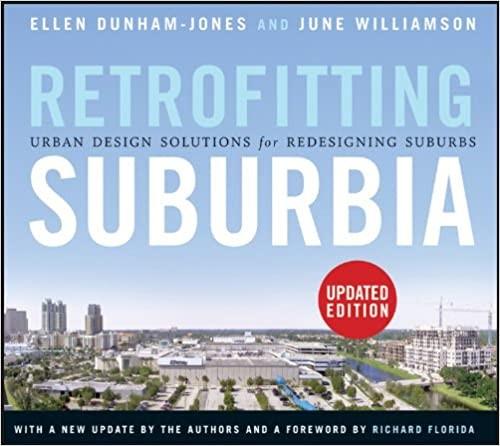
Retrofitting Suburbia, Updated Edition: Urban Design Solutions for Redesigning Suburbs
by
Ellen Dunham-Jones
and
June Williamson
Published 23 Mar 2011
Later commentators have glossed over the fact that Whyte was describing garden apartment renters, not proud new homeowners. Figure 2–14 “What makes a court clique.” In his study of postwar white-collar work and life, William Whyte documented social groupings in Park Forest apartment courts. The early residents he studied were markedly upwardly mobile, treating the apartments as a way station; this is much less true of today’s residents. (Source: redrawn from diagram in William H. Whyte, The Organization Man.) Figure 2–15 A recent view of mature gardens at apartment courts in Park Forest, Illinois. The buildings, designed in the late 1940s by Loebl, Schlossman & Bennett Architects, appear well kept, but those that remained rentals rather than becoming cooperatives are reported to have high rates of crime and the Village of Park Forest would like to see them redeveloped.
…
The residents might not be motivated for change because home values are high and Levittown, as a neighborhood within the larger municipality of Hempstead, is not dependent on local retail for tax revenue. Figure 3–8 Victorian Homes at Levittown, new subsidized housing for seniors, built on the site of a small car dealership. The new buildings fit well into the context. Park Forest, as previously noted, was a wildly successful “starter” community of upwardly mobile young families who relished the opportunity to create their community’s political and social networks and institutions.23 Today, courts that converted to cooperative ownership are well maintained, and there is a stable, if a bit sleepy, air to the town. Senior housing appears to be a pressing need, and an assisted-living facility was recently built on the site of the old Sears store.

England: Seven Myths That Changed a Country – and How to Set Them Straight
by
Tom Baldwin
and
Marc Stears
Published 24 Apr 2024
In the intense nationalism of Henry V, Shakespeare wrote about the ‘threaden sails’ and ‘lofty surge’ of the navy as his ‘band of brothers’ crosses the Channel to make war on the French who have dared to underestimate the English. Like much of his country, Drake himself used the sea as a defence against the world and a way of being upwardly mobile within it. As his fame grew, he gave English Protestants their own kind of hero, not an intellectual explorer like Raleigh, but a plain-speaking man from non-aristocratic roots, with red hair, a stocky build and piercing blue eyes. Many English people in those days were still attached to the ‘old religion’ of Catholicism, but Drake’s farming family were proudly Protestants and later had to flee Devon to escape ‘papist’ rebellions that were spreading up through the south-west.
…
Girls as young as eight had their bodies sold for sex in Castle Street, then known as ‘Damnation Alley’.77 In 1871 the home secretary claimed that in Devonport alone there were thousands of women and child prostitutes. New laws were applied to limit the spread of sexually transmitted disease not because of any concerns about their welfare but because of ‘naval imperatives to efficiency’.78 It was around this time that all the different faces of Francis Drake – pirate, patriotic Protestant, upwardly-mobile trader, explorer and hero-admiral – began to merge into a bigger myth about England and Englishness. Inland from Plymouth, through Drake’s hometown of Tavistock and across the wildness of Dartmoor to the north-facing coast of Devon, is a village that occasionally features as a quiz question as the only place in England with an exclamation mark in its name.

The Border: The Legacy of a Century of Anglo-Irish Politics
by
Diarmaid Ferriter
Published 7 Feb 2019
She also maintained it was about class: ‘the hungry streets of Derry meeting the comfortable affluence of Dublin 4’ (a postcode associated with the wealthy Irish establishment).29 This, however, was a conveniently selective interpretation. Mary McAleese, a native of County Down, after a vitriolic election campaign in which she was somewhat under siege for being what one journalist called an ‘upwardly mobile Northern Gael’ and whose own journalistic career had been stymied in the South partly as a result of her perceived Ulster nationalist sympathies, had been comfortably elected president of Ireland in 1997 on a ‘bridge-building’ theme, promising to reconcile unionism and nationalism. Despite murmurs from her critics, she was not seen as tarnished by the excesses of the Troubles; indeed, her family had been a victim of sectarianism, and there may have been an element of the salving of guilty southern consciences in relation to historic attitudes to northern nationalists.

Goliath: Life and Loathing in Greater Israel
by
Max Blumenthal
Published 27 Nov 2012
“It was created as part of the government’s Judaization policy, the drive to take land from Palestinian citizens and pass it to Jewish citizens.” The new Jews-only settlements Sharon established were known as mitzpim, or “watchtower” towns: small communities inhabited by young Jewish families and upwardly mobile professionals strategically placed above Arab towns, just like the Jewish settlements in the occupied West Bank would be. Every mitzpe resident, from the shopkeeper to the teacher, was expected to serve as a kind of spy, reporting to the authorities each “illegal” building attempt by the Arabs below.
…
Named for the ancient Philistine city of Gath, which actually existed 13 kilometers away, Kiryat Gat is a run-down Jewish development town that sits on the ruins of al-Faluja, a Palestinian village ethnically cleansed by Israeli forces in 1949, months after Israel signed its armistice with Egypt. Today, the city is home to the Intel Corporation’s microchip plant, which mostly employs upwardly mobile commuters from Tel Aviv while many residents of Kiryat Gat subsist on state welfare, comprising one of the highest unemployment rates in Israel. One of the few afterschool centers in the city is operated by the International Fellowship of Christians and Jews, a US-based group funded by Christian Zionists who believe Israel is the future site of the Rapture.
…
On issues ranging from civilian casualties in Operation Cast Lead to the bulldozing of Bedouin villages, Sucharewicz always returned to one point: Israel was not perfect, but it was constantly improving. The same year that The Diplomat hit Israeli airwaves, the government focused on rebranding Israel as a cosmopolitan, technologically advanced, party playpen for Western visitors, especially sex-hungry, upwardly mobile men between the ages of eighteen and thirty-five. A series of edgy commercials promoting tourism to Tel Aviv highlighted the new Brand Israel campaign. The first of the ads, released in 2006, depicted two randy young men sitting shirtless on the Tel Aviv beach while a parade of scantily clad Israeli women appear before them: Man #1, staring at a nubile young woman rubbing lotion on her thighs: Holy shit, man!
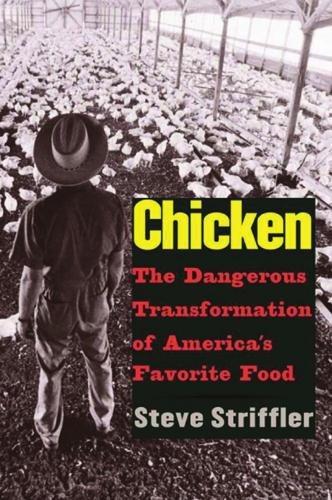
Chicken: The Dangerous Transformation of America's Favorite Food
by
Steve Striffler
Published 24 Jul 2007
That is the difference.25 Both in conception and practice, the switch to poultry and to working in the southern United States is a story about 106 A New Worker upward mobility. Many of these pioneers have harrowing accounts of crossing the border, almost dying, and getting caught by border agents (la migra). But these stories are often seen as part of the past, recounted like old war stories. As the upwardly mobile immigrant becomes legal, the border loses some of its mystique and Mexico’s attraction begins to wane. I crossed everywhere along the border. San Diego, Arizona, Texas, everywhere. In the s I got caught crossing near San Diego three times before I got in. So then I tried Arizona. That was a terrible idea!
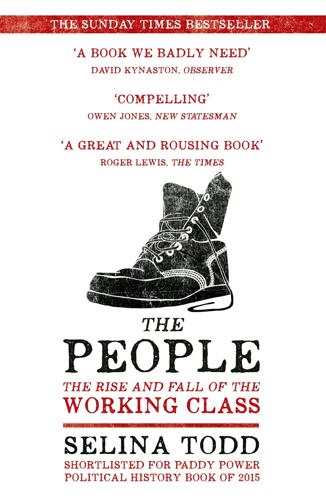
The People: The Rise and Fall of the Working Class, 1910-2010
by
Selina Todd
Published 9 Apr 2014
They did not look like their parents and they led very different sorts of lives – to many journalists and politicians they symbolized a prosperous, meritocratic society in which working-class people could play significant roles. If a generation of teenagers played an important part in this transformation, so too did a small number of upwardly mobile writers, actors, journalists and television entrepreneurs. They brought working-class heroes of the post-war generation to an audience of thousands, and at times millions, of ordinary people. They created ‘angry young men’ like Joe Lampton in Room at the Top and Billy Fisher in Billy Liar, and Coronation Street’s duffel-coated Ken Barlow, whose Oxford degree and frequent fits of pique distinguished him from the other characters on Britain’s most successful soap opera.
…
‘I don’t think the north was so much ignored as patronized,’ she said.14 In 1961 Tony Richardson brought A Taste of Honey to the big screen, and sided with Shelagh Delaney against the powerful production company who wanted to use Audrey Hepburn as the lead. Richardson and Delaney successfully argued that an ‘unknown’ would do a better job and a nineteen-year-old Liverpudlian, Rita Tushingham, got the part.15 A small but smart coterie of upwardly mobile journalists and writers assiduously promoted these working-class heroes. In The Uses of Literacy Richard Hoggart suggested that working-class communities championed values that Britain was in danger of losing: neighbourliness, mutual help, sincerity and integrity.16 Hunter Davies was a generation younger than Hoggart, and preferred to promote working-class pioneers of change.

No Such Thing as Society
by
Andy McSmith
Published 19 Nov 2010
By the end of 1984, the word ‘noovo’ had disappeared, elbowed out by an American import, which was originally short for ‘young urban professionals’ and used to describe those who backed Senator Gary Hart against the more conservative Walter Mondale in the contest for the Democrat nomination in the 1984 presidential election. The Americans had a separate acronym ‘yumpie’, meaning young and upwardly mobile, but only ‘yuppie’ crossed the Atlantic, taking on both meanings. It was so popular that it spawned other new acronyms, such as ‘dinkies’, meaning ‘double income, no kids’, and ‘nimbies’, short for ‘not in my backyard’, which applied to homeowners who accepted in principle the need to build roads, houses, shopping centres, but not near their properties.
…
Peter York wrote: ‘From 1985 onwards, we began to get more and more obsessed with the toys of the age – mobile phones, in-car faxes, Sony Walkmen and tiny TVs, lap-top computers – because they said that we were well-heeled busy people, people whose time was in short supply.’32 These toys included the Amstrad computer, which advertised that its owner was busy and upwardly mobile. Soon, Britain was welcoming the American expression ‘quality time’, which is what exceptionally busy parents reputedly set aside for their children. This phrase, seized upon by working mothers or two-income couples who felt vulnerable to the charge that they were allowing their children to grow up as strangers, had been in use among upper middle-class Americans since the late 1970s.
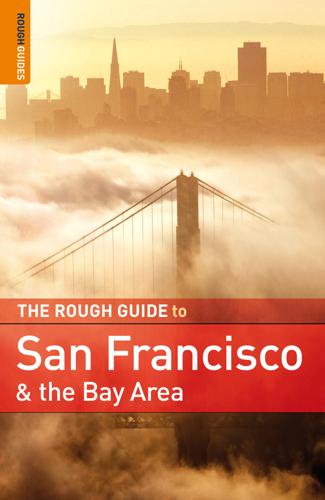
Rough Guide to San Francisco and the Bay Area
by
Nick Edwards
and
Mark Ellwood
Published 2 Jan 2009
Though still gritty in parts, many of the old warehouses here have been converted into artists’ lofts and studios in an ongoing real-life workshop to transform the area into a glitzy design centerpiece. Most intriguing is the new city hall, called Civic Center, at Park Avenue and Hollis Street, for which the 1902 town hall has been wrapped in a sheer glass box of 15,000 additional square feet of office space. Nothing indicates the upwardly mobile face of Emeryville better, however, than the fact that the billion-dollar computer animation company Pixar is headquartered here at 1200 Park Ave; unfortunately, no tours of the studio are offered. East Oakland The E ast Bay | Oakland The bulk of Oakland spreads along foothills and flatlands to the east of Downtown, in neighborhoods obviously stratified along the main thoroughfares of Foothill and MacArthur boulevards.
…
Skyline Boulevard runs through the park and is popular with cyclists, who ride the twelve miles south to Lake Chabot or follow Grizzly Peak Boulevard five miles north to Tilden Park through the Berkeley Hills. Most of the Broadway traffic, and the AC Transit #51 bus, cuts off onto College Avenue through Oakland’s most upscale shopping district, ROCKRIDGE. Spreading for half a mile on either side of the Rockridge BART station, the quirky stores and restaurants here, despite their undeniable upwardly mobile overtones, are better than Piedmont’s in variety and volume, and make for a pleasant afternoon’s wander or night out. Oakland is hardly regarded as a gourmet paradise; it does, though, have a tradition of unpretentious all-American diners along with a smattering of good multi-ethnic restaurants.
…
Also worth a visit, The National Institute of Art and Disabilities at 551 23rd St (Mon–Fri 8.30am–4pm; free; t 510/620-0290, w www.niadart.org) exhibits art created by artists with developmental and physical disabilities; view in an open studio and gallery space where the artists are often at work. If you’re heading from the East Bay to Marin County, Point Richmond, a cozy little town tucked away at the foot of the bridge between the refinery 315 and the Bay, is worth a glance for its shoreline and its many Victorian houses – now mostly occupied by upwardly mobile professionals from San Francisco. Brickyard Landing is a redeveloped docklands with modern bayview condos, tennis courts, and a private yacht harbor built around disused brick kilns. The rest of the waterfront is taken up by the broad and usually deserted strand of Keller Beach, which stretches for half a mile along the sometimes windy shoreline.
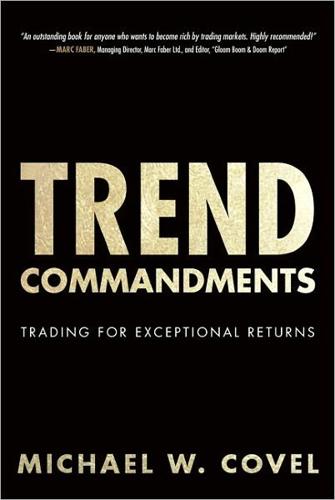
Trend Commandments: Trading for Exceptional Returns
by
Michael W. Covel
Published 14 Jun 2011
Trend following in its purest form is about absolute returns—making the most money possible while not tied to some random calendar date. I know this all might seem pedantic, but look at how much of our economy is tied to this backward way of thinking. In a nation ruled by swine, all pigs are upwardly mobile and the rest of us are f***ed until we can put our acts together: not necessarily to win, but mainly to keep from losing completely. We owe that to ourselves and our crippled self-image as something better than a nation of panicked sheep.3 This page intentionally left blank Life is tough.
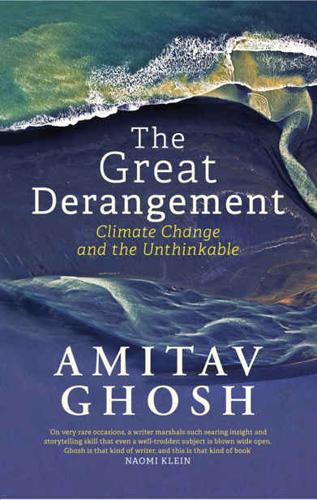
The Great Derangement: Climate Change and the Unthinkable
by
Amitav Ghosh
Published 16 Jan 2018
I wrote in my notebook: ‘The damage was limited to a half-mile radius along the shore. In the island’s interior everything is tranquil, peaceful—indeed astonishingly beautiful. There are patches of tall, dark primary forest, beautiful padauk trees, and among these, in little clearings, huts built on stilts. . . . One of the ironies of the situation is that the most upwardly mobile people on the island were living at its edges.’ Such was the pattern of settlement here that the indigenous islanders lived mainly in the interior: they were largely unaffected by the tsunami. Those who had settled along the seashore, on the other hand, were mainly people from the mainland, many of whom were educated and middle class: in settling where they had, they had silently expressed their belief that highly improbable events belong not in the real world but in fantasy.

Makeshift Metropolis: Ideas About Cities
by
Witold Rybczynski
Published 9 Nov 2010
Walkability is important since it is one of the competitive advantages that downtowns offer compared to suburbs. However, the concentration of a downtown also produces high land prices, which together with labor costs, congestion, government bureaucracy, and taxes increases the cost of downtown housing. As a result, most lively and attractive downtowns have become wealthy enclaves—of the upwardly mobile and the retired well-to-do. Downtown living does not contradict the general American preference for small communities. Garreau observes that face-to-face places are not necessarily only small cities but can also be neighborhoods and downtown districts embedded in large cities. Residential neighborhoods such as Chelsea and SoHo in New York, Society Hill in Philadelphia, or Adams Morgan and Georgetown in Washington, D.C., could be described as (very prosperous) small towns located within big cities.

Empire of Things: How We Became a World of Consumers, From the Fifteenth Century to the Twenty-First
by
Frank Trentmann
Published 1 Dec 2015
Home was no longer ‘sweet home’ but a mere ‘sleeping box and eating den’, in the words of the secretary of New York City’s child welfare committee.130 Adolescents looked for fun in the street. Delinquency, however, was not the monopoly of the poor. Recreation was so contested precisely because adolescents from comfortable families also ended up in court. A survey in Cleveland traced delinquency to upwardly mobile families. ‘Their recent prosperity has permitted their children a sudden accession of comfort and money and spare time.’ Such youths had thrown off a ‘patriarchal notion of family control’. ‘The only standard they seem to have substituted is that of cutting a dashing figure with “the crowd”. They . . . represent a nascent social energy permitted to run wild.’
…
Types of leisure, too, are unevenly distributed, especially by education and class. The better educated, the more active people are. That this should be so contains a final clue as to why time-intensive cultural activities have not vanished. Learning to play the piano takes time. A pianola solves that problem: it plays by itself. And yet, the homes of the cultured and upwardly mobile tend to have a piano, not a pianola. In Germany, ten- to eighteen-year-olds spend an impressive hour a day on music-making or creative arts.77 Why torture innocent ears if it is possible to satisfy the children with cheap, easy downloads of the newest tune? The short answer is: ‘It’s sociology, stupid.’
…
The jury is out. While migrant households do consume more in total, remittances in fact reduce the relative amount spent on food and dress. After all, these families are better off and can afford to put extra money aside for land and business. In that sense, they are no different from generations of upwardly mobile people before them. On the other hand, remittances are in some ways distinctive. Most strikingly, they flow in a counter-cyclical fashion, that is, they go up when depression and disaster strike, at the very moment when other investments and wages go down. For families in developing countries, they are, therefore, hugely important – a cushion in hard times.
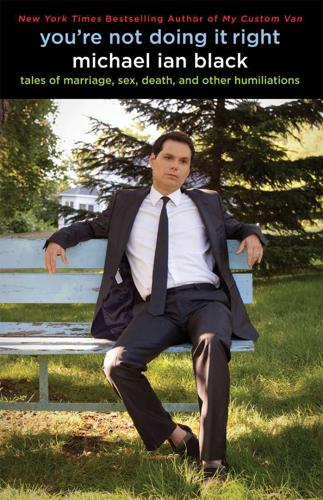
You're Not Doing It Right: Tales of Marriage, Sex, Death, and Other Humiliations
by
Michael Ian Black
Published 28 Feb 2012
After a dozen calls, I manage to get the price knocked down a few thousand dollars. Unfortunately, the best quote I get does not come from the place where I took the test drive. I feel bad about that because I liked the woman who helped me out, but I figure BMW salespeople are probably used to dealing with upwardly mobile businessmen such as myself so she understands that with guys like us, the dollar is king. It’s just business, baby. I order my car. They tell me two months. To make the long wait for the car more tolerable, BMW has thoughtfully created a website where I can check the progress of my car from its assemblage by wood nymphs in the Bavarian forests, to its transatlantic voyage on the QE2, through its final transport to my dealership borne on the wings of angels.

Technically Wrong: Sexist Apps, Biased Algorithms, and Other Threats of Toxic Tech
by
Sara Wachter-Boettcher
Published 9 Oct 2017
Then there’s the practice of segmenting: grouping you into one of Acxiom’s seventy marketing clusters, each with a branded name and a peppy description. Judging by the information readily available about me, I’m almost certain Acxiom’s database has me pegged as a segment 6, “Casual Comfort”: a city-living, upwardly mobile type who enjoys “socializing, attending concerts and participating in fantasy sports leagues, as well as adventurous outdoor recreation. This cluster also appreciates fine dining and fitness.” 3 Minus the fantasy sports, this is all pretty accurate. And why wouldn’t it be? After all, Acxiom knows which credit cards I have, how much I paid for my house, and where I spend my money.
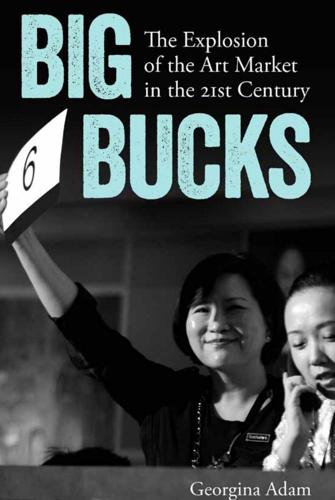
Big Bucks: The Explosion of the Art Market in the 21st Century
by
Georgina Adam
Published 14 Jun 2014
As one of the BRIC (Brazil, Russia, India and China) nations, and with a burgeoning population of 1.2 billion (2011 census) and a growing middle class, India should be the natural challenger to China. It has a growing group of affluent consumers – what McKinsey and Co calls ‘the global Indians’ – businessmen, landowners and high-end professionals, who represent some 1.2 million households. And, says McKinsey, ‘a new breed of ferociously upwardly mobile Indians is emerging [whose tastes] are indistinguishable from those of prosperous young Westerners.’ By 2025, McKinsey predicts there will be 9.5 million Indians in this class.185 More significantly, the number of ultra-rich Indians has grown sharply this century – Forbes listed 55 billionaires in 2013.
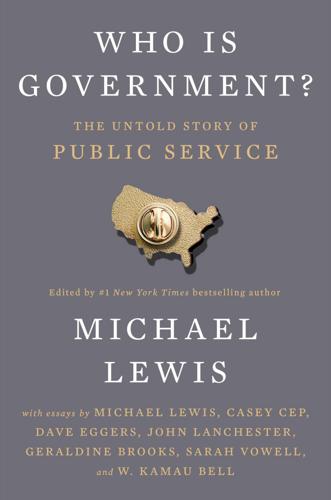
Who Is Government?: The Untold Story of Public Service
by
Michael Lewis
Published 18 Mar 2025
The last part is something I have always related to about Washington, DC, too. While both Oakland and DC are known as Black cities and both are losing many Black residents because of gentrification, DC has something special and notable that Oakland and other Black cities struggle with: It consistently has a population of upwardly mobile Black people. And you see them everywhere. Black professionals. Black people with power. Black people with influence. Yes, of course, there are many Black people who are also being disenfranchised from the system in DC the same way we are all across the United States. And yes, many of these Black professionals are transplants like Olivia.

Berlin
by
Andrea Schulte-Peevers
Published 20 Oct 2010
Nudging against Mitte in the north and Schöneberg in the west, this is where you find the district’s heavyweight attractions – Checkpoint Charlie and the Jüdisches Museum. Gentrification has arrived here with a vengeance, resulting in cleaner streets, prettier buildings, fancier restaurants and a more relaxed overall pace. The liveliest strips are café- and boutique-studded Mehringdamm and Bergmannstrasse, which have become popular playgrounds for the mostly upwardly mobile locals. The nearby hill that gave Kreuzberg (literally ‘cross hill’) its name is now a rambling park topped by a memorial celebrating Prussia’s 1815 victory over Napoleon. Lawns for sunning, a beer garden and an artificial waterfall make this a great summer play zone. JÜDISCHES MUSEUM Map 2599 3300; www.juedisches-museum-berlin.de; Lindenstrasse 9-14; adult/concession/family €5/2.50/10; 10am-10pm Mon, to 8pm Tue-Sun; Hallesches Tor, Kochstrasse, M29, M41, 248 Berlin’s Jewish Museum is an eye-opening, emotional and interactive romp through 2000 years of Jewish history in Germany.
…
On weekends DJs turn the place into an electro party zone and if you’re too trashed to go home there are even rooms for rent. Free wi-fi. STEREO 33 Map Bar 9599 9433; Krossener Strasse 24; from 8pm Mon-Sat; Warschauer Strasse Modern and minimalist, this postage stamp–sized den is a serious contender for the title of coolest bar in Friedrichshain. Upwardly mobile DJs spin a head-bobbing mix of hip hop, electro and funk as the crowd gets comfortable in plush sofas or at the bar. LUNAS STRANDGARTEN Map Beer Garden www.freiluftrebellen.de, in German; Revaler Strasse 34; 1pm-2am, later Fri & Sat; Warschauer Strasse Perhaps a little too neat and chic for this Friedrichshain grunge strip, but still a fun spot to chill, play beach volleyball or cool off in the tiny pool.
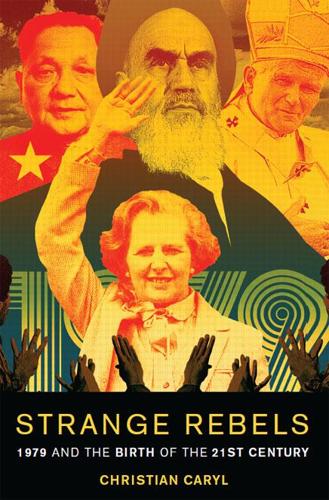
Strange Rebels: 1979 and the Birth of the 21st Century
by
Christian Caryl
Published 30 Oct 2012
Three decades later, it was an industrial powerhouse with a strong, centralized state. Its growth rates—averaging 9 to 10 percent for the decade between 1963 and 1973—were astonishing. It boasted modern communications networks and health care systems, car factories, and hydropower dams. Literacy was expanding. Iranian universities were filled with upwardly mobile youth—almost as many women as men—and thousands of others were studying overseas, all aspiring to join the ranks of the ever-expanding middle class. Iran’s military was the envy of the Middle East, well trained and armed with the latest weaponry. And it was all the achievement—or so you thought if you were an aspiring despot like Afghanistan’s Mohammed Daoud—of a single wise leader.
…
Known in the mysterious argot of British pollsters as “C2s,” these workers had long been considered automatic Labour voters. Thatcher disagreed. She believed that many union members resented the undemocratic ways and the cynical tactics of their leaders, and she surmised that many working-class voters would be correspondingly receptive to her calls for greater constraints on union power. She also felt that upwardly mobile workers would welcome her proposals to allow the tenants of public housing to buy their homes. She reasoned that many C2s were also tired of inflation and runaway spending. This was why she staged her first big election rally in the traditional Labour stronghold of Cardiff in Wales. “Labour, the self proclaimed party of compassion, has betrayed those for whom it promised to care,” she told her audience.
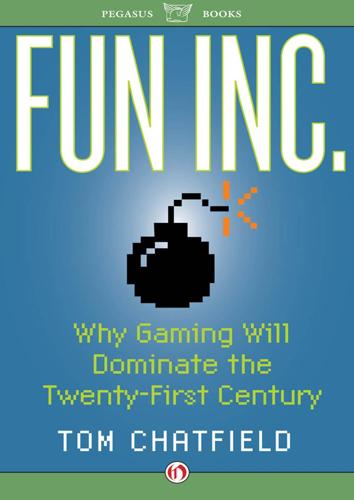
Fun Inc.
by
Tom Chatfield
Published 13 Dec 2011
Other rivals to Sega and Nintendo had come and gone, including a belated and ill-advised attempt to re-enter the games console market from Atari. But the Sony PlayStation was different. Sleek, grey, expensively marketed and blisteringly powerful, it offered CD-quality sounds and gorgeous graphics at a heavily subsidized low price. It was something more than a must-have toy for teenagers: a desirable consumer product for young, upwardly mobile adults, complete with soundtracks designed for its launch titles by some of the hottest DJs on the global club scene. The PlayStation was a bet on the claim that Stephen Russell had made three decades previously – that games were for everyone, and that their natural place was at the forefront of society’s relationship with technology.
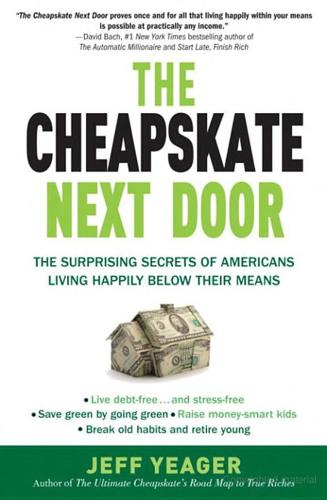
The Cheapskate Next Door: The Surprising Secrets of Americans Living Happily Below Their Means
by
Jeff Yeager
Published 8 Jun 2010
It’s just that it’s a house designed to please the people who live in it, and not necessarily the people who live next door to it. According to Jacquie, it’s also the couple’s personal attempt to help “stem the seemingly inevitable shift of the neighborhood from a cozy place, filled with humble homes” into one of “investment (properties) for upwardly mobile but of course deeply-in-debt people” who have no time to become part of the community—and no intention of staying there once they can afford to move on and gentrify the next modest-but-content neighborhood. Will Rogers once said, “Too many people spend money they haven’t earned, to buy things they don’t want, to impress people they don’t like.”
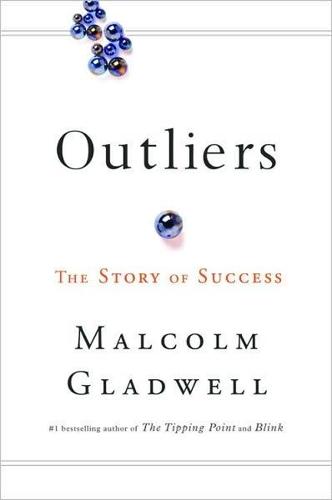
Outliers
by
Malcolm Gladwell
Published 29 May 2017
Her older brother Rufus, with whom she went to live as a child, was a teacher and a man of learning. Her brother Carlos went to Cuba and then came back to Jamaica and opened a garment factory. Her father, Charles Ford, was a produce wholesaler. Her mother, Ann, was a Powell, another educated, upwardly mobile colored familyand the same Powells who would two generations later produce Colin Powell. Her uncle Henry owned property. Her grandfather Johnthe son of William Ford and his African concubinebecame a preacher. No less than three members of the extended Ford family ended up winning Rhodes Scholarships.If my mother owed W.
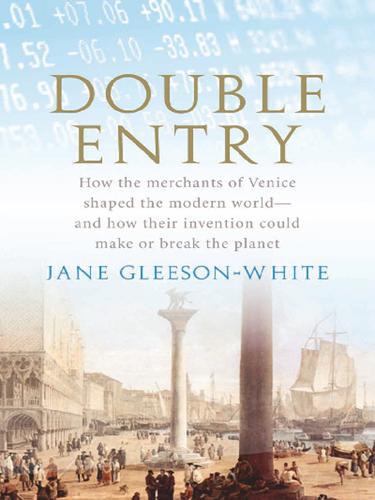
Double Entry: How the Merchants of Venice Shaped the Modern World - and How Their Invention Could Make or Break the Planet
by
Jane Gleeson-White
Published 14 May 2011
The first signs that double entry would be equal to the task of monitoring and directing this new industrial world of factories, wage labour and large-scale capital investment were found in the north of England, in the pottery works of Her Majesty’s potter, Josiah Wedgwood (1730–95)—a factory called Etruria, named, by chance, after the ancient Italian region home to Pacioli’s Sansepolcro. An entrepreneurial and marketing genius, Wedgwood built the world’s first industrialised pottery manufactory. He found his customers among the new upwardly mobile classes whose insatiable wants were described by political economist Nathaniel Forster in 1767: ‘the perpetual restless ambition in each of the inferior ranks to raise themselves to the level of those immediately above them’, he said, caused fashionable luxury to spread ‘like a contagion’. Among the most coveted fashionable luxuries of the day were Wedgwood’s vases.
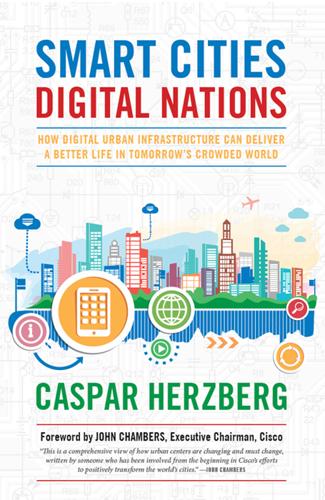
Smart Cities, Digital Nations
by
Caspar Herzberg
Published 13 Apr 2017
Obesity is on the rise in Malaysia, China, South Korea, and India; China is now stricken with the world’s second-highest obesity rate, and the numbers are climbing, especially for children.2 Vegetarian diets, generally less noxious for the environment and healthier for the human system, are giving way as meat consumption rises. The incidental expenses of processing, shipping, and storing meat-based products will increase across supply chains, and so will the resulting pollution. Resource and food wastage will also increase. For companies that sell products to the upwardly mobile classes in Asian nations, these facts are likely difficult to swallow when growth is the singular imperative. Nair’s book was meant to identify this enormous problem. He also takes to task the unquestioning belief that markets will create solutions as they are needed. His thesis contends that such a belief is the stuff of a “dream world,” based on a model for development that simply cannot be sustained in Asia.

Vertical Vegetables and Fruit
by
Rhonda Massingham Hart
Published 14 May 2011
Ties, Clips, and Slings Some plants climb by means of spiraling tendrils or leafstalks; some by stems that weave in and out of or wrap around available supports; and still others by aerial, rootlike holdfasts or tiny, adhesive pads that cling to their supporting surface. Any of these, at some point, may need a little assist to stay aloft. A variety of ties, clips, slings, and other accessories can be used in training upwardly mobile vines. (See page 96 for more on slings). For garden crops, usually all that is needed is to gently guide the stems to the support and watch them climb. Some, however, need to be tied in place as they grow. Seed catalogs, gardening websites, and garden supply stores offer soft twist ties and clips especially made for securing delicate plant stems to trellises, stakes, fencing, or twine (see Resources).

Confessions of a Crypto Millionaire: My Unlikely Escape From Corporate America
by
Dan Conway
Published 8 Sep 2019
On occasion, they’d go all the way to the CEO and the board of directors. At some point, there would be no one more senior to send it to, leaving only Jesus Christ or Dick Cheney to say, “Great work.” If the project being applauded involved a buzzword in fashion at the time, you could win a cascading, upwardly mobile email for an achievement so trivial it was laughable. Sharp-eyed managers would spot the connection and launch the note vertically before anyone beat them to the punch. They’d write something like, Mary, this is a great example of leveraging synergies with NGOs … thought you should see our work here.
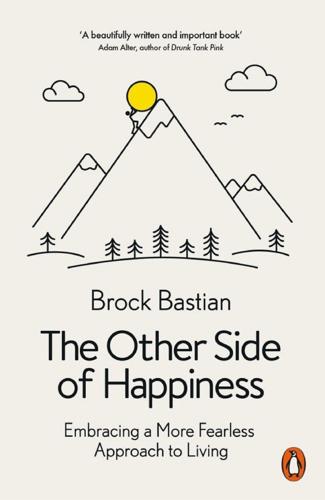
The Other Side of Happiness: Embracing a More Fearless Approach to Living
by
Brock Bastian
Published 25 Jan 2018
Have We Reached Peak Comfort? 2. The Cotton Wool Generation PART TWO Embracing Pain 3. Painful Pleasures 4. Getting Tough 5. Connecting With Others 6. Finding Focus 7. The Meaningful Life Conclusion References Acknowledgements Follow Penguin Introduction Positivity has become the new crack of the upwardly mobile, and the new pill for the downtrodden and depressed. Coaches, consultants and psychologists have been pushing the message that to live well we need to seek out the positive and reframe the negative. In today’s world, feeling happy is no longer simply a state of mind; it has become a marker of mental health and success.

Before You Suffocate Your Own Fool Self
by
Danielle Evans
Published 22 Sep 2010
I was an accident; I’d slipped through our school’s de facto segregation and she wasn’t happy about it. I had been dealing with people like her since the third grade, when I’d been shipped off to a “gifted” school as a reward for outsmarting standardized tests. The magnet elementary and middle schools were the Lake County School District’s last line of defense against the evaporation of its upwardly mobile white people. The Lakewood PTA had tried to get a new magnet high school built, smack in the middle of Lakewood, and, when that failed, tried to have Eastdale students rezoned to a high school five miles farther away, but the county comptroller wasn’t having it. They settled for an honors wing, which housed everyone whose standardized test scores placed them into honors classes, or everyone whose parents knew that you could pay a private psychologist to declare your child a genius even if the school’s official test thought otherwise.

Cashing Out: Win the Wealth Game by Walking Away
by
Julien Saunders
and
Kiersten Saunders
Published 13 Jun 2022
Obviously, dual-income households benefit from multiple income sources, twice as many opportunities for advancement, shared responsibilities at home, and tax benefits, if married, compared with single people. Second, when we talk about a fifteen-year career, we are primarily referring to the careers of college-educated and/or upwardly mobile workers with specialized skills. The notion of doing this as a low-wage worker is practically impossible, especially if you have children. But if your professional career is already in motion, you’re earning a decent income, and you agree with our four purposes of income framework, then your next step is to start planning your career with a definitive exit plan.
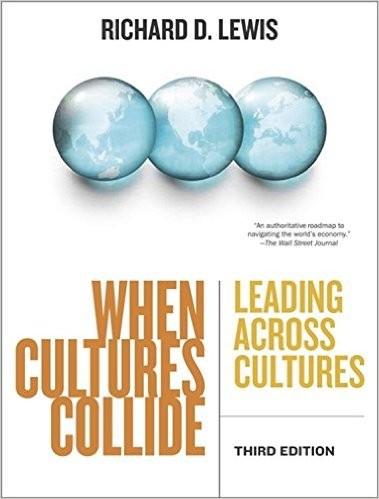
When Cultures Collide: Leading Across Cultures
by
Richard D. Lewis
Published 1 Jan 1996
Culture Values conservative European-oriented intellectual humility avoidance of dogmatism compromise royalist nonchauvinist common sense flexibility avoidance of confrontation Contrasting Flemish and Walloon values can be described as follows: Flemish Walloon egalitarian consensual decision making approachable bosses delegation of responsibility relaxed relationships few status symbols dislike speaking French upwardly mobile authoritarian autocratic decisions large power distance little delegation of power vertical structure status symbols important French speakers conscious of rank BELGIUM 253 Concepts Leadership and Status Flemish Walloon Bosses are relaxed and low-key. Responsibility is delegated downward to a considerable degree.
…
Having heard this description, non-Italians, when visiting the south, are usually pleasantly surprised to meet people who are friendly, hospitable and generous, trustworthy and loyal, perceptive and essentially human. Differences are, however, striking: North South experience factual modern meritocratic industrial prosperous law-abiding affinity with Austrians, Germans often secular small families family closeness upwardly mobile respect officialdom scientific truth identification with company generalist value for money imaginative traditional patronage system agricultural poor authorities coexisting with the Mafia affinity with Mediterraneans, Africans church-guided extended families family dominance mentor-guided key connections contextual, situational truth identification with in-group particularist How to Empathize with Italians Italians like to share details of families, vacations, hopes, aspirations, disappointments, preferences.

A Classless Society: Britain in the 1990s
by
Alwyn W. Turner
Published 4 Sep 2013
The respective stories of Ashdown and Norris on the one side and Amos on the other sketched out the ground rules for political sex scandals at the start of the decade, a set of standards summed up by the Conservative MP Rupert Allason in his political whodunit Murder in the Commons (published in 1992 under the pen name Nigel West): ‘Mere infidelity could probably be survived, but a wholly legal act of homosexuality spelt catastrophe for the upwardly mobile.’ There were other cases too that would once have meant ruin but which no longer rated serious or prolonged attention. In the summer of 1992 the Independent ran a story that Virginia Bottomley had had her first child in 1967 before marrying the child’s father, another future Tory MP, Peter Bottomley.
…
In 1993 Andy McSmith, Kinnock’s former press officer, had predicted the emergence of a Labour Party that would be ‘more European than the Tories, very strong on law and order, with a promise of electoral reform, and social welfare without excessive tax increases’. This would be ‘a party where the upwardly mobile could feel at home, not unlike the one which David Owen tried to create a decade ago’. In essence this was the party that Smith was creating and very much the party that Blair wished to lead, though preferably without any public nod to Owen, whose recently ended career as an MP was littered with broken parties and with personal and political animosities.
…
Warren Lakin & Ian Parsons), I Think the Nurses Are Stealing My Clothes: The Very Best of Linda Smith (Hodder & Stoughton, London, 2006) Jon Sopel, Tony Blair: The Moderniser (Michael Joseph, London, 1995) Michael Spicer, The Spicer Diaries (Biteback, London, 2012) Mark Steel, Reasons to Be Cheerful: From Punk to New Labour through the Eyes of a Dedicated Troublemaker (Scribner, London, 2001 – pbk edn: 2002) Philip Stephens, Tony Blair: The Price of Leadership (Penguin, New York, 2004 – rev pbk edn: Politico’s, London, 2004) Richard Strange, Strange: Punks and Drunks and Flicks and Kicks – the Memoirs of Richard Strange (André Deutsch, London, 2002) Jack Straw, Last Man Standing: Memoirs of a Political Survivor (Macmillan, London, 2012) Mark Stuart, Douglas Hurd: The Public Servant (Mainstream, Edinburgh, 1998) John Sutherland, Offensive Literature: Decensorship in Britain 1960–1982 (Junction Books, London, 1982) John Sutherland, Reading the Decades: Fifty Years of the Nation’s Bestselling Books (BBC Worldwide, London, 2002) Norman Tebbit, Upwardly Mobile (Weidenfeld & Nicolson, London, 1988) Margaret Thatcher, The Downing Street Years (HarperCollins, London, 1993) Margaret Thatcher, The Path to Power (HarperCollins, London, 1995) Ben Thompson, Sunshine on Putty: The Golden Age of British Comedy from Vic Reeves to The Office (Fourth Estate, London, 2004 – pbk edn: HarperCollins, London, 2004) Alwyn W.
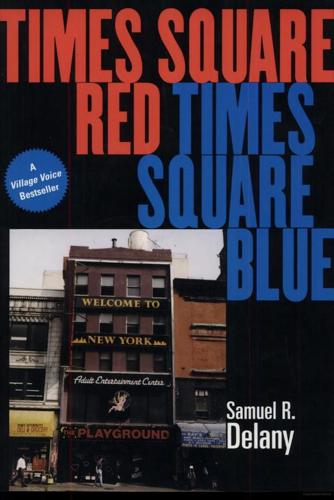
Times Square Red, Times Square Blue
by
Samuel R. Delany
Published 1 Jan 1999
Again and again, however, such confusion causes people who should know better to decide that, because they have located some pervasive superstructural pattern (a prevalence of petty street crime in neighborhood X, say), superstructure here is actually producing all the visible infrastructural changes (“There was an influx of Puerto Ricans in neighborhood X, and a subsequent rise in drugs and petty street crimes; because of this, eventually the neighborhood was driven down till it became an all but abandoned slum where nobody, not even the Puerto Ricans, would live anymore . . .”), when, at the infrastructural level, what has actually happened is that landlords-as-a-class have realized that the older buildings in neighborhood X require more maintenance and thus a greater expenditure, so that they concentrate all their economic interest on newer properties with larger living units in neighborhood Y to the east, which is popular with young white upwardly mobile executives. The result is the decline of neighborhood X, of which street crime, drugs, and so on are only a symptom—though, as superstructural elements, those symptoms stabilize (i.e., help to assure) that decline and combat any small local attempts to reverse it by less than a major infrastructural change.
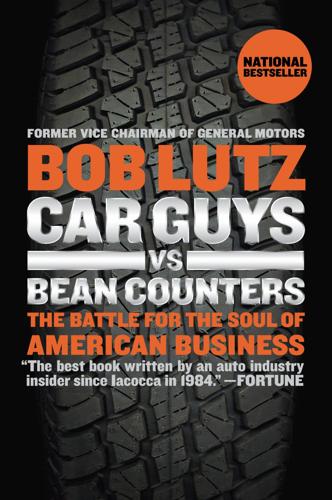
Car Guys vs. Bean Counters: The Battle for the Soul of American Business
by
Bob Lutz
Published 31 May 2011
What the car lacked was any charm or warmth in the form of tasteful chrome accents to offset the unfamiliarity of the “stealth-fighter” sheet metal. The interior, the element that can make or break the sale if the potential customer is attracted to the exterior, can only be described as a failed experiment in attracting the computer generation. Someone had apparently decided that the young, upwardly mobile like computers, so why not make the instrument panel look like one? Not like the workstation, mind you, but the ugly, upright rectangular lump that’s under the desk or in the cabinet. Most didn’t know what this leaning tower of black plastic in the center stack of the instrument panel was supposed to represent, and hardly anybody liked it.The rest of the interior was deliberately sparse, though made of high-grade materials.

Hillbilly Elegy: A Memoir of a Family and Culture in Crisis
by
J. D. Vance
Published 27 Jun 2016
My entire family showed up for the occasion, and we both changed our name to Vance—giving me, finally, the same name as the family to which I belonged. I had a nice job, a recently purchased home, a loving relationship, and a happy life in a city I loved—Cincinnati. Usha and I had returned there for a year after law school for one-year clerkships and had built a home with our two dogs. I was upwardly mobile. I had made it. I had achieved the American Dream. Or at least that’s how it looked to an outsider. But upward mobility is never clean-cut, and the world I left always finds a way to reel me back in. I don’t know the precise chain of events that led me to that hotel, but I knew the stuff that mattered.
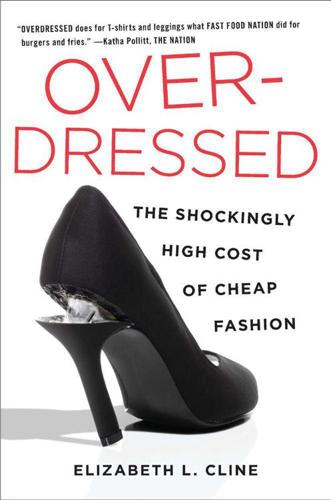
Overdressed: The Shockingly High Cost of Cheap Fashion
by
Elizabeth L. Cline
Published 13 Jun 2012
During the Christmas shopping season of 1902, Whitaker notes that department stores sold enormous volumes of lace and embroidery, as women opted to just make their own versions of the lingerie style.25 Department stores of the day had bigger fabric departments than ready-to-wear sections, and affordable patterns, some inspired by couturiers, were available in publications like the Vogue Pattern Book. Women who could afford it took illustrations clipped from newspapers or fashion magazines along with bolts of fabric to a dressmaker. As income distribution started to even out after the Great Depression, upwardly mobile Americans started to flex their buying power. Store-bought clothing was widely embraced; early problems with sizing and uneven quality had been corrected. But there was little virtue in buying cheap. As Whitaker explains in her book, the middle class looked to department stores as places where they could buy better-quality goods that allowed them to show off their newfound economic status.
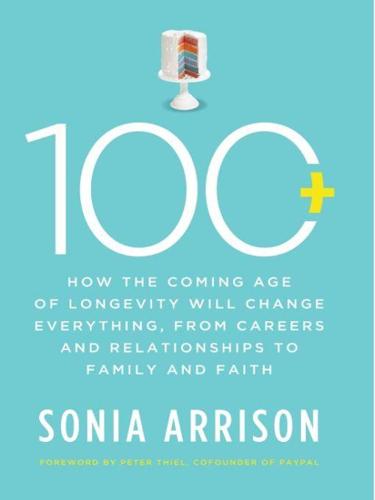
100 Plus: How the Coming Age of Longevity Will Change Everything, From Careers and Relationships to Family And
by
Sonia Arrison
Published 22 Aug 2011
They argue that “religiosity is systematically related at the individual level to the distribution of income groups in postindustrial societies: the poor are almost twice as religious as the rich.”25 Even though many poor people are religious, so are many wealthy people. Consider that the $27 million Creation Museum in Kentucky was not bankrolled by poor people.26 Indeed, as The Economist’s John Micklethwait and Adrian Wooldridge argue in their book God Is Back, “In much of the world it is exactly the sort of upwardly mobile, educated middle classes that Marx and Weber presumed would shed such superstitions who are driving the explosion of faith.”27 The two seasoned journalists discuss their journey around the world examining the resurgence of religion. Along the way, they find middle-class Brazilian housewives who meet for exorcisms, the new bourgeoisie in Turkey and India fervently embracing religion, and young technologists in China downloading sermons and other religious material over the Internet.
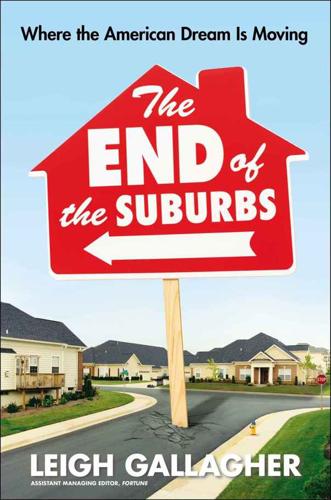
The End of the Suburbs: Where the American Dream Is Moving
by
Leigh Gallagher
Published 26 Jun 2013
That means Toll is completing whatever homes it sold in those markets and isn’t developing new communities there right now. Toll doesn’t build homes unless they’re sold, so it doesn’t have an inventory problem there; it’s just not expanding outward. That said, Yearley still thinks there will be a strong market for what he calls the “suburban move-up” home buyer—the upwardly mobile young family that still wants to live in a subdivision. “I think for most families, once the kids hit kindergarten, most people still want to move to the suburbs and have their own home with their own backyard with the swing set and the little league team playing down the road and with a great school district,” he says.
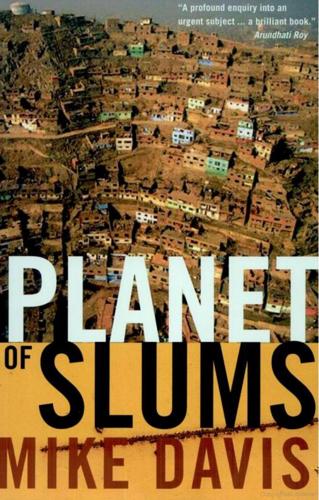
Planet of Slums
by
Mike Davis
Published 1 Mar 2006
In a region where urban women's labor-force participation had always been lower than in other continents, the surge of Latin American women into tertiary informal activities during the 1980s was especially dramatic. In her detailed study of "adjustment from below," social anthropologist Caroline Moser describes the impact of eight successive SAPs between 1982 and 1988 on a formerly upwardly mobile shantytown on the swampy edge of Guayaquil. Although open unemployment doubled in Ecuador, the major impact of the 1980s crisis was an explosion of underemployment estimated at fully half the workforce in both Guayaquil and Quito. In the barrio Indio Guayas, husbands who had previously enjoyed full-time work found themselves casualized and idle for up to a half a year; households, as a consequence, were forced to send more members out to work, both women and children.
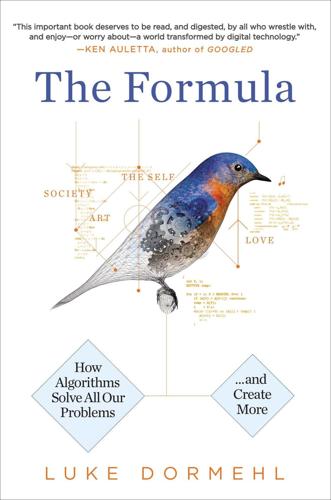
The Formula: How Algorithms Solve All Our Problems-And Create More
by
Luke Dormehl
Published 4 Nov 2014
For some, their vegetarianism might be a defining characteristic and, therefore, a “must have” demand. For others it is nonessential, or even incidental. Online, not only is everyone a formula, as argued in the previous chapter, there is also a formula for everyone. Love in the Time of Algorithms There is a scene in the 2009 comedy film Up in the Air in which Natalie, an upwardly mobile businesswoman just out of college, describes the qualities she is looking for in a partner. She calls this her “type.” “You know, white collar,” she says, listing her ideal mate’s attributions. “College grad. Loves dogs. Likes funny movies. Six foot one. Brown hair. Kind eyes. Works in finance but is outdoorsy, you know, on the weekends.
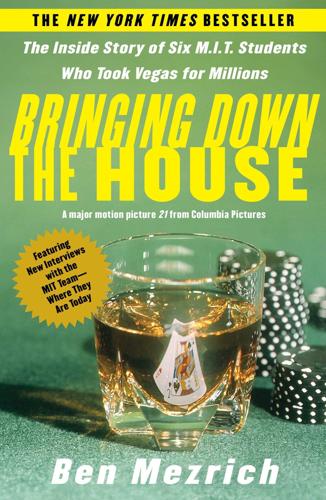
Bringing Down the House: The Inside Story of Six M.I.T. Students Who Took Vegas for Millions
by
Ben Mezrich
Published 2 Dec 2002
At six-five, he towered over everyone else at the table, and if he back-spotted his way into a shoe, he almost had to squint to see the cards. It was impossible for him to vanish into a crowd, and he couldn’t wander unnoticed through an airport. If someone was looking for him, they’d find him—in a club, in a bar, in a crowded casino. Likewise, Jill and Dylan Taylor stood out in the average Vegas crowd. They were upwardly mobile professionals: Jill was enrolled in the most elite business school in the country, while Dylan drew a six-figure salary from one of the highest profile advertising agencies in Boston. They traveled like newlyweds, staying in honeymoon suites and eating in five-star restaurants. People remembered them—because of her fiery halo of red hair, because of his buttoned-down look and serious manner, because pretty couples stood out in a crowd.

The Smartphone Society
by
Nicole Aschoff
Indeed, technology embodies social relations—how smartphones are developed and used reflects society, its prevailing ideas, cultural norms, economic imperatives, and divides.55 Contemporary American society is a fraught landscape. The richest 1 percent of the population earns eighty-one times the bottom half and owns 40 percent of the country’s wealth.56 MIT economist Peter Temin describes a “dual economy” in the United States: one track for subsistence workers and another for upwardly mobile, skilled workers and elites.57 National data supports Temin’s characterization. The bottom seven deciles have seen annual hourly wage growth of 0.5 percent or less since 2000, and 40 percent of American adults would be unable to cover an unexpected $400 expense. In 2018, household mortgage, student, auto, and credit card debt increased for the fifth year in a row, yet the majority of Americans don’t have enough money in the bank to cover one month of household expenses.58 Despite low official unemployment, one in five children live in families eking out an existence on an income below $25,750, which is the federal poverty line for a family of four.59 These economic divides drive a broad crisis of faith in the status quo—a legitimacy crisis that germinated in the aftermath of the 2008–10 financial crisis and its resolution skewed in favor of elites.
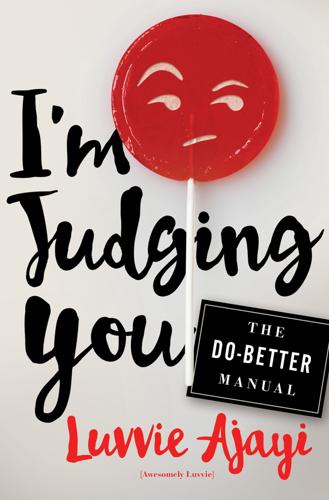
I'm Judging You: The Do-Better Manual
by
Luvvie Ajayi
Published 12 Sep 2016
Throwing rocks and then hiding your hands—that’s some bullshit. Those white stars are cracked and the stripes bleed. Until America is ready to turn the mirror on itself and address the giant, pink, racist elephant in the room, we cannot fix any of this. I’m judging you, ’Murica. 8. The Privilege Principle There comes a time in every upwardly mobile Black person’s life when they encounter someone who tells them how “well-spoken” and “articulate” they are. It is usually a white person who is earnest and honest in their admiration of your verbal abilities, and in that moment, you swing between being appreciative and being totally offended.
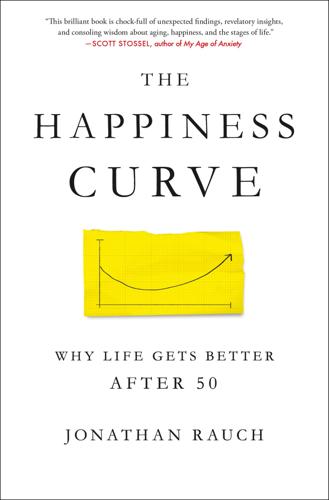
The Happiness Curve: Why Life Gets Better After 50
by
Jonathan Rauch
Published 30 Apr 2018
Still, when we spoke he was sixty-five and could not afford to retire. He worked alongside millennials who, he said, couldn’t care less about doing the job right. He felt angry at himself for losing his way in his forties. He especially felt regret. He had never managed to rejoin the white-collar, upwardly mobile society of his youth; and he never would. “There’s always something to remind you. You’re riding high, and—Wham! Boom! After that, you feel it’s hard to be around those people you knew before. It’s hard to go back.” I interviewed dozens of people for this book, trying to understand in an intimate, textured way how they experience life satisfaction over time.

Scarred: The True Story of How I Escaped NXIVM, the Cult That Bound My Life
by
Sarah Edmondson
Published 16 Sep 2019
With these new policies in place and given the increase in prices for some of the courses over the past year or two, plus the exchange rate going up 30 to 40 percent on the dollar, enrollment began to lose some steam. But that just meant I’d work harder. Some of us tried to follow Keith and Clare’s advice to target prospective enrollees who were a little wealthier than our former market of upwardly mobile young adults, and for a short time, this was a successful tactic. We had Oscar-winning film directors and other people to bring us credibility still registering for the Five-Day. Unfortunately, it was a hamster wheel because the rent of our center went up as well as our administrative fees. I felt like I was always treading water.
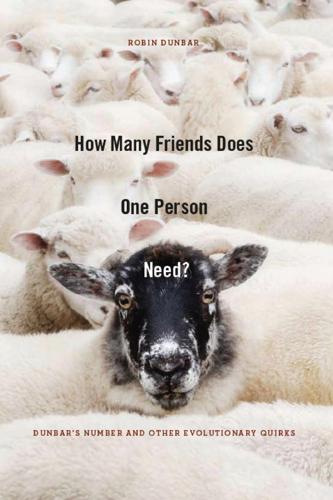
How Many Friends Does One Person Need? Dunbar’s Number and Other Evolutionary Quirks
by
Robin Dunbar
and
Robin Ian MacDonald Dunbar
Published 2 Nov 2010
It probably made the Scots the single most successful migrant group from the British Isles during the eighteenth and nineteenth centuries. The empire that was run from London was, in reality, a Scots empire, disproportionately administered, policed, missionised, taught, geologised, doctored, nursed, traded and transported by Scots. The issue was not so much that the Scots were any more desperate for a decently paid, upwardly mobile life than the English or the Welsh or the Irish, but that a strong sense of home community bound them to each other, and made working together that much more effective. That, and an education system second to none. Despite the patent disapproval of his subsequent employers (the decidedly anti-British American Presbyterian Mission in North India), my grandfather continued to be a regular visitor to the British Club solely in order to spend time with the Scots officers of the regiments stationed in the locality.

Abolish Silicon Valley: How to Liberate Technology From Capitalism
by
Wendy Liu
Published 22 Mar 2020
This is what happens when global capital, funnelled into a local industry, meets a housing policy landscape that is simultaneously pro-developer and anti-development. In a city where the average one-bedroom apartment rents for over $3,000 a month, and new builds tend to be luxury buildings marketed at the upwardly mobile, most units being built are completely out of the reach of anyone without family money or previous startup success. Though developers are required to set aside a certain percentage of new units as affordable housing — usually around 20%, waivable by paying a small fee — what counts as “affordable” in San Francisco is a little unreal.19 A family of four that wishes to qualify for the program must be making under the area median income of $118,500, and also must have enough saved to afford the down payment on a several hundred thousand dollar home.
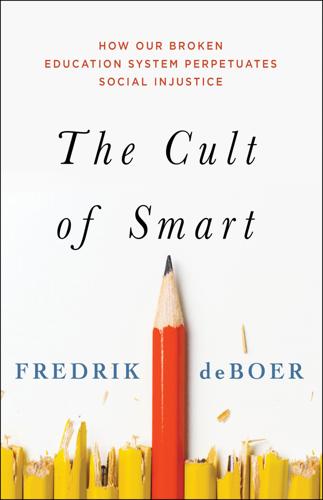
The Cult of Smart: How Our Broken Education System Perpetuates Social Injustice
by
Fredrik Deboer
Published 3 Aug 2020
This class stands in contrast to the shrinking traditional working class in manufacturing and repairs and the growing service class that cleans, cooks, and sells. What’s particularly notable about the creative class is how its members are defined as much by their affective trappings and fashions as by their incomes. Today’s strivers are environmentally conscious and politically woke as much as they are upwardly mobile. The winners of the meritocratic game tend to become, in other words, the aspirational class, brilliantly described by Elizabeth Currid-Halkett in her book The Sum of Small Things: A Theory of the Aspirational Class. As Currid-Halkett demonstrates, what striving types now value is not conspicuous consumption but inconspicuous consumption.
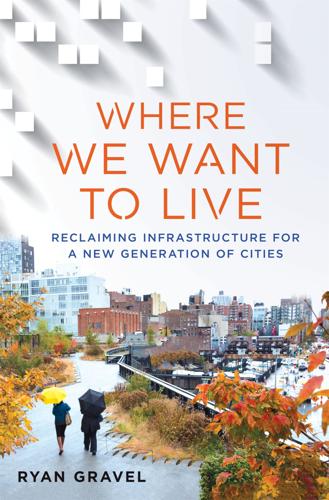
Where We Want to Live
by
Ryan Gravel
Published 2 Feb 2016
Atlanta truly was “a wide-open place,” and it seemed possible to transform the city into the kind of community where we wanted to live. So, in 2001, Karen and I began the process of looking for a place that we could afford. The housing bubble had not yet burst and the anxiety created by in-town land speculation was exceptionally high. Like most of our city-loving, upwardly mobile cohorts, we quickly faced a decision between a small condo in Midtown, a fixer-upper in red-hot East Atlanta, or a fine brick home in a less thriving part of town. But what really sounded the alarm on the urgency for homeownership was an article in Atlanta Magazine by an Atlanta writer, flight attendant, and local legend named Hollis Gillespie that I happened to read while I waited dutifully for my newlywed bride to finish Christmas shopping at Lenox Square Mall.
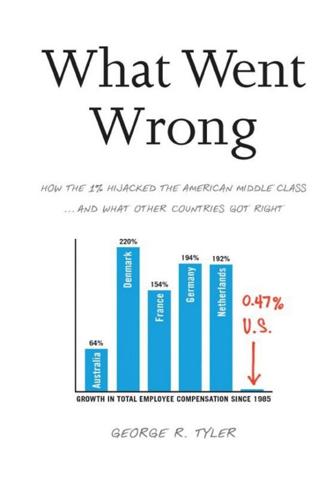
What Went Wrong: How the 1% Hijacked the American Middle Class . . . And What Other Countries Got Right
by
George R. Tyler
Published 15 Jul 2013
The courtship of the economic neophyte Reagan beginning in the 1970s was built on three elements: ▲ First, Milton Friedman’s philosophy was appealing to Reagan in his role as General Electric’s corporate spokesman to generally affluent shareholders. The notions of deregulation and the demonization of government were alluring to upwardly mobile Americans like Reagan and to major Republican Party business contributors like the ITT Corporation. ▲ Second, supporters conflated the cause of Reaganomics with that of democracy during the Cold War era, arguing powerfully that only laissez-faire economics was consistent with the American ideals of capitalism and democracy.
…
After all, it was founded by settlers fleeing the rigid, class-rooted, economic, religious, and social elitism of England and continental Europe, societies where since time immemorial those born poor died poor, and those born rich died rich. This unfounded belief is perpetuated by politicians, such as former vice-presidential candidate and Congressman Paul Ryan: “We are in an upwardly mobile society with a lot of movement between income groups. [In Europe] … top-heavy welfare states have replaced the traditional aristocracies, and masses of the long-term unemployed are locked into the new lower class.”5 Congressman Ryan is a leading Republican Party spokesman on budget issues and is known to substitute fiction for truth as when he said this at the Heritage Foundation.

The Code: Silicon Valley and the Remaking of America
by
Margaret O'Mara
Published 8 Jul 2019
(Even though there soon were senior women both in Apple’s marketing ranks and in the offices of Regis McKenna Inc., it still did not occur to anyone to pitch the friendly little product specifically to female consumers.)14 Over time, the company became even bolder in its product claims as it chased the hearts and minds of upwardly mobile American males. By the time the decade was out, its magazine ads featured actors dressed as great men of history, with both imagery and ad copy hammering home the message that Apple was changing the world. “What kind of man owns his own personal computer?” asked one, accompanied by a photo of an actor dressed as Ben Franklin, delightedly gasping at the wonders of an Apple II.
…
The Sony Walkman was made for being on the go, for taking your music with you in a way more portable and personal than ever before. Unveiled in 1979, just as fitness-crazed members of the Me Generation surged onto jogging paths and laced up their roller skates, the Walkman became a consumer electronics phenomenon. It sold in the hundreds of millions despite its $200 price, becoming the iconic accessory for the upwardly mobile 1980s. NASA sent a specially outfitted Walkman into space. Britain’s Princess Diana owned a gold-plated model. Sony’s print ads announced: “There’s a revolution in the streets.”1 As the nation’s sidewalks bristled with plugged-in music lovers, American electronics executives started losing sleep.
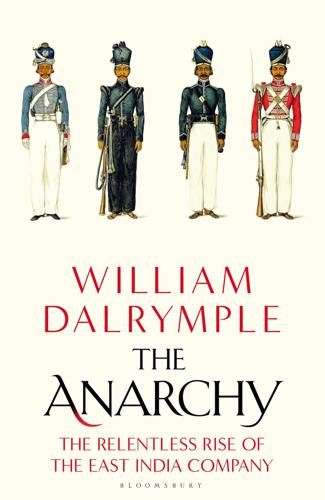
The Anarchy: The Relentless Rise of the East India Company
by
William Dalrymple
Published 9 Sep 2019
A few years earlier ‘Auditor Smythe’ had helped form the Levant Company as a vehicle for his trading voyages; this meeting was his initiative.4 Besides these portly pillars of the City of London were many less exalted merchants hopeful of increasing their fortunes, as well as a scattering of ambitious and upwardly mobile men of more humble estate, whose professions the notaries dutifully noted down: grocers, drapers and haberdashers, a ‘clotheworker’, a ‘vintener’, a ‘letherseller’ and a ‘skinner’.5 There were a few scarred soldiers, mariners and bearded adventurers from the docks at Woolwich and Deptford, surf-battered sea dogs, some of whom had fought against the Spanish Armada a decade earlier, all doublets and gold earrings, with their sea dirks tucked discreetly into their belts.
…
Among these was a brilliant and widely read but oddly malevolent and vindictive, as well as insatiably ambitious, young parliamentary secretary. Philip Francis was the son of an Irish Protestant clergyman who had been born in Dublin but brought up in London, who, as he wrote, ‘set out in life without the smallest advantage of birth or fortune’. Acutely self-conscious of his status as an upwardly mobile outsider, ‘ever on his guard against himself’, he was a skilled political operator with a love of subterfuge, deviousness and intrigue: he is the prime candidate for the authorship of the letters of ‘Junius’, inflammatory essays attacking George III and his ministers, which were published between 1768 and 1772, and widely reprinted in colonial America and continental Europe.65 It was the failure of Hastings and Francis to work together, and Francis’s ambition to get Hastings recalled and himself become the ruler of Bengal in his place – ‘this glorious empire which I was sent to save and govern’ – that was to lead to many further problems for the Company and effectively paralyse its goverment in India in the years to come.66 The other casualty of the Regulating Act and the parliamentary debates which swirled around it was, perhaps surprisingly, Clive himself.
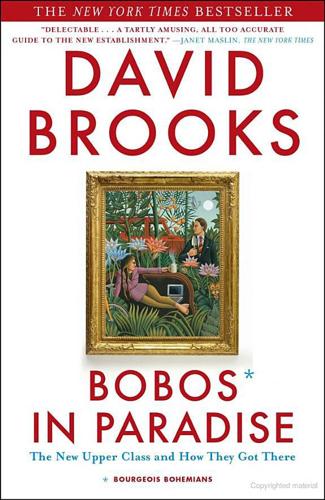
Bobos in Paradise: The New Upper Class and How They Got There
by
David Brooks
Published 1 Jan 2000
Explains numerous paradoxes of the late 20th and embryonic 21st centuries.” —Carlo Wolff, Fort Worth Star-Telegram “A serious social critic wittily dissects an American elite that blends Woodstock hedonism with corporate values.” —Chris Waddington, Star Tribune (Minneapolis) “A thoroughly entertaining shellacking of our most upwardly mobile friends and neighbors.” —Arthur McMaster, The Tampa Tribune “Erudite and readable. Delivers densely packed cultural history and observation sprinkled with gut-busting passages. Brooks’s eye is superb.” —Frank Bentayou, The Plain Dealer (Cleveland) “I tried to resist Bobos in Paradise … but once I started, I was reading big chunks of it out loud to passersby.”
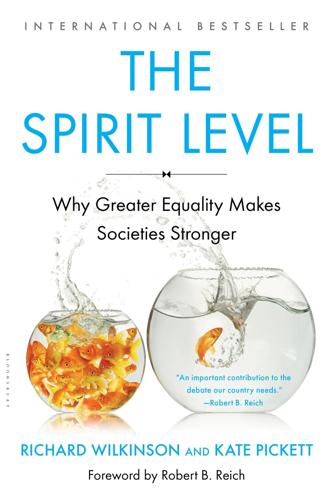
The Spirit Level: Why Greater Equality Makes Societies Stronger
by
Richard Wilkinson
and
Kate Pickett
Published 1 Jan 2009
Maybe obese young women suffer more discrimination in labour markets and the marriage market, than obese young men. Or maybe low social status is more of a risk factor for obesity in women than in men. Two studies within British birth ‘cohorts’ offer some clues. These studies are surveys of large samples of people born at the same time, and followed from birth. A study of people born in 1946 found that upwardly mobile men and women were less likely to be obese than those whose social class didn’t change between childhood and adulthood.129 In the 1970 cohort obese women, but not men, were more likely never to have had gainful employment and not to have a partner.130 In the USA and in Britain, female obesity in adolescence has been linked to lower earnings in adulthood.131–132 Although not limited to women, a recent survey of more than 2,000 Human Resource professionals found that 93 per cent would favour a normal-weight job applicant over an equally qualified overweight candidate.
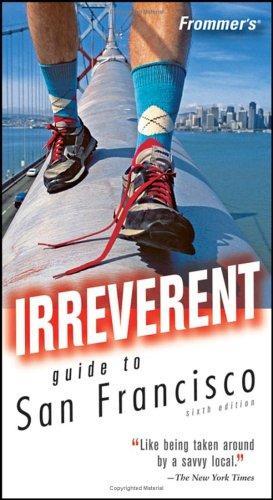
Frommer's Irreverent Guide to San Francisco
by
Matthew Richard Poole
Published 17 Mar 2006
NIGHTLIFE 188 that complained about wheat beers and apple beers, asking: “How about beer-flavored beer?” Now the city has settled into a comfortable old friendship with its many brewpubs, and you just don’t hear the word “microbrew” anymore. Gordon Biersch’s loud, yuppie-infested brewpub is generally avoided by non-upwardly-mobile locals, but the beers are well crafted and it can be a lot of fun if you don’t mind yelling to be heard by the person The Great American Music Hall next to you. Thirsty Bear In New York, blues singer Billie Brewing Company was named Holiday had to fight to perafter an escaped circus bear form at uppity Carnegie Hall. who, in 1991, bit the hand of a That never would have hapUkrainian pub patron and ran pened in San Francisco, where the closest thing to off with his beer (or at least Carnegie Hall is an ornate, that’s the story).
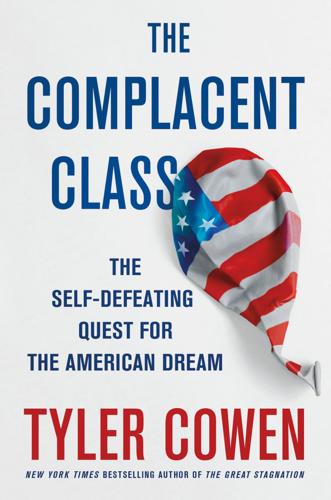
The Complacent Class: The Self-Defeating Quest for the American Dream
by
Tyler Cowen
Published 27 Feb 2017
Recognition is never more than an act of Google away, and so the American notion of class is based all the more on what a person already has done, and the class distinctions are enforced ultimately not by snobby matrons who run social circles but rather by the act of Googling itself. If you’re twenty-four years old and looking to get ahead, it can be tougher. There isn’t such a simple way to visually demonstrate you are determined to join the ranks of the upwardly mobile. Looking smart on “casual Friday” may get you a better date, but the boss will not sit up and take notice. In other words, a culture of the casual is a culture of people who already have achieved something and who already can prove it. It is a culture of the static and the settled, the opposite of Tocqueville’s restless Americans.
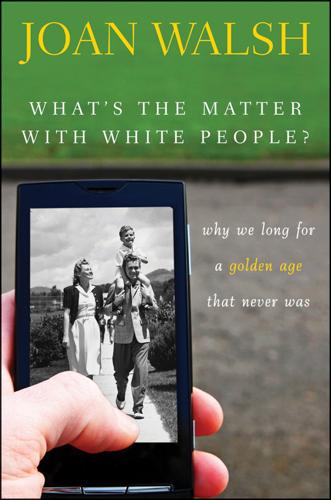
What's the Matter with White People
by
Joan Walsh
Published 19 Jul 2012
The mayor who wanted reconciliation so deeply accidentally created contention and white backlash.” That could be the epitaph of the Democratic Party somewhere around the same time. We watched from Long Island with optimism as the mayor vowed to unite the city. By the mid-1960s, New York had already become two New Yorks: one for upwardly mobile white-collar workers, and one for the declining working class of every race. My family had a foot in each. In 1945, New York had been solidly blue collar across all five boroughs, giving my working-class family its boost into the middle class. Yet Manhattan, where my father wore a suit and a tie to work, was becoming overwhelmingly white collar by 1965, and Lindsay was most definitely the mayor of white-collar Manhattan.
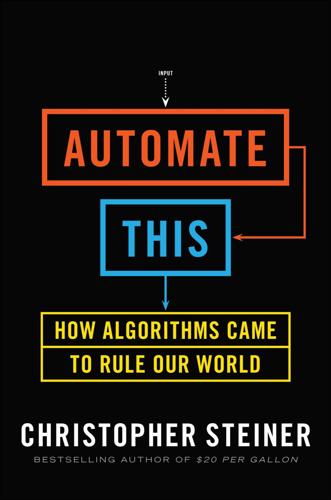
Automate This: How Algorithms Came to Rule Our World
by
Christopher Steiner
Published 29 Aug 2012
Algorithms have already written symphonies as moving as those composed by Beethoven, picked through legalese with the deftness of a senior law partner, diagnosed patients with more accuracy than a doctor, written news articles with the smooth hand of a seasoned reporter, and driven vehicles on urban highways with far better control than a human. And what will become of our duties as humans, our employment? Algorithms will have a say here too. Jobs we once blamed other countries for stealing are now being snatched away by faceless piles of computer code. It’s no coincidence that the most upwardly mobile people in society right now are those who can manipulate code to create algorithms that can sprint through oceans of data, recognize millions of faces, and perform tasks that just a few years ago seemed unthinkable. HACKERS: THE NEW EMPIRE BUILDERS There seem to be two divergent definitions of the term hacker floating about the modern lexicon.

Erwin Schrodinger and the Quantum Revolution
by
John Gribbin
Published 1 Mar 2012
The Viennese loved opera and music, and in the nineteenth century the tradition of Haydn, Mozart, and Beethoven was carried forward here by Schubert, Liszt, Brahms, and Bruckner. And, of course, the Strauss family. But the people who now enjoyed these cultural delights were increasingly, like Rudolf Schrödinger, the new bourgeoisie, rather than the old aristocratic class. Among the most important of these upwardly mobile groups were the Jews. Like all non-Catholics in Austria, they had had few rights (let alone privileges) before 1848, but as the grip of the authorities eased, Jews from all over the empire were among the people attracted to the capital. They made an economic and artistic impact out of all proportion to their numbers, in a society where casual anti-Semitism was common and “the Jews” often got the blame for anything wrong with society.
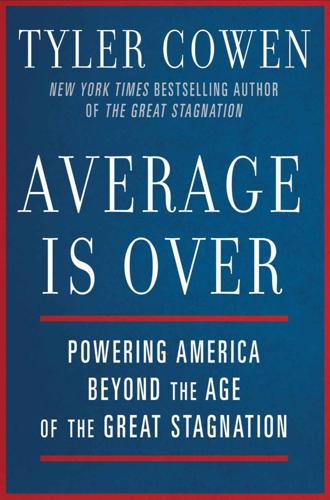
Average Is Over: Powering America Beyond the Age of the Great Stagnation
by
Tyler Cowen
Published 11 Sep 2013
It broke cleanly for Obama in the 2008 and 2012 elections and it is somewhat more Democratic than Republican in terms of party support, although the region still is not conducive to the more radical sides of the Left such as you might find in, say, Berkeley, California. Or look at where Occupy Wall Street has been strong as a movement. It holds great appeal for well-educated young people from the upper middle class, especially if they are underappreciated liberal arts majors who do not have the option of stepping into the highest-paying or most upwardly mobile jobs. It is not a broader American phenomenon that is catching fire on the docks of Elizabeth, New Jersey, or in the ailing Appalachian regions of Ohio or with religious homeschoolers in Idaho. If we extrapolate these trends into the future, we can expect the higher earners to identify with the values embraced by today’s moderate Democrats.
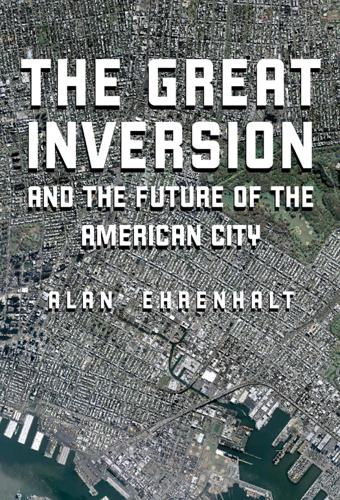
The Great Inversion and the Future of the American City
by
Alan Ehrenhalt
Published 23 Apr 2012
Their populations have turned over numerous times in the past half century, sometimes maintaining a consistent middle-class status, but sometimes sliding down a few notches on the socioeconomic ladder as new buyers replace the old ones. Middle-class African Americans wishing to flee the more troubled communities in the first category often settle here. The other troubled variant of postwar inner suburbia is the industrial working-class suburb, mass-produced after World War II for upwardly mobile blue-collar workers employed in factories nearby. The most serious problems faced by these suburbs are easy to describe, although they are profoundly difficult to solve. They include a disappearing manufacturing base, a supply of bungalow housing whose units are too small for the tastes of most modern buyers, and an aging population incapable of paying for the services that the suburban government is expected to perform.

The Places in Between
by
Rory Stewart
Published 1 Jan 2004
Islam does not encourage strong social distinctions, and the war and social revolutions in villages had destroyed many of the old feudal structures in Afghanistan. Nevertheless, villagers were very aware of one another's backgrounds. A multitude of points of etiquette, tradition, and tribal identities differentiated a servant such as Wazir from a feudal lord like Haji Mohsin and Haji Mohsin from a middle-class vet like Dr. Habibullah Sherwal or an upwardly mobile mullah such as the young commander of Obey. Class did not necessarily reflect education and experience. My current host, Seyyed Umar, was a wealthy man from a respected family of landowning clergy, but he could not read or write and had never been abroad. Abdul Haq, who was from a much humbler background, was literate and had traveled.
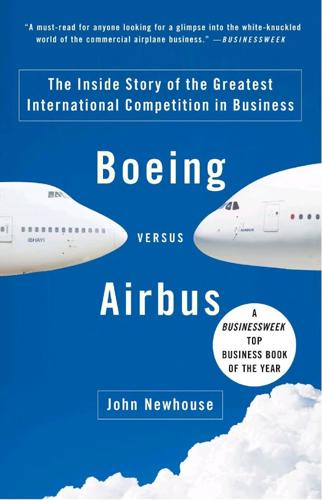
Boeing Versus Airbus: The Inside Story of the Greatest International Competition in Business
by
John Newhouse
Published 16 Jan 2007
“They all wanted the inside of the airplane to be different,” said Little. “The differences turned on the size and shape of the seats and on the location of the galleys and lavatories.”12 “The lavs and galleys are designing the airplane,” said Alan Mulally, who was then a vice president and one of the company’s other highly regarded and upwardly mobile engineers. He had succeed Condit as manager of the 777 program.13 “ANA,” he continued, “contributed 215 ideas, of which 160 were incorporated. Inevitably, one involved the lavatory, in this case the toilet seat. ANA worried about the ‘problem hit sound’—the falling seat. A rubber bumper on the seat, they felt, wasn’t good enough, and they recommended a mechanical bumper.”

The Twittering Machine
by
Richard Seymour
Published 20 Aug 2019
An analysis of Trump’s tweets during the election found that they effectively substituted for campaign position statements.54 Most of his tweets attacked the Washington establishment, blaming it for uncontrolled migration, terror and job losses, rather than advocating a policy position. He limited public access to his governing agenda. Clinton’s online campaign struggled, by contrast, to build hashtagged enthusiasm with #ImWithHer and such memes as the #pantsuit, soliciting the enthusiasm of upwardly mobile career women struggling against sexism. Some of her tactics downright failed, including a listicle identifying her with ‘your abuela’, where ‘abuela’ is the Spanish word for ‘grandmother’. Latin voters, far from being impressed, began to post criticisms of her support for militarized border controls with the hashtag #NotMyAbuela quickly going viral.
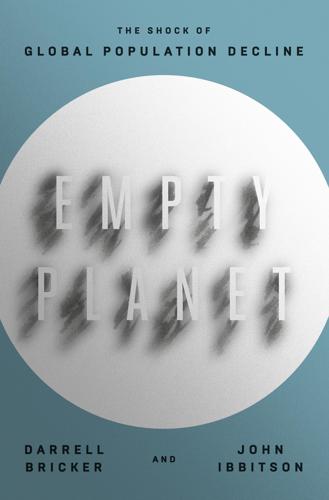
Empty Planet: The Shock of Global Population Decline
by
Darrell Bricker
and
John Ibbitson
Published 5 Feb 2019
In the School of Philosophy, Languages and Literature, and Human Sciences and Letters building, there is no apparent sign of air conditioning, despite the brutal mid-summer heat. Funding cuts, we are told, have led to neglect and disrepair across the university. We are here to talk to the Brazilian equivalent of the university students in Korea, the dinner party in Belgium, the young professionals in Nairobi: the upwardly mobile, educated, professional, ambitious members of a society. How do their experiences and perceptions differ, or match up, with their counterparts in other parts of the world? The results surprise us. Professor Lorena Barberia, from the university’s political science department, has assembled a dozen students attending a graduate summer program.

Sarah Millican--The Queen of Comedy
by
Tina Campanella
Published 14 Apr 2017
But, perhaps showing how things had started to change, in 2010, Jerry Seinfeld didn’t even get into the top 10, and the overall amount earned was well down on the previous year. But, in the meantime, Sarah Millican has been on a high and taking advantage of the fact that comedy is currently literally gold. And, perhaps true to her upwardly mobile working class roots, she is adamant that she will be not one of those left working in a kiosk at the end of her career. Shortly after the incident with the videoing fan, she made no bones about the fact that it was essential to preserve the source of her income, to make sure she didn’t end up with nothing worthwhile to say.

Live Work Work Work Die: A Journey Into the Savage Heart of Silicon Valley
by
Corey Pein
Published 23 Apr 2018
Soon more would witness and shudder before the thing I had only just glimpsed: the emergence of determined fascist movement builders, taking their online organizing into the real world. Theirs was a vast but slapdash network of alienated, underemployed man-children; tortured, gynophobic gamers; and upwardly mobile, right-curious tech dudes. Emboldened, they crawled from underground online haunts like Stormfront and the 4chan forums into the light of day and, after Trump’s election, to the city square—in Berkeley, Portland, New York, Charlottesville. They waved war flags adorned with strange idols like Pepe the Frog and chanted paeans to Kek, an ancient Egyptian god adopted by internet racists.
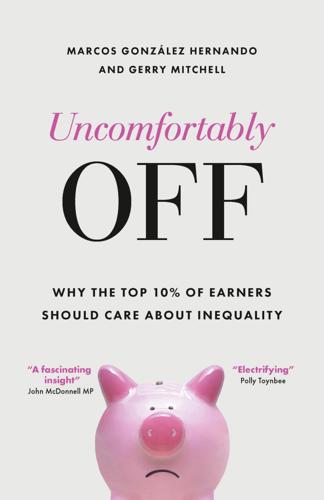
Uncomfortably Off: Why the Top 10% of Earners Should Care About Inequality
by
Marcos González Hernando
and
Gerry Mitchell
Published 23 May 2023
When we were carrying out this research, we were an early-career sociologist looking for a footing in a precarious, internationalised academic labour market and a freelance social policy researcher who had moved out of London to Woking, a solidly Conservative constituency, and ran as Labour’s parliamentary candidate in the 2019 general election. Marcos is the son of upwardly mobile doctors from Chile – themselves of middle-class background in the US sense of the term. He grew up during the decades that followed Pinochet’s 8 Introduction dictatorship, which saw his country become one of the wealthiest and most unequal in Latin America. In 2009, he came to the UK to study at some of the most prestigious universities in the world.
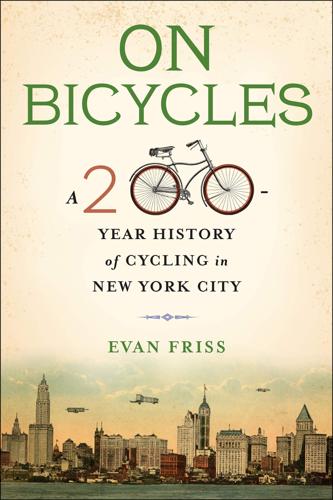
On Bicycles: A 200-Year History of Cycling in New York City
by
Evan Friss
Published 6 May 2019
Peter Tuckel and William Milczarski, “Bike Lanes + Bike Share Program = Bike Safety: An Observational Study of Biking Behavior in Lower and Central Manhattan,” January 2014, http://silo-public.hunter.cuny.edu/62eaab1fad6c75d37293d2f2f6504a15adacd5c6/Cycling_Study_January_2014.pdf; “Tips and Fear on Wheels,” New York Times, March 4, 2012; Getman, Gordon, Hostetter, and Riola, Safer Cycling. 65. For more on inequities, see, for example, Melody Hoffman, Bike Lanes Are White Lanes: Bicycle Advocacy and Urban Planning (Lincoln: University of Nebraska Press, 2016); she argues that “white upwardly mobile people” used “their cultural privilege and power to control how their advocacy will materialize in cities.” For other critiques highlighting some of the failures associated with recent bicycle advocacy attempts, see Adonia E. Lugo, “Body-City-Machines: Human Infrastructure for Bicycling in Los Angeles” (PhD diss., University of California, Irvine, 2013); Adonia E.
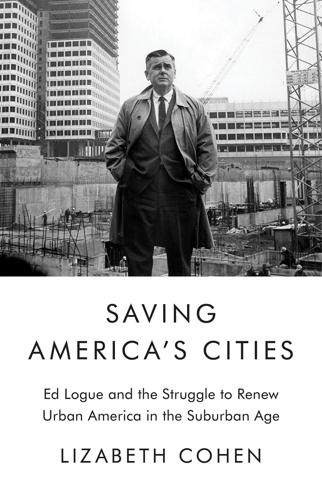
Saving America's Cities: Ed Logue and the Struggle to Renew Urban America in the Suburban Age
by
Lizabeth Cohen
Published 30 Sep 2019
Ryan likened Boston to “an apple with a shiny skin, rotten at the core.”20 Into the next decade, the local developer William Poorvu made sure to focus his own real estate investing on Harvard Square and Route 128, “markets [that] were outside the urban center.”21 Route 128 and the Massachusetts Turnpike that followed it also opened up vast new suburban tracts for residential development, luring away the younger, more upwardly mobile of the city’s population. Many were ex-GIs well supplied with VA mortgage loans usable only in white, middle-class suburbs, not in the inner-city neighborhoods of their parents and grandparents, which were redlined by banks.22 They were also driven out by the city’s poor services and deteriorating, outdated housing.
…
More than its fair share of low-income public housing projects were located here. The redlining of heavily ethnic neighborhoods discouraged investment in what had been—and often still were—blocks of decent six-story brick apartment houses. Cheap mortgages through the GI Bill and the Federal Housing Administration made homes in the suburbs an attractive option for white, upwardly mobile returning veterans, particularly when there were relatively few opportunities for homeownership in the rental-dominated Bronx. And the development from 1966 to 1973 of Co-op City—the largest cooperative residential community in the world, with more than fifteen thousand units in thirty-five high-rise towers—lured lower-middle-class residents away from their old Bronx neighborhoods to a new, state-subsidized, affordable alternative nearby in the far northeastern reaches of the borough.
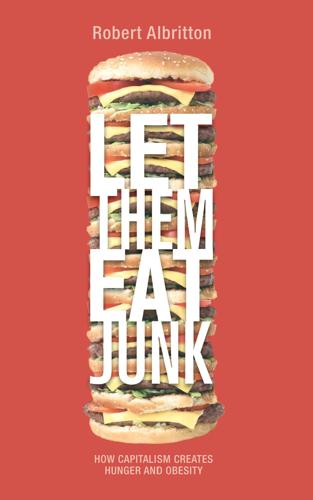
Let them eat junk: how capitalism creates hunger and obesity
by
Robert Albritton
Published 31 Mar 2009
Television in the United States started out not only as highly commercial, but also as highly concentrated. The centrality of profit making has meant that television networks must always strive to accumulate the maximum possible audience for their flow of commercials. In other words, they aim to capture audiences who have money to spend now or will have in the future, primarily the white upwardly mobile middle and upper middle classes.72 Today, the bulk of prime time television shows are produced in Los Angeles by a small number of companies, and the 100 top US advertisers pay for two-thirds of all network television. As a result television tends to homogenize the cultural environment. In the 1950s and 1960s American television was dominated by ABC, CBS and NBC, whereas today it is dominated by a small number of global media conglomerates.

The New Urban Crisis: How Our Cities Are Increasing Inequality, Deepening Segregation, and Failing the Middle Class?and What We Can Do About It
by
Richard Florida
Published 9 May 2016
The aspiring working and lower middle classes settled in smaller, denser, closer-in suburbs, such as Levittown on Long Island, or North Arlington, New Jersey, where I grew up. The poor and the truly disadvantaged were crammed into inner-city ghettos like Chicago’s South Side, or New York’s South Bronx, or parts of Newark, not far from where I was born. By the 1970s, it was generally the case that suburbs were predominantly affluent, upwardly mobile, and white, while cities were declining, hollowed out, and increasingly populated by members of minority groups and the poor. Karl Marx’s disciples, following his lead, have long believed that class identity is forged in the workplace—on the factory floor, so to speak. Yet class today in America is not just about the kind of work we do but also about the places in which we live, which shape everything from our access to jobs and economic opportunity to the schools our kids attend, our health and well-being, and our prospects for upward mobility.
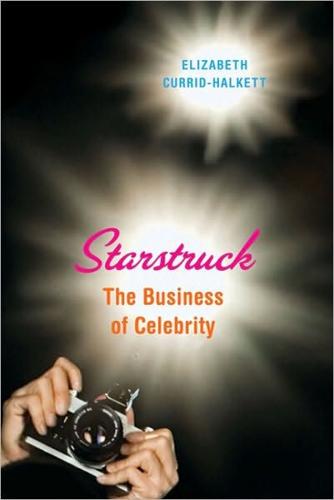
Starstruck: The Business of Celebrity
by
Currid
Published 9 Nov 2010
Celebrity and the “Pseudo-Event” One spring afternoon in London, my boyfriend (now husband), Richard, and I were strolling along the South Bank of the Thames. The South Bank is a formerly dodgy, now gentrified part of town that has a magnificent view of Westminster and Big Ben and is quickly becoming one of the most desired neighborhoods for the upwardly mobile and trend conscious. En route to lunch, we found ourselves in the midst of a great commotion under way at the Royal Festival Hall, an enormous entertainment venue located on the river. Massive crowds of people had formed a circle around a mysterious presence. Photographers were snapping away.
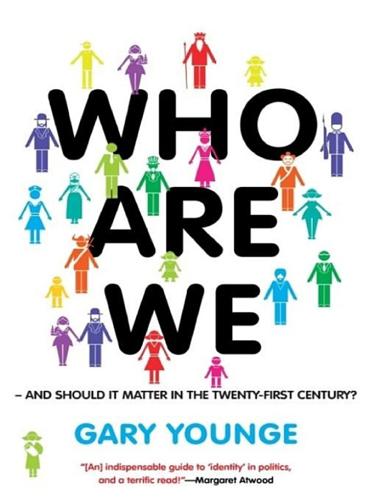
Who Are We—And Should It Matter in the 21st Century?
by
Gary Younge
Published 27 Jun 2011
You’re a fucking wanker and you can stick your World Cup up your arse. The only reason I have any dealings with you is that somehow you are the manager of my country and you’re not even Irish, you English cunt. You can stick it up your bollocks.” In a column in the Irish Times explaining the outburst, O’Toole wrote: “Like the new Ireland, [Keane] is rich, upwardly mobile and driven by a ruthless work ethic. He doesn’t recognize the concept of heroic failure. He despises mediocrity and laziness. He believes that nothing less than excellence is good enough, whether in a Champions League final or a five-a-side kickabout after training. This Ireland, however, is a recent and still rather raw phenomenon.
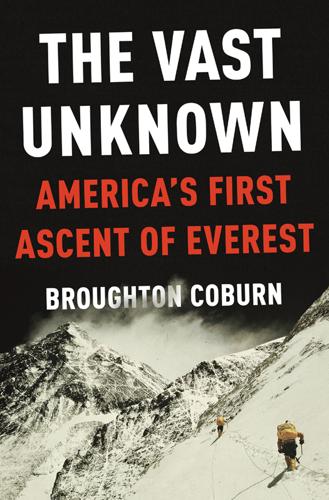
The Vast Unknown: America's First Ascent of Everest
by
Broughton Coburn
Published 29 Apr 2013
The expedition foreman received sixteen rupees per day (just more than a dollar in 1963), and a high-altitude porter less than half that—though they could earn substantial bonuses. The Sherpas were fed and clothed. The society also functioned as a labor union, protecting the Nepalese Sherpas from the more experienced Darjeeling Sherpas, who might otherwise corner the best expedition jobs. The upwardly mobile Darjeeling Sherpas had immigrated to India from Nepal a generation or more before, leaving their subsistence, pastoralist Khumbu relatives behind. The Nepal-based Sherpas treated their Darjeeling Sherpa brethren courteously, but warily. Sherpas in one group tended to be related to Sherpas in the other, anyway.

Digital Bank: Strategies for Launching or Becoming a Digital Bank
by
Chris Skinner
Published 27 Aug 2013
People who want to feel there is a physical space to see where there money is? People who are resistant to change? People who have not been introduced to the alternatives? People who are unsure of the alternatives and need education as to what they can do? A little like the many people who resisted getting a mobile telephone as they were just for yuppies (young, upwardly mobile, professionals), but now depend upon them; or the folks who thought they didn’t need the internet until it became a consumer proposition; those who are not using mobile or internet banking are doing so for a variety of reasons: fear, insecurity, distrust, lack of access, lack of knowledge and more.
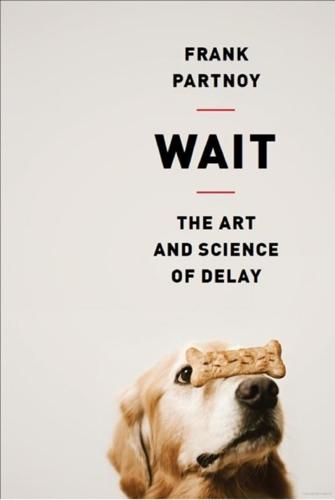
Wait: The Art and Science of Delay
by
Frank Partnoy
Published 15 Jan 2012
After World War II, labor economists predicted that the role of hourly pay in the US economy would decline.10 They were correct for a couple of decades, but since the 1970s the number of American workers paid on an hourly basis has steadily increased.11 Today more than 58 percent of all wage and salary workers in the United States are paid at hourly rates.12 The average size of hourly pay is increasing, and hourly wages are increasingly common among the middle class and in upwardly mobile professions, including not only law, accounting, and consulting but increasingly medicine. Although one-fifth of hourly workers are under age twenty-five, fewer than 5 percent of hourly jobs are at or below the minimum wage.13 To many people, independent hourly work seems an ideal alternative to working for a large organization.

Kick Me: Adventures in Adolescence
by
Paul Feig
Published 23 Sep 2002
Each girl was wearing a red or green short dress with white fur on the hem and on the ends of her sleeves. They had on matching stockings and shoes that all seemed to have just the right amount of curl. Their shoes also made their feet look actual size. I guess even in Christmas Town, obscenely big feet are a no-go for the upwardly mobile female elf. When the girls spotted me, they stared in disbelief. I saw a few of them stifle laughter. Amanda, despite her Coke bottle glasses, blinked at me and said, “You look weird.” “I’m an elf who doesn’t know the meaning of Christmas. I’m sup-posed to look this way,” I said in a haughty tone.

The Real Doctor Will See You Shortly: A Physician's First Year
by
Matt McCarthy
Published 6 Apr 2015
Our orientation leaders, a peppy group of second-and third-year residents, had instructed us to exude a demented degree of enthusiasm at all times, which wasn’t difficult now that my blood was more caffeine than hemoglobin. “Just relax,” he said, “and take a look around.” Together we scanned the fluorescent room, an enclosed space the size of a tennis court containing critically ill patients and upwardly mobile Filipino nurses bustling between them. The perimeter, painted a regrettable shade of yellow, housed the patients in glass cubicles, while the center, where we were sitting, was mission control, filled with chairs, tables, and computers. “It’s just you and me tonight,” Baio said, whipping his stethoscope back and forth around his neck.
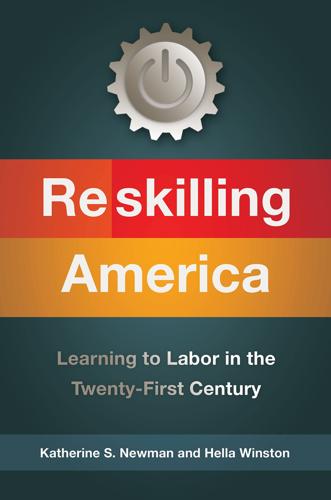
Reskilling America: Learning to Labor in the Twenty-First Century
by
Katherine S. Newman
and
Hella Winston
Published 18 Apr 2016
While other countries linked skilled manufacturing to international trade dominance with almost nationalist zeal, Americans pushed the blue-collar training agenda into an educational corner and virtually ensured that anyone who ventured there would be tarred by stigma. The route to middle-class status ran through the managerial, white-collar, or professional world and getting a ticket was the ambition of the upwardly mobile. As far back as the 1950s, the United States had developed a high-powered academic curriculum for elite students—the fledgling system of AP examinations was its national flag bearer. But this was the pathway of the few. Ordinary students were stuck with vocational or general education tracks that offered little more than watered-down versions of academic courses.

The Ecotechnic Future: Envisioning a Post-Peak World
by
John Michael Greer
Published 30 Sep 2009
Finally the internal proletariat makes common cause with the external proletariat — the people 195 196 T he E cotechnic F u t u re of surrounding societies exploited by the civilization, who never had any stake in its survival to begin with — and everything comes crashing down. As the privileged classes find themselves stripped of wealth and power by the upwardly mobile warlords of the ensuing dark age, the imperial society’s cultural resources no longer have any value in the eyes of the masses. The result is a feedback loop that amplifies the impact of collapse. Pious hands tore down the temples of Roman gods and recycled the mathematical papers of Archimedes to provide parchment for Christian homilies, for example, because most people in the post-classical world no longer felt any loyalty to the culture of their ancestors and turned to the creative minority of a rising culture for inspiration no longer available from what was left of the dominant minority of the old.
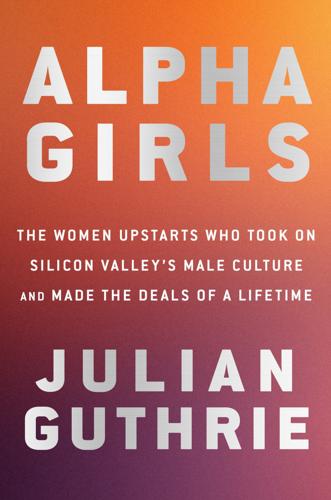
Alpha Girls: The Women Upstarts Who Took on Silicon Valley's Male Culture and Made the Deals of a Lifetime
by
Julian Guthrie
Published 15 Nov 2019
She took naps when Tess took naps instead of cleaning and helping out with the house. Finally after her eighth chemo treatment, Sonja had to fire them. She gave them two weeks’ severance but asked them to leave immediately. She put an ad in Craigslist: “Nanny position available for upwardly mobile business professionals.” With the economy still in a recession and the unemployment rate rising, Sonja received more than two hundred applications. She hired two nannies, each to work three days a week. She wanted them to have time to pursue their own careers. One young woman she hired would go on to attend Harvard, and another would work her way through medical school.
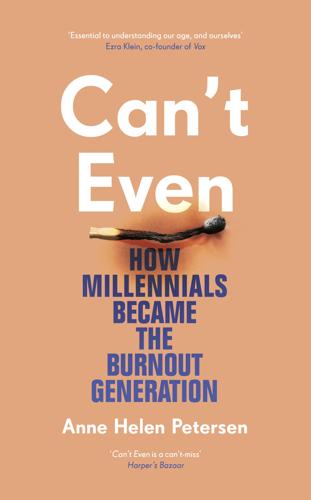
Can't Even: How Millennials Became the Burnout Generation
by
Anne Helen Petersen
Published 14 Jan 2021
Her mom taught her to give every teacher a gift, she wrote every adult a holiday card, she took notes at every conference or public speaking event. Maya calls those tendencies—which she still practices, in slightly modified form—“insanely anal teacher’s pet behaviors,” but they could also be called preparation for the upwardly mobile workplace. Maya’s mother was extremely conscientious and knew the language of good parenting, often repeating the refrain of “You can tell me anything.” But when Maya wanted to talk about body issues, or negative thoughts, or obsessive fears, her mother quickly became frustrated. She took Maya to a therapist, but seemed unwilling to directly engage with the messiness of parenting.

Municipal Dreams: The Rise and Fall of Council Housing
by
John Boughton
Published 14 May 2018
The constant was the failure of the free market and private enterprise to provide the healthy and affordable homes that ordinary people needed and deserved. It reminds us that council homes – built in large numbers from the 1890s, more so after the two world wars – have been, for most of that long history, aspirational housing: the mark of an upwardly mobile working class and the visible manifestation of a state which took seriously its duty to house its people decently. The state didn’t, of course, get everything right. Constraints on public investment were, nearly always, an impediment to the best of what might be achieved. Planners, sociologists and hostile politicians criticised the suburban ‘cottage’ estates which dominated the interwar and early postwar years just as they did the tower blocks which arose in the 1960s.

Rigged: The True Story of an Ivy League Kid Who Changed the World of Oil, From Wall Street to Dubai
by
Ben Mezrich
Published 11 Aug 2008
None of them seemed even remotely surprised when David told them where he worked; it was obvious that none of them doubted for a moment that Dubai was becoming the focus of every business—not just real estate, tourism, and banking. And from what he’d seen of Dubai so far, David had to admit that no upwardly mobile young man would need any excuse to want to be there. “And this is just one of a dozen parties going on tonight,” Seebeck said to David as his friends bantered with each other about some soccer league they had started with a group of Indian money managers. “There’s another set of condos about four blocks away full of corporate secretaries—mostly Swedish and Swiss—that we may visit if this gets tiresome.
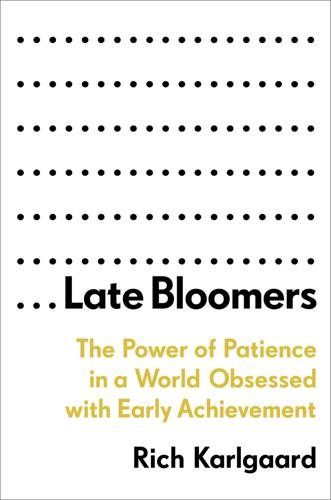
Late Bloomers: The Power of Patience in a World Obsessed With Early Achievement
by
Rich Karlgaard
Published 15 Apr 2019
It’s tempting to say that poorer people are held back simply by lack of financial resources, especially today as the wealth gap between rich and poor is the highest it has been since the 1920s. But it’s more complicated than that. As Vance notes, the problems in poor communities are also cultural. The few upwardly mobile people from the community often leave and thereby deprive the community of role models for success. Many of those left behind fall into a fatalism that leads to drugs and alcohol. As employers leave, citing lack of qualified employees, community trust collapses, and with it a hopeful sense of the future.

Data Action: Using Data for Public Good
by
Sarah Williams
Published 14 Sep 2020
For example, social media sites such as Foursquare, Twitter, and Flickr are more heavily used in urban environments,31 and within these areas the majority of data is recorded in commercial areas,32 which means the data can only be accurately used to describe these places. Self-selection bias can also be manifest in social media because users tend to be young and upwardly mobile; therefore, analysis of this data tells us more about them than it does about a population of retirees on a limited budget.33 Twitter has a more diverse user population, with more African American and Hispanic users compared to Foursquare, whose users are largely young white males.34 A user's impulse to contribute data also can introduce a certain level of bias.
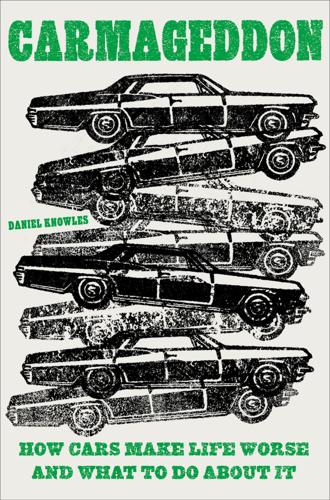
Carmageddon: How Cars Make Life Worse and What to Do About It
by
Daniel Knowles
Published 27 Mar 2023
But the idea of “peak car” is still credible, because the reason young people are moving to suburbs and buying cars now is largely because of the inflated cost of living in walkable neighborhoods, rather than because of any deep affection for big front lawns and driveways with two vehicles in them. In the 1960s and ’70s, moving to the suburbs was an upwardly mobile move—it took you from a declining neighborhood in a noisy and polluted city to somewhere fresh and safe. These days it is something done reluctantly, usually because people cannot afford enough space to raise a child otherwise. What that means is, there is an opportunity to provide more people with the chance to stay in cities, where they can use public transport, bicycles, and their own two legs to get around.
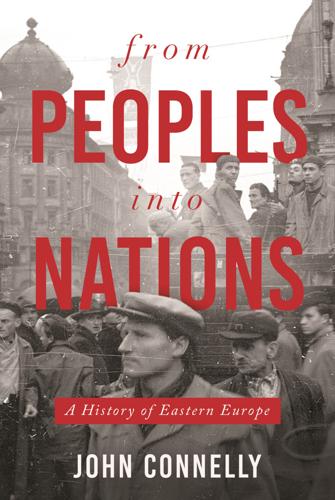
From Peoples into Nations
by
John Connelly
Published 11 Nov 2019
And they were courageous, acting in clear violation of the law, before revolution had prevailed in Vienna. The organizers included a roofer, inn-keeper, miller, several students, and a lawyer.34 The invitation to Czechs did not exclude Germans, yet because Prague was mostly Czech and those who attended were from the social margins, Czechs (especially upwardly mobile students) formed the core constituency. The Germans among the early revolutionary leaders tended to be radicals, who, for the sake of social change, were willing to support language rights for Czechs.35 A petition was formulated for the emperor that recognized two nations in Bohemia, yet only the Czech was “original and therefore had paramount right to the territory.”
…
They also took an important place in the agricultural economy, as landowning farmers, but also as tenants and salaried employees of large landowners, who valued Jews as efficient and rational producers.51 By World War I, Hungary’s elite seemed to be opening up to Jews as well. In 1914, one-fifth of the large landholders were Jews, and over one-fifth of the deputies in parliament were of Jewish parentage.52 Tens of thousands of upwardly mobile Jews also excelled in patriotism, and as teachers, journalists, and professionals went into Slovak and Romanian areas spreading Magyar culture. Numerically, Magyarized Jews made the culturally Magyar population just over half of the Hungarian kingdom. At the same time, the lower class Magyar Christian population, unable to adapt as quickly to the challenges of modernization, looked on the advance of Jews with skepticism and jealousy, becoming further alienated from the gentry elite.
…
Or that if Jews entered Communist parties, that was because they tended to live in urban areas from which Communists drew support; or that Communists radically opposed ethnic discrimination.9 In fact, Communists were a small minority among Jews, who tended to support Zionist, moderate socialist, and traditional parties. Upwardly mobile ethnic Romanians who aspired to urban careers believed that Jews unfairly usurped middle-class jobs: 80 percent of textile industry engineers, 51 percent of doctors in the Army Medical Corps, and 70 percent of journalists were Jews. The number of Jews in the professions, banking, or commerce in Hungary was similarly high.

Globish: How the English Language Became the World's Language
by
Robert McCrum
Published 24 May 2010
Allowing for the fact that such abbreviations occur in all the world’s main languages, including Chinese, which uses the Pinyin convention, the requirements of texting have begun to make a decisive contribution to Globish. In China today, for instance, the popularity of the BlackBerry has had a dynamic, transformational effect on upwardly mobile, middle-class Chinese who have enthusiastically embraced Globish to exploit the opportunities of the BlackBerry keypad. Before the advent of the BlackBerry, Rob Gifford, author of China Road, described Chinese texting as follows: ‘Write the character you want in romanised letters (mao, xia, zu, wang, or whatever), then hit Return, and a selection of all the characters that fit that sound comes up, and you highlight the one you want, and hit Return again.

Affluenza: The All-Consuming Epidemic
by
John de Graaf
,
David Wann
,
Thomas H Naylor
and
David Horsey
Published 1 Jan 2001
(They don’t want you to call them anymore in this age of HMOs, but that’s a different issue.) Well, a case of affluenza calls for bed rest, too. We just define it a little differently. But the point is the same: Stop what you’re doing. Stop now. Cut back. Take stock. Give yourself a break. FORCED TO REASSESS Sometimes we have to hit bottom to do that. Fred Brown was once upwardly mobile, the personnel director of a large company. He was earning $100,000 a year. On the outside, it looked as if he had everything—a great job, a big home, and a beautiful family. But on the inside, Fred felt like a prisoner in golden handcuffs. He worked long hours and found little time for his wife and two daughters.
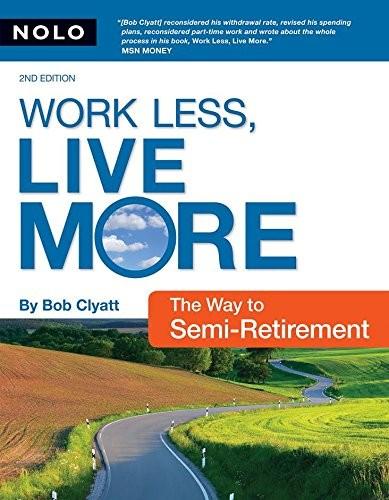
Work Less, Live More: The Way to Semi-Retirement
by
Robert Clyatt
Published 28 Sep 2007
Longer trips usually end up a better deal under the miles programs. 134 | Work Less, Live More Home improvements Bare-bones semi-retirees and the generally frugal can skip this section; since you have never succumbed to this particular insanity, there won’t be any major savings waiting for you here. The housing-on-steroids arena can rapidly absorb vast amounts of money. Landscaping and decorating among some of the upwardly mobile seems to have taken on the quality of some sort of ancient ritual sacrifice or potlatch, with huge sums of money being thrown onto the pyre of décor. Of course, you’ll need to maintain your home and, since you may be spending more time there, making it a pleasant place to spend time will be worthwhile.

The Revenge of Analog: Real Things and Why They Matter
by
David Sax
Published 8 Nov 2016
Perhaps if we are all creative enough, the lowered cost of living (thanks to improved technology) and the rapidly expanding opportunities for on-demand freelance work will more than supplement the disruption of the traditional workplace. This is a promising tale, but there is a catch. Undoubtedly the technology industry creates many jobs, but the jobs it provides tend to be rather specific and geared toward educated, upwardly mobile (and overwhelmingly male) individuals. Uber drivers notwithstanding, most of these jobs require very specific skills, and the reality is that acquiring those means access to technology (computers) and education, plus a degree of technological literacy that provides a high barrier to entry. Everyone may want to work in digital technology, and the jobs may be there, but it’s not as simple as walking up to the doors of Google and saying you’re smart, strong, and willing to do whatever it takes.
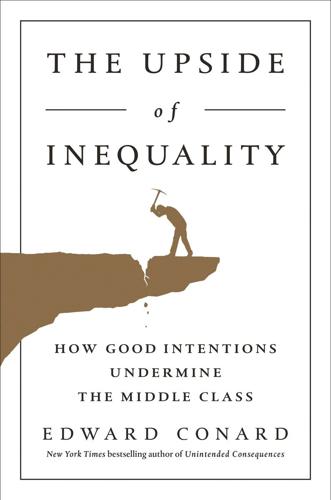
The Upside of Inequality
by
Edward Conard
Published 1 Sep 2016
African American students are twice as likely as white, non-Hispanic students not to complete high school on time—30 percent versus 15 percent, respectively—and up nearly 10 percent over the last nine years.17 The proportions are higher still among poor children. Completing high school on time is a strong indication that a student will be a reliable worker—the kind of worker who is upwardly mobile. Failing to complete high school, even if a student later earns a General Educational Development (GED) certificate, has a significant effect on upward mobility. Visit bit.ly/2bTgSEm for a larger version of this image. No surprise, the Brookings Institution study finds that dropping out of high school has the same detrimental effect on mobility for all but the highest-income children (see Figure 7-6, “Effect of Dropping Out of High School on Income Mobility”).18 If the child of rich parents drops out of high school, unlike other children, the rich parents can give the child money to offset the high cost of dropping out of high school.
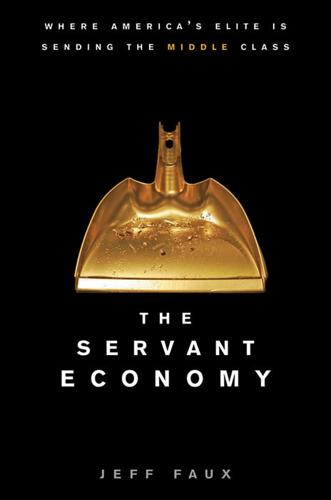
Servant Economy: Where America's Elite Is Sending the Middle Class
by
Jeff Faux
Published 16 May 2012
A 2009 study by Ann Huff Stevens and Jessamyn Schaller of the University of California at Davis found that when a parent loses his or her job, it increases the chances of a child being held back a grade by 15 percent.5 Young people out of school and burdened with debt—many of whom move back in with their parents or share a crowded apartment while they hold down several jobs in their twenties—will find themselves, in their thirties, still stuck in low-paying jobs with few prospects. Without important connections, indulgent parents, or extraordinary talent the days of meandering from college to several years of “finding oneself” while driving cabs or waiting on tables to eventually jumping back on track to an upwardly mobile professional career are over. With not enough professional jobs to go around, large numbers of college-educated people will remain stuck in doing work for which their education was unnecessary. Even so, they will have an advantage in the competition. Everything else being equal, employers would rather have a college graduate waiting on tables, grooming and walking dogs, and mowing lawns.
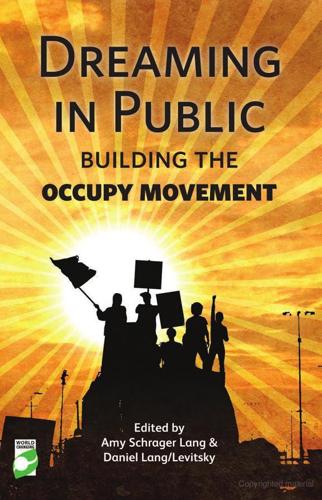
Dreaming in Public: Building the Occupy Movement
by
Amy Lang
and
Daniel Lang/levitsky
Published 11 Jun 2012
I was at a general assembly for Occupy/Decolonize Oakland last night, as I have been a few times in the previous two-and-half weeks, and while there is certainly a prominent core of white activists who are present, there is no shortage of folks of color participating, offering leadership, and directing the conversation. A lot of those folks of color are, like me, upwardly mobile and college-educated. That is a good thing and that is also a real problem. Many of us are not the most vulnerable of – to use a formulation that I don’t love but can live with for now – the 99%. The perception that this is somehow a white movement not only underestimates the ways in which the movement is actually in flux and shifting from day to day, but also the ways in which it may represent a genuine political opportunity for communities of color more broadly if they/we can find ways to mobilize themselves/ourselves, and to tell black petit bourgeois folks like Ishmael Reed and the folks who believe him that they/we have an alternative political vision and actually don’t need to be spoken for, thank you very much.

Garbage Land: On the Secret Trail of Trash
by
Elizabeth Royte
Published 1 Jan 2005
I had seen the garbage piles and the trucks they rode around on, and heard the anger and frustration of citizens who live at the margins where garbage settles. Two hundred thirty-two million tons of municipal solid waste a year, the EPA’s national figure for 2003, isn’t a small pile. But the more important point is that the 2 percent is not unrelated to the 98 percent, which has everything to do with the back end of our upwardly mobile lifestyles. Remember William McDonough: “What most people see in their garbage cans is just the tip of a material iceberg: the product itself contains on average only 5 percent of the raw materials involved in the process of making and delivering it.” And remember Paul Hawken: for every 100 pounds of product that’s made, 3,200 pounds of waste are generated.

Present Shock: When Everything Happens Now
by
Douglas Rushkoff
Published 21 Mar 2013
It’s why so many long for a “singularity” or a 2012 apocalypse to end linear time altogether and throw us into a posthistoric eternal present—no matter the cost to human agency or civilization itself. But it’s also how we find out what’s happening on the streets of Iran before CNN can assemble a camera crew. It’s what enables an unsatisfied but upwardly mobile executive to quit his job and move with his family to Vermont to make kayaks—which he thought he’d get to do only once he retired. It’s how millions of young people can choose to embody a new activism based in patient consensus instead of contentious debate. It’s what enables companies like H&M or Zara to fabricate clothes in real time, based on the instantaneous data coming from scanned tags at checkout counters five thousand miles away.

Devil's Teeth: A True Story of Obsession and Survival Among America's Great White Sharks
by
Susan Casey
Published 29 May 2006
Russ and Pete looked at each other, ungroomed for weeks, facial hair running amok. “It’s been seventy-eight days!” Russ yelled at the screen. Even so, the five of them were loving their time here, never mind that they had to work fourteen hours at a stretch to keep up with the birds. Simply put, they were happy. There was no whiff of the driven, anxious, upwardly-mobile-or-die young professional. They’d made a career choice that had nothing to do with money and everything to do with the fact that they’d never lost the child’s sense of amazement about nature. It was as though the “career goal” entry on their résumés read: “To stay as far away from an office cubicle as humanly possible.”

Among Schoolchildren
by
Tracy Kidder
Published 14 Jun 1989
He had Puerto Rican friends, South American friends, white and black North American friends, and though he had no interest in being a boss of any sort and mainly kept company with working men, he could travel easily in most of the worlds of balkanized Holyoke, including that of the country club—he was a marvelous, mainly self-taught golfer. He could wear an oxford shirt and necktie and speak the local language, in every sense, and never act obsequious or look as though he felt out of place. And yet this upwardly mobile and versatile traveler—skilled in all ways of contending—still had Some jibaro in him. He had a good job, and so did his wife. He could afford to live elsewhere. He chose to live in the Flats. When puzzled friends asked him why, he said, "I want to know what's going on with my people." He could afford a telephone, of course, but he thought phones were a nuisance.
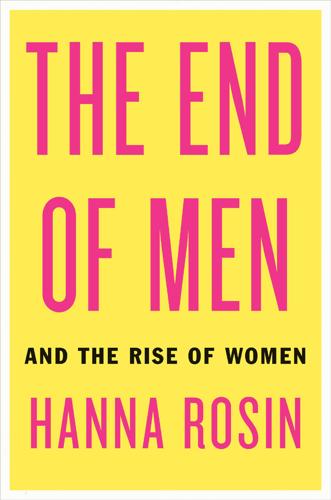
The End of Men: And the Rise of Women
by
Hanna Rosin
Published 31 Aug 2012
She makes less money, but her standard of living is higher and the schools are amazing. Her three best girlfriends are a consultant, a lawyer, and an engineer, and they have all worked out deals where they can work remotely. They love this place, but they will never be homegrown Southern belles; they could be from anywhere; they are part of the army of upwardly mobile women in search of a good job and a better life, wherever they happen to find it. Does any place still belong to the men? The manufacturing plants at least? I paid a visit to Briggs & Stratton, a plant that produces generators and small engines for lawn mowers and snowblowers. The factory is only a few miles away from where Norma Rae was filmed, the movie that won Sally Field her memorable Academy Award for her portrayal of a union organizer in a textile factory.

Against Everything: Essays
by
Mark Greif
Published 5 Sep 2016
Pregnancy at sixteen justified being followed by an MTV crew—no small declaration on behalf of the wider culture. This was no lame Frontline crew, mind you, reporting a social problem. Because a baby when you were young and energetic and fertile was what other people couldn’t have. It was an odd reward for not being rich and upwardly mobile—a new, alternative source of media fascination. Of course, teen pregnancy didn’t lead to car keys; quite the opposite, as when we saw new mother Farrah unable, despite begging and tears, to get her mom to help her lease a Ford Focus so she could get out of the house sometimes on her own. Early pregnancy was declassing.

The Elements of Power: Gadgets, Guns, and the Struggle for a Sustainable Future in the Rare Metal Age
by
David S. Abraham
Published 27 Oct 2015
They have paved the way for the entire world to live similarly without considering the global resource implications. When research took me to Jakarta, Indonesia, I was struck by the number of cranes dangling over towering, hollow concrete shells. These budding high-rises peered over slightly shorter ones constructed just a few years before. These new buildings will provide homes for increasingly wealthy, upwardly mobile Indonesians who are striving to live the technological-advanced dream, with all its attendant accoutrements. The people of Indonesia will be no different from the billions of others in the developing world, from South America to China, who are heading toward the same resource-intense existence.
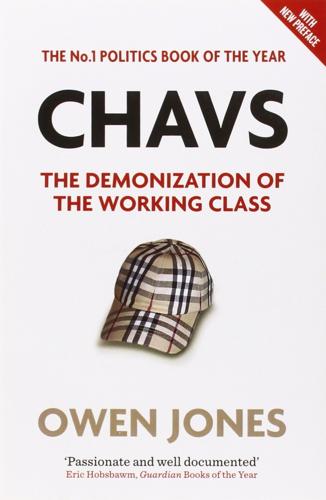
Chavs: The Demonization of the Working Class
by
Owen Jones
Published 14 Jul 2011
At the centre of this crusade was a concerted attempt to dismantle the values, institutions and traditional industries of the working class. The aim was to rub out the working class as a political and economic force in society, replacing it with a collection of individuals, or entrepreneurs, competing with each other for their own interests. In a new, supposedly upwardly mobile Britain, everyone would aspire to climb the ladder and all those who did not would be responsible for their own failure. Class was to be eliminated as an idea, but itwas to be bolstered in practice. There has been no greater assault on working-class Britain than Thatcher' s two-pronged attack on industry and trade unions.
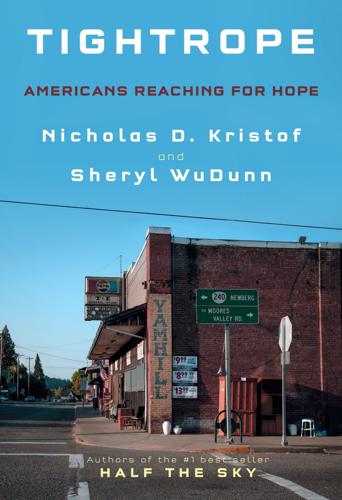
Tightrope: Americans Reaching for Hope
by
Nicholas D. Kristof
and
Sheryl Wudunn
Published 14 Jan 2020
Not since the Great Depression has America experienced the kind of working-class stagnation that we’ve seen in recent decades, and it has fed polarization, racism and bigotry, gnawing away at our social fabric. Resentment has grown toward Latinos, Muslims and African Americans, and sometimes toward upwardly mobile women as well. White supremacists gained ground, and on websites and social media Americans glibly trumpet their bigotry. Hate crimes have increased in the United States for three years in a row, the FBI reported. On one ultra-right website we visited, people posted venomous statements about Muslims and called for mass deportation.

Vertical Gardening: Grow Up, Not Out, for More Vegetables and Flowers in Much Less Space
by
Derek Fell
Published 25 Apr 2011
Sweet peas, nasturtiums, and morning glories will produce curtains of color planted in a short row to climb up garden netting (either attached to a sunny wall or strung between posts as a freestanding trellis). Grow all three together for an incredible kaleidoscope of color. Then explore the dozens of other choices of upwardly mobile and cascading flowers and vines to create a garden that's filled with interesting “living walls,” dividers, and curtains of foliage. See the two chapters on flowering ornamental vines (annual vines as well as the perennial and woody vines). This small-space, nonstop vertical garden is created by positioning a Skyscraper Garden trellis in a 12-inch-deep raised planter box, with a 6-inch-deep planter box on each side.

Trick Mirror: Reflections on Self-Delusion
by
Jia Tolentino
Published 5 Aug 2019
This was 2011, when it was still possible to say that sort of thing straight-faced; it was the year that Peter Thiel, the libertarian venture capitalist and Facebook founding board member who once wrote that women’s suffrage had compromised democracy, started offering $100,000 fellowships to dropout entrepreneurs.) In 2013, McFarland founded Magnises, a company that charged upwardly mobile millennials a suspiciously modest $250 a year for VIP event tickets and access to a clubhouse. Magnises gave members a “signature” black card, which duplicated the magnetic strip of an existing credit card but held no other advantages: like the company itself, the card was just for show. Magnises (“Latin for absolutely nothing,” McFarland said) attracted breathless press and a growing membership culled from the boundless cohort of young New Yorkers who are interested in projecting an aura of exclusive cool.
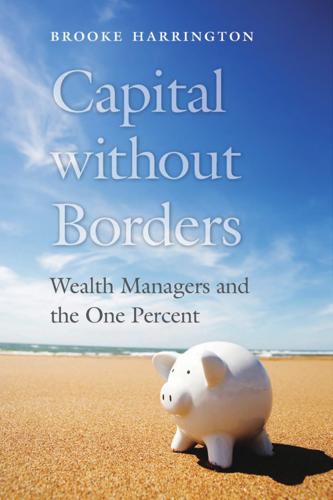
Capital Without Borders
by
Brooke Harrington
Published 11 Sep 2016
“For the most part,” one study concluded, “meritocracy is superimposed on inheritance rather than the other way around—effects produced by merit or luck occur within the context of effects produced by differential inheritance.”104 Wealth managers’ contribution to this trend includes not only the effectiveness with which they ensure the continuity of family fortunes but also their skill in helping clients avoid taxes and debts. The use of trusts, along with other tools for tax avoidance such as offshore corporations, makes those who do not use trusts poorer and often reduces the public services available to them—services such as education, health care, and infrastructure that might otherwise help them to be upwardly mobile. Wealth managers’ tax avoidance strategies shift the fiscal burdens of the state downward, imposing a surcharge on those who are unable to afford (or unwilling to use) such strategies. In the United States, estimates of this surcharge vary between 7 and 15 percent in additional taxes to cover the $35 billion underpayment by the wealthiest Americans.105 Similarly, the United Kingdom is believed to lose £100 billion annually as a result of tax avoidance, with tens of thousands of the country’s wealthiest individuals paying little or no income tax.
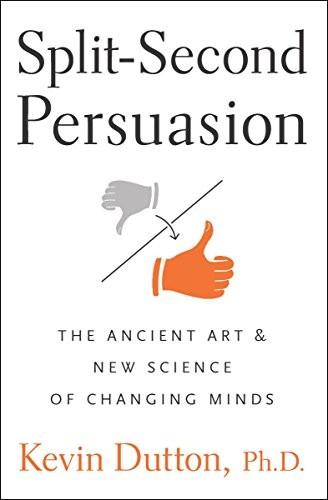
Split-Second Persuasion: The Ancient Art and New Science of Changing Minds
by
Kevin Dutton
Published 3 Feb 2011
It’s the same with our discomycete fungus. This unscrupulous, psychopathic fungus with its dodgy botanical morals knows only too well that bees and other pollinating insects will not, in the normal run of things, touch it with a bargepole. So what does it do? It does what any other unconscionable, upwardly mobile social predator would do: enlists the help of an innocent third party and ruthlessly exploits it as a go-between. Just because there’s no language involved doesn’t mean to say that there’s no persuasion involved – as I discovered pretty soon after I got married. One simple glance speaks volumes, right?
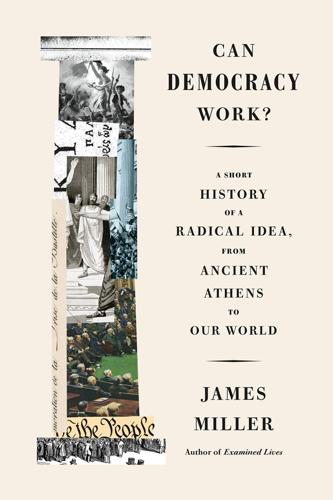
Can Democracy Work?: A Short History of a Radical Idea, From Ancient Athens to Our World
by
James Miller
Published 17 Sep 2018
Returning to Tennessee, he worked as a circuit-riding justice of the state’s superior court and also began to angle for a post in the state militia, hoping to make his mark as a military man. At the same time, he started to build a personal fortune, eventually becoming the slaveholding master of one of the largest cotton-growing plantations in Tennessee. Jackson is sometimes celebrated for his rural roots and unvarnished manners—but in many ways, he better embodies the upwardly mobile ethos of “the planter, the farmer, the mechanic, and the laborer” who form, in one of Jackson’s more lyrical formulations, “the bone and sinew of the country.” Like Tom Paine, Jackson hymned the virtues of commerce and worried that an unresponsive federal government was a major threat to the full fruits of free labor.
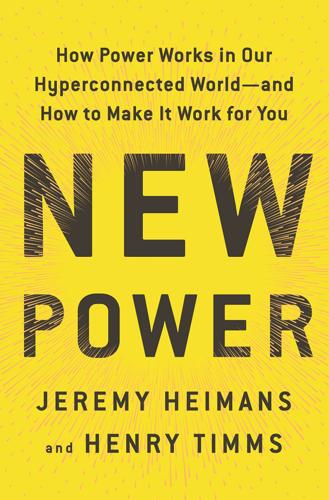
New Power: How Power Works in Our Hyperconnected World--And How to Make It Work for You
by
Jeremy Heimans
and
Henry Timms
Published 2 Apr 2018
When you understand the draw of the founder feeling, it’s no surprise that many workers at big organizations are increasingly impatient to move up or move on. Instead of resisting this, LinkedIn’s co-founder and chairman Reid Hoffman has embraced it. Everyone who interviews there is asked a version of a question that the upwardly mobile intern would surely appreciate: “What’s the next job that you would like to have post-LinkedIn?” For many old power thinkers, this is the professional equivalent of asking your brand-new fiancée what she thinks your second wife should look like. But Hoffman wants to put a stop to what he sees as the biggest lie the workplace tells us: We are a family.

Legacy: Gangsters, Corruption and the London Olympics
by
Michael Gillard
Published 24 Jul 2019
In ten years, 32-year-old Hunt had taken his family from a terraced house in Canning Town worth just over £20,000 to a mansion worth £600,000. Sitting in his cell that summer of 1993, Holmes suspected some of his £250,000 had gone towards the asking price. He also thought that Hunt was taking a risk with such an upwardly mobile move without the legitimate income to explain his conspicuous consumption. Certainly, the Morleys mansion purchase had not gone unnoticed by the police or the taxman. A few months later, when Holmes was allowed out of prison on day release, Hunt explained that he’d bought Morleys from Alan Sewell, an Essex scrap metal dealer who also had the distinction of being Rod Stewart’s best friend.

Hype: How Scammers, Grifters, and Con Artists Are Taking Over the Internet―and Why We're Following
by
Gabrielle Bluestone
Published 5 Apr 2021
Her answer appeared to involve a bit of integrity and a bit of business strategy. When she was approached the first time, Bernstein says she was already a member of the private club Soho House, so the decidedly down-market Magnises’s take on a private-members club held little appeal to her personally and, more importantly, offered no advantage to her personal, upwardly mobile brand. And she says that after back-channeling with the wife of Kaskade, a famous DJ who, at the time, had been rumored to be involved in the festival, she found the Fyre deal to be similarly unappealing. “First I was asked to be involved in Magnises, and I went to the Magnises town house, and I just remember leaving there very confused.
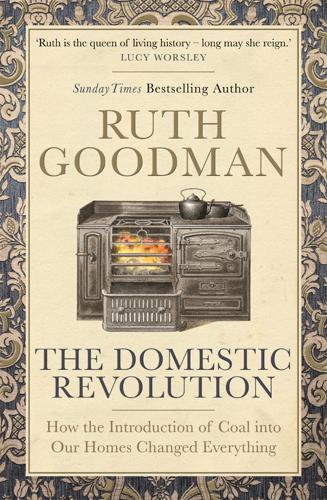
The Domestic Revolution
by
Ruth Goodman
Published 15 Apr 2020
But in the late sixteenth and early seventeenth centuries, a banquet was a select gathering of only the most honoured and highest status individuals, who withdrew from the main hall to a separate, more exclusive place, perhaps in the garden or upon the rooftop, where a sort of sweet buffet was laid out. Merchant families aspiring to improve their position in society were keen to learn about this new upper-class diversion. Gervase Markham’s instructions to the upwardly mobile housewife of 1615 instructed her to lay an iced marzipan confection in the centre of her banqueting table and surround it with sweets: preserved fruits – some candied, some in syrup – fruit pastes, candied flowers and spices, fresh fruits and wafers. His recipes for banquets included several different gingerbreads and ‘jumbles’ (a type of biscuit), Banbury cakes (with lots of currants, a bit like an Eccles cake) and numerous biscuit breads that varied in nature from langue de chat to flavoured meringues.
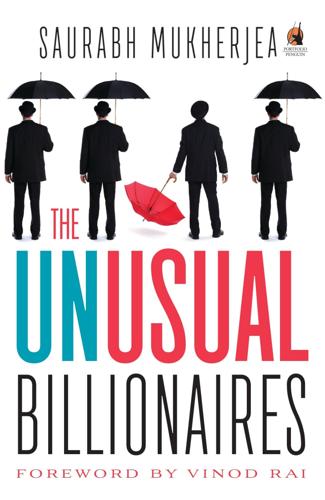
The Unusual Billionaires
by
Saurabh Mukherjea
Published 16 Aug 2016
Asian Paints and its advertising agencies have changed their messaging to maintain this emotional connection with their target audience. Three examples can indicate this. First, Gattu—the mischievous kid—was launched as Asian Paint’s mascot in 1954, mostly in print ads, with the tag line: ‘Any surface that needs painting, needs Asian Paints.’ Unlike its peers who were focusing on upwardly mobile, urban audiences in their adverts during the 1970s, Gattu—designed by R.K. Laxman, whose Common Man cartoons were famous throughout India—appealed to the masses and helped Asian Paints become a leader in the smaller cities. Gattu remained the mascot for Asian Paints until 2002; beyond this year, the firm started changing its positioning in favour of premium households.
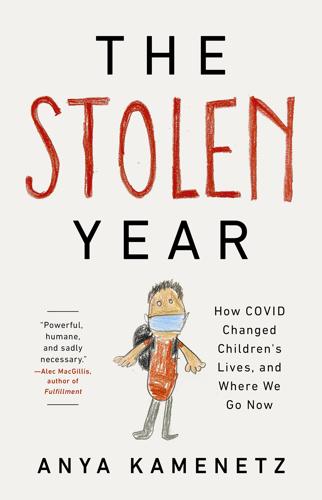
The Stolen Year
by
Anya Kamenetz
Published 23 Aug 2022
The marquee feminist issues that I’ve been aware of since I was a little girl are equal pay, equal representation in leadership at the C-suite level and in the halls of government, reproductive rights, beauty standards, sexual harassment, and sexual violence. All worthy causes. This is the agenda of the quiet revolutionaries—upwardly mobile, primarily white and straight women who are conscious of themselves as targets of sexual objectification and for whom the ultimate goal was the corner office. Pantsuit Nation. Childcare, the removal of children by the state, guaranteed adequate income, or at least some less racist, less sexist, less intrusive, more adequate form of welfare—none of these have been close to the center of the kind of feminism that gets the most media attention.

Who Owns This Sentence?: A History of Copyrights and Wrongs
by
David Bellos
and
Alexandre Montagu
Published 23 Jan 2024
The result was that the actor-owners had a perverse incentive to stage new plays on days when attendance was likely to be low and even to play them badly so as to speed them towards becoming the company’s property free of charge. This was guaranteed to give dramatic writers a grudge against their only outlet. Suits against the Comédie became ever more frequent as the eighteenth century drew on. Nothing much changed through litigation, however, until a well-connected, upwardly mobile and extremely combative man found a different way to reform what he considered to be an unacceptable and out-dated institution. He was also the author of the biggest hit of the century, The Barber of Seville. Oddly enough, it had fallen flat on the first night. Beaumarchais did some rapid editing, and on the third night – just in time!

Indelible City: Dispossession and Defiance in Hong Kong
by
Louisa Lim
Published 19 Apr 2022
Simply put, Lion Rock Spirit is the ability to work extraordinarily hard for a better life, no matter the obstacles; harnessing the Weberian sense of meritocracy that the political scientist had mentioned. This concept was second nature in my favorite Cantonese class of all, one designed for Mandarin speakers in Hong Kong. All the other students were young, single, upwardly mobile mainlanders—bankers, engineers, IT workers—and the class felt like a massive dating club, as we spent each session flirting madly and ineptly. The women loved teasing the best-looking young man in the class, interrogating him for his address and personal details until he flushed all the way to the tips of his ears, then pointing this out to uproarious laughter.

Rick Steves Florence & Tuscany 2017
by
Rick Steves
Published 8 Nov 2016
MEDICI-RICCARDI PALACE TOUR Palazzo Medici-Riccardi Orientation The Tour Begins Exterior Courtyard Garden Chapel of the Magi (Cappella di Benozzo Gozzoli) Palatial Rooms with Temporary Exhibitions Fra Filippo Lippi, Madonna and Child The Palace as Civic Center Luca Giordano Room Cosimo the Elder, the founder of the ruling Medici family dynasty, lived here with his upwardly mobile clan, including his grandson, Lorenzo the Magnificent. Besides the immediate family, the palace also hosted many famous Florentines: teenage Michelangelo, who lived almost as an adopted son; Leonardo da Vinci, who played the lute at Medici parties; and Botticelli, who studied the classical sculpture that dotted the gardens.
…
Without glossing over anything, Raphael shows us the man just as he was, complete with cleft chin, jowls, lazy eye, and all. • On the next wall, look for... Raphael, Companion Portraits of Agnolo and Maddalena Doni, c. 1505-1506 These portraits are as crystal clear as the Madonna del Granduca is hazy. They’re a straightforward look at an upwardly mobile Florentine couple. He was a successful businessman in the textile trade (who commissioned Michelangelo’s Holy Family in the Uffizi), and she was the daughter of one of the city’s richest families. Raphael places them right at the edge of the picture plane, showing off his fine clothes and her jewelry
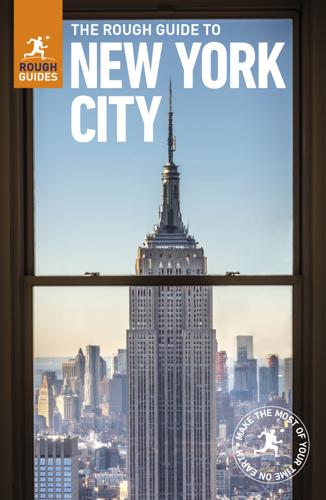
The Rough Guide to New York City
by
Rough Guides
Published 21 May 2018
The Far West Village Subway L to Eighth Ave; #1 to Christopher St; #1, #2, #3 to 14th St The area northwest of Sixth Avenue, dubbed the Far West Village by those ever-creative estate agents, contains some of the most appealing and expensive residential streets in the city. Most of the gorgeous townhouses here are owned, not rented, and a bevy of unique stores, coffee bars and restaurants caters to its upwardly mobile and moneyed residential community – including plenty of Hollywood stars. Much to the chagrin of locals, you’ll probably see small groups of excited fans taking photos at 66 Perry St, between Bleecker and West 4th Street, used as the exterior of Carrie’s apartment in Sex and the City (“Carrie’s Stoop”), even though the show ended in 2004, while almost constant queues form outside lauded Magnolia Bakery at Bleecker and West 11th Street.
…
< Back to Upper East Side Upper West Side and Morningside Heights While the Upper East Side has always been a privileged stronghold, the Upper West Side, its counterpart on the other side of Central Park, is the slightly younger, vaguely hipper, but nonetheless affluent rival. A decade or two ago, the Upper West Side was the neighbourhood of choice for upwardly mobile dot-commers, and though those days seem long gone, young professionals and families with school-age children still make up a sizeable part of the population. This isn’t to say it lacks glamour; the lower stretches of Central Park West and Riverside Drive are quite fashionable, while the network of performing spaces at Lincoln Center makes the neighbourhood New York’s de facto centre of culture.

The Rough Guide to Sri Lanka
by
Rough Guides
Published 21 Sep 2018
The mildly interesting displays on the Dutch colonial era feature the usual old coins, Kandyan and Dutch artefacts, military junk and dusty European furniture, plus a couple of miserable-looking waxworks of colonists dressed in full velvet and lace despite the sweltering heat. The main attraction, however, is the wonderfully atmospheric mansion itself, whose groaning wooden floors and staircases, great pitched roof and idyllic garden offer a beguiling glimpse into the lifestyle enjoyed by the eighteenth century’s more upwardly mobile settlers. Main Street and Jami ul-Aftar Cutting through the heart of the Pettah, the district’s principal thoroughfare Main Street is usually a solidly heaving bedlam of vehicles and pedestrians, with porters weaving through the throng pushing carts piled high with every conceivable type of merchandise.
…
Shopping Various scruffy shops at the southern end of the main road through Aluthgama stock a surprisingly good selection of handicrafts, principally kolam masks and woodcarvings; it’s also worth checking out the well-stocked Aluthgama Wood Carvers shop, on River Ave just south of the Hemadan guesthouse. For provisions, stock up at the Nebula supermarket. directory Banks There are several banks north of the bus station with ATMs accepting foreign cards. Bentota and around South of Aluthgama, upwardly mobile BENTOTA is home to a further clutch of package resorts, plus an outstanding selection of more upmarket places. The beach divides into two areas. At the north end, facing Aluthgama, lies Paradise Island (as it’s popularly known), a narrow spit of land beautifully sandwiched between the choppy breakers of the Indian Ocean and the calm waters of the Bentota lagoon, though sadly few of the hotels really live up to the setting.

Moneyball
by
Michael Lewis
Published 1 Jan 2003
Halfway down the first-base line, Jeremy Brown has one thought in his mind: I’m gonna get a triple. It’s a new thought for him. He isn’t built for triples. He hasn’t hit a triple in years. He thrills to the new idea: Jeremy Brown, hitter of triples. A funny thing has happened since he became, by some miracle, the most upwardly mobile hitter in the Oakland A’s minor league system. Surrounded by people who keep telling him he’s capable of almost anything, he’s coming to believe it himself. He races around first (“I’m haulin’ ass now”) and picks up the left fielder, running with his back to him, but not the ball. He’s running as hard as he’s ever run—and then he’s not.
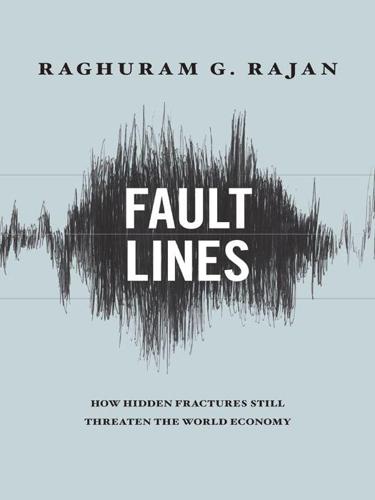
Fault Lines: How Hidden Fractures Still Threaten the World Economy
by
Raghuram Rajan
Published 24 May 2010
For Americans, many of whom “define political freedom as strict equality but economic freedom as an equal chance to become unequal,” inequality of access to quality education shakes the very foundation of their support for economic freedom, for they no longer have an equal chance.23 If Americans no longer have the chance to be upwardly mobile, they are less likely to be optimistic about the future or to be tolerant of the mobility of others—because the immobile are hurt when others move up. When others in town become richer, the cost of everything goes up, and the real income—the income in terms of its purchasing power—of the economically immobile falls.

Is the Internet Changing the Way You Think?: The Net's Impact on Our Minds and Future
by
John Brockman
Published 18 Jan 2011
Ewald Professor of biology, Amherst College; author, Plague Time: How Stealth Infections Cause Cancer, Heart Disease, and Other Deadly Ailments When I was a kid growing up in Illinois in the early sixties, my mother took me on weekly trips to the Wilmette Public Library. It was a well-stocked warren of interconnected sand-colored brick buildings that grew in increments as Wilmette morphed from farmland to modest houses interspersed with vacant lots, to an upwardly mobile bland Chicago suburb, and finally to a pricey bland Chicago suburb. My most vivid memory of those visits was the central aisle, flanked by thousands of books reflecting glints of “modern” fluorescent lights from their crackly plastic covers. I decided to read them all. I began taking out five books each weekend with the idea that I would exchange them for another five a week later and continue until the mission was accomplished.

Dear Fatty
by
Dawn French
Published 8 Nov 2011
Meanwhile, David and I would be invited to posh dinners inside lavish homes with dozens of servants providing for our every need. Or there would be more bloody balls – Caledonian balls with only white people there, and again I never quite looked or felt or was the part. The part of a company wife, quietly supporting her upwardly mobile company man of a husband. Who was I? Who was he? Where was the spirited young Irish lad I had known? He was certainly highly prized by the company and I was often told by his colleagues that he was tipped for great things. I was proud of him, for him, but Dad, I didn’t belong. So, this final unmarried visit to Sri Lanka mattered.
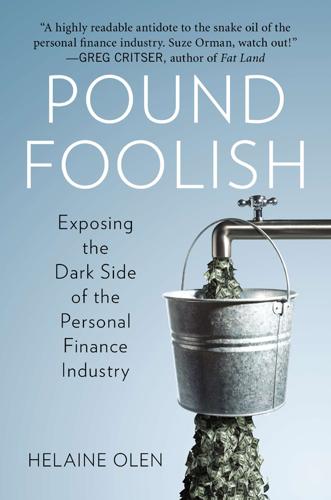
Pound Foolish: Exposing the Dark Side of the Personal Finance Industry
by
Helaine Olen
Published 27 Dec 2012
Banzai, a Utah-based firm, promises on its Web site to the credit unions who purchase its junior high and high school financial literacy curriculum that it will “provide a steady, targeted and engaged audience of young people to your credit union. They will be exposed to your branding and message in class and at home.” Similarly, the National Financial Educators Council, creator of Money XLive, a live celebrity concert/financial literacy pep rally, promises content that “creates an experience that will connect you with upwardly-mobile participants,” not to mention hearing such C-level celebrities as Wilmer Valderrama of That 70s Show and former J-Lo husband Cris Judd opine on the need for students to learn how to manage their finances. Even Operation Hope, a perennial Wall Street favorite whose financial literacy efforts are targeted at minority communities, is not above this sort of salesmanship.
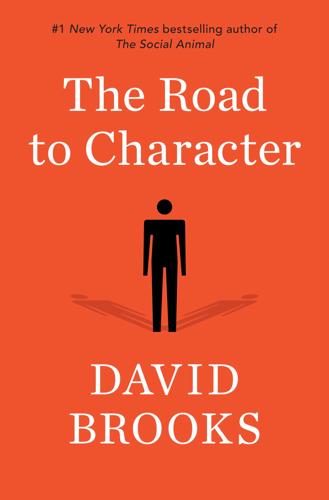
The Road to Character
by
David Brooks
Published 13 Apr 2015
The central character is a successful lawyer and magistrate who one day is hanging curtains in his fancy new house when he falls awkwardly on his side. He thinks nothing of it at first, but then he develops an odd taste in his mouth and grows ill. Eventually he realizes that at age forty-five he is dying. Ilyich had lived a productive upwardly mobile life. Tolstoy tells us he was “capable, cheerful, good-natured and sociable, though strict in the fulfillment of what he considered to be his duty: and he considered his duty to be what was so considered by those in authority.”28 In other words, he was a successful product of the moral ecology and social status system of his time.
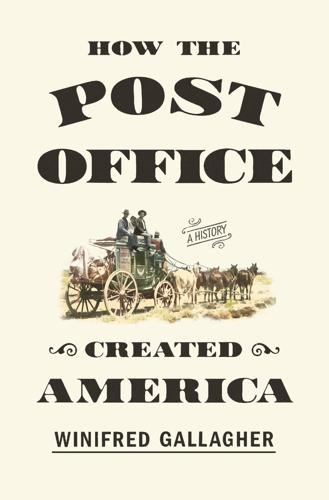
How the Post Office Created America: A History
by
Winifred Gallagher
Published 7 Jan 2016
, he had made a fortune from inventive strategies, such as charging low prices to generate a huge volume of sales, and catchy innovations, such as the price tag, the money-back guarantee, the in-store restaurant, and even the annual “white sale.” Wanamaker was the very personification of industrious, upwardly mobile, business-oriented, forward-looking, turn-of-the-century America, and he was determined to modernize the post, now more than a century old, just as he had revolutionized merchandising. After making his own fortune, Wanamaker had deployed his skills on behalf of the Republican Party’s finance committee, which for the first time was dominated by businessmen.
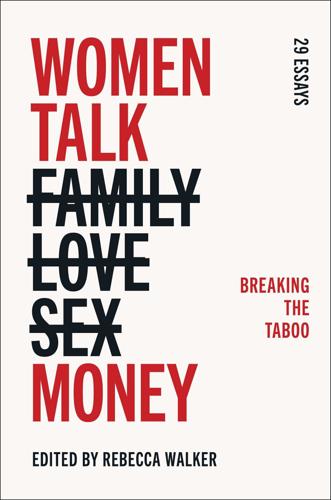
Women Talk Money: Breaking the Taboo
by
Rebecca Walker
Published 15 Mar 2022
in the years that followed, i paid my taxes until the 2016 election. but i couldn’t bring myself to pay taxes into 45’s administration. i want to tell you the story of why i became a tax resister—twice—and what i learned. * * * my parents grew up in the deep south, at opposite ends of the class spectrum: my black father in persistent, every-thing/space/bite-is-shared poverty, my white mother in ambitious, upwardly mobile, pony-and-pearls wealth. when they eloped, my mother was disowned. she chose my father over financial security, and growing up inside that story made me a young believer in love as the most important resource to accrue in a life. i still believe it. i was born into abundant, unconditional love, and i often say it’s my greatest privilege—i have parents who believe in me, support me when i falter, cover me when i’m foolish and idealistic, and tell me often that they are proud of me. their love and pride came far before i began to be successful in ways that translate to mainstream america: today, i am a bestselling author with a successful self-started facilitating business and critical acclaim of my work. but they also told me they loved me when i failed my french oral exam and didn’t complete the college degree they’d sacrificed to pay for. said they loved me when i couldn’t make the rent after getting fired from my first job and needed a $2,000 loan. said they were proud of me as i took one movement or nonprofit job after another, where the pay and benefits were paltry and the righteousness high.

The Human City: Urbanism for the Rest of Us
by
Joel Kotkin
Published 11 Apr 2016
This kind of floating population has now formed a permanent underclass in many of the country’s massive cities.63 Ultimately, they could prove to be a very volatile population, caught between staying in a place where they are not welcome, with little chance of ever successfully integrating, and achieving the wherewithal to live in decent conditions.64 We can already see this in Mexico City, the first city in a developing country to achieve megacity status. As has also occurred in the high-income world, the shift to services has hollowed out opportunities that were once offered to La Capital’s upwardly mobile working class. According to studies done in the 1970s, rapid industrialization provided similarly high rates of upward mobility to both city natives and rural immigrants.65 In recent years, as industry has moved away from the city, such gains have slowed, with fewer moving up from the poorest class.

Lonely Planet's Best of USA
by
Lonely Planet
(Map; MAD; www.madmuseum.org; 2 Columbus Circle, btwn Eighth Ave & Broadway; adult/child $16/free, by donation 6-9pm Thu; h10am-6pm Tue, Wed, Sat & Sun, to 9pm Thu & Fri; Wc; bA/C, B/D, 1 to 59th St-Columbus Circle) 1 Upper West Side Shorthand for liberal, progressive and intellectual New York, this neighborhood comprises the west side of Manhattan from Central Park to the Hudson River, and from Columbus Circle to 110th St. Here you’ll still find massive, ornate apartments and a diverse mix of stable, upwardly mobile folks (with many actors and classical musicians sprinkled throughout), and some lovely green spaces – Riverside Park stretches for 4 miles between W 72nd St and W 158th St along the Hudson River, and is a great place for strolling or simply gazing over the river. Lincoln Center Cultural Center Map Google Map The billion-dollar-plus redevelopment of the world’s largest performing-arts center includes the dramatically redesigned Alice Tully Hall and other stunning venues surrounding a massive fountain; public spaces, including the roof lawn of the North Plaza (an upscale restaurant is underneath), have been upgraded.
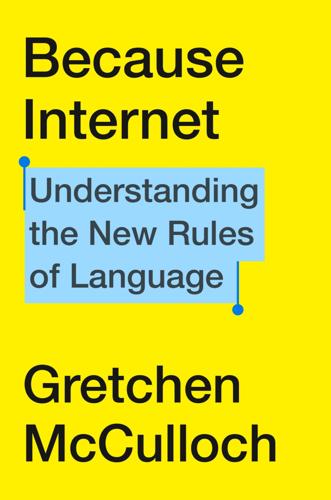
Because Internet: Understanding the New Rules of Language
by
Gretchen McCulloch
Published 22 Jul 2019
In adulthood, especially on the internet, I use Canadian spellings in my posts and messages partly out of habit, but partly also because it goes against the flow: it’s a subtle way of reclaiming space against the idea that all English speakers on the internet fit neatly into the choice I’ve faced in so many dropdown menus between “American” and “British.” We all make linguistic decisions like this all the time. Sometimes, we decide to align ourselves with the existing holders of power by talking like they do, so we can seem rich or educated or upwardly mobile. Sometimes, we decide to align ourselves with particular less powerful groups, to show that we belong and to seem cool, antiauthoritarian, or not stuck-up. The most legendary study of social factors in language differences is about how much people of different social classes use the stereotypical “New Yawk” accent, with the R dropped from after the vowel.

A World Without Work: Technology, Automation, and How We Should Respond
by
Daniel Susskind
Published 14 Jan 2020
Then, as the Industrial Revolution gathered pace, machines became more complex, production processes more sophisticated, and factories more unwieldy. Demand rose for better-educated blue-collar workers—engineers, machinists, electricians, and the like—and for white-collar workers to manage operations and provide professional services. This move from manual work toward cognitive work was more challenging for workers who wanted to be upwardly mobile. As Ryan Avent, a senior editor at the Economist, notes, few people in the early nineteenth century would have been well-prepared for it: “most were illiterate and innumerate.”8 Nevertheless, for many people it was still possible to learn the right skills. And as a newfound enthusiasm for mass education took root in the late nineteenth and early twentieth centuries, that, too, helped to sweep many people up and along.

The Long Weekend: Life in the English Country House, 1918-1939
by
Adrian Tinniswood
Published 2 May 2016
In 1937, when Coward’s father died at the house, relegated to a lonely existence in a room above the garage, it was Goldenhurst Farm, and Coward himself referred to it as “a fine old 17th-century farmhouse.”20 By 1956, however, when he put it on the market and moved to Jamaica, Goldenhurst had become a “country estate” with a “picturesque old manor house” and a “home farm.” Its upwardly mobile metamorphosis was complete. Neither Novello nor Coward were bred to country-house life. The former was the son of a Cardiff council rent collector; the latter’s father was a clerk. Beaton came from a more solidly middle-class background: his father was a timber merchant, although that scarcely equipped him for life in landed society.

Austerity Britain: 1945-51
by
David Kynaston
Published 12 May 2008
The recipient of this message was Lord Moore (the future Lord Drogheda, chairman of the Royal Opera House and one of the classic great-and-good ‘fixer’ figures of the post-war era). Next day, he returned the memo with a laconic pencilled note: ‘I have said OK to Mathew.’ The following July, a not yet upwardly mobile 16-year-old called Norman Tebbit went to the FT as a price-room hand. There, compelled to join the printing union NATSOPA, he was ‘outraged at the blatant unfairness of the rules which provided for the “fining” or even expulsion (and thus loss of job) of those with the temerity to “bring the union into disrepute” by such conduct as criticism of its officials’.
…
For an antidote to the Broadberry/Crafts stress on the seriousness and pervasiveness of the problem, see: Nick Tiratsoo and Jim Tomlinson, ‘Restrictive Practices on the Shopfloor in Britain, 1945–60’, Business History (Apr 1994), pp 65–84. 6. David Kynaston, The Financial Times (1988), p 298; Norman Tebbit, Upwardly Mobile (1988), p 15. 7. Daily Mirror, 30 Sept 1949. 8. Nick Tiratsoo, ‘Limits of Americanisation’, in Becky Conekin et al, Moments of Modernity (1999), pp 96–113; Ian Clark, Governance, the State, Regulation and Industrial Relations (2000), chap 6. 9. M-O A, Directives for Aug 1950, Replies (Men A–E); Listener, 2 Feb 1950; Charles Barr, Ealing Studios (1977), pp 159–64, 166–70. 9 Proper Bloody Products 1.

Why the West Rules--For Now: The Patterns of History, and What They Reveal About the Future
by
Ian Morris
Published 11 Oct 2010
By the sixth century all that the popular “Heaven-Man Teaching” required was for devotees to walk laps around statues of the Buddhas and Bodhisattvas, worship relics (especially the many teeth, bones, and begging bowls said to have belonged to the Buddha), chant, act compassionately, be self-sacrificing, and follow the Five Precepts (thou shalt not kill, steal, commit adultery, drink, or lie). Its teachers conceded that this would not actually lead to nirvana, but it would deliver health, prosperity, and upwardly mobile rebirth. The “Pure Land School” went further, claiming that when believers died, the Bodhisattva of Compassion, working with the Amitabha Buddha, would interrupt the cycle of rebirth and guide them to a Western Paradise where they could pursue nirvana away from the cares of this world. Indian seekers after nirvana regularly took to the road, begging as they went.
…
The closest thing to a protest about women’s subjugation may be Li Ruzhen’s bizarre satire Flowers in the Mirror, in which a male merchant is forcibly feminized, even to the point of footbinding. (“His feet lost much of their original shape,” Li wrote. “Blood and flesh were squeezed into a pulp … little remained of his feet but dry bones and skin, shrunk, indeed, to a dainty size.”) Dickens’s upwardly mobile heroes are just as hard to find, and Samuel Smiles’s self-made men still more so. The mood of Shen Fu’s heartrending Six Records of a Floating Life—romantic and moving, but crushed by a rigid hierarchy—is much more typical. The really new thing about the West, though, was that the more it sped itself up and raced down paths utterly unlike those the rest of the world was strolling along, the more it forced the rest of the world to follow its direction and frenetic pace.
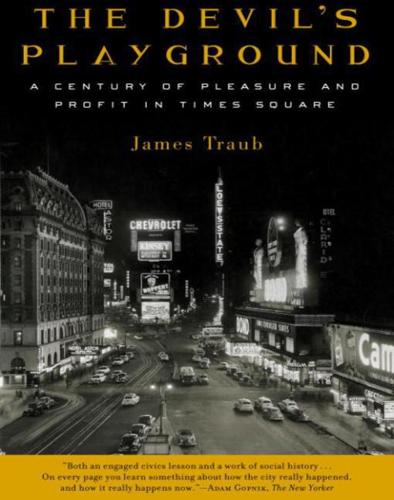
The Devil's Playground: A Century of Pleasure and Profit in Times Square
by
James Traub
Published 1 Jan 2004
In 1921 she formed her own production company, planning to churn out a series of two-reelers—Texas of the Mounted, The Soul of Tex, The Claws of Tex, and so on. The venture never quite panned out, and Tex returned to New York, from which she had never been absent for long. Nils Granlund claimed that he discovered her emceeing a show at a club called the Beaux Arts, and introduced her to Larry Fay, an upwardly mobile gangster. In 1924 he opened up the El Fey—no one ever knew why he chose to misspell his own name—with Tex as hostess. The club, on 45th Street between Sixth Avenue and Broadway, was a tiny room located at the top of a narrow staircase and behind a door with a peephole cut into it. Most of the chorus came from the Ziegfeld Follies at the New Amsterdam; the girls came over after the show closed up at eleven.

The Last Lingua Franca: English Until the Return of Babel
by
Nicholas Ostler
Published 23 Nov 2010
The fact is that all mother tongue speakers of English are more or less sociolinguistically sophisticated: they can recognize some foreign accents and dialects, and have attitudes to them, which are probably only partly related to their actual experience of people who use them. These attitudes will in quite complex ways condition their propensity to accommodate and imitate others. Traditionally, where sense of social class was strong, members of lower classes who aspired to be upwardly mobile affected features of higher-class speech; but if they did it too much for their peers, they might have been called affected or la-di-da; yet if they did it too little, they might have been called common, rustic, or down-home. With comparable motives but in opposite direction, many people, often adolescents (sometimes individually, sometimes as a group) now have a contrarian, rebellious tendency to diverge from their own elders, whom naturally— by the usual process of language acquisition—they might have been expected to imitate.

The New Jim Crow: Mass Incarceration in the Age of Colorblindness
by
Michelle Alexander
Published 24 Nov 2011
I’m not going out there and stand twenty minutes for a cab when they’ll run over me to get to you.’ ... He’s white and, see, he don’t know the difference because he’s from Seattle, Washington. He looks at me real strange, like, ‘What are you talking about?’”73 Many ex-offenders and families of prisoners are desperately attempting to be perceived as part of the modern upwardly mobile class, even if their income does not place them in it. Ex-offenders lie (by refusing to check the box on employment applications), and family members lie through omission or obfuscation because they are painfully aware of the historically intransigent stereotypes of criminal, dysfunctional families that pervade not only public discussions of inner cities but of the black community in general.
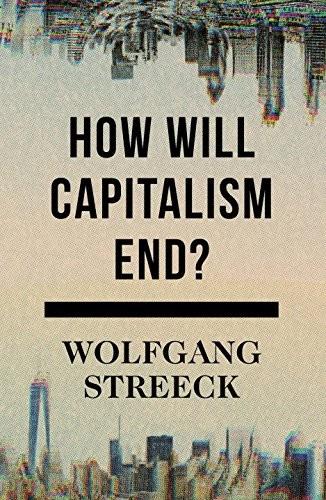
How Will Capitalism End?
by
Wolfgang Streeck
Published 8 Nov 2016
Privatization of investment in physical and social infrastructures gives rise to a growing private industry operating in what used to be the public sector. While typically subject to regulation, private providers are likely soon to become powerful players in the political arena where they will ally with the upwardly mobile middle class and its liberal-conservative political parties. The evolving connections of the new firms with the government, often taking the form of a revolving-door exchange of personnel, and their campaign contributions will further cement the shift from a redistributive towards a neoliberal state that abandons to civil society and the market its responsibility to provide for social equity and social cohesion.

Espresso Tales
by
Alexander McCall Smith
Published 1 Jan 2005
“My father gave me fifty pounds last week,” she said. “How much did you get? A hundred?” Matthew looked down at the desk and picked up a photograph of a painting. It was of a sheep-dog chasing sheep; the sort of painting that nineteenth-century artists loved to paint, on a large scale, for upwardly mobile purchasers. Nobody painted sheep-dogs any more, it seemed. “Four million,” he said quietly. There was complete silence. Matthew put down the photograph, but did not look at Pat. She was staring at him, her mouth slightly open. Four million. At last she spoke. “Four million is a lot of money, Matthew.
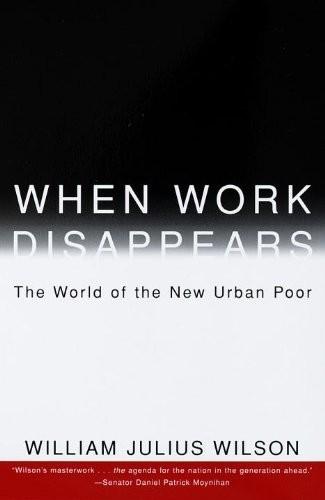
When Work Disappears: The World of the New Urban Poor
by
William Julius Wilson
Published 1 Jan 1996
Then they got the drug traffic running through in these buildings. It’s all messed up, man. Many of the respondents described the negative effects of their neighborhood on their own personal outlook. An unmarried, employed clerical worker from a ghetto poverty census tract on the West Side stated: There is a more positive outlook if you come from an upwardly mobile neighborhood than you would here. In this type of neighborhood, all you hear is negative [things] and that can kind of bring you down when you’re trying to make it. So your neighborhood definitely has something to do with it. This view was shared by a 17-year-old college student and part-time worker from an impoverished West Side neighborhood.
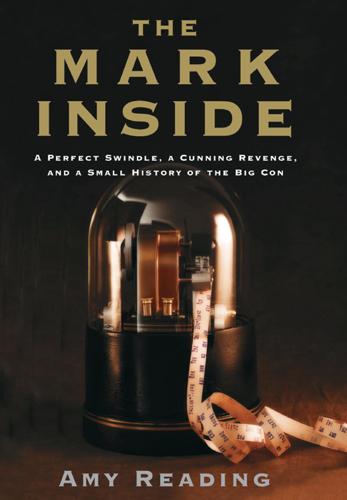
The Mark Inside: A Perfect Swindle, a Cunning Revenge, and a Small History of the Big Con
by
Amy Reading
Published 6 Mar 2012
After the schoolmaster had departed, Franklin saw with dismay that he’d helped himself to a “fine … ruffled” shirt and a handkerchief “mark’d with an F in red silk.” His guest was no schoolmaster, and his name was not Lloyd. Franklin had been duped, almost certainly by Tom Bell, the most notorious impostor of the American colonies. Like Franklin, Bell was the son of an upwardly mobile family in Boston. Like Franklin, he had attended the Boston Latin School and obtained an excellent education, advancing even further than Franklin, who was forced to leave at age ten when his father could no longer afford the tuition. Bell’s diploma gained him entry to Harvard, but in 1729, the year before he matriculated, his sea captain father unexpectedly died, throwing the rest of the family on hard times.
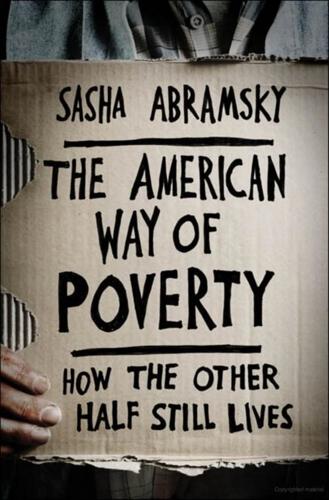
The American Way of Poverty: How the Other Half Still Lives
by
Sasha Abramsky
Published 15 Mar 2013
Variations on the stories from Appalachian Pennsylvania could be encountered in cities and regions across America. After all, an economic free-fall of the kind that the United States underwent after the housing market collapse and then the broader financial meltdown leaves carnage in its wake. For those born into poverty, the hardship is magnified. For millions of others who thought of themselves as upwardly mobile, with middle-class aspirations and middle-class spending patterns, the crisis flung them down the economic ladder, replacing a precarious fiscal stability with a continuous struggle to survive. In the working-class, immigrant community of Pomona, a few miles east of downtown Los Angeles, in fall 2008 five eleventh-grade and ten twelfth-grade students in Village Academy teacher Michael Steinman’s English classes began compiling their stories of poverty for a video project.

Digital Wars: Apple, Google, Microsoft and the Battle for the Internet
by
Charles Arthur
Published 3 Mar 2012
Gartner’s worldwide figures for the period show that a shade over 4 million Android phones were sold – only 7 per cent of the 53 million smartphones sold that quarter, but neck and neck with Windows Mobile, which had a last high before beginning its final fade. (The iPhone made up 16 per cent of world smartphone sales, snapping at the heels of RIM’s 20 per cent.) Android phones found a particularly receptive market in China, where upwardly mobile buyers liked having something that looked to all intents and purposes like an iPhone, but was a lot cheaper; the Chinese grey market importers who would throw down hundreds of pounds (or more usually dollars, as the exchange rate was more favourable) in Apple Stores in the UK and the United States for an armful of iPhones couldn’t keep up with demand.

An Extraordinary Time: The End of the Postwar Boom and the Return of the Ordinary Economy
by
Marc Levinson
Published 31 Jul 2016
Dealing with inflation and reducing government spending were her priorities; she would get to the unions in time. Besides, Thatcher was well aware that the Conservatives were a minority party. She owed her victory to union members, people who normally voted Labour but aspired to own their homes and send their children to university. These upwardly mobile households broke with tradition, voting Conservative in 1979 because they were tired of the Labour Party’s incompetence, but they nonetheless believed in the value of trade unions. The only way the Conservative Party could stay in power was to break these voters’ class allegiance. Thatcher was playing a long game.

What’s Your Type?
by
Merve Emre
Published 16 Aug 2018
Of course, there existed no controlled study, no real evidence, to validate Isabel’s belief in the inverse relationship between intelligence and the strength of one’s type preferences. But as was the case for the 1940s’ most famous test, the intelligence quotient (IQ) test, evidence mattered less than the indicator’s ability to justify as “natural” or “normal” the division that already existed in the world, a world in which the wealthier, whiter, and more upwardly mobile were found to be more self-aware than everyone else. It did not occur to anyone, even Isabel, as unusual that the strongest preferences were always expressed by successful, self-assured men with ready access to power, whether in the form of cold hard cash or institutional authority. Often it was these successful men who paid her to manage the personnel dilemmas they found unsavory or tedious.

The Frayed Atlantic Edge: A Historian’s Journey From Shetland to the Channel
by
David Gange
Published 10 Jul 2019
In the 1970s concepts similar to the Enlightenment – labels that implied a direction in history – were revealed as little more than propaganda praising certain interest groups. Feminist historians such as Joan Kelly-Gadol, for instance, showed the ‘Renaissance’ to be a narrative that fits the experience of a cadre of wealthy upwardly mobile men, but not their contemporaries whose opportunities narrowed and wealth decreased.2 To sum up an era with the term Renaissance is thus to engage in an identity politics that values the rich alone. The case of the Enlightenment is little different. Social distinctions of race, class, gender and sexuality were not undermined but consolidated: this was the era of scientific racism or ‘the century of the colour line’ as it was labelled by the philosopher W.

Heaven Is a Place on Earth: Searching for an American Utopia
by
Adrian Shirk
Published 15 Mar 2022
It does sometimes feel outrageous for me, a white American woman, to use the word “freedom” so blithely, or to work after a definition, when it is Black Americans who taught this country, this stupid country, everything it will ever know about freedom. But freedom is also something that my white Irish in-laws talked about a lot, connected as they felt to the Irish liberation movement their ancestors fought in, the pride they felt as the descendants of Irish peasants, but who had now been upwardly mobile white people in the suburbs of New York City for three generations. I found this attachment to rebel-hood by white people suspect, and yet I’d sing along enthusiastically to “Grace” and “Danny Boy” with Dan on his back porch in the little cabin he was renting on Lake Waccabuc the year before his strokes.
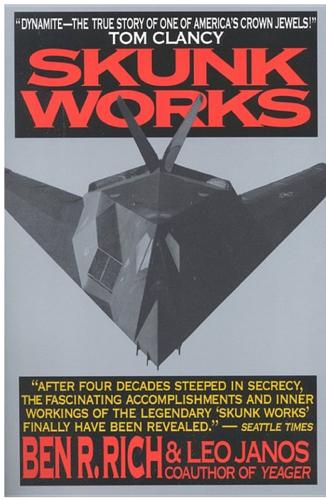
Skunk Works: A Personal Memoir of My Years of Lockheed
by
Ben R. Rich
and
Leo Janos
Published 1 Jan 1994
The curse of operating inside a top secret world is that very few in the aerospace industry knew you even existed. I also had talked Kelly into letting me attend a thirteen-week management training course at Harvard’s Business School in the summer of 1969. It was an advanced management institute for about one hundred and fifty carefully selected, upwardly mobile executives—and Kelly wrote me a glowing recommendation that helped me get in, and authorized Lockheed to pay the tuition freight, which was considerable. He backed me even though he insisted that it would be a complete waste of my time. “I’ll teach you all you need to know about running a company in one afternoon, and we’ll both go home early to boot.

Chasing the Devil: On Foot Through Africa's Killing Fields
by
Tim Butcher
Published 1 Apr 2011
The author describes her search for the truth about a single episode at the heart of this opaque and often-overlooked period of the country’s history, the arrest and execution of her father, Mohamed Forna. After the colonial period when Krios, the freed slaves, had prospered, Mohamed was part of an upwardly mobile generation of indigenous Sierra Leoneans, born and educated in the provinces, who saw independence as the arrival of a new age when their turn to thrive had finally come. For me, the book fills in much that is missing about recent Sierra Leonean history, describing the potential of the immediate post-independence years, a time of optimism and hope when families could live normal lives, saving money to send children to school, earning qualifications to get meaningful jobs with genuine career paths, dreaming of self-betterment and development.

The Millionaire Fastlane: Crack the Code to Wealth and Live Rich for a Lifetime
by
Mj Demarco
Published 8 Nov 2010
Lead generation solves two needs: 1) The consumer's desire to save time and money and 2) The business owner's need to find new customers inexpensively. 4) Social Networks Social networks are spin-offs of content systems. Instead of pooling content for eyeballs, people are pulled into groups, or tribes. Facebook started off as a pool for college-aged students and evolved into a generic social network for all ages. MySpace targets the high school crowd. LinkedIn hits the upwardly mobile professional. Social networks are mere aggregators of like-minded communities, from mystery novel writers to gear heads who like to rebuild engines on the weekend. 5) Brokerage Systems Brokers bring buyers and sellers together and facilitate transactions. They are market-makers for a particular industry and earn money typically on each transaction.
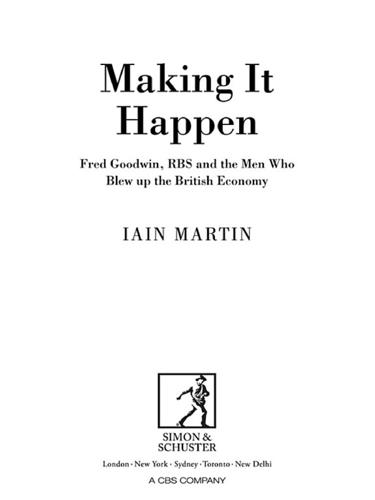
Making It Happen: Fred Goodwin, RBS and the Men Who Blew Up the British Economy
by
Iain Martin
Published 11 Sep 2013
It was hard to get a hearing for scepticism when house prices continued their giddying rise in a manner that was so gratifying, at least for those who already owned houses or could afford to buy. The leitmotif of this period was the emergence of the property show on television. Location, Location, Location – the movement’s signature show – first aired in 2000, with its upwardly mobile presenters scouring the country for properties on behalf of the aspirational and ostentatious. Yet somehow the show Grand Designs, which first aired in 1999, managed to eclipse its rival in terms of boom-time smugness. If the worthy intention was to celebrate good design and highlight beautiful houses that were being built or restored imaginatively, it tipped over at points into a parade of preening consumerist self-obsession and interior design-driven dottiness.

Border and Rule: Global Migration, Capitalism, and the Rise of Racist Nationalism
by
Harsha Walia
Published 9 Feb 2021
Refugees are often characterized as fleeing persecution in search of safety, while migrants are depicted as “bogus refugees” moving for economic reasons and hence undeserving of protection. Furthermore, migrants are also differentiated from immigrants, who are typically perceived and selected by the state as upwardly mobile economic actors, while refugees claiming asylum are separated from UN Convention refugees, who are “accepted” or “resettled” with UN or state-designated legal status. The distinction between refugees and migrants, however, is blurry, especially given their unsanctioned, irregular flights of escape and co-constituted networks.

Visual Thinking: The Hidden Gifts of People Who Think in Pictures, Patterns, and Abstractions
by
Temple Grandin, Ph.d.
Published 11 Oct 2022
Between 1990 and 2009, the number of CTE credits earned by US high school students dropped by 14 percent. In a subsequent Brookings report on the struggle to bring back apprenticeships, Greg Ferenstein writes, “As college became the default path to top professions in the twentieth century, apprenticeships fell out of favor with America’s upwardly mobile culture.” The entrenched prejudice against apprenticeships and vocational schools goes a long way toward explaining why we don’t have a more thriving apprenticeship culture, even though, as we’ve seen in the previous chapter, a college education is hardly a guarantee of success given the dropout rates, high unemployment, and crippling debt.
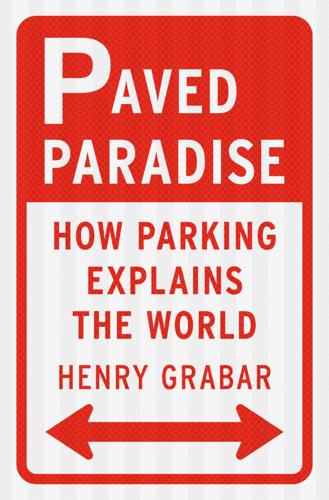
Paved Paradise: How Parking Explains the World
by
Henry Grabar
Published 8 May 2023
In 1996, New York’s agents were transferred back into the NYPD, the end of the four-decade experiment in civilian parking enforcement. (Though traffic agents were not permitted entry to the force’s powerful unions.) The job still paid little, but it did not require a college education and retained its appeal for upwardly mobile new arrivals to New York. In 2022, immigrants from Bangladesh made up a plurality in the three-thousand-person traffic police force. * * * For New York City’s drivers, finding spots and avoiding tickets could become an obsession, more important even than driving the car itself.
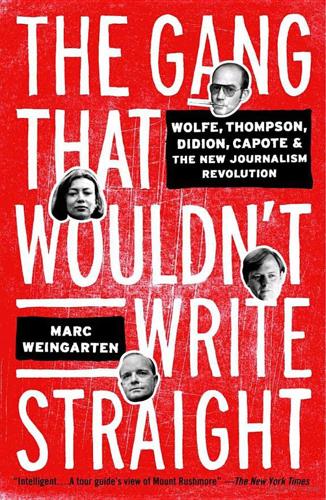
The Gang That Wouldn't Write Straight: Wolfe, Thompson, Didion, Capote, and the New Journalism Revolution
by
Marc Weingarten
Published 12 Dec 2006
Wolfe’s big subject—status anxiety and its manifestations-would be the organizing principle of the magazine. Manhattan’s inhabitants were obstinately proud to call themselves New Yorkers, but they were also urban survivalists; their self-preservation skills were a crucial test of their commitment to enduring the best city on the planet. New York would be a how-to guide for this white, upwardly mobile demographic segment. A subscription solicitation that ran in the magazine in early 1969 trumpeted New York’s attributes. “We’ll show you how to get a rent-controlled, semi-professional apartment, even though you’re not a semi-professional person,” the copy read. “We’ll tell you how to go about getting your kid into private school with confidence, even though you graduated from P.S. 165.”
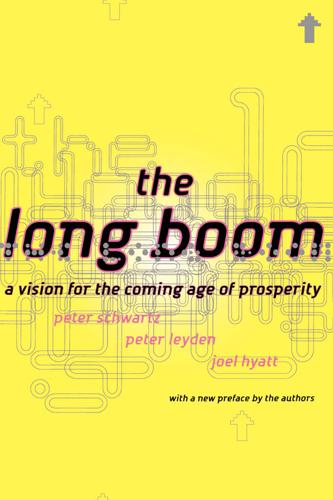
The Long Boom: A Vision for the Coming Age of Prosperity
by
Peter Schwartz
,
Peter Leyden
and
Joel Hyatt
Published 18 Oct 2000
Then production moved to Japan, then to Korea, then to Malaysia, now to China and Indochina. Each time production migrated, the original host country traded up to creating higher-value-added products. That migration will continue, and those at the lower end today will move to greener pastures, leaving opportunities for developing countries in Africa to begin the long path of upwardly mobile development. One obvious economic opportunity for Africa is in textiles and fashion. The many cultural regions of Africa have distinct styles of art and distinct design traditions, as well as a long history of creating fabrics. A thriving textile and fashion industry could be built around distinct clusters scattered across the continent.
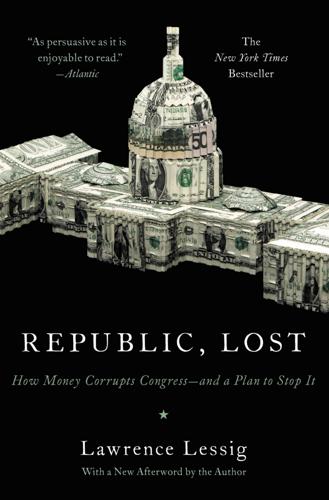
Republic, Lost: How Money Corrupts Congress--And a Plan to Stop It
by
Lawrence Lessig
Published 4 Oct 2011
In the 1970s the executives at the S&P 500 made thirty times what their workers did, and today make three hundred times what their workers make.108 Their average salary was more than $10 million in 2007, about 344 times the pay of “typical American workers.”109 Likewise, as their salaries have skyrocketed, the position of the self-employed has collapsed. Between 1948 and 2003 “the self-employment rate in the United States fell from 18.5% to 7.5%”110—the second-lowest among twenty-two rich nations according to an OECD study.111 The nation of our parents was defined by makers and innovators. We’ve become a nation defined not by the upwardly mobile entrepreneurs, but by Wall Street fat cats—the nation predicted by the apostle Matthew (13:12): “For whosoever hath, to him shall be given, and he shall have more abundance.”112 So let’s repeat the point in a single line, because it is critical to everything in this book: changes in government policy, Hacker and Pierson argue, account for the radical change in the distribution of American wealth.
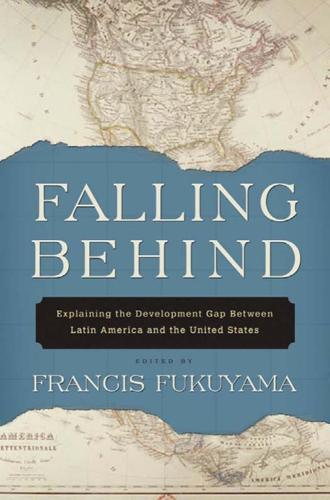
Falling Behind: Explaining the Development Gap Between Latin America and the United States
by
Francis Fukuyama
Published 1 Jan 2006
Two key processes seem to have been at work. One, first discussed by Tawney, was the rise of the gentry. Tawney pointed out that, after the dissolution of the monasteries in 1538 by Henry VIII, a large amount of land came onto the market and was purchased by a new breed of capitalistic farmers. These upwardly mobile producers had a vested interest in secure property rights, abolishing monopolies and restrictions of trade, and reining in the powers of the king.50 Another complementary factor, emphasized by Acemoglu et al., was the creation of a new breed of mercantile and capitalistic interests as the result of the expansion of overseas trade.51 Their institutional interests were similar to those of the gentry, and they combined in the eighteenth century to change British institutions.

Nexus
by
Ramez Naam
Published 16 Dec 2012
Buddha's Kiss, she mentally translated. An irreverent name in a normally devout society. Faint music and the sounds of voices filtered through. It was a quiet, trendy area, close to the seedy debauchery of the Nana sex district, close to the illicit fruits of Sukchai, but buffered from both. Just the kind of place young, upwardly mobile Thais might choose to party, Sam thought. Narong pressed the button next to the heavy brass door. It cracked open. A muscular Thai bouncer waved them in. Low couches filled the establishment. The walls were painted red and gold, inlaid with Thai script, lotus flowers, Buddhas. Fashionable young Thai and a few foreigners lounged in threes and fours, smiling and talking, holding stylish glasses of clear and colored booze.
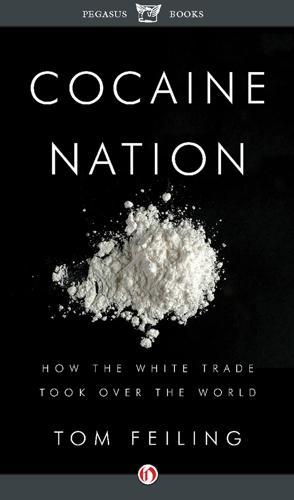
Cocaine Nation: How the White Trade Took Over the World
by
Thomas Feiling
Published 20 Jul 2010
Initially, that meant the executive class of Hollywood and the music business, whose operators were typically young, highly paid and obliged to work for long hours in pampered but high-pressure environments. But cocaine soon became every ambitious young American’s favourite accessory. Like Dom Pérignon, cocaine was a mass market product with bona fide upper-class cachet. Time magazine called it ‘the drug of choice for perhaps millions of solid, conventional, and often upwardly mobile citizens’. Unlike a lot of other drugs, cocaine was regarded as a fitting accompaniment to both work and leisure. It had none of the counter-cultural connotations or mind-bending potential of LSD or cannabis and it was too expensive to be more than an occasional treat for all but a small constituency of wealthy acolytes.
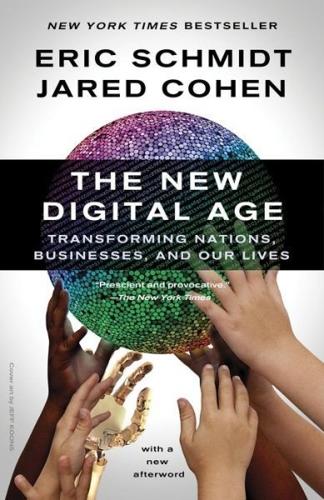
The New Digital Age: Transforming Nations, Businesses, and Our Lives
by
Eric Schmidt
and
Jared Cohen
Published 22 Apr 2013
Each society will offer slightly different packages in this initiative, depending on the culture and the level of technological sophistication, but the essentials of the process have a universal appeal: free top-of-the-line devices, cheap text and voice plans, credit to purchase apps, and data subsidization that allows people to use the Internet and e-mail inexpensively. These smart phones would be of a better quality than much of the population’s and cheaper to use, as well. They could be front-loaded with appealing vocational applications that would provide some momentum for upwardly mobile ex-combatants, like English-language instruction or even basic literacy education. A former child soldier in a South Sudanese refugee camp, who had been forced to leave his family at a young age, could have access to a device that connected him not only to local relatives, but also to potential mentors from the Sudanese diaspora abroad, perhaps young men who had successfully sought asylum in the United States and built wholly new lives for themselves.
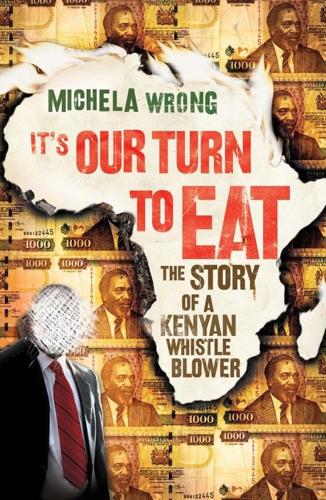
It's Our Turn to Eat
by
Michela Wrong
Published 9 Apr 2009
He flirted with Islam, buying a Muslim cap and reading the Koran with typical singleness of purpose. ‘John never did anything just for the heck of it. There was always a reason,’ says his sister. When that belief system failed to fit, he swung the other way, in a direction less calculated, this time, to outrage family and friends. In upwardly mobile families, sociologists say, it is the mother who serves as moral and spiritual compass. The Githongo family was no exception. Statuesque, grave and as imposing as a granite outcrop, Mary Githongo had always played a steadying role in the partnership, slamming the ethical brakes on when Joe, the flighty, less scrupulous one, showed signs of getting swept into one of his businessmen friends' dodgier schemes.
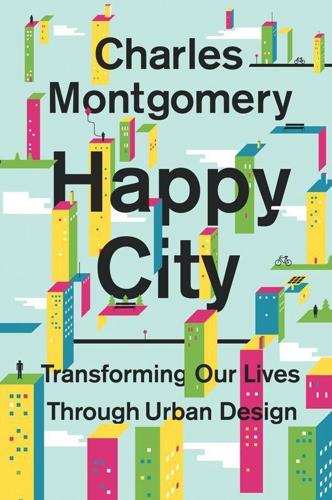
Happy City: Transforming Our Lives Through Urban Design
by
Charles Montgomery
Published 12 Nov 2013
For years, television largely depicted American family and social life as suburban, but in the past two decades the hip protagonists of programs such as Friends and Sex and the City were shown in downtown apartments. Formerly low-status neighborhoods such as Manhattan’s East Village have been invaded by the upwardly mobile, and condominium towers designed by starchitects are sprouting between the tenements. New generations are growing up with a different mental library of stories that shape their domestic tastes. Errors from Above Unfortunately, when choosing how to live or move, most of us are not as free as we think.

The Looting Machine: Warlords, Oligarchs, Corporations, Smugglers, and the Theft of Africa's Wealth
by
Tom Burgis
Published 24 Mar 2015
The demise of Kaduna’s textile industry had drained the life from the city, he told me, sitting in a sweltering office above his sacristy and dressed in a simple black vestment. ‘We’ve gone backward twenty years,’ he said. ‘Back in the seventies there were textiles, people were energetic. But that generation was not able to produce the young, upwardly mobile elite. That’s what their children should have been.’ Kaduna’s impoverished inhabitants had retreated into their ethnic and religious identities. ‘Kaduna is now a tale of two cities,’ said the priest. ‘This side of the river is Christians; the other is Muslims.’ Kaduna’s decline was only one symptom of Nigeria’s descent into privation, Kukah went on.
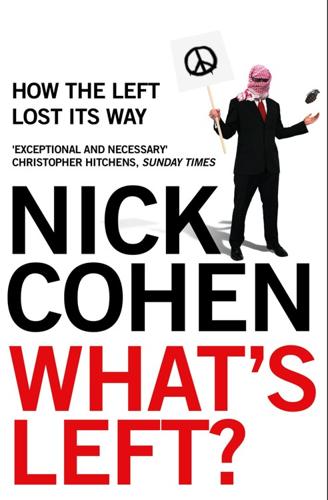
What's Left?: How Liberals Lost Their Way
by
Nick Cohen
Published 15 Jul 2015
Perhaps he shouldn’t have been surprised that working-class Labour voters were sticking with the Labour leadership. An international survey of anti-Americanism found the greatest support for the United States in Britain, and in many other developed countries, came from the working class and the upwardly mobile – people who associated the United States with economic progress and freedom from the prejudices of traditional societies, including the prejudices of the European left. Shaken Labour MPs would return from Westminster to working-class constituencies, their ears filled with denunciations of the Prime Minister and predictions he would be gone within days.

Lonely Planet Cape Town & the Garden Route (Travel Guide)
by
Lucy Corne
Published 1 Sep 2015
The process is a patchy, controversial one and has long been so – this is where you’ll find the largely empty lots of District Six, a multicultural area destroyed during apartheid. Creative industries, cafes and bars are clustered at the the East City end of District Six. Moving further eastwards, Woodstock and Salt River continue their upwardly mobile trajectory, with the Woodstock Exchange, the Woodstock Foundry, Woodstock Co-op and Salt Circle Arcade being the prime redevelopments following in the wake of the phenomenal Old Biscuit Mill. The opening of several major and minor Cape Town galleries, joining pioneers such as Greatmore Studios, has put the region on the art-lovers’ map.
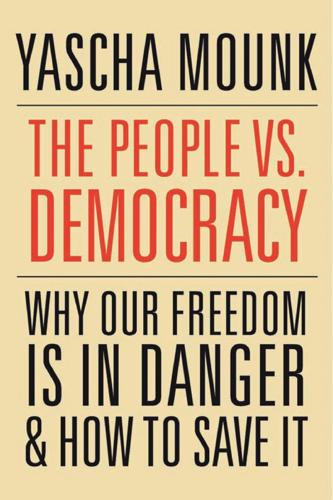
The People vs. Democracy: Why Our Freedom Is in Danger and How to Save It
by
Yascha Mounk
Published 15 Feb 2018
As an “earned” identity slips out of their reach, they are likely to default to an “ascriptive” identity—making their ethnicity, their religion, and their nationality more central to their worldview.63 This cultural transformation helps to explain the widening disconnect between the downwardly mobile or already poor, on the one hand, and the upwardly mobile or already affluent, on the other hand. People who have, or aspire to, the kind of job that allows them to sustain an earned identity are tempted to think of their ascriptive identities as immaterial. This allows them to bridge cultural and ethnic divides, finding common ground with people who share their professional status or their personal tastes.
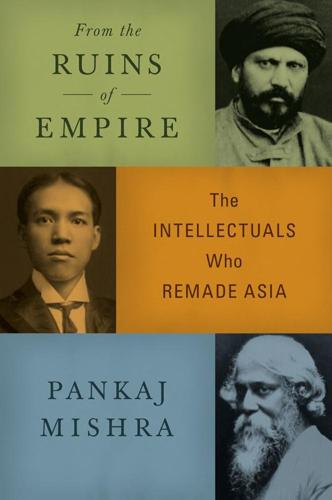
From the Ruins of Empire: The Intellectuals Who Remade Asia
by
Pankaj Mishra
Published 3 Sep 2012
It had to modernize, but so much of what had been available to Europe in its modernization – the long building-up of scientific knowledge, technical skills, intellectual and political freedom – was lacking in Egypt. The result was greater economic and political dependence on the West, more efficient despotism, and increasingly frustrated and resentful upwardly mobile Egyptians. Muhammad Ali (1769 – 1849), a renegade Ottoman soldier from Thrace who forced Istanbul to recognize his viceroyalty of Egypt, wished to build a formidable military and consolidate his own dictatorial power. To this end, he recruited soldiers from the French army, conferring on some of these mercenaries the title of Bey or Pasha (‘The French canaille abroad is impressive,’ Flaubert wrote to a friend from Egypt in 1849, ‘and let me add – there is a lot of it.’47).
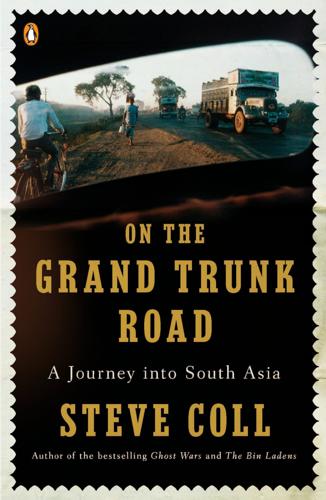
On the Grand Trunk Road: A Journey Into South Asia
by
Steve Coll
Published 29 Mar 2009
On the small farm in rural Punjab where Singh grew up, his status was ordained by tradition but his opportunities were defined by modernity. His ancestors had been farmers and soldiers, but after dropping out of high school, he took to trucking because the money was good. Now he was independent, even upwardly mobile. He wore a shiny gold watch and said he sent one hundred rupees a month home to Punjab to his wife, whom he wed in an arranged marriage in 1984. Those he left behind in the village were trapped now in the Sikh separatist insurgency, in which more than five thousand people, mostly Sikhs, die in shootouts, bomb explosions, and police killings each year.

World Cities and Nation States
by
Greg Clark
and
Tim Moonen
Published 19 Dec 2016
Korea is an example where severe brain drain towards the Seoul capital region has acted as a major deterrent to companies considering relocating their R&D and their managerial functions to second cities. For many emerging nations, the internal ‘brain drain’ to their world cities is now viewed as a more serious challenge than the external brain drain to other countries. In more established cities, there is concern that upwardly mobile talent in world cities increasingly does not ‘get off’ at the top of the ‘escalator’ and return to lower‐income regions, intensifying the skills gaps. This has implications for other cities’ specialised sector competitiveness, and the social cohesion in cities that have lost much of their young adult population (Duke et al., 2006; Massey, 2007). • Over‐concentration of financial and business service sectors.
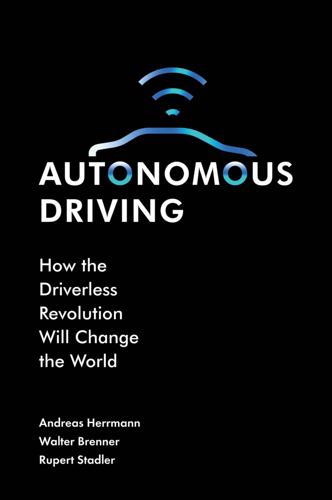
Autonomous Driving: How the Driverless Revolution Will Change the World
by
Andreas Herrmann
,
Walter Brenner
and
Rupert Stadler
Published 25 Mar 2018
Interview with 14 Car Dealers Fourteen Audi Car Dealers from Beijing, Shenyang, Chengdu, Guangzhou, Shanghai and Hangzhou The path towards autonomous driving has to take place gradually via more and more driver-assistance systems. In China, people who own premium cars are usually driven around by their own chauffeur, so it is not particularly compelling to argue that selfdriving cars give people more time for themselves or their business. However, people from upwardly mobile social classes who to date have primarily driven mid-sized cars may be very interested in autonomous vehicles. As a rule, these clients welcome technological progress and are early adopters who are very willing to embrace new features and functions. For the phase in which driverless cars become more widespread, it is vital that there are no major accidents, and the legal framework for using such cars must first be resolved.
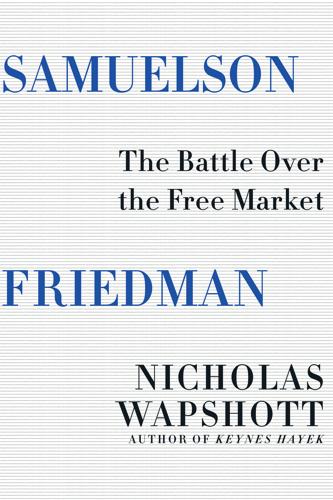
Samuelson Friedman: The Battle Over the Free Market
by
Nicholas Wapshott
Published 2 Aug 2021
Memoirs of an Unregulated Economist (Basic Books, New York, 1985). Szenberg, Michael, Michael Ramrattan, and Aron A. Gottesman, eds. Samuelsonian Economics and the Twenty-First Century (Oxford, 2006). Tarshis, Lorie. The Elements of Economics (Houghton Mifflin, Boston, 1947). Tebbit, Norman. Upwardly Mobile: An Autobiography (Weidenfeld and Nicolson, London, 1988). Thatcher, Margaret. The Downing Street Years (HarperCollins, London, 1993). ———. The Path to Power (HarperCollins, London, 1995). Volcker, Paul, and Toyoo Gyohten. Changing Fortunes: The World’s Money and the Threat to American Leadership (Times Books, New York, 1992).
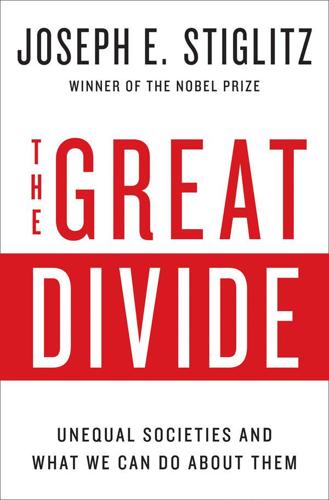
The Great Divide: Unequal Societies and What We Can Do About Them
by
Joseph E. Stiglitz
Published 15 Mar 2015
Perhaps a hundred years ago, America might have rightly claimed to be the land of opportunity, or at least a land where there was more opportunity than elsewhere. But not for at least a quarter of a century. Horatio Alger–style rags-to-riches stories were not a deliberate hoax, but given how they’ve lulled us into a sense of complacency, they might as well have been. It’s not that social mobility is impossible, but that the upwardly mobile American is becoming a statistical oddity. According to research from the Brookings Institution, only 58 percent of Americans born into the bottom fifth of income earners move out of that category, and just 6 percent born into the bottom fifth move into the top. Economic mobility is lower in the United States than in most of Europe and lower than in all of Scandinavia.

Hedgehogging
by
Barton Biggs
Published 3 Jan 2005
A couple of years ago he sent out a Christmas letter, which I reproduce here for its social value. In our neck of the woods, Christmas letters attached to Christmas cards ccc_biggs_ch15_204-218.qxd 212 11/29/05 7:04 AM Page 212 HEDGEHOGGING have become a not-so-subtle bragging thing in which upwardly mobile families advertise how absolutely nifty cool their perfect, blemish-free lives are and recount all the brilliant things their wonderful children have achieved. Even family pictures have become polluted. Last Christmas one family picture included with each name the prestigious college attended, like the father was Amherst 1979; mother,Amherst 1981; Lisa, Harvard 2002; Colin, Yale 2004.

Frommer's Denver, Boulder & Colorado Springs
by
Eric Peterson
Published 1 Jan 2005
Today, there are sports bars, dance bars, lots of brewpubs, outdoor cafe bars, English pubs, Old West saloons, city-overlook bars, Art Deco bars, gay bars, and a few bars we don’t want to discuss here. Appropriately, the newest Denver “in” spot for barhopping is also the oldest part of the city—LoDo—which has been renovated and upgraded, and now attracts all the young partiers and upwardly mobile professionals. Its trendy nightspots are often Bottoms Up! noisy and crowded, but if you’re looking for action, this is where you’ll find it. More beer is brewed in metropoliOther popular “strips” are along Broadtan Denver than in any other city in way (centered on 10th and Ellsworth aves., the United States respectively), and along East Colfax Avenue from about Ogden to Monroe streets.
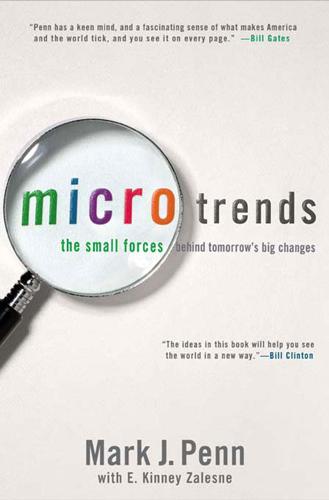
Microtrends: The Small Forces Behind Tomorrow's Big Changes
by
Mark Penn
and
E. Kinney Zalesne
Published 5 Sep 2007
The impoverished and uneducated may just be too smart to blow themselves up for this cause. In a 1980 study of radical Islamists being held in Egyptian jails, researcher Saad Eddin Ibrahim found that the typical offender was a male in his early 20s; from a normally cohesive, rural, or small-town family; educated in science or engineering; upwardly mobile and had high achievement and motivation. Not poor and desperate, but educated and rising. In 2002, professors Alan Krueger and Jitka Maleckova compared 129 Hezbollah fighters who had died in the 1980s and early 1990s to the Lebanese population from which they were drawn. Whereas the Hezbollah militants had a 28 percent poverty rate, the overall population’s was a higher 33 percent.

The Rough Guide to Amsterdam
by
Martin Dunford
,
Phil Lee
and
Karoline Thomas
Published 4 Jan 2010
The Old Jewish Quarter and Eastern docklands | The Plantagebuurt Laid out in the middle of the nineteenth century, the pleasant, leafy streets of the Plantagebuurt, falling to either side of Plantage Middenlaan boulevard, were developed as part of a concerted attempt to provide good-quality housing for the city’s expanding middle classes. Although it was never as fashionable as the older residential parts of the Grachtengordel, the new district did contain elegant villas and spacious terraces, making it the first suburban port of call for many upwardly mobile Jews. Nowadays, the Plantagebuurt is still one of the more prosperous parts of the city, in a modest sort of way, and boasts two especially enjoyable attractions – the Hortus Botanicus (Botanical Gardens) and the Verzetsmuseum (Dutch Resistance Museum). Nearby, just over the Plantage Muidergracht canal, and stretching west to the River Amstel, is a small parcel of old Amsterdam, dating back to the late seventeenth century.

Fire and Steam: A New History of the Railways in Britain
by
Christian Wolmar
Published 1 Mar 2009
By 1959, it was clear that the Plan was not sufficiently focused on the railway’s strengths, such as rapid connections between major cities and London commuting and as a result, it inevitably failed to turn around railway finances. While British Railways managers were concentrating on creating huge marshalling yards and doing little to improve services for passengers, the upwardly mobile British public were taking to the roads. By 1960, one in nine families owned a car and most of the other eight were saving to buy one. As both freight and passenger traffic went down, losses increased from £15.6m in 1956 (a slight improvement on the previous year) to £42m four years later17 and questions on the viability of the railways began to be asked in Parliament.
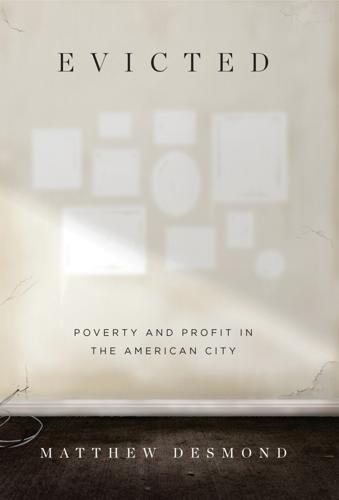
Evicted: Poverty and Profit in the American City
by
Matthew Desmond
Published 1 Mar 2016
Mixed-income housing is intended to “provide low-income residents with exposure to employment opportunities and social role models.” Neighborhood relocation programs, such as Moving to Opportunity, are designed to connect low-income families to more “prosocial and affluent social networks.” But many poor people have plenty of ties to the upwardly mobile. Roughly 1 in 6 Milwaukee renters lives in a neighborhood with above average disadvantage but is embedded in networks with below average disadvantage. But simply having ties to the middle class is insufficient. Likely because of the popularity of the term “social capital,” researchers tend to think of prosocial connections to important or resource-rich people as something you “have” and that, like money, can be used whenever you’d like.
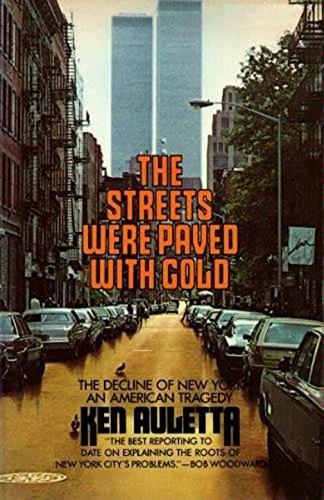
The Streets Were Paved With Gold
by
Ken Auletta
Published 14 Jul 1980
Daniel Joy, a supporter of rent control and the city’s Commissioner of Rent and Housing Maintenance, agreed: “Whether it’s 14 or 15 percent, that’s the ball park.” The citizens of New York City pay for rent control. If rich men like Nat Sherman were not in rent-controlled apartments, perhaps more upwardly mobile black families would live on Central Park West rather than move to Scarsdale. In 1975, 1.7 million of the city’s 2.1 million rental units were subjected to some form of rent regulation (either rent control or what is called rent stabilization). If there were a means test and those in controlled apartments paid a fair rent, the Temporary Commission on City Finances concluded after long study, city real-estate tax coffers would be enriched by $100 million per year.
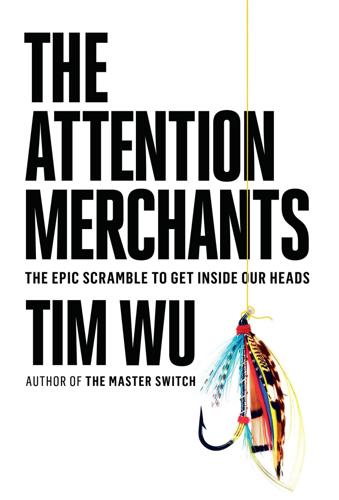
The Attention Merchants: The Epic Scramble to Get Inside Our Heads
by
Tim Wu
Published 14 May 2016
Robbin programmed his computers to profile tens of thousands of new zip codes, sorting the results into these clusters of like-minded areas, each of which he assigned an evocative name, like the “Bohemian Mix,” “Shotguns & Pickups,” or “Young Suburbia.” As an early guide to the clusters prepared in the 1980s explains, those who lived in “Young Influential” neighborhoods were the “young, upwardly mobile singles and dual career couples”; mostly they were to be “found in the inner-ring suburb of major cities.” As to priorities: they “don’t care about good schools, because they don’t have children.” Rather, “they want a mall with a sushi bar, gourmet cookie shop, travel agency and a psychotherapy center.”9 They read books at twice the rate of the national average, and they tended to vote Republican.

Worn: A People's History of Clothing
by
Sofi Thanhauser
Published 25 Jan 2022
Malloy’s 1977 best-seller The Woman’s Dress for Success Book pleaded with his readers to abandon them: “In most business offices, the pantsuit is often a failure outfit…. If you have to deal with men, even as subordinates, you are putting on trouble…. If you want to be a liberated woman, burn your polyester pantsuit, not your bra.” But women had bigger problems on their hands than unsolicited fashion advice. Although they could dress the part of the upwardly mobile, self-determining woman, there was a worm in the bud: American women were moving back into the job market just as well-paying manufacturing jobs were moving overseas. American women streamed into jobs that paid the minimum wage. According to one estimate, 70 percent of the new private sector jobs created between 1973 and 1980 in the U.S. were in the low-paid retail and service areas.

Whole Earth: The Many Lives of Stewart Brand
by
John Markoff
Published 22 Mar 2022
Brand’s grandfather Ralph Chase Morley, heir to the Saginaw-based Morley Brothers wholesalers, ran what by 1892 had become the nation’s second-largest hardware business, as well as one of the largest horse and buggy retailers in the country. The business prospered and expanded through World War I, as the Morley Brothers were major suppliers to the US Army. Soon the Morleys opened a bank as well. They became part of a prosperous, upwardly mobile business class that built Saginaw during the great Michigan timber boom. As the frontier outpost became a thriving city, they prospered, giving their families freedom during holidays to escape to the countryside. And so each summer the Saginaw families would come with an entourage of cooks and nannies to the lake.
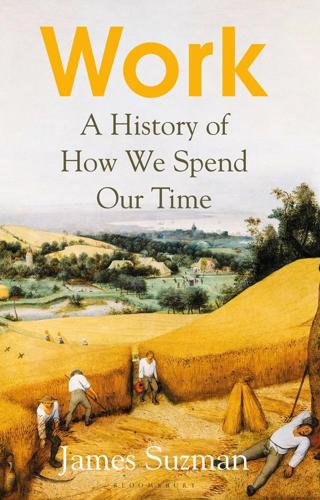
Work: A History of How We Spend Our Time
by
James Suzman
Published 2 Sep 2020
For Galbraith, advertising served another counter-intuitive purpose beyond keeping the cycle of production and consumption rolling. He thought it made people worry less about inequality because, as long as they were able to purchase new consumer products once in a while, they felt that they were upwardly mobile and so closing the gap between them selves and others. ‘It has become evident to conservatives and liberals alike,’ he noted drily, ‘that increasing aggregate output is an alternative to redistribution or even to the reduction of inequality.’ This should have all changed in the 1980s, after what some analysts now refer to as the ‘Great Decoupling’ took effect.

The Unicorn's Secret
by
Steven Levy
Published 6 Oct 2016
By the time the last of that generation received its degrees, the neighborhood would have self-destructed, vacated by an exodus of white Jewish families panicking at the first wave of racial integration. A neighborhood legacy or a set of traditions never formed: West Oak Lane was literally a jumping-off spot, a base camp for the upwardly mobile climb. Ira Einhorn grew up in a characterless, temporary neighborhood. When a West Oak Lane boy reached high school age, he generally had two options. One was Germantown High, a racially mixed coed school with a full range of courses, from academic to vocational. The other, available only to those who achieved top grades in junior high and had high scores in standardized intelligence tests, was Central High.
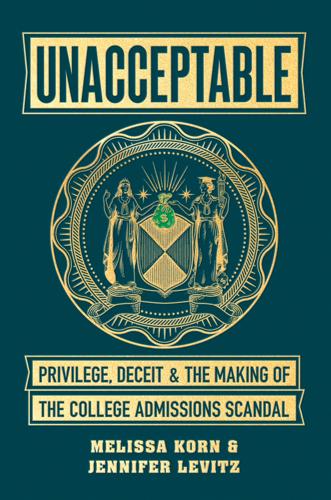
Unacceptable: Privilege, Deceit & the Making of the College Admissions Scandal
by
Melissa Korn
and
Jennifer Levitz
Published 20 Jul 2020
The Tobins enrolled their daughters at the Marlborough School, a ritzy and academically rigorous all-girls school where annual tuition now tops $40,000 and purple banners outside extol virtues like “honor” and “excellence.” Marlborough had educated the children of Hollywood stars and political bigwigs and regularly propelled students to Stanford and the Ivies. * * * • • • THAT FACADE OF BEING a successful family, upwardly mobile from an already high perch, was all about to blow up that February 2018 as agents combed Tobin’s home for financial records, documents, and other evidence linking him to a scam to defraud investors of millions of dollars. The U.S. Securities and Exchange Commission, as well as the U.S. Attorney’s Office for the District of Massachusetts, was probing a classic pump-and-dump investment scheme, in which the conspirators artificially inflated the prices of stocks so they could sell them at a profit before they crashed.

Sing Backwards and Weep: The Sunday Times Bestseller
by
Mark Lanegan
Published 29 Apr 2020
Our mess of a “career” had become only a source of embarrassment, frustration, and turmoil. Worse yet, I myself had set the wheels of this machine in motion. I had idiotically insisted that Lee remain in the band and that we play his songs, a move I cursed myself for almost daily. But beyond all belief, we were still upwardly mobile, and I’d be damned if I was going to quit before the ride was through. We found Van’s replacement in a woman from a band we had previously done shows with. Her name was Donna Dresch. She had the most compelling stage presence of anyone I had ever seen, like a more energetic, female Keith Richards, lit smoke hanging out of her mouth, swinging her bass from side to side and banging her blond-haired head from start to finish of every show.
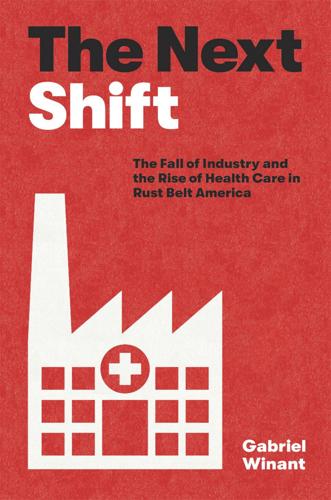
The Next Shift: The Fall of Industry and the Rise of Health Care in Rust Belt America
by
Gabriel Winant
Published 23 Mar 2021
.… Then we moved back on the hill and lived in my grandfather’s house for a couple months and then moved into my mother’s house up on the third floor and we stayed there until we moved across the street into a bigger apartment when we were going to have the third baby.”19 We may appreciate this protracted process by viewing it in comparison with the experience of an upwardly mobile woman, Dr. M., who was born to a steelworker household in a mill town, earned a PhD, and became a college dean. Already working as a teacher when she met her husband, she reflected, “I didn’t want to marry someone [like] the kinds of people that I saw others marry.… I wasn’t thinking about the future at that time or money and this is what I think had my mother concerned because I wanted to be with someone that I would enjoy being with.”20 While there is no reason to accept the implication that middle-class marriages were more loving, the subjective experience of familial rupture and self-creation through companionship and new family formation stands out in opposition to the experience of those around whom Dr.

It's Not TV: The Spectacular Rise, Revolution, and Future of HBO
by
Felix Gillette
and
John Koblin
Published 1 Nov 2022
Much of the series was shot on location in the streets, housing projects, and municipal buildings of Baltimore. The plot revolved around a diverse, sprawling group of morally complex characters, including a doleful, streetwise drug addict named Bubbles (Andre Royo), a gay, stash-robbing vigilante named Omar Little (Michael K. Williams), and an upwardly mobile drug lieutenant, Stringer Bell (Idris Elba), who in his free time studies business administration at a community college. To the press, Simon called it a “visual novel.” In place of the typical cop-show paradigm of good versus evil, The Wire dug into the conflict of the individual versus the system.
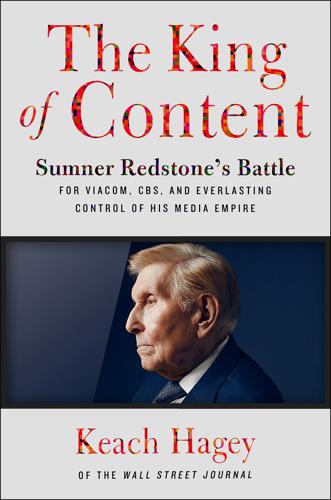
The King of Content: Sumner Redstone's Battle for Viacom, CBS, and Everlasting Control of His Media Empire
by
Keach Hagey
Published 25 Jun 2018
By the age of twelve, he was selling newspapers on the streets of the West End, and by sixteen, he had begun a gambling career that would last until he died peacefully in a Boston nursing home at the age of ninety-nine. Sagansky got his first taste of gambling at Boston Red Sox and Boston Braves games, where he discovered that his facility with math gave him an advantage. After briefly flirting with the idea of parlaying his good grades in school into a career as a lawyer, he fulfilled his upwardly mobile parents’ dreams by enrolling at Tufts University School of Dental Medicine at eighteen. But he made sure not to let his studies get in the way of his extracurricular activities. “He arranged his laboratory work when he was going to college to do that in the morning,” Sage said. “In those days, you played baseball in the afternoon.
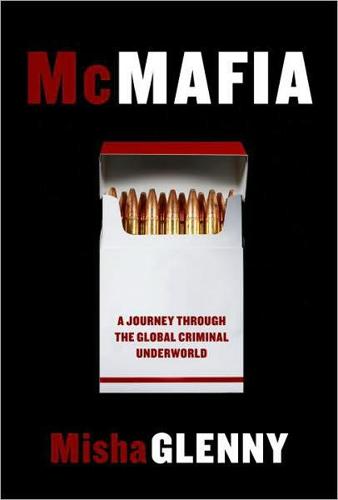
McMafia: A Journey Through the Global Criminal Underworld
by
Misha Glenny
Published 7 Apr 2008
No longer is it primarily an exotic and ballyhooed indulgence of high-gloss entrepreneurs, Hollywood types and high rollers, as it was only three or four years ago—the most conspicuous of consumptions, to be sniffed from the most chic of coffee tables through crisp, rolled-up $100 bills. Today, in part precisely because it is such an emblem of wealth and status, coke is the drug of choice for perhaps millions of solid, conventional, and often upwardly mobile citizens—lawyers, businessmen, students, government bureaucrats, politicians, policemen, secretaries, bankers, mechanics, real estate brokers, waitresses.” There had been little research into the drug since it had been pilloried and then banned by the American government during the 1920s. Most people thought erroneously that it was not very addictive and that it had no serious side effects.
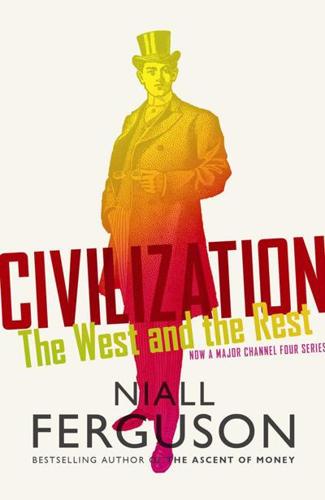
Civilization: The West and the Rest
by
Niall Ferguson
Published 28 Feb 2011
In 1944 Life magazine caused a storm by publishing a photograph of two Wellesley College women in jeans.88 By the time Levi’s competitor Lee introduced zippers, the reputation of jeans as sexually arousing was established – a curious outcome, considering how very difficult it is to have sex with someone wearing tight-fitting jeans. Jeans were upwardly mobile. They began on the backsides of ranch-hands and convicts; were mandatory for defence workers during the war; moved on to the biker gangs of the post-war years; were adopted by West Coast and then Ivy League students; graduated to ‘beat’ writers, folk singers and pop groups in the 1960s; and ended up being worn publicly by all presidents after Richard Nixon.
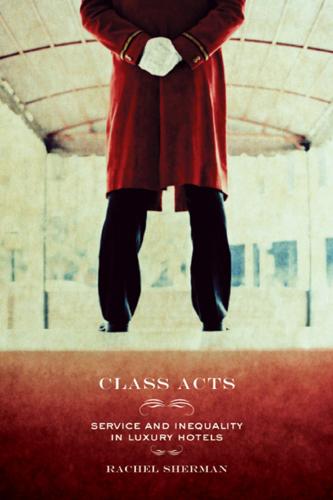
Class Acts: Service and Inequality in Luxury Hotels
by
Rachel Sherman
Published 18 Dec 2006
She cited “tragedies and illnesses” as fates worse than doing “what is considered a more menial job.” In general, these views of workers, which in many ways parallel those that workers themselves expressed, suggest that disparity is not such a big problem. Guests are deserving, disempowered, or equivalent to workers in their job of serving others. Workers are professionals, or they are upwardly mobile. The work they do is not degrading, and it doesn’t define them anyway; money isn’t everything; and they can make a reasonable living. Like workers, guests relocate themselves on these sym- UC_Sherman (O).qxd 240 10/3/2006 2:01 PM Page 240 chapter six bolic hierarchies; unlike workers, they attempt to avoid being at the top.
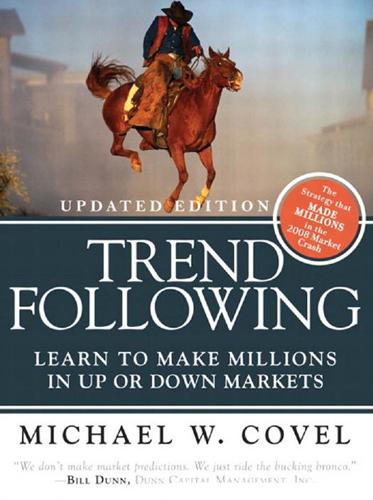
Trend Following: How Great Traders Make Millions in Up or Down Markets
by
Michael W. Covel
Published 19 Mar 2007
My next prediction is that the excerpt will probably unfold again in the years to come just as it did in 2008. Will you be ready? Will you have a plan? Or will you be sitting there, like so many, as Hunter S. Thompson once so sadly noted about the condition of human herds: “In a nation ruled by swine, all pigs are upwardly mobile and the rest of us are [screwed] until we can put our acts together: not necessarily to win, but mainly to keep from losing completely. We owe that to ourselves and our crippled self-image as something better than a nation of panicked sheep.” Key Points • Seykota: “Trends become more apparent as you step further away from the chart.” • Trend followers are generally on the right side of big moves. • The most interesting aspect of the Barings Bank blowout was who won.

The Complete Thyroid Book
by
Kenneth Ain
and
M. Sara Rosenthal
Published 1 Mar 2005
The term rheumatism, now outdated, was frequently used as well to describe various aches and pains with no specific or identifiable origin. What we now call CFS was once considered to be a chronic infection with EpsteinBarr virus. In the late 1970s and early 1980s, a mysterious virus, known as EpsteinBarr virus, was diagnosed in thousands of young, upwardly mobile professionals—at the time known as yuppies—the so-called baby boom generation. People called this condition the yuppie flu, yuppie virus, yuppie syndrome, and burnout syndrome. Many medical professionals were stumped by it, and many disregarded it as a phantom illness or psychosomatic illness, especially in women.

How to Change the World: Reflections on Marx and Marxism
by
Eric Hobsbawm
Published 5 Sep 2011
Socially speaking – and abstracting for the moment from national variations – the Western intellectuals of the 1930s were, in the main, either the children of the established bourgeoisie (which might or might not contain a recognised stratum of the Bildungsbürgertum, which owed its status to a tradition of 276 In the Era of Anti-fascism 1929–45 higher education), or they represented an upwardly mobile stratum drawn from the poorer classes. In the most simplified terms, they belonged to those for whose children a non-vocational higher education was already taken for granted, or to those for whom it was not. Since the old-established institutions for education past the age of, say, fifteen or sixteen years were still largely confined to the children of the established upper strata, the two types often had a different educational formation as well as social background.

Red November: Inside the Secret U.S.-Soviet Submarine War
by
W. Craig Reed
Published 3 May 2010
The Haddo’s crew consisted of just over one hundred enlisted men and a dozen officers. Commander Norman Mims Jr. served as our CO. He was a seasoned veteran with gray hair and had been on a few diesel boats before progressing to CO of the Haddo. Under him, our executive officer projected the haughtiness of an upwardly mobile, by-the-book leader who lived in constant fear of making a mistake. Like all submarines, our command consisted of several divisions, including engineering (nuclear and machinist disciplines), navigation, sonar, fire control (weapons), and other operational functions. My division chief, FTGC (Chief Fire Control Technician–Gunnery) James T.

The Rational Optimist: How Prosperity Evolves
by
Matt Ridley
Published 17 May 2010
Schulz, M. and van Gelder, A. 2008. Nashville in Africa: Culture, Institutions, Entrepreneurship and Development. Trade, Technology and Development discussion paper no. 2, International Policy Network. p. 326 ‘Micro-finance banking, mobile telephony and the internet are now merging’. Talbot, D. 2008. Upwardly mobile. Technology Review, November/December 2008: 48–54. p. 326 ‘opportunities to the poor of Africa that were not available to the poor of Asia a generation ago’. Rodrik, D. (ed.). 2003. In Search of Prosperity. Princeton University Press. p. 327 ‘a study of the sardine fishermen of Kerala in southern India’.
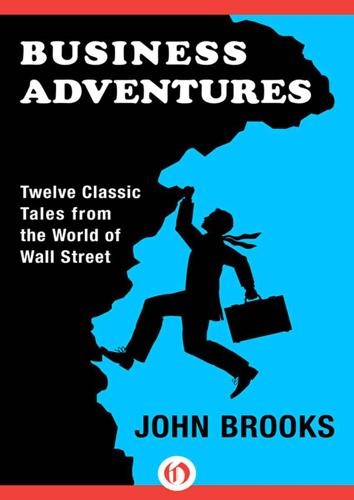
Business Adventures: Twelve Classic Tales From the World of Wall Street
by
John Brooks
Published 6 Jul 2014
More than half the families in the nation would have incomes of over five thousand dollars a year, and more than 40 percent of all the cars sold would be in the medium-price range or better. The report’s picture of America in 1965, presented in crushing detail, was of a country after Detroit’s own heart—its banks oozing money, its streets and highways choked with huge, dazzling medium-priced cars, its newly rich, “upwardly mobile” citizens racked with longings for more of them. The moral was clear. If by that time Ford had not come out with a second medium-priced car—not just a new model, but a new make—and made it a favorite in its field, the company would miss out on its share of the national boodle. On the other hand, the Ford bosses were well aware of the enormous risks connected with putting a new car on the market.

Wealth and Poverty: A New Edition for the Twenty-First Century
by
George Gilder
Published 30 Apr 1981
The woman gives him access to his children, otherwise forever denied him; and he gives her the product of his labor, otherwise dissipated on temporary pleasures. The woman gives him a unique link to the future and a vision of it; he gives her faithfulness and a commitment to a lifetime of hard work. If work effort is the first principle of overcoming poverty, marriage is the prime source of upwardly mobile work. It is love that changes the short horizons of youth and poverty into the long horizons of marriage and career. When marriages fail, the man often returns to the more primitive rhythms of singleness. On the average, his income drops by one-third, and he shows a far higher propensity for drink, drugs, and crime.
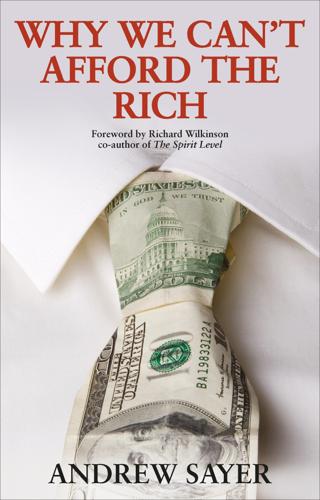
Why We Can't Afford the Rich
by
Andrew Sayer
Published 6 Nov 2014
There will be some relation between individual ability and effort and what they get in economic rewards, but ability and effort are themselves influenced by the unequal division of labour and other sources of inequality in society, so we should focus our attention on those, and on their effects on the shaping of individuals. Although these acquired dispositions can be changed in later life, it’s a slow and difficult process, one that depends on repeated practice at new behaviours. Not surprisingly, where people from working-class backgrounds are upwardly mobile they often say that they still don’t feel they quite fit into their new role and fear that one day they will be ‘found out’. So our upbringing – shaped by our parents’ position in the unequal division of labour – has a significant influence on our aspirations and what we regard as attainable; it shapes what is familiar and, hence, what we feel comfortable with.
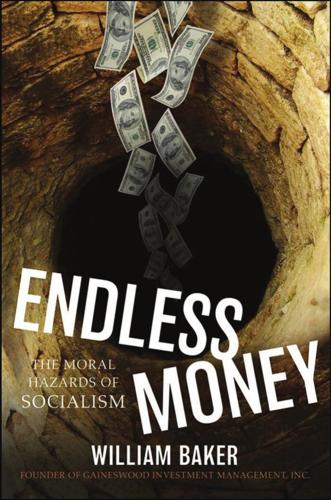
Endless Money: The Moral Hazards of Socialism
by
William Baker
and
Addison Wiggin
Published 2 Nov 2009
In this modern world of Internet transparency, unaided by reporting from the mainstream media, eventually the citizenry of the United States might discover that the Democratic Party is a party heavily influenced by the super rich and the financial institutions that most deeply embraced moral hazard. Chapter 8 Sharecroppers he American Dream, a phrase coined in 1931 by author James Truslow Adams, is to aspire to a successful life, particularly one with an improved economic status compared to one’s parents. Consider this: Two upwardly mobile upper-middle class citizens marry and start a business or rise in their professions to earn a combined $360,000 annually, which places them in the top 5 percent of earners. The marginal federal tax rate this household would pay is 35 percent. Much of the U.S. population resides in high-tax states, which would extract 5 to 10 percent additional tax (this has been deductible, but a 28 percent ceiling was recently introduced).

Venice: A New History
by
Thomas F. Madden
Published 24 Oct 2012
Hemingway had his own corner table, where he drank more than a few martinis. By the mid-1950s droves of Americans were lining up to get into Harry’s Bar and drink a Bellini—the house specialty originally made of Prosecco, pureed white peaches, and a bit of raspberry juice. They still do. For the upwardly mobile Americans of the 1950s and 1960s, Venice came to rival Paris as the most romantic city in the world. Guidebooks poured out of New York presses advising visitors where to eat, stay, and soak up the local charm. American movies reflected this pervasive image. In the very successful Three Coins in the Fountain (1954), American secretary Maria Williams (Maggie McNamara) is swept off her feet by the dashing Prince Dino di Cessi (Louis Jourdan), who whisks her away to Venice in his private plane.

Accelerando
by
Stross, Charles
Published 22 Jan 2005
The entire reputation market seems to have been hit by the confidence flu. Annette bustles around busily, pointing out angles and timings to the forensics team her head office sent in answer to her call for back-up. She seems more angry and shaken than worried by the intrusion. It's probably an occupational hazard for any upwardly mobile executive in the old, grasping network of greed that Manfred's agalmic future aims to supplant. The forensics dude and dudette, a pair of cute, tanned Lebanese youngsters, point the yellow snout of their mass spectroscope into various corners and agree that there's something not unlike gun oil in the air.
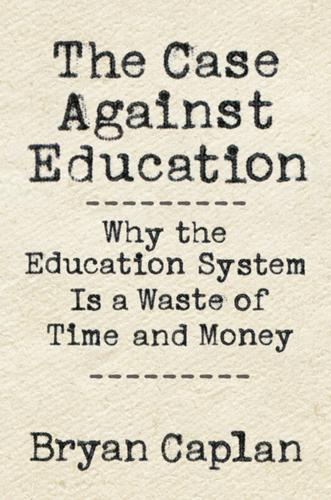
The Case Against Education: Why the Education System Is a Waste of Time and Money
by
Bryan Caplan
Published 16 Jan 2018
Who You Know About half of all workers used contacts—relatives, friends, acquaintances—to land their current job.104 You could argue that education pays despite “low measured learning” because we’re inappropriately measuring what you know instead of who you know. Perhaps studying is overrated. Instead, the upwardly mobile student wins friends and influences people. The better your school, the better your connections after graduation. This story has a kernel of truth and is occasionally dead right. Overall, though, it’s weak. The modern economy is vast and diverse. Few of the students you meet will end up in your line of work—even if they share your major.
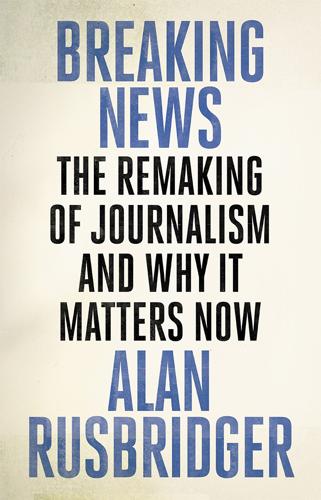
Breaking News: The Remaking of Journalism and Why It Matters Now
by
Alan Rusbridger
Published 14 Oct 2018
It wasn’t a very good name, but it sort of hinted at what we thought we were doing. It would do for now. * On 9 May 2005 – as we had our heads deep in thinking about the typography of the Berliner title piece (should it stay Garamond/Helvetica? Or switch to Egyptian?) – the Huffington Post was launched to a fair amount of sniggering. Arianna Huffington – the most upwardly mobile Greek since Icarus, as my colleague Michael White brilliantly described her when she married the multi-millionaire Republican congressman Michael Huffington in 1986 – had appeared to reinvent her life several times. She had moved from left to right and back again without batting a socialite eyelid.
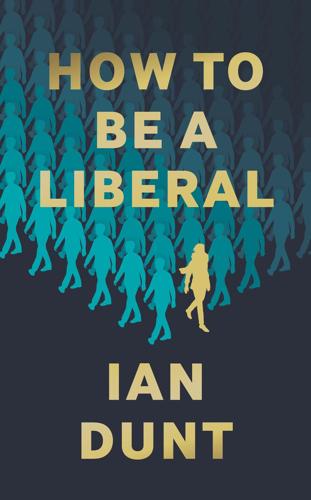
How to Be a Liberal: The Story of Liberalism and the Fight for Its Life
by
Ian Dunt
Published 15 Oct 2020
Unemployment had not just had an economic impact. It had destroyed self-worth. Nationalists gave them a simple and compelling message. Those who had been left behind did have status. It was the status of their country, their gender and their race – all the things that could never be taken from them. The ethnic minorities and upwardly mobile women who were now laying their claim for fair treatment were dismantling the natural social order. It was time to fight back. It proved to be powerfully effective. Across Europe and America, the popularity of nationalist politicians soared. In some countries, like Poland under the Law and Justice party, nationalists were able to seize control of the government.
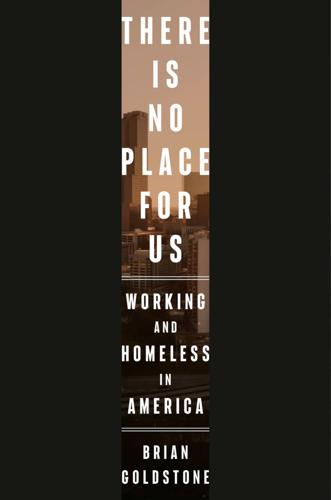
There Is No Place for Us: Working and Homeless in America
by
Brian Goldstone
Published 25 Mar 2025
“Uncle Sam Uses Atlanta as His Housing Laboratory,” declared a local front-page story, observing that “the most advanced attack yet made on the housing problems in the United States is planned in this southern capital.” Yet these “bright, cheerful buildings,” as President Franklin D. Roosevelt referred to Atlanta’s new public housing, were intended only for some Americans. Despite government rhetoric to the contrary, it was almost exclusively for upwardly mobile working-class families, the majority of them white: tenants who were “lower class in income but middle class in values or aspirations,” in the words of one scholar. Techwood was typical in this respect. Although the slum neighborhood cleared to make way for Techwood had been multiracial, the new housing project was a segregated, whites-only community.
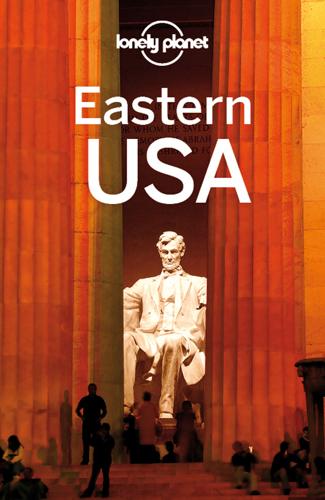
Eastern USA
by
Lonely Planet
UPPER WEST SIDE Shorthand for liberal, progressive and intellectual New York – think Woody Allen movies (although he lives on the Upper East Side) and Seinfeld – this neighborhood comprising the west side of Manhattan from Central Park to the Hudson River, and from Columbus Circle to 110th St, is no longer as colorful as it once was. Upper Broadway has been taken over by banks, pharmacies and national retail chain stores and many of the mom-and-pop shops and bookstores are long gone. You’ll still find massive, ornate apartments and a diverse mix of stable, upwardly mobile folks (with many actors and classical musicians sprinkled throughout), and some lovely green spaces – Riverside Park stretches for 4 miles between W 72nd St and W 158th St along the Hudson River, and is a great place for strolling, running, cycling or simply gazing at the sun as it sets over the Hudson River.
…
Perhaps there’s no clearer symbol for this transformation than the crowds that line up every morning to glimpse the spectacular confections made by Bartolo Jr ‘Buddy’ Valastro of reality TV show Cake Boss at Carlo’s City Hall Bake Shop ( 201-659-3671; www.carlosbakery.com; 95 Washington St; 7am-7:30pm Mon-Wed & Sun, to 9pm Thu-Sat). High-rise buildings housing condominiums and the offices of financial firms seeking lower rents have transformed Jersey City for better or worse from a primarily blue-collar and immigrant neighborhood into a ‘restored’ area for the upwardly mobile. Its biggest draw is the 1200-acre Liberty State Park ( 201-915-3440; www.libertystatepark.org; 6am-10pm), which hosts outdoor concerts with the Manhattan skyline as a backdrop and has a great bike trail, and also operates ferries ( 877-523-9849; www.statuecruises.com) to Ellis Island and the Statue of Liberty.

The Rough Guide to Brazil
by
Rough Guides
Published 22 Sep 2018
Keen to reap benefits from this cultural awareness, local authorities have initiated pseudo-German festivals, such as Blumenau’s Munich-inspired Oktoberfest and Pomerode’s more authentic Festa Pomerana, both of which have rapidly become major tourist draws. EATING AND DRINKING The days of kitsch German restaurants are long gone in Joinville, with a growing range of international bars and restaurants designed to appeal to its upwardly mobile citizens and the hordes of Brazilian conference attendees. The best food court is in the Shopping Mueller mall at Rua Senador Felipe Schmidt 235 (shops: Mon–Sat 10am–10pm, Sun 2–8pm; food court Tues–Sun 10am–10pm; muellerjoinville.com.br); it’s clean and relatively good value, with plenty of Asian and Brazilian food and the usual fast-food options.
…
The contemporary art exhibits here are usually impressive; displays revolve, but there’s always work from Rio Grande do Sul artist Iberê Camargo (1914–94), whose unsettling, Expressionist images have become some of Brazil’s most revered art. The café here is the best place to watch the sunset over the Guaíba. Note that the foundation’s opening hours have been cut drastically since Brazil’s current economic crisis began (check the website for the latest). Moinhos de Vento To get a taste of upwardly mobile Brazil, spend an afternoon in the fashionable Moinhos de Vento district, 4km east of the old centre. Though the cornerstone of the area remains leafy Moinhos de Vento Park (aka parcão) and its replica Azorean windmill, it’s now studded with hip bars, street cafés and restaurants, as well as the deluxe Moinhos Shopping mall.
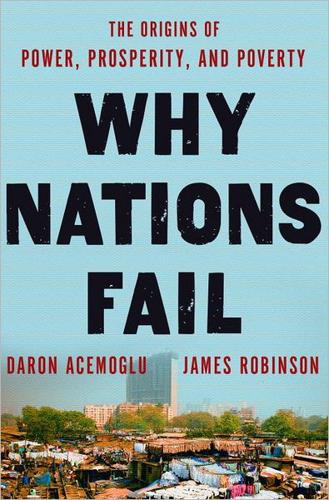
Why Nations Fail: The Origins of Power, Prosperity, and Poverty
by
Daron Acemoglu
and
James Robinson
Published 20 Mar 2012
Despite consisting of elites, the English Parliament developed two distinguishing characteristics. First, it represented not only elites closely allied to the king but also a broad set of interests, including minor aristocrats involved in different walks of life, such as commerce and industry, and later the “gentry,” a new class of commercial and upwardly mobile farmers. Thus the Parliament empowered a quite broad section of society—especially by the standards of the time. Second, and largely as a result of the first characteristic, many members of Parliament were consistently opposed to the monarchy’s attempts to increase its power and would become the mainstay of those fighting against the monarchy in the English Civil War and then in the Glorious Revolution.

Meat: A Benign Extravagance
by
Simon Fairlie
Published 14 Jun 2010
The first edible vegetable oil to reach the market in the US, at the end of the 19th century, was ‘Cottolene’, a blend of cotton seed oil (a byproduct of the cotton industry) with a proportion of beef dripping. Food writer Alice Ross observes that it was one of the first branded and advertised commodities, and was marketed to upwardly mobile urban consumers who were encouraged to view pork as ‘a less expensive meat … associated with “the poorer classes”’.3 Since the 1950s, other vegetable oil products have followed the same promotional path as Cottolene, and largely replaced animal fats in margarine, in soap and as a cooking medium.
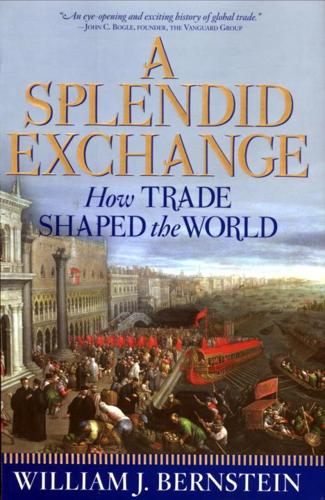
A Splendid Exchange: How Trade Shaped the World
by
William J. Bernstein
Published 5 May 2009
Long before Adam Smith and David Ricardo popularized the virtues of free trade, Henry Martyn realized that by importing the produce of other nations, it was possible to "reap the harvest of every country in the world." Josiah Wedgwood's technical skill and marketing savvy made his cups and pots, filled with tea and sugar from opposite sides of the globe, the essential totem of England's upwardly mobile masses. From the Granger Collection, New York. Before 1757. the English East India Company's territorial presence in India was limited to small trading colonies needed to support the cotton trade. In that year, a young colonel, Robert Clive, defeated a French-supported native force at Plassey and gained for the Company its first substantial conquest in India, a huge swath of territory in the Bengal.
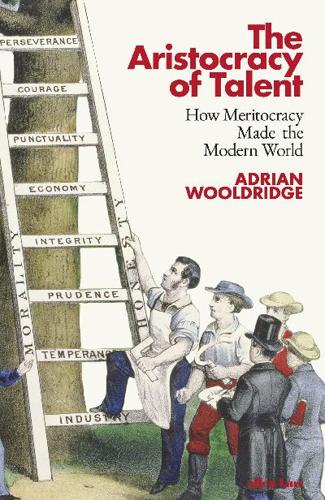
The Aristocracy of Talent: How Meritocracy Made the Modern World
by
Adrian Wooldridge
Published 2 Jun 2021
(‘The Conservatives of Finchley have armed themselves with a new weapon,’ the Finchley Press declared, ‘a clever woman.’)2 She rose up the ranks swiftly, becoming education secretary in 1970, leader of the opposition in 1975 and prime minister in 1979. Mrs Thatcher’s eleven-year premiership was one of the most consequential in twentieth-century British history, with the radical policies she pioneered catching fire across the world. Mrs Thatcher was the consummate example of an upwardly mobile grammar-school type who believed that barriers were for overcoming rather than agonizing over. Her first surviving letter discusses her exam performance.3 She disliked the languid public-school types who believed that government was about managing decline almost as much as she loathed the leftists who manned the picket lines demanding higher pay for less work.
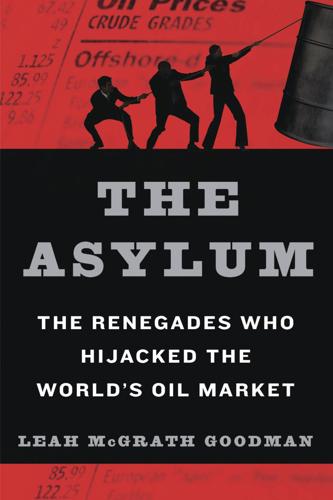
The Asylum: The Renegades Who Hijacked the World's Oil Market
by
Leah McGrath Goodman
Published 15 Feb 2011
Still, even as the United States fought wars in two Middle East nations and kept drilling for oil in ever more perilous depths of the ocean, nobody seemed especially alarmed at the thought of oil drying up. By all appearances, switching from oil to something less dangerous was going to be gut-wrenching, no matter how high oil prices got. Americans remained bent on driving their monster SUVs while an endless stream of upwardly mobile classes in increasingly populous nations such as China and India wanted nothing more than to drive monster SUVs of their own. I arrived out of breath and a few minutes late for my appointment with the Fish after getting off the train at the World Trade Center pit. Dodging traffic on the West Side Highway, I passed a slew of trader hangouts: the Pussycat Lounge & Steakhouse, a seamy gentlemen’s club and Wall Street institution; Cordato’s Deli, the sub shop next door with the secret champagne room in back with an even more secret passageway to the Pussycat; and Moran’s, the church-turned-Irish-pub that remained, either way, a place of devout worship.
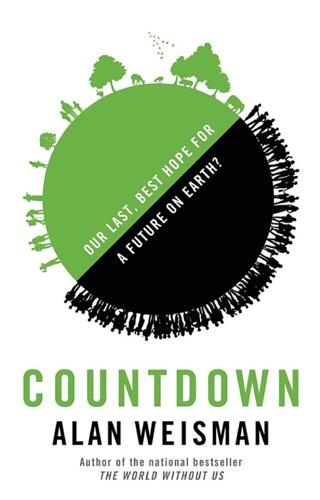
Countdown: Our Last, Best Hope for a Future on Earth?
by
Alan Weisman
Published 23 Sep 2013
With China building more and bigger cities than the Earth has ever seen, and filling them as soon as the concrete dries, the newly urban occupants no longer need sons for farmhands. Instead, they need factory salaries to raise the one allotted to them. Only the luckiest who, through some entrepreneurial stroke, propel themselves up the upwardly mobile spiral, even think of more children. Although bereft of siblings, Lin Xia also benefited from the one-child policy. Before, when sons had preference, just one-fourth of university students were female. Today, it’s nearly half. After studying mechanical engineering and communications, she works as a science writer.
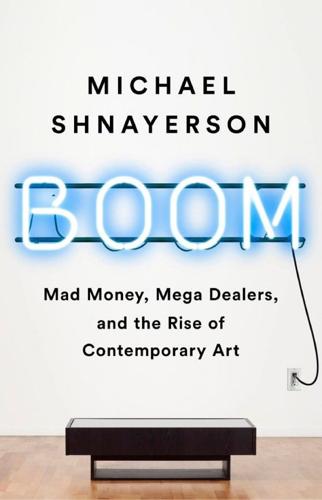
Boom: Mad Money, Mega Dealers, and the Rise of Contemporary Art
by
Michael Shnayerson
Published 20 May 2019
Never really made any big money, but diligent.” In another interview, he would say that his mother put her acting dreams aside to become an accountant. Desperate for larger quarters, Ara Gagosian went to night school for a stockbroker’s license and, in the prosperous 1950s, did well enough to move his family to upwardly mobile Van Nuys, located in the San Fernando Valley with a bustling Armenian community.30 In his Birmingham High School yearbook, Larry looks studious in the Latin club photo. At Ulysses S. Grant High School, from which he graduated, he competed on the swim team. He was at least six feet tall, rangy and powerful.

Troublemakers: Silicon Valley's Coming of Age
by
Leslie Berlin
Published 7 Nov 2017
He did in 1979, when Apple launched the Apple Education Foundation, setting aside $250,000 (and later far more money) to support and advance new methods and techniques of learning through the use of small computers. The Apple Education Fund would help teach a generation of students about computers—and ideally yield future sales for Apple. “Upwardly-mobile parents and students in the future are expected to buy . . . the brand that was used in school,” a confidential Apple document explained.28 Within two years of the Apple Education Foundation’s launch, more educational software had been developed for the Apple II than for any other personal computer.
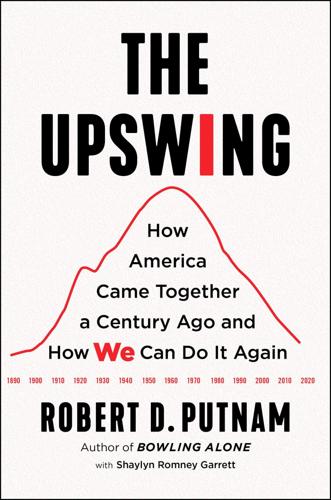
The Upswing: How America Came Together a Century Ago and How We Can Do It Again
by
Robert D. Putnam
Published 12 Oct 2020
One countervailing phenomenon, however, is that gains in professional sector employment for African Americans accelerated in the latter third of the century, thanks to antidiscrimination measures and growing educational mobility, improvements that were concentrated in the South. But the resultant emergence of an upwardly mobile black middle class coincided with the deepening poverty of a downwardly mobile black “underclass,” creating significant intra-racial divides between the richest and poorest African Americans. There is great political disagreement about the meaning of this divergence. Nevertheless, even taking into account the growth of the black middle class, black Americans have, on average, experienced flat or downward economic mobility during the last third of the century.46 Thus, America’s upswing toward greater and greater economic equality was, on average, disproportionately helpful for African Americans, and our downturn toward greater and greater economic inequality was, on average, disproportionately harmful to them.

The Library: A Fragile History
by
Arthur Der Weduwen
and
Andrew Pettegree
Published 14 Oct 2021
Picture Post, launched in the wake of Life in 1938, would play an equally influential role in shaping self-perceptions of Britain during the war. All of these journals, with the partial exception of Reader’s Digest, were aimed at the growing class of sophisticated urbanites and the new generation of upwardly mobile, often now college-educated householders. They were an advertiser’s dream and highly profitable. Meanwhile, established stables of the library reading room, such as the Literary Digest or Scribner’s, withered and died. The Literary Digest had 250,000 subscribers when it closed its doors, but virtually no paid advertising.

The Gods of New York: Egotists, Idealists, Opportunists, and the Birth of the Modern City: 1986-1990
by
Jonathan Mahler
Published 11 Aug 2025
The blue-collar jobs that had provided a foothold to earlier generations of European immigrants were gone, even as a new surge of immigrants—this one from Puerto Rico and the Southern United States—had arrived: Between 1950 and ’70, the city’s percentage of white residents fell from 90 percent to 77 percent. Once a magnet for the aspiring upwardly mobile—the place where you went to make it—New York had become a place that you got the hell out of if you could. The city’s population declined by more than one million people over the course of the 1970s. (Another million went on welfare.) Forty-five Fortune 500 companies—Pepsi Cola, Nabisco, Shell Oil, Avon, Western Union, and General Electric among them—abandoned the city during the same decade, leaving behind some twenty-eight million square feet of vacant office space in Manhattan.

Greece
by
Korina Miller
Published 1 Mar 2010
Despite attempts at introducing laws to stop the land-grab and protests by locals and environmental groups, corruption and the lack of an infrastructure to enforce the laws means little is done to abate the problem. The issue is complicated by population growth and increased urban sprawl, as upwardly mobile residents from inner Athens head to the outskirts. The developments often put a severe strain on the environment, including water supplies and endangered wildlife. A few spectacularly outrageous, purely-for-profit developments have been torn down in recent years, however in more cases, the illegal buildings have been legalised.
…
It occupies a knockout location – on a small port beneath the towering bulk of the Palamidi fortress – and is graced with attractive narrow streets, elegant Venetian houses, neoclassical mansions with flower-bedecked balconies, and interesting museums. Both overseas visitors and weekending Athenians flock to this lively, upwardly mobile place that is jammed with quayside cafes, posh boutiques and many comfortable hotels and guest houses (it does get somewhat overcrowded in high season and holidays). The town, 12km southeast of Argos on the Argolic Gulf, was the first capital of Greece after Independence (between 1833 and 1834) and has been a major port since the Bronze Age.

Aerotropolis
by
John D. Kasarda
and
Greg Lindsay
Published 2 Jan 2009
While the county’s outposts search for new recruits that match up well with its strengths—the Tel Aviv staff, for instance, are on the lookout for transplant candidates in software, security, and biotech—there’s a deep cosmopolitan yearning at play here as well. The fields where the Civil War was once fought have become diverse suburbs filled with upwardly mobile immigrants. More than a third of all the children born in Fairfax have at least one parent from overseas, and that percentage is rising; its one million inhabitants already include forty thousand foreign-born Indians and fifty thousand Koreans. Fairfax is also home to some 358 foreign-owned companies, and the key to finding life after the Beltway Bandits is to lure more of them here.
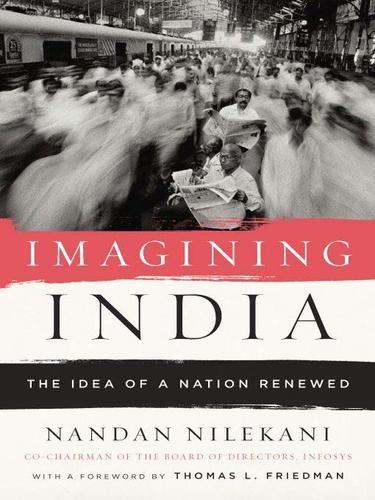
Imagining India
by
Nandan Nilekani
Published 25 Nov 2008
Over the next decade, job growth in India—one million new jobs every year—is going to be far lower than what we need, considering the 14 million people who will enter the workforce every year. The effects of this massive shortfall are fundamentally reshaping India’s path to growth and complicating our search for the ambitious, upwardly mobile everyman. Shaping a movement In trying to unravel our debates around jobs, we are forced to follow the shouting rather than the policy arguments. The labor unions dominate the debate on jobs in India, and while they represent a small fraction of our working population, they have defined the tone of our employment policies.
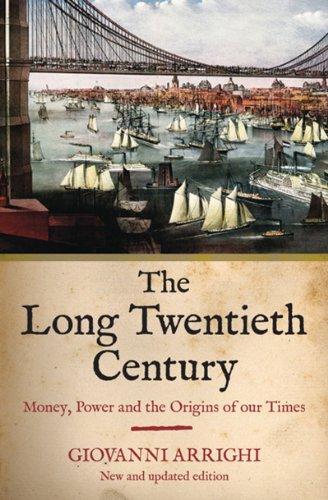
The Long Twentieth Century: Money, Power, and the Origins of Our Times
by
Giovanni Arrighi
Published 15 Mar 2010
For one thing, the trajectories show per capita data. But Japan, on average, had about twice the population of former West Germany (to which the German trend refers) or Italy, 3-4 times the population of Spain or South Korea, and about 10 times the population of Taiwan or of Singapore and Hong Kong combined. In comparison with other upwardly mobile states, therefore, the increase in the Japanese share of world value-added has been more massive than the steeper ascent of its relative per capita income already indicates. More importantly, this spectacular upgrading of a sizeable demographic mass in the stratified structure of the capitalist worldeconomy was accompanied by an equally spectacular advance in the world of high finance.

The Man Who Knew Infinity: A Life of the Genius Ramanujan
by
Robert Kanigel
Published 25 Apr 2016
While some ridiculed Indians who adopted European trousers, coat, collared tie, and boots or shoes, more common was the attitude reflected in a Hindu editorial in the late 1890s: “There can be no doubt that boots and trousers with the European coat constitute the most convenient dress for moving about quickly. The oriental dress is suited to a life of leisure, indolence, and slow locomotion, whereas the Western costume indicates an active and self-confident life.” By the 1910s, educated, upwardly mobile Indians had gotten the message. In a formal photo taken at an Indian Mathematical Society conference in 1919, Ramachandra Rao, for example, wore Western garb, as did more than half the others. Narayana Iyer, also in the photo, sitting on the ground in the first row, in full turban and flowing robes, did not.

The Big Score
by
Michael S. Malone
Published 20 Jul 2021
An original four-bedroom Eichler, circa 1965, sold for about $15,000. Fifteen years later, the same home, its slab heating and all-electric kitchen about to go on the fritz, went on the market at $200,000. Not only that, but during the intervening decade and a half that house may have gone through four upwardly mobile owners, each dutifully paying a commission to his or her real estate agent. This housing boom combined with the inflationary seventies to create a market bubble, with speculators racing around buying up every house in sight and young buyers betting on the permanence of inflation with balloon payments.

Power and Progress: Our Thousand-Year Struggle Over Technology and Prosperity
by
Daron Acemoglu
and
Simon Johnson
Published 15 May 2023
In other words, even if the gains for the children from a new policy were substantial—for example, because of improved health or schooling—this policy should not be adopted if the losses for the employer, primarily in terms of profits, were larger. To those with political voice, including the upwardly mobile middling sort of people, this seemed modern and efficient, and it justified their belief that the inevitable march of progress should not be halted, even if it created casualties along the way. Through the early decades of the nineteenth century, such was the path of progress, warts and all.

Deep Nutrition: Why Your Genes Need Traditional Food
by
Catherine Shanahan M. D.
Published 2 Jan 2017
This famously French attribute definitely has its good side, because without it the universally celebrated gift of authentic epicurean expression would never have come to exist. The early nineteenth-century middle classes wanted to prove that they had been elevated beyond “the mere physical needs of nourishment.”460 The result was a new brand of cooking that the upwardly mobile, who could now afford to hire chefs, would come to call grande cuisine. Grande cuisine was, and is, a style of cooking offered by high-class restaurants. Chefs would seek out the best regional ingredients in season and perfect the techniques used to prepare them, not so much to maximize nutrition as to maximize flavor.
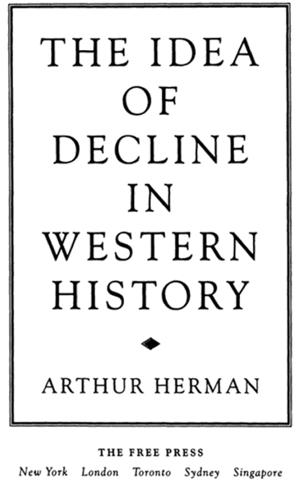
The Idea of Decline in Western History
by
Arthur Herman
Published 8 Jan 1997
In Matthew Arnolds view, the tobacconists, grocers, and aldermen of Liverpool, Manchester, and Birmingham lacked any cultural compass. They “believe that our greatness and welfare are proved by being very rich” and nothing more, Arnold charged. He gave them their immortal label: philistines.2 Arnold worried that an upwardly mobile middle class would pollute the wellsprings of culture. His definition of culture owed more to Enlightenment notions of politeness and learning than to German Kultur ; it constituted a realm of “sweetness and light,” an “endless growth in wisdom and beauty,” and “the idea of perfection as an inward condition of the mind and spirit.”
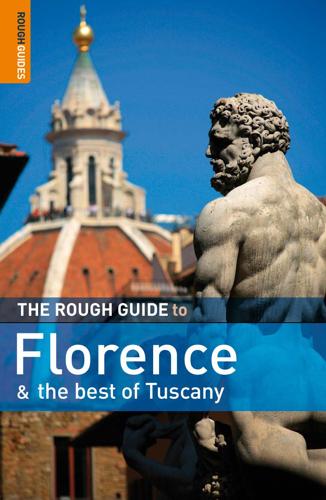
The Rough Guide to Florence & the Best of Tuscany
by
Tim Jepson
,
Jonathan Buckley
and
Rough Guides
Published 2 Mar 2009
In a separate room towards the end, after the obstetrics display and a few zoological waxworks, you’ll find the grisliest section of La Specola, a trio Western Oltrarno is one of the city’s earthier districts, though in recent years it’s been steadily colonized by bars, restaurants and shops that are turning it into a south-of-the-river equivalent of the upwardly mobile area around Sant’Ambrogio. An indication of the importance of the parish of Santo Spirito, the Oltrarno’s social and geographical heart, is that when Florence was divided into four administrative quartieri in the fourteenth century, the entire area south of the Arno was given its name.The busy piazza in front of Santo Spirito church, with its buzzing cafés and restaurants, encapsulates the genuinely Florentine character of this part of the Oltrarno, an area not hopelessly compromised by the encroachments of tourism, even though there’s a steady stream of visitors heading for the great fresco cycle in the church of Santa Maria del Carmine
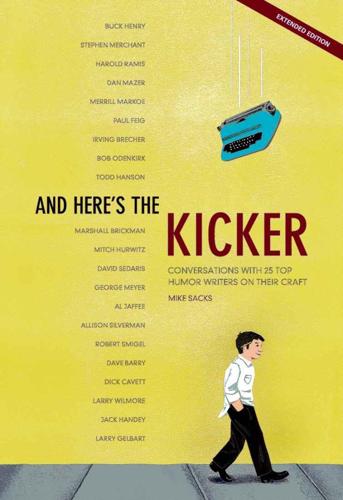
And Here's the Kicker: Conversations with 21 Top Humor Writers on Their Craft
by
Mike Sacks
Published 8 Jul 2009
I get dizzy trying to deconstruct it. I do know that when I can match a comic performer or writer with some sociological turf, then the comedy has, for me, a better chance of landing: Jonathan Winters and his characters from the Midwest. Or Woody Allen, from a Jewish-urban landscape. Or Chris Rock, from the upwardly mobile, urban-black perspective. And so on. I do know that those performers who seem to come from the Land of Media have a more difficult time making me laugh — the exception is David Letterman, much of whose humor is deconstructionist and exhibits, or tries to conceal, a hilarious rage against the various forms of media, like advertising, political doublespeak, and so on.

Debt: The First 5,000 Years
by
David Graeber
Published 1 Jan 2010
Out of such practices, the prostitution of female family members for the benefit of the head of the family could readily develop. Women might end up as prostitutes because their parents had to sell them into slavery or because their impoverished husbands might so use them. Or they might become self-employed as a last alternative to enslavement. With luck, they might in this profession be upwardly mobile through becoming concubines. By the middle of the second millennium B.C., prostitution was well established as a likely occupation for the daughters of the poor. As the sexual regulation of women of the propertied class became more firmly entrenched, the virginity of respectable daughters became a financial asset for the family.

Frommer's Los Angeles 2010
by
Matthew Richard Poole
Published 28 Sep 2009
Vincenti Ristorante NORTHERN ITALIAN Despite newer trends sweeping L.A., finely ex ecuted northern Italian cuisine is still going str ong, as evidenced b y this Westside standout. The menu, praised as “ authentically Italian,” offers cr eative far e— gnocchi in tomato-squab sauce, sage-enhanced pumpkin-squash ravioli—along with well-prepared classics such as r otisserie-cooked whole fish, game bir ds, and steak. Economy-minded diners with upwardly mobile palates can easily stick with hear ty appetizers 113 Finds L.A.’s Best Sushi & Stir-Fried Crickets 11930 San Vicente Blvd. (west of Montana Ave.), Brentwood. & 310/207-0127. www.vincentiristorante. com. Reser vations recommended. Main courses $18–$39. AE, MC, V. Mon–Sat 6–10pm; F ri noon–2pm.

A Beautiful Mind
by
Sylvia Nasar
Published 11 Jun 1998
In his autobiographical essay, Nash described “having to learn from the world’s knowledge rather than the knowledge of the immediate community” as “a challenge.”15 But, in fact, Bluefield offered a good deal of stimulation — admittedly, of a down-to-earth variety — for an inquiring mind; John Nash’s subsequent career as a multi-faceted mathematician, not to mention a certain pragmatism of character, would seem to owe something to his Bluefield years. More than anything, the newly married Nashes were strivers. Solid members of America’s new, upwardly mobile professional middle class, they formed a tight alliance and devoted themselves to achieving financial security and a respectable place for themselves in the town’s social pyramid.16 They became Episcopalians, like many of Bluefield’s more prosperous citizens, rather than continuing in the fundamentalist churches of their youth.

Cuba: An American History
by
Ada Ferrer
Published 6 Sep 2021
Some doubt the very existence of any conspiracy in December 1843, the one betrayed on the slave breeder’s plantation and which unleashed the worst repression. Some scholars argue that the planter overreacted and that the Spanish government simply stepped in to take advantage. Looking to secure its future in Cuba, it unleashed a brutal repression that devastated the class of free people of color—upwardly mobile and sympathetic to both British abolitionism and independence from Spain. Among the enslaved, meanwhile, the spectacle of violent repression offered, in the words of the Spanish governor, a reason to “desist from so alarming an idea.” The violence and upheaval also served as deterrent to white creoles contemplating an independence struggle on Cuban ground.
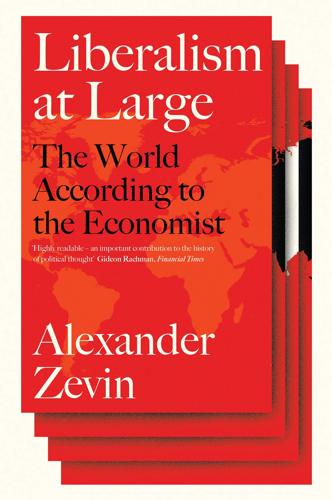
Liberalism at Large: The World According to the Economist
by
Alex Zevin
Published 12 Nov 2019
‘Religion is being driven by the same two things that have driven the success of market capitalism: competition and choice.’ The cosmocrats had found the ultimate consumer durable: God. The Shanghai Bible study group had ‘biotechnologists, a prominent academic, a Chinese-American doctor, successful entrepreneurs, two ballet dancers’ and ‘BMWs parked in front’. ‘In much of the world it is exactly the sort of upwardly mobile, educated middle classes that Marx and Weber presumed would shed such superstitions who are driving the explosion of faith.’ The millenarian element in the Economist’s free trade manifesto of 1843 had returned as a form of religious sociability. More than faith, this was a sign of US dominance ‘so omnipresent that everyone has, as it were, a virtual America buried inside their brains’.93 2008: Saving the System On becoming editor in 2006, Micklethwait said his goal was to make the Economist ‘the user’s handbook for globalization’, tackling ‘the big issues’.94 ‘Whenever there is dissent within the office, argument always comes round to the question, “What would be the liberal approach?”’
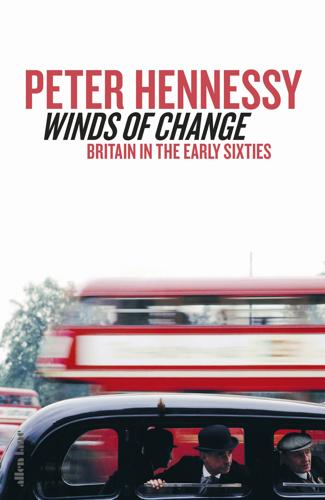
Winds of Change
by
Peter Hennessy
Published 27 Aug 2019
Harold had achieved it’.18 Re-reading those speeches now, one can detect three target audiences: the electorate as a whole (their government-in-waiting character); the Labour Party itself and its ever-lurking centrifugal tendencies; and the rising meritocracy, humanities trained and scientifically literate alike, of whom, with his feel for history, his economics and his statistical agility, he was the incarnation. As Peter Clarke caught it, Wilson ‘was the first major leader to represent the new ruling class – an upwardly mobile Oxbridge meritocracy recruited through provincial grammar schools – which was to take over during the next twenty-five years producing Heath as well as Healey, Jenkins as well as Thatcher’.19 Read together, as they should be, the three early 1964 speeches, together with Scarborough, represent the most impressive political oratory of the age, the rhetorical fulcrum of Sixties politics.

I Want My MTV: The Uncensored Story of the Music Video Revolution
by
Craig Marks
and
Rob Tannenbaum
Published 19 Sep 2011
JOHN LACK: When I left, Bob did an even better job than I did, but he didn’t invent the thing. He was great at implementing the vision. But it wasn’t his vision. After I left, he took the vision and went left and right with it, God bless. That’s what all good executives do. But he was married to a strange, upwardly-mobile lady by the name of Sandy. A famous, controversial character. She was obsessed with building his image as a media giant. They lived above their means in an apartment they couldn’t afford. She was a social climber. They’re long divorced now. CHARLIE WARNER: A lot of people expected, when somebody did a story about MTV, for Bob to say, “Well, it wasn’t my idea, it was John Lack’s idea and he gets all the credit for hiring me.”

Frommer's Oregon
by
Karl Samson
Published 26 Apr 2010
. & 503/220-1865. www.mccormickand McCormick and Schmick’s Harborside Pilsner Room schmicks.com. 820.com. One of the Pearl District’s most popular drinking spots, this big bar/Nuevo Latino restaurant has a tropical feel despite the warehouse-district locale. After work the bar is always packed with the stylish and the upwardly mobile taking advantage of great happy-hour deals. Don’t miss the tropical-fruit margaritas! 555 NW 12th Ave. & 503/228- ¡Oba! 5 PORTLAND AFTER DARK Mint/820 Mixologist Lucy Brennan, owner of this swanky place, has single-handedly turned Portland into a town full of cocktail connoisseurs. Using fresh fruit juices, purees, and unusual ingredients, Brennan has reinvented the cocktail.

Ayn Rand and the World She Made
by
Anne C. Heller
Published 27 Oct 2009
He seems to have become a pharmacist, at least in part, because this was one of the professions that permitted Jews to enter the city relatively freely. But the laws were fickle and crafted to give the czar maximum flexibility, and arrest and/or exile were a constant danger. It was in this volatile and often frightening atmosphere that Rand grew up. She was the eldest of three daughters of this upwardly mobile pharmacist and his religiously observant, socially ambitious wife; Anna would later appear in her daughter’s novels as a series of superficial or spiteful characters. When Rand was two and a half, her sister Natasha was born; when she was five, her youngest and favorite sister, Eleanora, called Nora, entered the family.

China: A History
by
John Keay
Published 5 Oct 2009
The examinations as rejigged under the Song would become the defining institution of elite society for the next seven centuries; yet at the time they may have had little impact on the social base from which office-holders were recruited and certainly did not open up the administration to all-comers. Talent was recognised, higher standards required, but neither was a guarantee of advancement. The upwardly mobile still found the going tough and the professional gradient vertiginous. Not until the Ming would the examinations system spawn a genuine meritocracy. More statesmen hailing from the Yangzi and the south – Ouyang Xiu, Fan Zhongyang and Wang Anshi among them – secured high office, but this may simply reflect the changing demography.

Roller-Coaster: Europe, 1950-2017
by
Ian Kershaw
Published 29 Aug 2018
Millions of individuals, including thousands of employees of nationalized companies, became shareholders in privatized companies as state assets were sold off. Inevitably, of course, most shares were swallowed up by big investors, many of them in time non-British, who actually controlled the companies. Traditional patrician conservatives sometimes lamented the trend that was so welcomed especially by the young, upwardly mobile middle classes – the ‘Yuppies’ as they were contemptuously dubbed by the left. The former Prime Minister Harold Macmillan, by now well into old age, famously criticized his successor, Mrs Thatcher, remarking that she was ‘selling off the family silver’. It was to no avail. Two-thirds of the once state-owned British industries were in private hands by 1992, including some of the most crucial parts of industry such as gas or telecommunications.

The Rough Guide to Poland
by
Rough Guides
Published 18 Sep 2018
The period following the end of World War I was one of intense population growth in Jewish Kraków, the community rising from 45,000 people in 1921 to more than 64,000 on the eve of the Nazi invasion. Most, but by no means all, of Kraków’s Jews lived in Kazimierz. The mostly poor Hassidim dominated the synagogues, prayer houses and Talmudic schools of the quarter, while the more upwardly mobile sections of the community moved to other districts, and increasingly adopted the manners of their Gentile neighbours. This was a period of rich cultural activity, notably in the Jewish Theatre, established in 1926 in southern Kazimierz, the biggest star being the legendary Ida Kamińska, still remembered today as one of the great prewar Polish actresses.

The Rough Guide to Australia (Travel Guide eBook)
by
Rough Guides
Published 14 Oct 2023
Today, the former industrial suburb, which had a population of only nine hundred in 1988, has been transformed into a residential suburb of some twenty thousand, with $2 billion worth of investment, and slick modern blocks and warehouse renovations to show for it. The area has certainly become glitzier, with the gleaming Australian National Maritime Museum, Sydney’s casino and the Channel Ten TV company based here. Harris Street has filled up with shops and cafés, and the area’s old pubs have been given a new lease of life, attracting the young and upwardly mobile. Australian National Maritime Museum 2 Murray St • Daily 9.30am–5pm; Jan till 6pm • Free; special exhibitions vary • http://sea.museum • Pyrmont Bay light rail The imposing Australian National Maritime Museum celebrates Australia’s intimate relationship with the sea, from the earliest days of exploration to immigration and sport.
…
. $$ The inner east To the east of the city centre, the adjacent districts of Kings Cross and Potts Point comprise one of the city’s major entertainment districts and a popular spot for tourists (particularly backpackers). To the north you can descend a series of steps to Woolloomooloo with its busy naval dockyards and stylish Finger Wharf. South of Kings Cross, Darlinghurst and Paddington were once rather scruffy, working-class suburbs, but were gradually taken over and revamped by the young, arty and upwardly mobile. Oxford Street runs from the city southeast through Taylor Square, the heart of gay Sydney, and on through the designer shopping and art gallery areas of Darlinghurst and Paddington to old-money Woollahra and the open grasslands of Centennial Parklands. Oxford Street marks the northern boundary of gentrified Surry Hills.

Lonely Planet Scotland
by
Lonely Planet
Café GandolfiCAFE, BISTRO££ ( MAP GOOGLE MAP ; %0141-552 6813; www.cafegandolfi.com; 64 Albion St; mains £10-16; h8am-11.30pm Mon-Sat, 9am-11.30pm Sun; W) In Merchant City, this cafe was once part of the old cheese market. It's been pulling in the punters for years and attracts an interesting mix of die-hard Gandolfers, the upwardly mobile and tourists. It covers all the bases with excellent breakfasts and coffee, an enticing upstairs bar, and top-notch bistro food, including Scottish and Continental options, in an atmospheric medieval-like setting. There's an expansion, specialising in fish, a couple of doors up, with a takeaway outlet.

Lonely Planet Scotland
by
Lonely Planet
Café GandolfiCAFE, BISTRO££ (map Google map; %0141-552 6813; www.cafegandolfi.com; 64 Albion St; mains £10-18; h8am-11pm Mon-Sat, from 9am Sun; W) In Merchant City, this cafe was once part of the old cheese market. It’s been pulling in the punters for years and attracts an interesting mix of die-hard Gandolfers, the upwardly mobile and tourists. It covers all the bases with excellent breakfasts and coffee, an enticing upstairs bar, and top-notch bistro food, including Scottish and continental options, in an atmospheric medieval-like setting. Loon FungCANTONESE££ (map Google map; %0141-332 1240; www.loonfungglasgow.com; 417 Sauchiehall St; mains £11-15; hnoon-11pm; Wv) This elegant Cantonese oasis is one of Scotland’s most authentic Chinese restaurants; indeed, it’s quite a surprise after a traditional dining experience here to emerge to boisterous Sauchiehall St rather than Hong Kong.
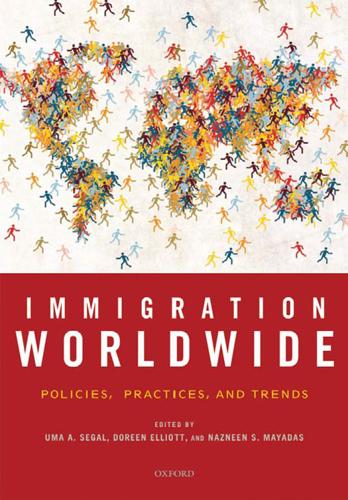
Immigration worldwide: policies, practices, and trends
by
Uma Anand Segal
,
Doreen Elliott
and
Nazneen S. Mayadas
Published 19 Jan 2010
The threat of terrorism has renewed interest in the integration of the UK’s Muslim population; more funding and programming is available for this cause, generally under the auspices of ‘‘preventing violent extremism.’’ Evidence on the outcomes of immigrants is mixed. First generation immigrants have downward social mobility, whereas most groups in the second generation are upwardly mobile (with the important exception of Pakistanis). The contribution of immigrants to the country is also contested, particularly in the economic sphere. Immigration has a small, positive impact on the macroeconomy, with some negative distributional effects. There is far less consideration of its impacts on public services or on the United Kingdom long-term dynamics (both economically and socially) but it is widely recognized that immigrants underpin certain economic sectors.

Lonely Planet Chile & Easter Island (Travel Guide)
by
Lonely Planet
,
Carolyn McCarthy
and
Kevin Raub
Published 19 Oct 2015
Lago Panguipulli At the northwest end of Lago Panguipulli, the town of Panguipulli is a quiet spot with awkward beach access, a lively main street and a totally odd Swiss-style church founded by Capuchin monks. You won’t starve here – there are also a surprising number of restaurants. Most travelers come here just to make transportation connections, as the town is severely overpriced due to a combination of high demand and low supply. As a result, it has become a playground for the upwardly mobile – without the quality. The tourist office ( 063-310-435; 9am-9pm), across from Plaza Arturo Prat, has lots of listings for the area and helpful staff. The regular assortment of traveler services can be found up and down the main road, Martínez de Rozsa, leading toward the lake. Little more than two streets at the east end of Lago Panguipulli, the cute hamlet Choshuenco has a sweeping beach with views that are a study in serenity, with crystal waters and rolling hills of green.

Scotland Travel Guide
by
Lonely Planet
CITY CENTRE Café Gandolfi CAFE, BISTRO ££ ( 0141-552 6813; 64 Albion St; mains £8-14; 9am-11.30pm Mon-Sat, noon-11.30pm Sun) In the fashionable Merchant City, this cafe was once part of the old cheese market. It’s been pulling in the punters for years and packs an interesting clientele: die-hard Gandolfers, the upwardly mobile and tourists. It’s an excellent, friendly bistro and upmarket coffee shop – very much the place to be seen. Book a Tim Stead–designed, medieval-looking table in advance for well-prepared Scottish and Continental food. There’s an expansion, specialising in fish, next door. Loon Fung CHINESE ££ ( 0141-332 1240; www.loonfungglasgow.co.uk; 417 Sauchiehall St; mains £10-13; noon-4am) It’s rare to get such an authentically Chinese experience in Scotland and it’s quite a surprise after a spot of late-night dining to emerge to Sauchiehall rather than Hong Kong.
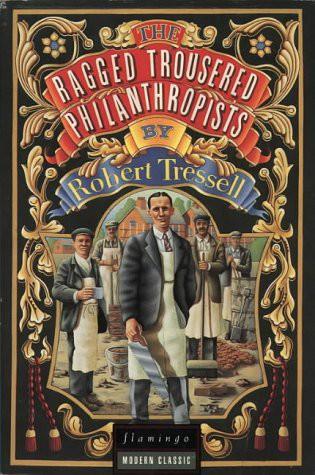
The Ragged Trousered Philanthropists
by
Robert Tressell
Published 31 Dec 1913
451 which ascendeth up for ever and ever: ‘and he shall be tormented with fire and brimstone in the presence of the holy angels, and in the presence of the Lamb: And the smoke of their torment ascendeth up for ever and ever: and they have no rest day nor night’ (Revelation 14: 10–11). bowler hats of the latest type: dating from about 1850, the bowler hat developed into a badge of respectability for the upwardly mobile, ‘even- tually inspiring Chaplin to use it in his parody of the earnest “little Explanatory Notes man”’ . See Fred Miller Robinson, The Man in the Bowler Hat: His History and Iconography (1993). oxalic acid: poisonous acid found in many plants, including rhubarb: used as a bleach and cleanser. 455 up to the knocker: finely or showily dressed.
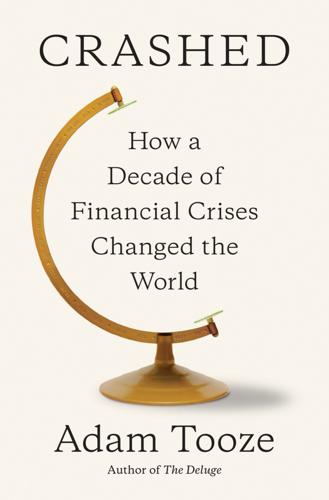
Crashed: How a Decade of Financial Crises Changed the World
by
Adam Tooze
Published 31 Jul 2018
But a detailed accounting of the electoral statistics did show a significant shift to the Republicans among white male voters with less than a college education. It was less immediate misery than anxiety about the future that drove the Trump vote, fears that in the white population were associated with hostility to Latinos and black Americans, and among men with hostility to upwardly mobile women.41 Trump improved on Romney’s miserable tally in the Rust Belt states. Dog-whistle racism and nationalism solidified this constituency. Even an issue such as trade was saturated with racial markers.42 In one advertising spot after another, the face of the American worker displaced by foreign imports was that of a burly white man in a hard hat.

A History of Modern Britain
by
Andrew Marr
Published 2 Jul 2009
Macmillan and Eden both suffered from a pseudo-aristocratic and sentimental attitude to class. With their First World War service and their inter-war worries about the effect of unemployment, they were inclined to admire the working classes from a decent distance and to disdain the ‘common’ speech and attitudes of upwardly mobile entrepreneurs such as Sir Bernard Docker. They lived privileged and upper-crust lives themselves, set in landed homes and surrounded by literature and art. It was a way of life to which the self-made would aspire too: Michael Heseltine would begin by mixing margarine and butter as he built his low-rent property business, and end with a grand country home and an arboretum.

Coastal California Travel Guide
by
Lonely Planet
Griffith Park & Around 1Top Sights 1Griffith ObservatoryE3 1Sights 2Griffith ParkF2 3Los Angeles Zoo & Botanical GardensE1 4Universal Studios HollywoodB2 5Eating 5DaichanA2 3Entertainment 6Greek TheatreE3 7Hollywood BowlC3 Silver Lake & Echo Park Pimped with stencil art, inked skin and skinny jeans, Silver Lake and Echo Park are the epicenter of LA hipsterdom. Silver Lake is the more upwardly mobile of the pair, home to revitalized modernist homes, sharing-plate menus and obscure fashion labels on boutique racks. To the southeast lies grittier Echo Park, one of LA's oldest neighborhoods. Despite its own ongoing gentrification, it continues to offer a contrasting jumble of rickety homes, Mexican panderias (bakeries), indie rock bars, vintage stores, design-literate coffee shops and the serenity of its namesake lake, featured in Polanski’s Chinatown.

The 9/11 Wars
by
Jason Burke
Published 1 Sep 2011
Those who had once had a bicycle now had a motorbike; those who had had a motorbike now had their families loaded into an 800cc Mehran. Many of those once driving the tinny little Mehrans now had an imported saloon, and the number of SUVs had increased exponentially. According to pollster and economic analyst Ijaz Gilani, Karachi was ‘an upwardly mobile place’.25 It was not just Karachi that had experienced such change during the years of Musharraf’s rule. The combination of new neoliberal economic policies, the lifting of American sanctions, a massive flow of remittances from Pakistanis suddenly feeling precarious in post 9/11 USA or Europe, loan write-offs granted once Pakistani support for the ‘War on Terror’ was assured, the generous rescheduling of further debts as well as the effect of new technologies such as mobile phones had unleashed a comprehensive boom across much of the country.26 Per capita revenues rose to over $1,000 for the first time.27 Foreign Direct Investment in Pakistan had gone from $322 million in 2002 to $3.5 billion in 2006, and GDP had doubled between 1999 and 2007, with growth rates hitting 9 per cent.

Ghost Wars: The Secret History of the CIA, Afghanistan, and Bin Laden, from the Soviet Invasion to September 10, 2011
by
Steve Coll
Published 23 Feb 2004
His great-uncle was a leader at a suburban mosque attended by Pakistani guest workers. After attending primary and secondary school in Kuwait, Yousef was sent to a technical institute in Swansea, Wales, between 1986 and 1989, to obtain a degree in electrical engineering and computer-aided electronics. It was the sort of practical English education that many upwardly mobile Pakistani families living in the Gulf wanted for their sons, so that the rising generation could expand the family’s income in the big Arab oil cities. What Yousef made of coeducational campus life in Wales isn’t known. His uncle, Khalid Sheikh Mohammed, was active in the Muslim Brotherhood and worked with the Saudi-backed Afghan leader Sayyaf in Pakistan.When he returned to the Gulf from Britain, Yousef found a job as a communications engineer in the National Computer Center of Kuwait’s Ministry of Planning, a government sinecure that could ensure a comfortable life.15 A year later his family’s upward trajectory came to an abrupt halt.

The Rise and Fall of American Growth: The U.S. Standard of Living Since the Civil War (The Princeton Economic History of the Western World)
by
Robert J. Gordon
Published 12 Jan 2016
Workers no longer found themselves stuck in the toil of backbreaking work on the farm, in the mine, or in the factory that often pushed them to their physical limits. Already by 1940, the average workweek had leveled off at around forty hours, down from sixty hours per week in 1900. The period between 1940 and 1970 witnessed the white-collar transition toward stable, upwardly mobile careers. The improvements in workplace safety, in part brought by the shift away from blue-collar jobs, assisted toward this end by lengthening the span of the working life and the long-term earning power of most workers. The period between 1940 and 1970 also witnessed the most rapid improvement in working conditions of housewives at home, for the transition from household drudgery, manual laundry work, and the hauling of fuel and water was largely complete as the major household appliances became nearly universal by 1970.
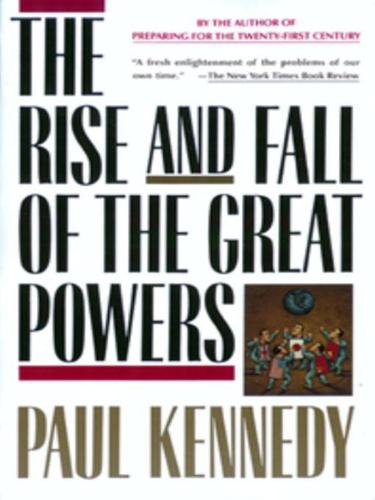
The Rise and Fall of the Great Powers: Economic Change and Military Conflict From 1500 to 2000
by
Paul Kennedy
Published 15 Jan 1989
Since the result of their conflict affected the entire European balance, it is worth examining their experiences at some length. The older notion that eighteenth-century Great Britain exhibited adamantine and inexorably growing commercial and industrial strength, unshakable fiscal credit, and a flexible, upwardly mobile social structure—as compared with an ancien régime France founded upon the precarious sands of military hubris, economic backwardness, and a rigid class system—seems no longer tenable. In some ways, the French taxation system was less regressive than the British. In some ways, too, France’s economy in the eighteenth century was showing signs of movement toward “takeoff” into an industrial revolution, even though it had only limited stocks of such a critical item as coal.

Before the Storm: Barry Goldwater and the Unmaking of the American Consensus
by
Rick Perlstein
Published 17 Mar 2009
Miles, The Odyssey of the American Right (New York: Oxford University Press, 1980), 268-69. 46 On “post office parties”: Kessell, Goldwater Coalition, 39; and author interviews with Richard Viguerie and Jack Craddock. For Mississippi GOP chair, see Cleveland Call and Post, July 18, 1964. For the “all rank” joke, see James T. Patterson, Grand Expectations: The United States, 1945-1974 (New York: Oxford University Press, 1996), 538. 46 For an illustration of the party’s new upwardly mobile constituency, see ads taken by the Southern Company, for example in WSJ, July 22, 1959, “In Dynamic Dixie ... Pleasant Living Is in the Pattern of Progress!” For “Cotton Ed” Smith, see David M. Kennedy, Freedom from Fear: The American People in Depression and War, 1929-1945 (New York: Oxford University Press, 1999), 341.

USA Travel Guide
by
Lonely, Planet
UPPER WEST SIDE Shorthand for liberal, progressive and intellectual New York – think Woody Allen movies (although he lives on the Upper East Side) and Seinfeld – this neighborhood comprising the west side of Manhattan from Central Park to the Hudson River, and from Columbus Circle to 110th St, is no longer as colorful as it once was. Upper Broadway has been taken over by banks, pharmacies and national retail chain stores and many of the mom-and-pop shops and bookstores are long gone. You’ll still find massive, ornate apartments and a diverse mix of stable, upwardly mobile folks (with many actors and classical musicians sprinkled throughout), and some lovely green spaces – Riverside Park stretches for 4 miles between W 72nd St and W 158th St along the Hudson River, and is a great place for strolling, running, cycling or simply gazing at the sun as it sets over the Hudson River.
…
Perhaps there’s no clearer symbol for this transformation than the crowds that line up every morning to glimpse the spectacular confections made by Bartolo Jr ‘Buddy’ Valastro of reality TV show Cake Boss at Carlo’s City Hall Bake Shop ( 201-659-3671; www.carlosbakery.com; 95 Washington St; 7am-7:30pm Mon-Wed & Sun, to 9pm Thu-Sat) . High-rise buildings housing condominiums and the offices of financial firms seeking lower rents have transformed Jersey City for better or worse from a primarily blue-collar and immigrant neighborhood into a ‘restored’ area for the upwardly mobile. Its biggest draw is the 1200-acre Liberty State Park ( 201-915-3440; www.libertystatepark.org; 6am-10pm) , which hosts outdoor concerts with the Manhattan skyline as a backdrop and has a great bike trail, and also operates ferries ( 877-523-9849; www.statuecruises.com) to Ellis Island and the Statue of Liberty.

Hawaii
by
Jeff Campbell
Published 4 Nov 2009
Within Hawaii, the biggest difference is between Honolulu and the Neighbor Islands. A huge metropolis, Honolulu is cosmopolitan, technologically savvy and fashion conscious. It has the major sports stadiums, the main university and an actual nightlife. Affluent city residents are more likely to share the upwardly mobile, professional aspirations of their mainland counterparts; they are more likely to wear business suits and travel. Though, travel often means Las Vegas (aka ‘the ninth Hawaiian island’), for gambling and talking story with its large community of Hawaii expats. * * * In Folks You Meet in Longs (2005), Honolulu Advertiser columnist Lee Cataluna captures the flavor, and above all the voice, of working-class Hawaii in these painfully funny, exquisitely real first-person vignettes
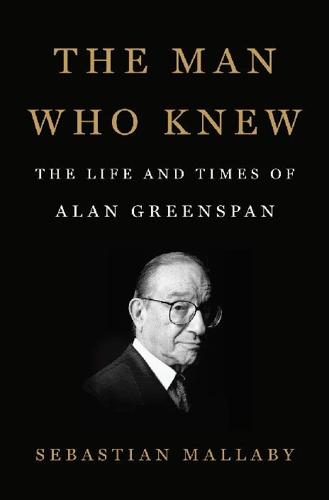
The Man Who Knew: The Life and Times of Alan Greenspan
by
Sebastian Mallaby
Published 10 Oct 2016
Cruising along the brand-new interstate highways that spooled across the countryside like ribbons, with the wind in his dark hair and a terrific sense of well-being bubbling up inside him, the young consultant cranked the radio. He embodied the American Century and the Oil Century.1 He was handsome, powerful, and upwardly mobile. Soon after purchasing that Buick, Greenspan took the small team at his office to visit the Fairless steel works, an industrial wonder he had studied as he pieced together his map of the steel sector for his consulting clients. The young boss and three women—assistants who kept track of the data that Townsend-Greenspan analyzed—rolled out of Manhattan, through industrial stretches of New Jersey, eventually reaching Fairless on the eastern edge of Pennsylvania, one mile below Trenton.

Surfaces and Essences
by
Douglas Hofstadter
and
Emmanuel Sander
Published 10 Sep 2012
And thus acronyms flourish. Furthermore, acronyms become more and more opaque over time, like metaphors. Just as we speak of “dead metaphors”, so we could speak of “dead acronyms”. For instance, probably most people today do not realize that the following words first saw the light of day as acronyms: yuppie (“young upwardly mobile professional”) laser (“light amplification by stimulated emission of radiation”) radar (“radio detection and ranging”) modem (“modulator–demodulator”) snafu (“situation normal all fucked up”) scuba (“self-contained underwater breathing apparatus”). And indeed, who would want to think of, or say, “radio detection and ranging” instead of just “radar”, or “light amplification by stimulated emission of radiation” instead of just “laser”?

The Transformation Of Ireland 1900-2000
by
Diarmaid Ferriter
Published 15 Jul 2009
Finola Kennedy has suggested the introduction of legal abortion in Britain in 1967 led to a reduction in Church condemnation of extra-marital births, for fear that it could encourage women to abort in England. Although it is impossible to put a figure on it, June Levine also made it clear that some wealthy Irish women availed themselves of the service in Britain; a young upwardly mobile woman ‘took leave of her husband for a shopping spree in London and returned “honeymoon fresh”. That was the phrase. Suddenly, in my predicament, everyone seemed to know about abortion.’91 What may have begun as a trickle inevitably became a flood, and remained a problem Irish society exported for the rest of the century.

Ashes to Ashes: America's Hundred-Year Cigarette War, the Public Health, and the Unabashed Triumph of Philip Morris
by
Richard Kluger
Published 1 Jan 1996
The company’s prime need, though, was for marketing innovation instead of dependency on RJR’s sales force. Horrigan, however, was more gifted as a manager than as a merchandiser; he killed off a number of also-ran brands, and when Wilson showed little enthusiasm for lavishing ad dollars on More, the long, brown-paper brand being aimed at upwardly mobile black women, or the new mint-flavored Bright, Horrigan directed the resources toward firing up the core brands. But there was little magic or imagery to the presentation, no “Marlboro Country” fantasyland—“armpit advertising” was what Stanley Katz privately called the new campaigns with a blue-collar pitch aimed right between the eyes.

The Coming Plague: Newly Emerging Diseases in a World Out of Balance
by
Laurie Garrett
Published 31 Oct 1994
Designed to be inhaled rather than injected, cocaine appealed to a different social class. It seemed “clean,” its high produced a surge of energy rather than opiated enervation. And it was very expensive. By 1980 cocaine had supplanted vintage wine in some cities as the drug of choice for the upwardly mobile. Its popularity was so great that icons such as pop stars, society matrons, literary celebrities, and professional athletes were fairly candid about their using it. Stories of pop heroes running quickly through $20,000 to $100,000 to support a cocaine addiction filled the gossip columns. Few microbes were able to exploit the powder cocaine ecology effectively.

The Rough Guide to England
by
Rough Guides
Published 29 Mar 2018
< Back to London Hampton Court Hampton Court Rd, KT8 9AU • Palace Daily: April–Oct 10am–6pm; Nov–March closes 4.30pm; last entry 1hr before closing • £20.90 (tickets £1–3 cheaper online) • Magic Garden April–Oct daily 10am–6pm, last admission 5.15pm • £7.70, kids aged 3–15 £5.50 (includes Maze) • 020 3166 6000, hrp.org.uk • Hampton Court train station from Waterloo Hampton Court Palace, a sprawling red-brick ensemble on the banks of the Thames thirteen miles southwest of London, is the finest of England’s royal abodes. Built in 1516 by the upwardly mobile Cardinal Wolsey, Henry VIII’s Lord Chancellor, it was purloined by Henry himself after Wolsey fell from favour. In the second half of the seventeenth century, Charles II laid out the gardens, inspired by what he had seen at Versailles, while William and Mary had large sections of the palace remodelled by Wren a few years later.
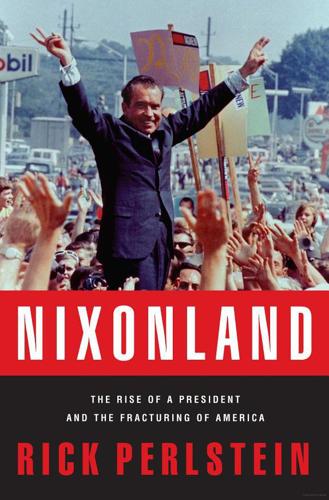
Nixonland: The Rise of a President and the Fracturing of America
by
Rick Perlstein
Published 1 Jan 2008
Tom Turnipseed had been busy organizing to get George Wallace on the ballot of all fifty states as a third-party candidate when his boss casually drawled, “I’m tired of those kooks in the third-party business. It’s crazy. I’m thinking about going back into the Democratic Party.” Wallace traveled to Tallahassee in January to announce he was entering primaries. Soon, he was ahead in the Florida polls, where he had adjusted his rhetoric for upwardly mobile professionals who’d moved from city to suburb for a better and safer life for their children; he wasn’t just for rednecks anymore. A beautiful new, young wife by his side, he explained that blacks had the same right to pull themselves up by their own bootstraps as anyone else, buy a nice home, a car or two in the garage, send their kids to nice suburban schools.

Frommer's California 2007
by
Harry Basch
,
Mark Hiss
,
Erika Lenkert
and
Matthew Richard Poole
Published 6 Dec 2006
The main street is Chestnut between Franklin and Lyon, which is lined with shops and cafes. Cow Hollow West of Van Ness Avenue, between Russian Hill and the Presidio, this flat area supported 30 dairy farms in 1861. Today, Cow Hollow is largely residential and occupied by the city’s young and upwardly mobile. Its two primary commercial thoroughfares are Lombard Street, known for its many relatively inexpensive motels, and Union Street—a flourishing shopping sector filled with restaurants, pubs, cafes, and shops. Pacific Heights The mansions and homes of Pacific Heights are peopled by ultraelites, such as the Gettys and Danielle Steel, and those who were lucky enough to buy in before the real estate boom.
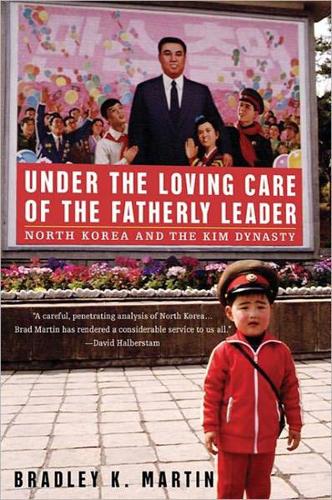
Under the Loving Care of the Fatherly Leader: North Korea and the Kim Dynasty
by
Bradley K. Martin
Published 14 Oct 2004
That was when I was speaking about the pros and cons of South Korea in the eyes of Americans. I told him that, despite what was then a lack of democracy as we understood democracy, South Korea offered its citizens a certain kind of freedom that Americans could identify with: freedom to make nonpolitical choices, to be upwardly mobile economically and socially. Pak snapped: “That’s not true!” And he said it with a fervid conviction that contrasted with the man-of-the-world demeanor he otherwise displayed that day. In the remainder of the conversation, while he could be ironic and a bit playful about American words and deeds, he never acknowledged anything positive about South Korea.

Germany Travel Guide
by
Lonely Planet
Live Music Lido LIVE MUSIC Offline map Google map (6956 6840; www.lido-berlin.de; Cuvrystrasse 7; Schlesisches Tor) A 1950s cinema has been recycled into a rock-indie-electro-pop mecca with mosh-pit electricity and a crowd that cares more about the music than about looking good. Global DJs and talented upwardly mobile live noise-makers pull in the punters. Legendary Balkan-beats parties, too. Astra Kulturhaus LIVE MUSIC Offline map Google map (2005 6767; www.astra-berlin.de; Revaler Strasse 99; Warschauer Strasse, Warschauer Strasse) With space for 1500, Astra is one of the bigger indie venues in town, yet often fills up easily, and not just for such headliners as Melissa Etheridge, Kasabian or Paul van Dyk’s Vandit Records label parties.

England
by
David Else
Published 14 Oct 2010
Festivals & Events HENLEY ROYAL REGATTA The first ever Oxford and Cambridge boat race was held in Henley in 1839, and ever since the cream of English society has descended on this small town each year for a celebration of boating, back slapping and the beau monde. The five-day Henley Royal Regatta (01491-572153; www.hrr.co.uk) has grown into a major fixture in the social calendar of the upwardly mobile, and is a massive corporate entertainment opportunity. These days, hanging out on the lawn swilling champagne and looking rich and beautiful is the main event, and although rowers of the highest calibre compete, most spectators appear to take little interest in what’s happening on the water. The regatta is held in the first week of July, but you’ll need contacts in the rowing or corporate worlds to get tickets in the stewards’ enclosure.
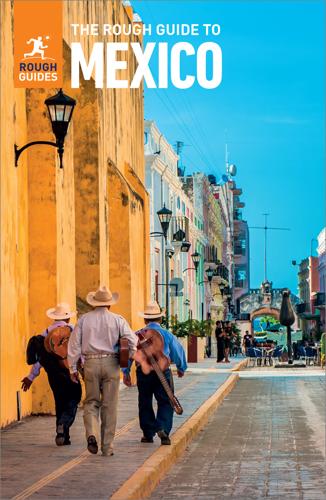
The Rough Guide to Mexico
by
Rough Guides
Published 15 Jan 2022
With a population of only around sixteen thousand, there’s a village feel to it, especially around the plaza. Here you’ll find eighteenth-century wooden-balconied houses, encircling portales and two impressive churches – the larger with an unusually plain brick interior. On the outskirts, clusters of cabañas dot the woods luring upwardly mobile Tapatíos, and a fair bit of desirable real estate has sprung up in recent years. Tapalpa is on the Guadalajara weekender circuit, so try to visit midweek when its old-world charm is little affected (although hotels remain pricey). The town centres around a stunningly picturesque main square, where several old buildings have been refurbished as restaurants and hotels.
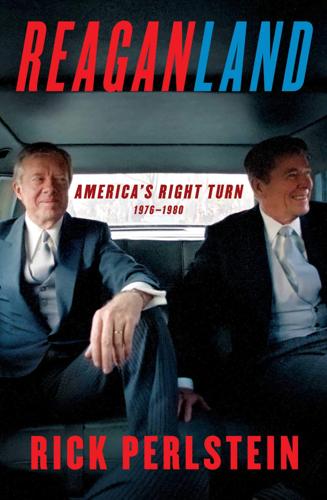
Reaganland: America's Right Turn 1976-1980
by
Rick Perlstein
Published 17 Aug 2020
TV was a “cool” medium, as the theorist Marshall McLuhan famously put it. Compared to other Southern fundamentalists, Falwell was a cool preacher—none of the “subliminal sex, fire and excitement or rock-tinged music of a Jimmy Swaggart,” in the words of another profile. Packaging, in a pleasingly modern form, the sort of traditional values that millions of upwardly mobile but anxious country-bred Americans left behind when they sought their fortune in the wider world—whether to Lynchburg, Virginia, or Orange County, California, or Concord, New Hampshire—was Falwell’s greatest gift. A long profile of Falwell ran in Esquire magazine, shortly before the one on Irving Kristol.

Spain
by
Lonely Planet Publications
and
Damien Simonis
Published 14 May 1997
Part of the ongoing craze in concept dining, Laydown Rest Club is whiter than white and completely devoid of tables – you eat Roman-style while reclining on beds, where you’re served by toga-clad waiters with huge feather fans. The menu changes daily, but never strays too far from a Mediterranean theme. Chamberí & Argüelles At first glance, Chamberí and Argüelles seem more like residential areas than great places to go out. With so many young and upwardly mobile madrileños clamouring to live here, however, there are some fine choices if you know where to look. There’s rarely another tourist in sight and you’ll feel much more a part of the barrio than in the town centre. Restaurantes La Giralda (Map; 91 445 17 43; www.restauranteslagiralda.com in Spanish; Calle de Hartzembusch 12 & 15; meals €20-25; lunch & dinner Mon-Sat, lunch Sun; Bilbao) The two Restaurantes La Giralda face each other across the road, and feel like you’ve landed in Sevilla or Cádiz.

1,000 Places to See in the United States and Canada Before You Die, Updated Ed.
by
Patricia Schultz
Published 13 May 2007
To get a glimpse of where the Harlem Renaissance was born, head north to the historic neighborhood of Sugar Hill, once home to notables like Justice Thurgood Marshall and prize-fighter Joe Louis, and still full of dignified row houses. A little south, backing up to each other on 138th and 139th streets between Seventh and Eighth Avenues, is a group of 1890s town houses designed by McKim, Mead & White and others. In the 1920s and ’30s, when upwardly mobile black professionals began to move in, the streets became known as “Strivers Row.” On Sunday mornings, visitors are a common sight at many of Harlem’s gospel church services, famous for their energetic music, passionate preaching, and spiritual lift. Best bets are the Abyssinian Baptist Church, led by the influential Reverend Calvin Butts and renowned for its choir, and Mother A.M.E.

Lonely Planet China (Travel Guide)
by
Lonely Planet
and
Shawn Low
Published 1 Apr 2015
During the week, it's more relaxed and a decent spot for a quiet drink. AleiBAR ( MAP GOOGLE MAP ; %836 9099; Bldg A1, Zhengyifang, 3 Qianwang Jie: A1 cocktails from ¥50; h5pm-midnight; W) The only genuine cocktail bar in Kunming, Alei is a large, low-lit, modern space that has proved a hit with upwardly mobile locals. The bartenders know their trade and there's nightly live music of one form or another. MoondogBAR (Yueliang Gou MAP GOOGLE MAP ; 138-5 Wacang Nanlu; beers from ¥15; h6pm-late) An expat-Chinese run dive bar that attracts a mixed crowd of expats and locals. Fine collection of whiskies (from ¥50) and live music or occasional DJs. 7Shopping Yunnan specialities are marble and batik from Dali, jade from Ruili, minority embroidery, musical instruments and spotted-brass utensils.

Great Britain
by
David Else
and
Fionn Davenport
Published 2 Jan 2007
Festivals & Events HENLEY ROYAL REGATTA The first ever Oxford and Cambridge boat race was held in Henley in 1839, and ever since the cream of English society has descended on this small town each year for a celebration of boating, back slapping and the beau monde. The five-day Henley Royal Regatta ( 01491-572153; www.hrr.co.uk) has grown into a major fixture in the social calendar of the upwardly mobile, and is a massive corporate entertainment opportunity. These days, hanging out on the lawn swilling champagne and looking rich and beautiful is the main event, and although rowers of the highest calibre compete, most spectators appear to take little interest in what’s happening on the water. The regatta is held in the first week of July, but you’ll need contacts in the rowing or corporate worlds to get tickets in the stewards’ enclosure.